| Botanical Name |
Vernicular Name |
Family |
Habit |
Major Chemical Components |
Ethno-Medical/Pharmacological Uses |
Image |
Reference |
| Achillea millefolium L. |
Berguer, Berum, Pahal gasse, Biranjasif, Puthkanda, Monudnu |
Asteraceae |
Herb |
Chamazulene, Sabinene, 1,8-Gineole, Borneol, Bornyl acetate, α −Pinene, β −Pinene, Terpinine-4-ol (Lakshmi et al., 2011) |
Paste of extract mixed with corn flour is applied to heal the bruises of snakebite. Fever, Toothache, Dysentery, Gastritis, Liver diseases, Snake bite, Cold, Anti Inflammatory, Anti pyretic, Hemostat, Remove abdominal worms. Fresh leaves are chewed o cure the tooth ache. |
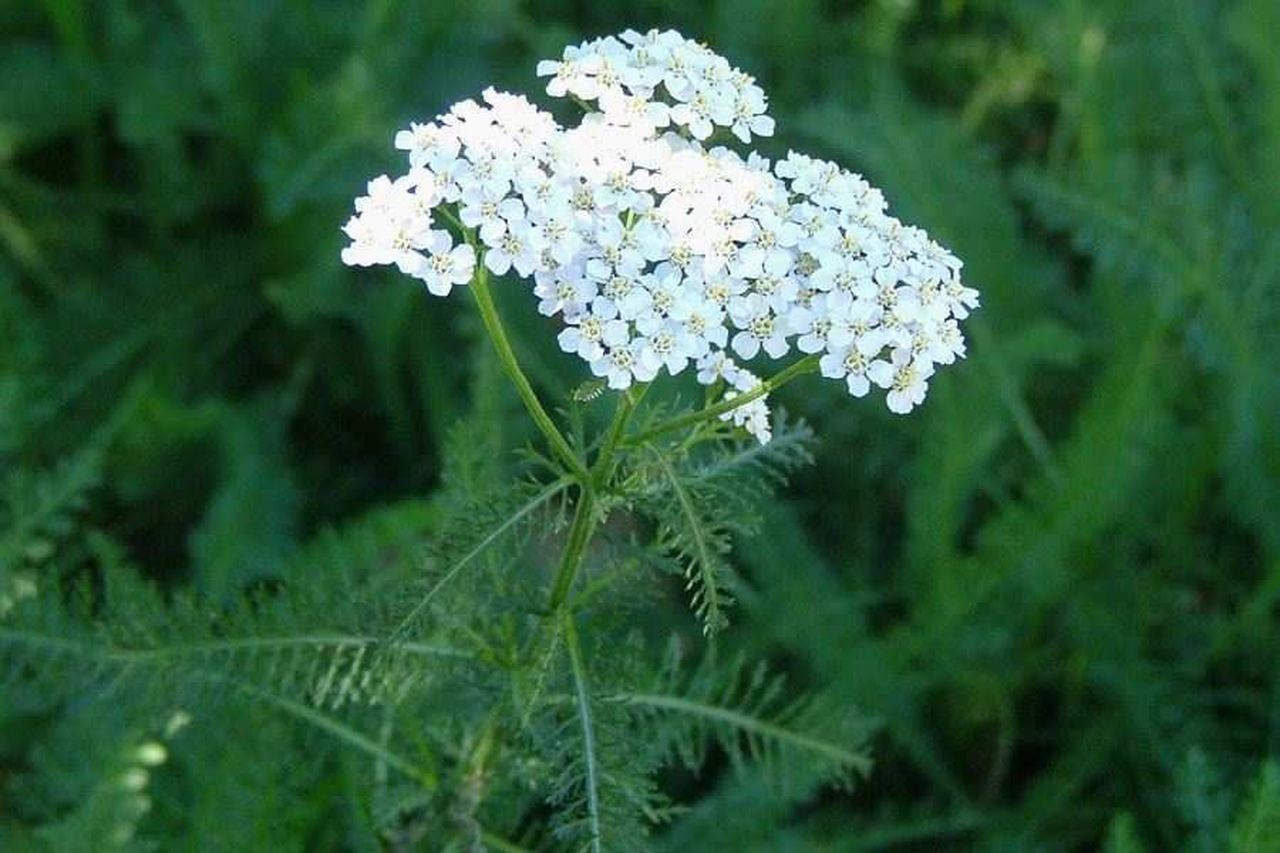 |
Lakshmi, T., Geetha, R.V., Roy, A., Aravind, K.S., 2011. Yarrow (Achillea millefolium Linn.): A herbal medicinal plant with broad therapeutic use −a review. International Journal of Pharmaceutical Sciences Review and Research 2011, 136–141. |
| Aconitum chasmanthum Stapf ex Holmes |
Patress |
Ranunculaceae |
Herb |
Aconitine, indaconitine, chasmanine, homochasmanine homochasmaconitine, chasmoaconitine, chasmanthinine 14-o-benzoyl-8-ethoxybikhaconine, 14-o-benzoyl-8-methoxybikhaconine |
Analgesic, diaphoretic, diuretic, sedative. Dried powder of the roots is taken in small quantity to cure neuralgical problem and rheumatism. |
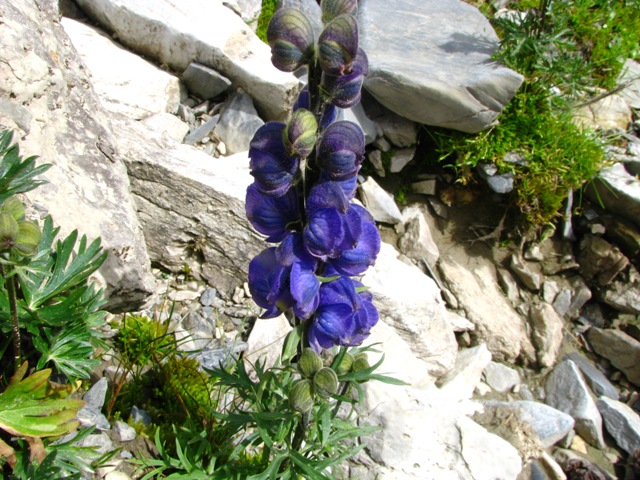
|
Jaiswal, Y., Liang, Z., Yong, P., Chen, H., Zhao, Z., 2013. A comparative study on the traditional Indian Shodhana and Chinese processing methods for aconite roots by characterization and determination of the major components. Chemistry Central Journal 7, 169–183. |
| Aconitum deinorrhizum |
mohra, maura bikh, devil's helmet, queen of poisons, or blue rocket |
Ranunculaceae |
Herb |
Pseudaconitine, also known as nepaline |
Aconite has long been used in Ayurveda and traditional Chinese medicine. Aconite was also described in Greek and Roman medicine by Theophrastus, Dioscorides, and Pliny the Elder, who most likely prescribed the Alpine species Aconitum lycoctonum. |
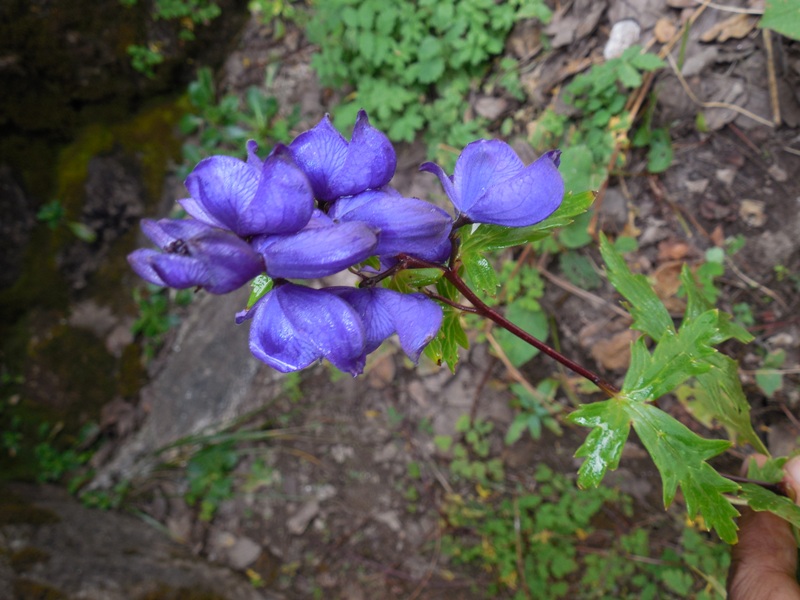
|
Aconitum deinorrhizum Stapf, Ann. Roy. Bot. Gard. (Calcutta) 10: 158 1905. ; |
| Aconitum heterophyllum Wall. ex Royle |
Atis, Pateess, Paewakh |
Ranunculaceae |
Herb |
Aconitic acid, Aconitine, Tannic acid, Glycerides (Oleic, Palmitic and Stearic acids), Indacotinine, Mesaconitine, Hypaconitine (Jaiswal et al., 2013) |
A semi liquid lotion made from fine powder of rhizome with a few drops of mustard oil is massaged externally on the forehead and chest to treat headache and cough. Abdominal disorders, Cough, Fever, Dysentery, Inflammation, Arthritis, Diabetes, Gastric disorders, Headache, Impotency, Piles, Skin problems, Spleen enlargement, Urinary infection, Vomiting. Powdered roots in small doses is taken for diarrhoea, fever and dysentery. It is also used to cure enlargement of spleen. |
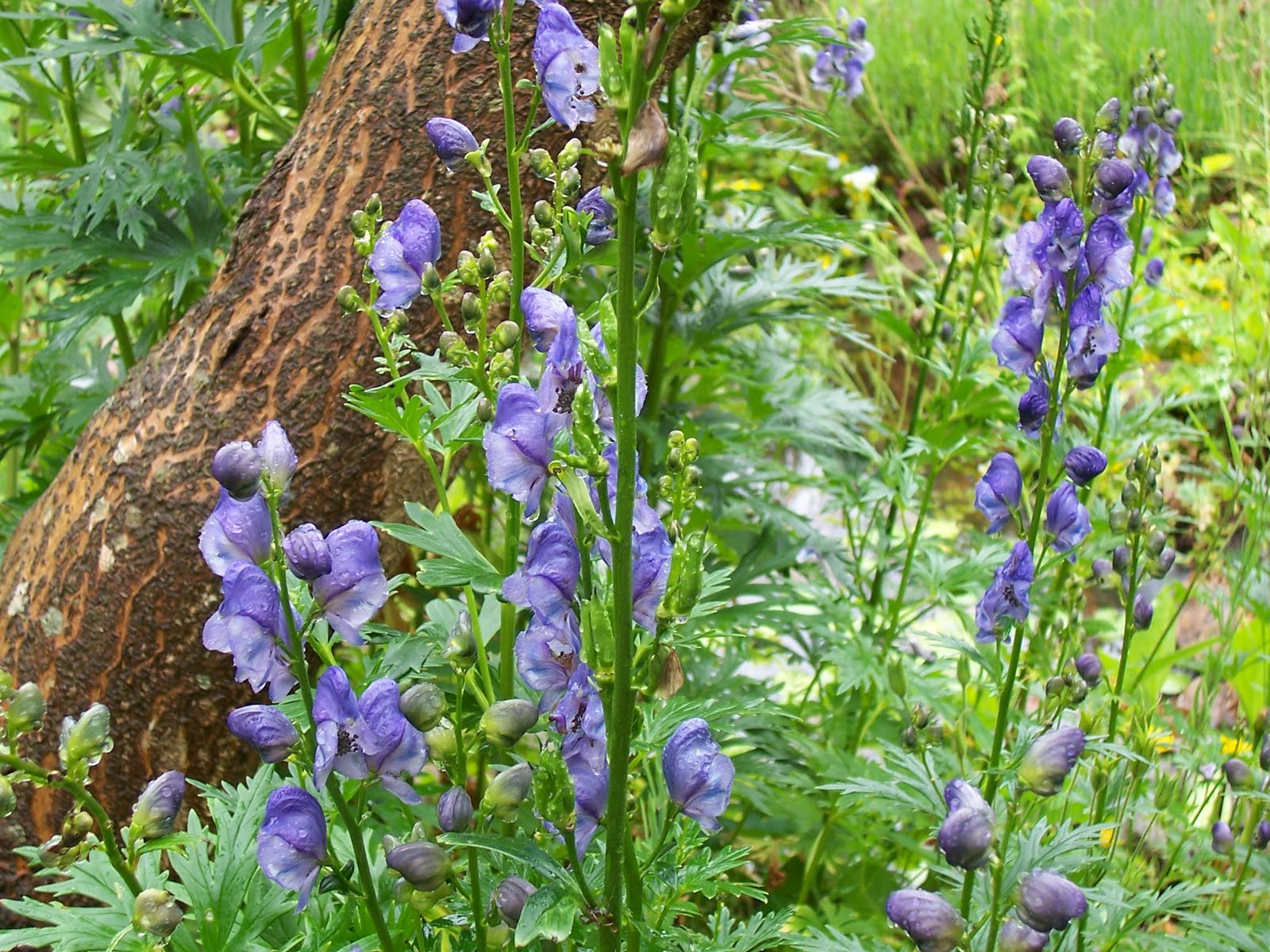
|
Jaiswal, Y., Liang, Z., Yong, P., Chen, H., Zhao, Z., 2013. A comparative study on the traditional Indian Shodhana and Chinese processing methods for aconite roots by characterization and determination of the major components. Chemistry Central Journal 7, 169–183. |
| Aconitum violaceum Jacq. ex Stapf |
Jhimba, Bishmool, Mori |
Ranunculaceae |
Herb |
Aconitine, Aconine, Sparteine, Benzoic acid, Resins Tannins, Indacotinine, Aconitic (Rana et al., 2010) |
Toothache, Cold, Cough, Fever, Liver and stomach problems, Burns, Joint pains. A small amount of the root is mixed with oil and applied on gums and teeth to cure toothache. |
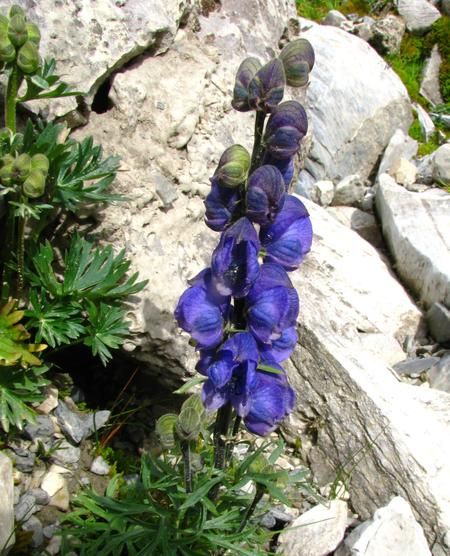 |
Rana, C.S., Sharma, A., Kumar, N., Dangwal, L.R., Tiwari, J.K., 2010. Ethnopharmacology of Some Important Medicinal Plants of Nanda Devi National Park (NDNP) Uttarakhand, India. Nature and Science 8, 9–14.
Aslam, M.S. and Ahmad, M.S., 2016. Analgesic and antiinflammatory activity of genus Aconitum: A phytochemical and ethnopharmacological review. Recent Adv Biol Med, 2(2016), p.923.
|
| Aconitum leave Royle |
Muneri |
Ranunculaceae |
Herb |
Swatinine, delphatine, puberanine, n-acetylsepaconintine, swatinine a, swatinine b, foresticine, neoline, delvestine, chasmanine, 8-methylaconitine, 14-dimethylaconitine, n-deethyllyaconitine-naldehyde, lappaconitine, lycaconitine, lapaconidine, lycoctonine |
Stomach ailments and other internal disorders of the cattle. At signs of weakness, diarrhoea, delivery. |
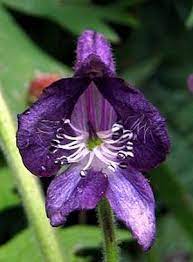 |
Hara, H., Stearn, W.T. & Williams, H.J. (1979). An Enumeration of the Flowering Plants of Nepal 2: 1-220. Trustees of British Museum, London.
|
| Acorus calamus L. |
Wai, Bauch, Wia-gander, Sweet Flag |
Araceae |
Herb |
β-Asarone, α- Asarone, Elemicine, cis-Isoelemicine, cis & trans-
Isoeugenol, Camphene, P-Cymene, β-Gurjunene, α- Selinene, β-
Cadinene, Camphor, Terpinen-4-ol, α-Terpineol, α-Calacorene,
Acorone, Acorenone, Acoragermacrone, Shyobunones,
Isohyobunones, Calamusenone, Linalool, pre-Isocalamendiol
(Hou and Jin, 2005)
Ageratochromene, 6-Methoxyquinoline-1-oxide, βCaryophyllene, β-Sinenesal, β-Sesquiphelandrene, τ-Cadinene (Rana and Blazquezb, 2003)
|
Wounds, Worms. Paste of the rhizome mixed with small quantity of sugar is used to cure stomach ailments. Crushed plant made into paste and applied externally for various skin diseases. Extract or decoction of root taken in small dozes for stomach troubles.
It is a traditional Indian medicinal herb, which is practiced to treat a wide range of health ailments, including neurological, gastrointestinal, respiratory, metabolic, kidney, and liver disorders.
|
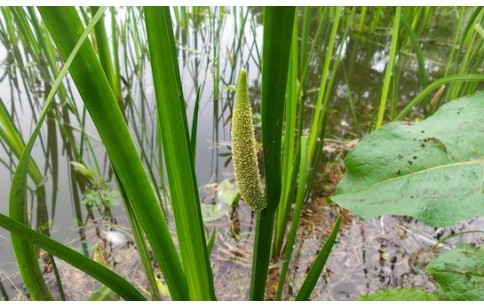 |
Hou, J.P., Jin, Y., 2005. The Healing Power of Chinese Herbs and Medicinal Recipes. The Haworth Integrative Healing Press, Binghampton, New York.
Rana, V.S., Blazquezb, M.A., 2003. Chemical composition of the volatile oil of Ageratum conyzoides aerial parts. International Journal of Aromatherapy 13, 203–206.
|
| Actaea spicata L. |
Larddi |
Ranunculaceae |
Herb |
4 C-glucosyl-3, 5-dihydroxy-2-methoxy benzoic acid and its acetyl derivative 5-acetoxy-4 C-glucosyl-3-hydroxy-2-methoxy benzoic acid. |
It has been traditionally used for the treatment of various ailments such as rheumatism, inflammation, nerve diseases, lumbago, scrofula and chorea. |
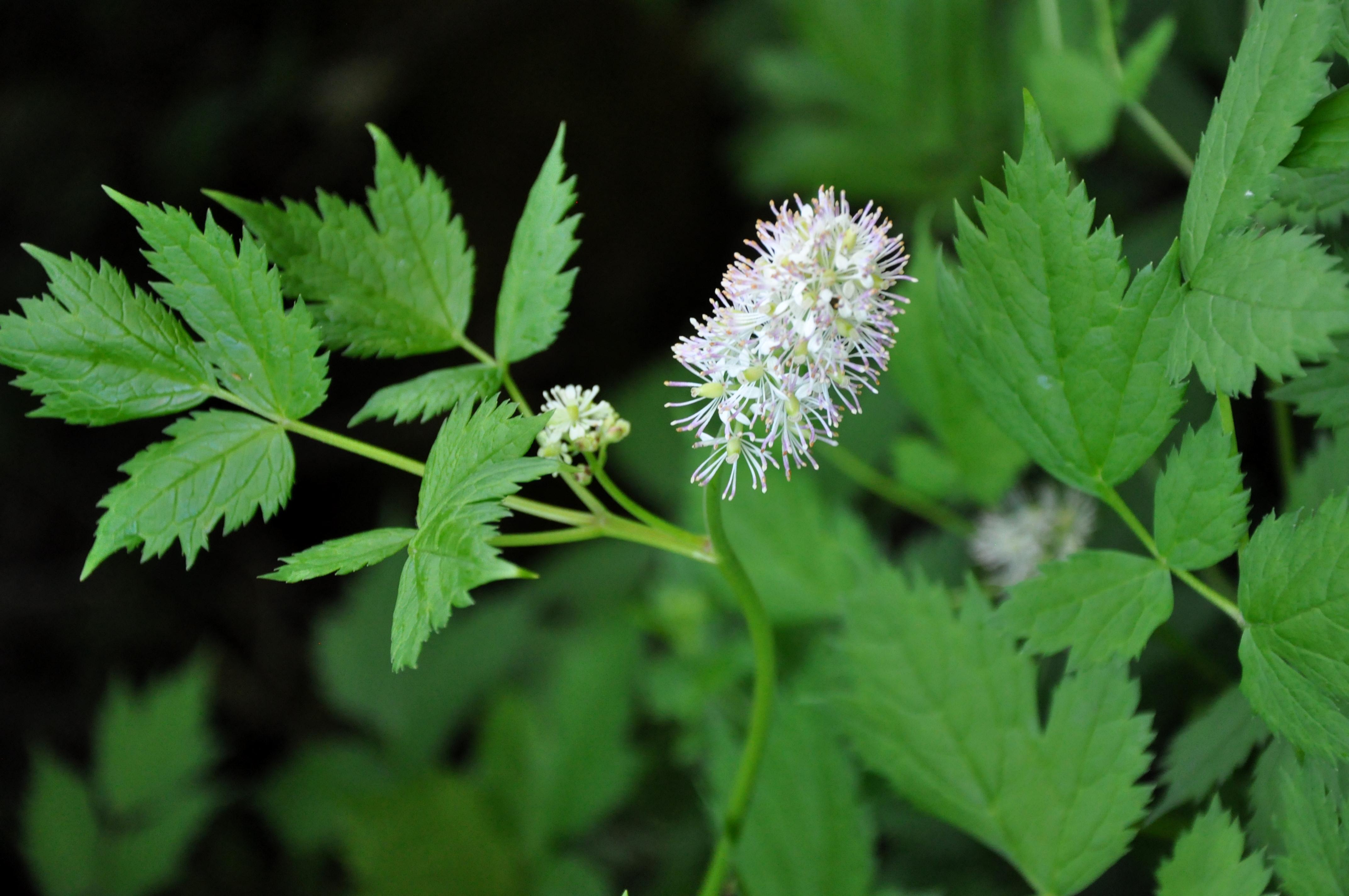 |
Madaan, R., Bansal, G. and Sharma, A., 2011. New phenolic glycosides from roots of Actaea spicata Linneaus. Bulletin of Pharmaceutical Research, 1(1), pp.11-4. |
| Adiantum cappilus veneris |
Gautheer |
Adiantaceae |
Herb |
Phytochemical analysis showed the presence of flavonoids, alkaloids, tannins, saponins, cardiac glycosides, terpenoids, steroids, and reducing sugars |
Water, methanol, and ethanol extracts of leaves, stems, and roots showed significant antibacterial and antifungal activities against most of the MDR bacterial and fungal strains |
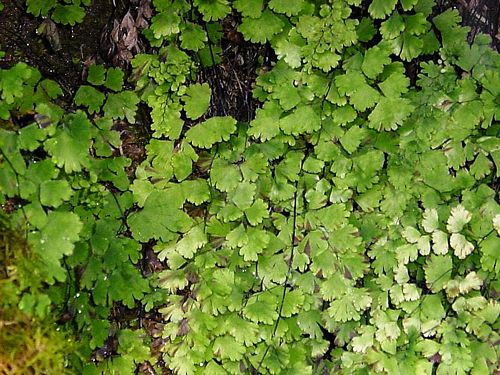 |
Ishaq, M.S., Hussain, M.M., Siddique Afridi, M., Ali, G., Khattak, M. and Ahmad, S., 2014. In vitro phytochemical, antibacterial, and antifungal activities of leaf, stem, and root extracts of Adiantum capillus veneris. The Scientific World Journal, 2014. |
| Adonis chrysocyathus |
Yellow Himalayan Oxeye Daisy |
Ranunculaceae |
Herb |
Cymarin (1), adonitoxin (2), 16-hydroxy-strophanthidin (3), acetyladonitoxin (4), vernadigin (5) and 3-acetylstrophadogenin (6) |
|
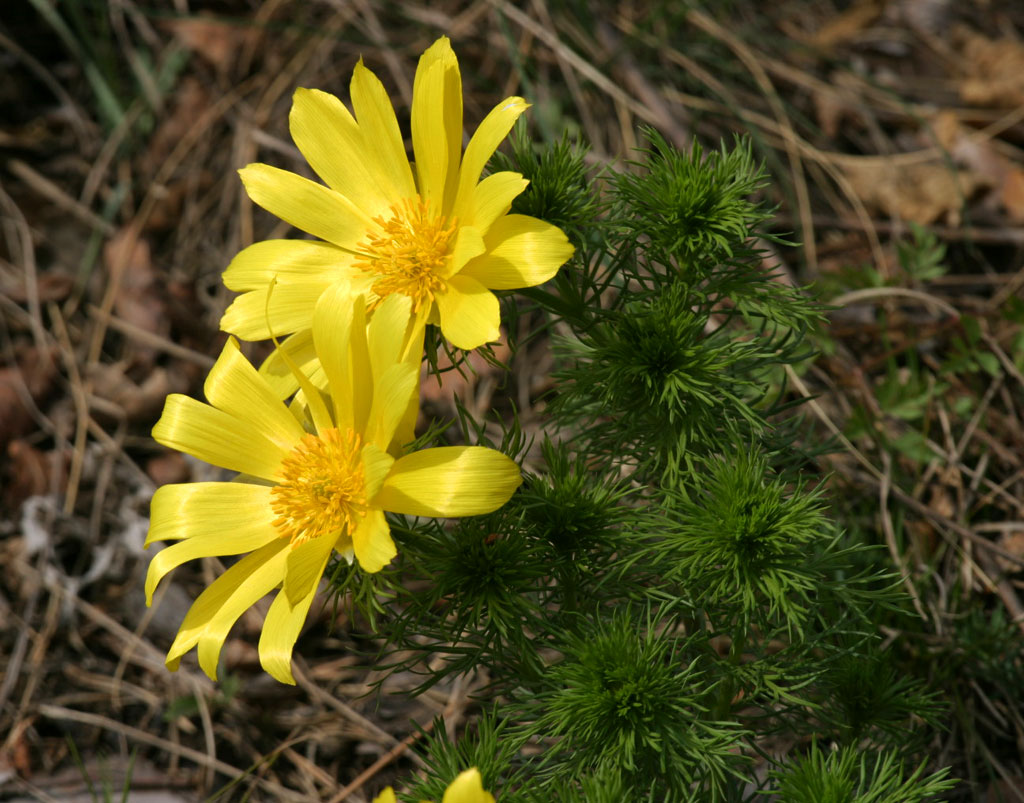 |
Shang, X., Miao, X., Yang, F., Wang, C., Li, B., Wang, W., Pan, H., Guo, X., Zhang, Y. and Zhang, J., 2019. The genus Adonis as an important cardiac folk medicine: a review of the ethnobotany, phytochemistry and pharmacology. Frontiers in pharmacology, 10, p.25. |
| Aesculus indica (Colebr.ex Cambess.) Hook |
Handoon |
Sapindaceae |
Herb |
Preliminary qualitative phytochemical analysis of Aesculus indica crude extract showed presence of flavonoids, coumarins, saponins and tannins. Sterols, anthraquinones and alkaloids were absent in crude extract as well as fractions |
cytotoxic activity against breast adenocarcinoma cell line (MCF-7) |
%20Hook.jpg) |
DS, G., Role of Vacha (Acorus calamus Linn.) in Neurological and Metabolic Disorders: Evidence from Ethnopharmacology, Phytochemistry, Pharmacology and Clinical Study |
| Ageratum conyzoides L. |
Goatweed |
Asteraceae |
Herb |
Ageratochromene, 6-Methoxyquinoline-1-oxide, β-
Caryophyllene, β-Sinenesal, β-Sesquiphelandrene, τ-Cadinene
(Rana and Blazquezb, 2003)
|
Nervous system ailments |
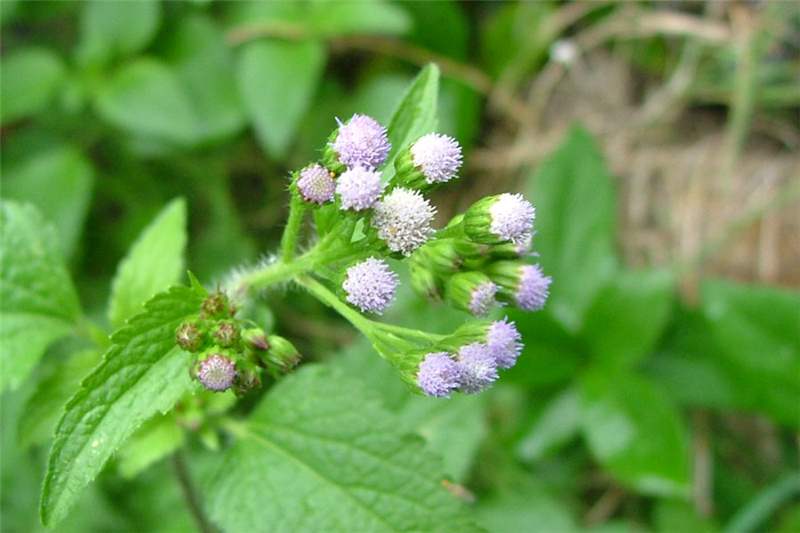 |
Rana, V.S., Blazquezb, M.A., 2003. Chemical composition of the volatile oil of Ageratum conyzoides aerial parts. International Journal of Aromatherapy 13, 203–206. |
| Aguilegia fragrans |
Fragrant Columbine |
Ranunculaceae |
Herb |
2, 4-dihydroxyphenylacetic acid methyl ester, β-sitosterol, Aquilegiolide, Glochidionolactone-A |
Aquilegia fragrans exhibit weak antibacterial activities. Further phytochemical and pharmacological studies are required for proper scientific validation of the folk use of this plant species in the treatment of various inflammatory diseases like bovine mastitis |
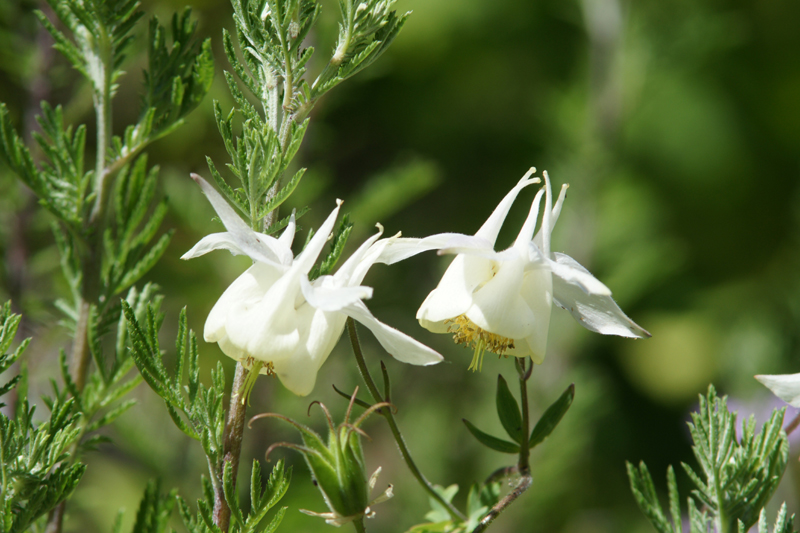 |
Mushtaq, S., Aga, M.A., Qazi, P.H., Ali, M.N., Shah, A.M., Lone, S.A., Shah, A., Hussain, A., Rasool, F., Dar, H. and Shah, Z.H., 2016. Isolation, characterization and HPLC quantification of compounds from Aquilegia fragrans Benth: Their in vitro antibacterial activities against bovine mastitis pathogens. Journal of ethnopharmacology, 178, pp.9-12. |
| Aguilegia pubiflora |
Himalayan Columbine |
Ranunculaceae |
Herb |
flavonoid compunds and phenolic acids |
plant extracts can be used to treat hepatocarcinoma because they showed significant cytotoxicity against HepG2 cells. Furthermore, substantial inhibition activity against α-amylase, α-glucosidase, Acetylcholinesterase (AChE), and Butrylcholinesterase (BChE) was observed, paying the way for its use as anti-diabetic and anti-Alzheimer’s therapeutics. Pentosidine-Like AGEs were shown to have a high benefit and antiinflammatory capacity. The findings from the abovementioned biological activities suggested that Aquilegia pubiflora leaf extract could be a suitable candidate for various biomedical applications. |
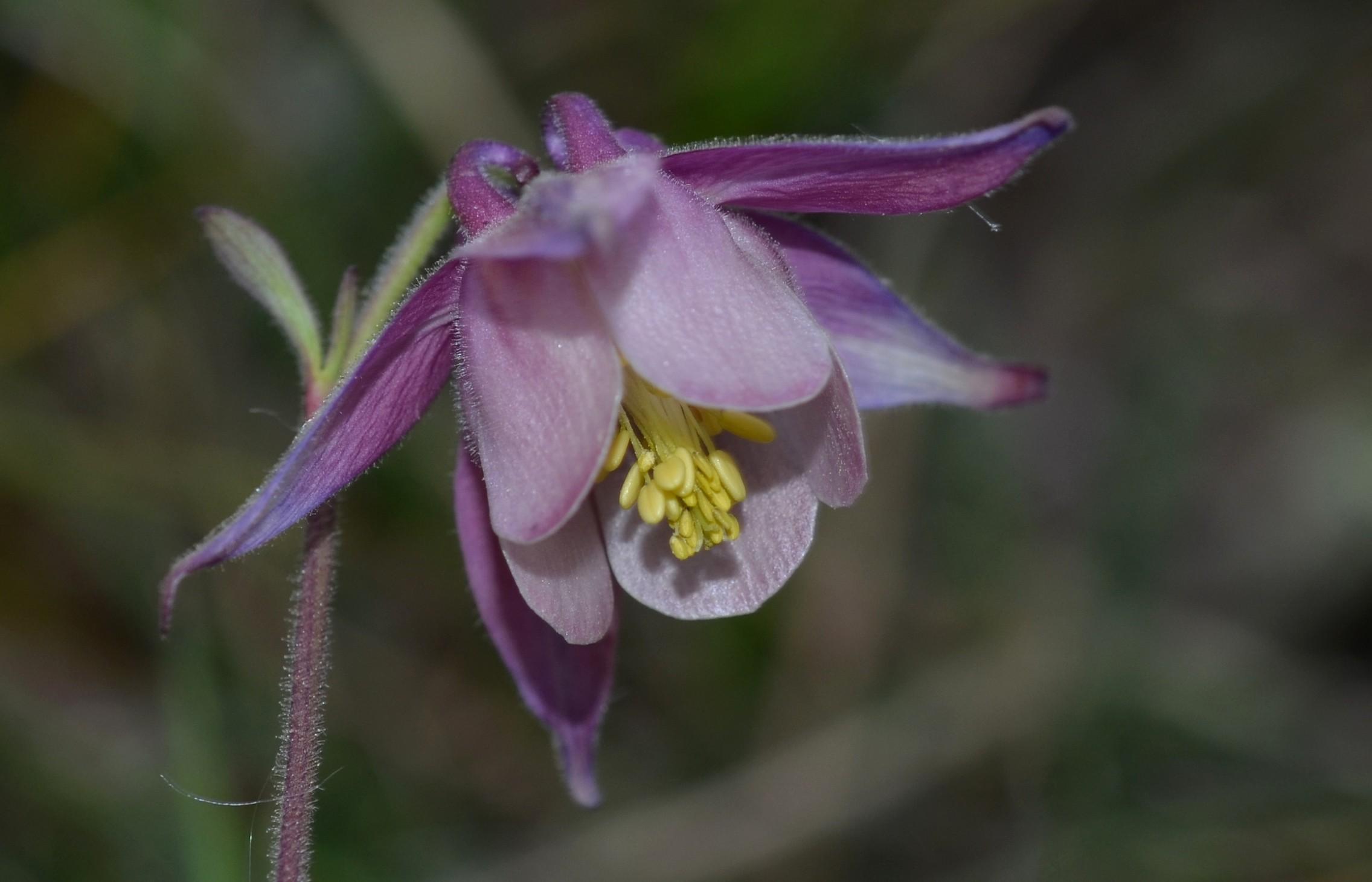 |
Bylka, W., Szaufer‐Hajdrych, M., Matławska, I. and Goślińska, O., 2004. Antimicrobial activity of isocytisoside and extracts of Aquilegia vulgaris L. Letters in applied microbiology, 39(1), pp.93-97. Jan, H., Usman, H., Shah, M., Zaman, G., Mushtaq, S., Drouet, S., Hano, C. and Abbasi, B.H., 2021. Phytochemical analysis and versatile in vitro evaluation of antimicrobial, cytotoxic and enzyme inhibition potential of different extracts of traditionally used Aquilegia pubiflora Wall. Ex Royle. BMC Complementary Medicine and Therapies, 21(1), pp.1-19. |
| Ajuga bracteosa Wallich ex Benth |
Jan-e-Adam |
Lamiaceae |
Herb |
The main components present in the essential oil of leaves are Limonene, α-humulene, β-Myrcene, Elemol, Camphene, βCaryophellene, α-phellendrene. |
The antibacterial activity of the essential oil was evaluated |
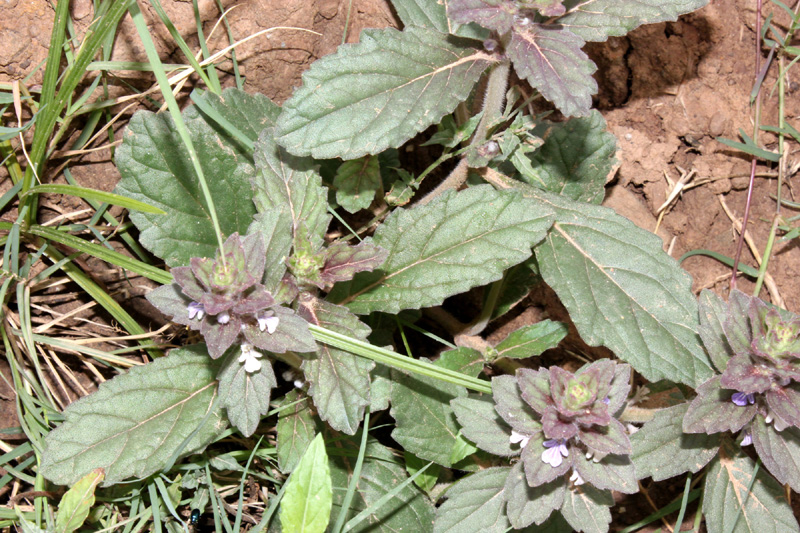 |
Abhishek Vohra and Harpreet Kaur; Chemical investigation of medicinal plant Ajuga bracteosa; J. Nat. Prod. Plant Resour., 2011, 1 (1): 37-45 |
| Ajuga parviflora Benth. |
Jan-i-Adam, Ratijadi, Ratibooty |
Lamiaceae |
Herb |
β–Caryophyllene, γ-Muurolene, γ-Terpinene, Caryophyllene
oxide (Joshi et al., 2016)
|
Cough, Fever, Intestinal infection, Indigestion, Stomach problems, Piles
|
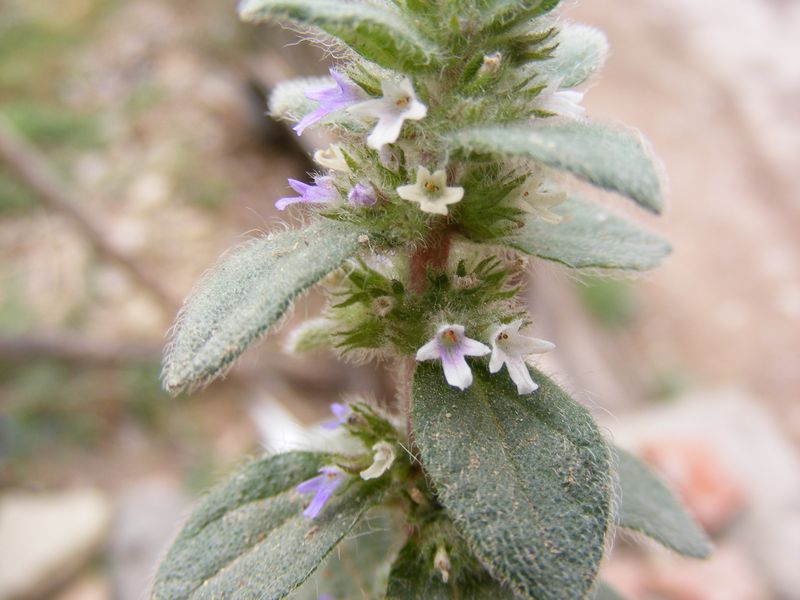 |
Joshi, R.K., 2016. Chemical constituents of leaf essential oils of Heracleum candicans Wall. ex DC. from western Himalaya of Uttarakhand, India. American Journal of Essential Oils and Natural Products 4, 1–4. |
| Allium cepa L. |
Gande, Pyaz, Onion |
Amaryllidaceae |
Herb |
Onion is the source of various biologically active phytomolecules, such as phenolic acids, thiosulphinates, and flavonoids to where anthocyanins, quercetin, kaempferol and their glycosides belong |
Crushed bulb applied externally for boils. Crushed bulb mixed with mint eaten for increasing appetite. Fresh bulbs are mixed with paddy chaff (poi) to stimulate the estrus cycle of the cows and ewes during reeding season. |
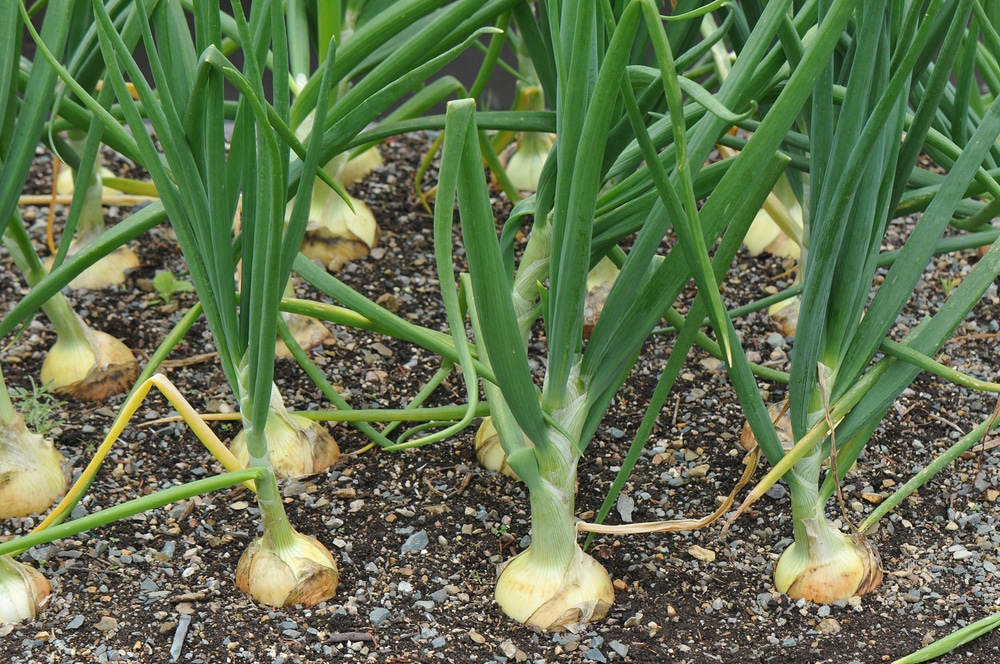 |
Bystrická, J., Musilová, J., Vollmannová, A., Timoracká, M. and Kavalcová, P., 2013. Bioactive components of onion (Allium cepa L.)—A Review. Acta Alimentaria, 42(1), pp.11-22. |
| Allium humile. |
Small Alpine Onion |
Amaryllidaceae |
Herb |
Alkaloids, flavonoids, steroids and terpenoids. |
Anti- analgesic Activity |
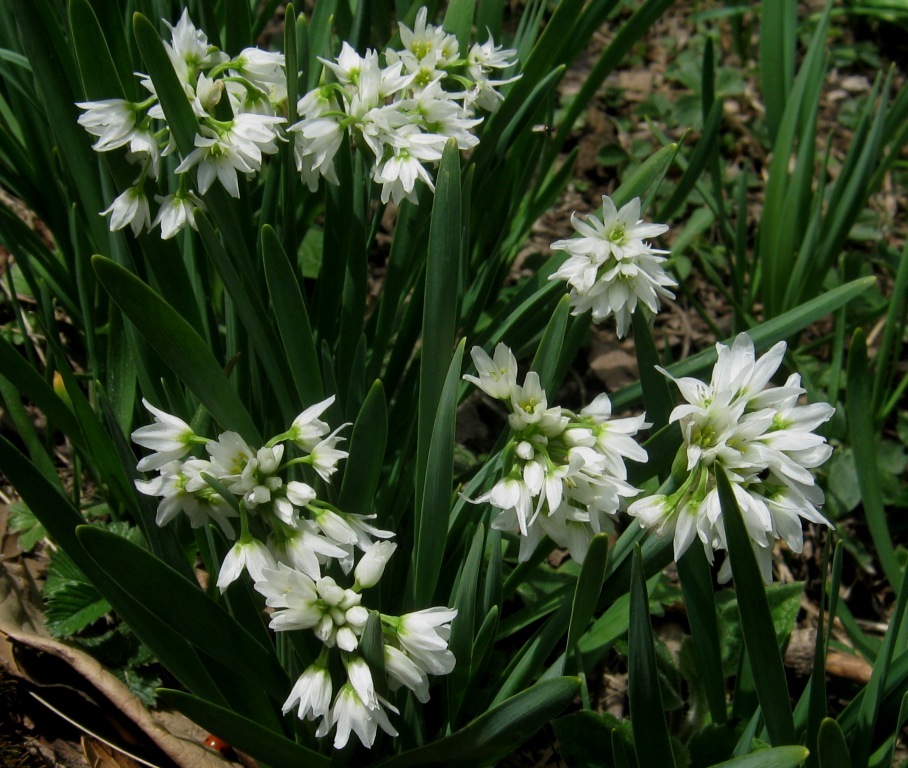 |
Singh, K., Gangwar, R.K., Singh, G., Jadon, V.S. and Ranjan, S., 2014. Studies on the Analgesic Potential of leaf Extracts of Allium humile on Swiss albino mice. European Researcher, (9-2), pp.1677-1681. |
| Allium sativum L. |
Ruhun |
Amaryllidaceae |
Herb |
Diallyl thiosulphinate (allicin), methyl allyl thiosulphinate, and allyl methyl thiosulphinate |
Tincture from bulbs boiled in mustard oil is rubbed to cure baldness (alopecia), and the recurrent dandruff. For high blood pressure and obesity cloves are eaten raw or mixed with vegetables as spice. |
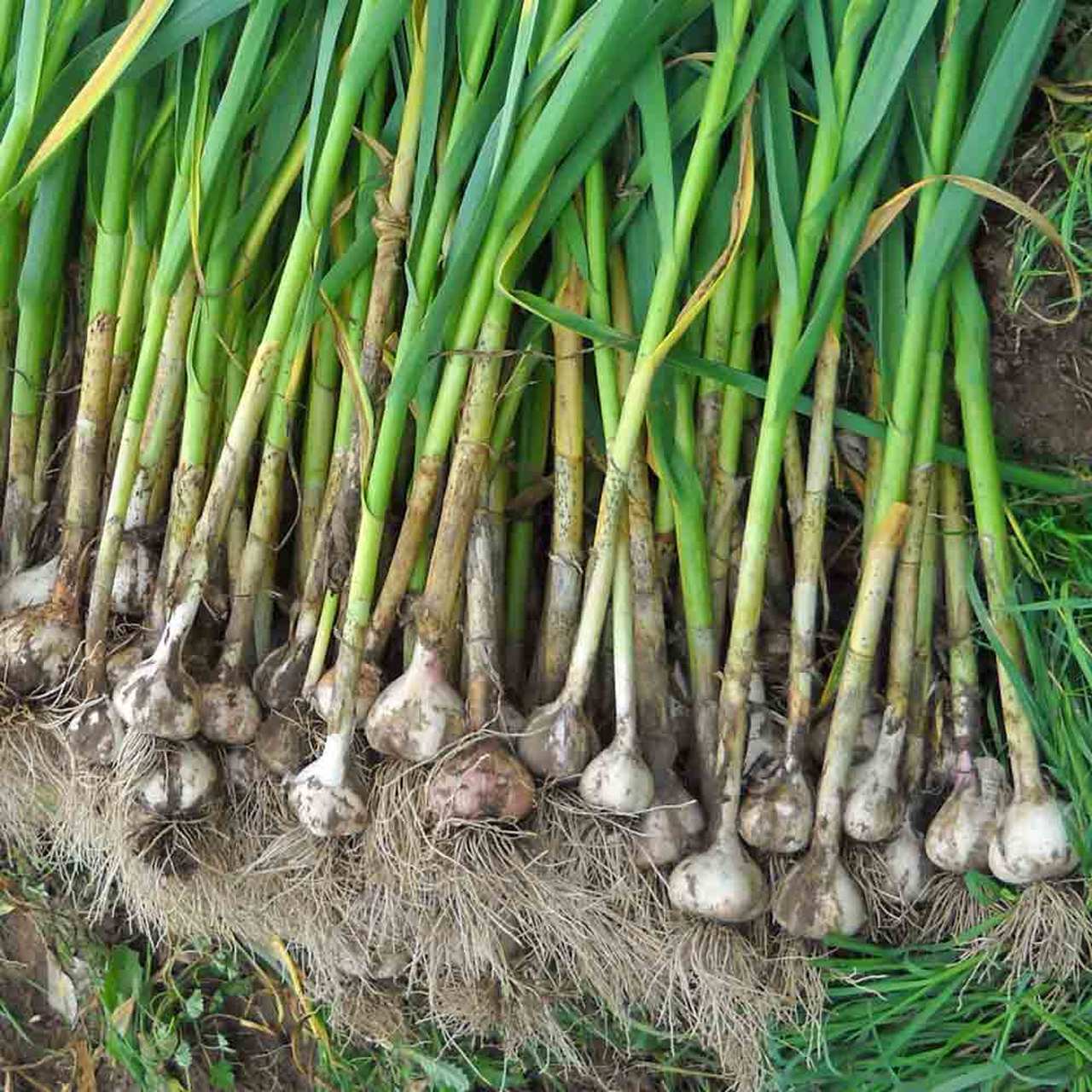 |
Hughes, B.G. and Lawson, L.D., 1991. Antimicrobial effects of Allium sativum L.(garlic), Allium ampeloprasum L.(elephant garlic), and Allium cepa L.(onion), garlic compounds and commercial garlic supplement products. Phytotherapy Research, 5(4), pp.154-158. |
| Allium victorialis L. |
Van gande |
Amaryllidaceae |
Herb |
trans-phytol (1), phytene-1,2-diol (2), icariside B2 (3), (6S,9S)-roseoside (4), sedumoside G (5), pinoresinol-4-O-glucoside (6), 2-methoxy-2-(4'-hydroxyphenyl)ethanol (7), 2-hydroxy-2-(4'-hydroxyphenyl)ethanol (8), Benzyl β-D glucopyranoside (9), methyl ferulate (10), trans-ferulic acid (11), methyl-p-hydroxycinnamate (12), glucosyl methyl ferulate (13), linocaffein (14), siringin (15), 2-(4-hydroxy-3-methoxyphenyl)-ethyl-O-β-Dglucopyranoside (16), and pseudolaroside C (17). |
Whole plant given to cow and buffalo to cure cold and cough ailments. |
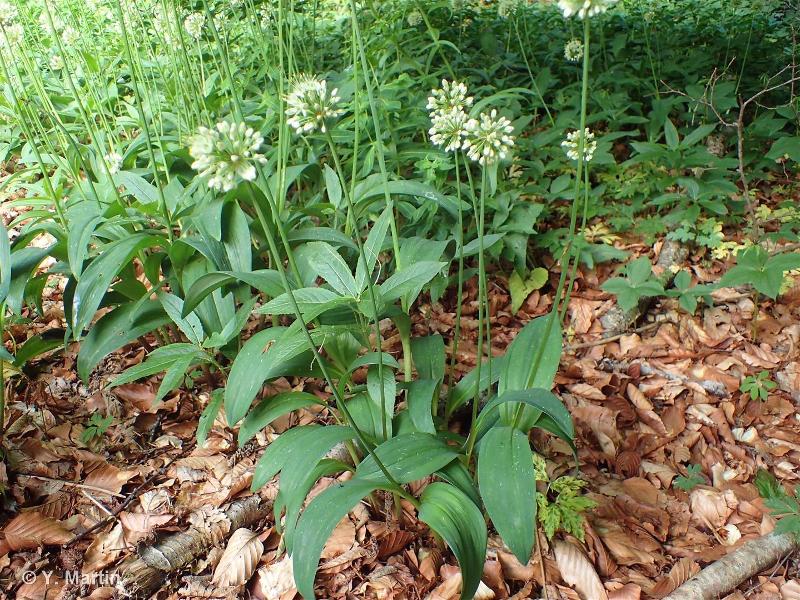 |
Woo, K.W. and Lee, K.R., 2013. Phytochemical constituents of Allium victorialis var. platyphyllum. Natural Product Sciences, 19(3), pp.221-226. |
| Alnus nitida Endl. |
Saroli |
Betulaceae |
Tree |
mucilage, phenolic acid, scopoletin, and flavonoids. |
hepatoprotective activity of A. nitida bark is likely due to the scavenging of free radicals and sustaining of endogenous antioxidant molecules. This effect appears to be facilitated by natural antioxidants in A. nitida bark, which remarkably diminished the oxidative stress and led to normal hepatic functions. |
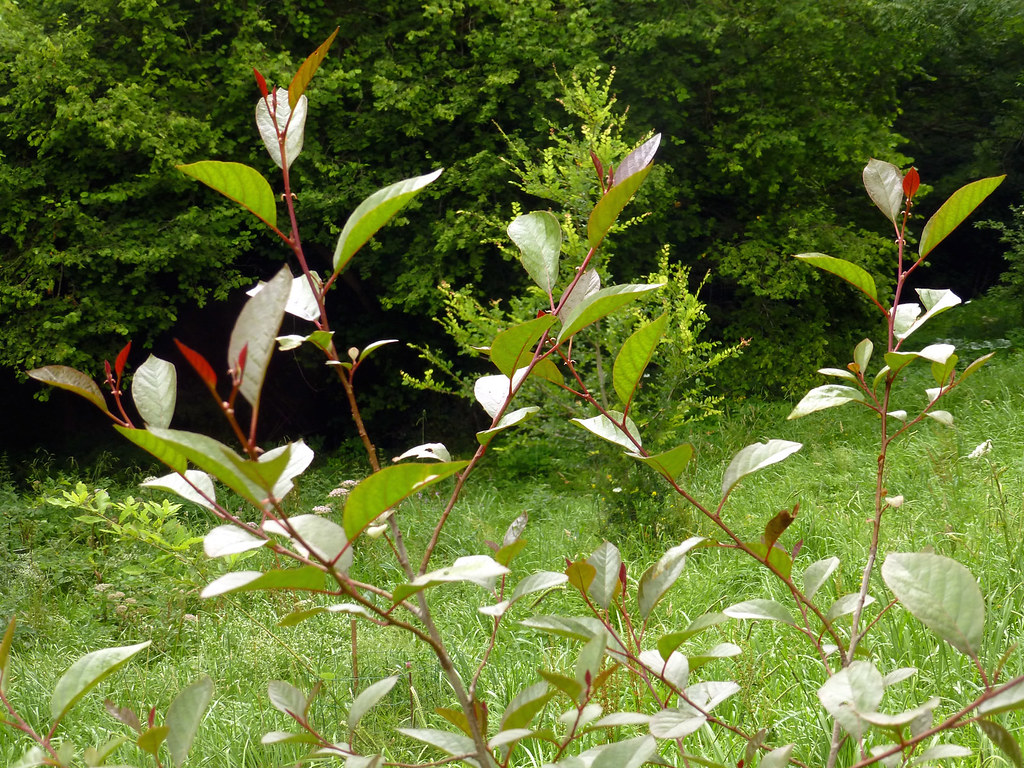 |
Sajid, M., Khan, M.R., Shah, N.A., Shah, S.A., Ismail, H., Younis, T. and Zahra, Z., 2016. Phytochemical, antioxidant and hepatoprotective effects of Alnus nitida bark in carbon tetrachloride challenged Sprague Dawley rats. BMC complementary and alternative medicine, 16(1), pp.1-17. |
| Althaea officinalis |
Marsh mello |
Malvaceae |
Herb |
contains a mucilage, phenolic acid, scopoletin, and flavonoids. |
Marshmallow has been prescribed in various forms such as tablet, syrup, gargle, vaginal suppository, vaginal douche, rectal enema, as well as ophthalmic and nasal drop for different diseases by PM scholars. Some of its traditional effects including anti-inflammatory, antitussive, anti-infective, and anti-pyretic properties have been confirmed in new studies. |
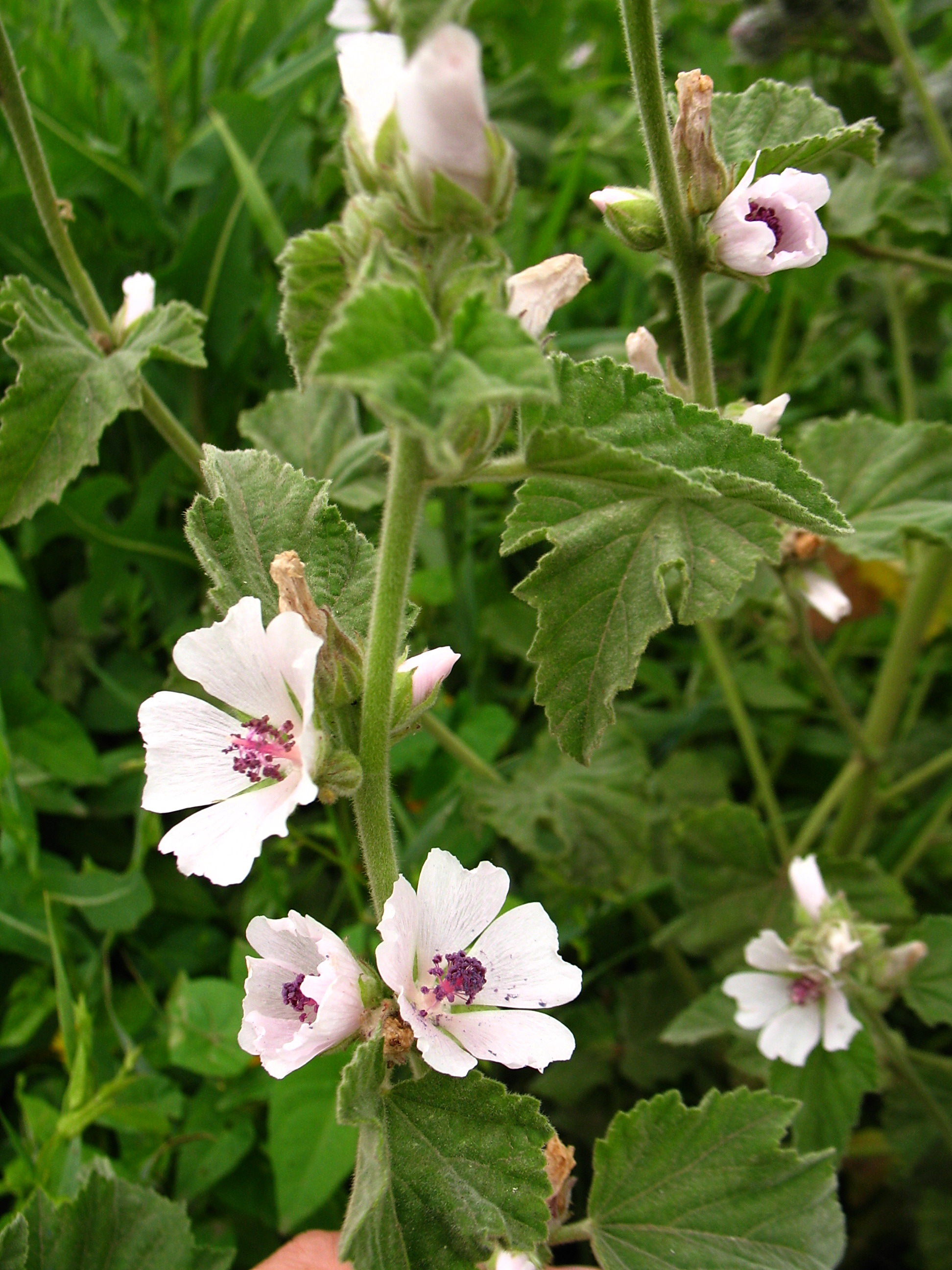 |
Kianitalaei, A., Feyzabadi, Z., Hamedi, S. and Qaraaty, M., 2019. Althaea Officinalis in Traditional Medicine and modern phytotherapy. Journal of Advanced Pharmacy Education & Research| Apr-Jun, 9(S2), p.155. |
| Amaranthus retroflexus L. |
Ganhaar |
Amaranthaceae |
Herb |
L-Tryptophan, Rutin, α-Spinasterol, β-Sitosterol, Kaempferol-3-
O-Rutinoside, Stigmasterol, n-Triaconatanoic acid (Ying, 2008)
|
Measles, Dandruff |
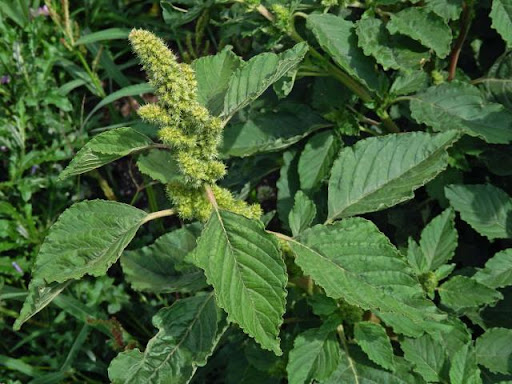 |
Ying, Z., 2008. Studies on Chemical Constituents of Amaranthus retroflexus L. and Its Pharmacological Activities. Master’s Thesis. Jilin University, China. |
| Anagallis arvensis |
Chari Saben |
Primulaceae |
Herb |
methyl gallte, quercetin, lanceoletin, and balanitesin, amongst others |
For ulcers crushed plant is applied on effected area. Extract of rhizome given for sore throat and as an expectorant. |
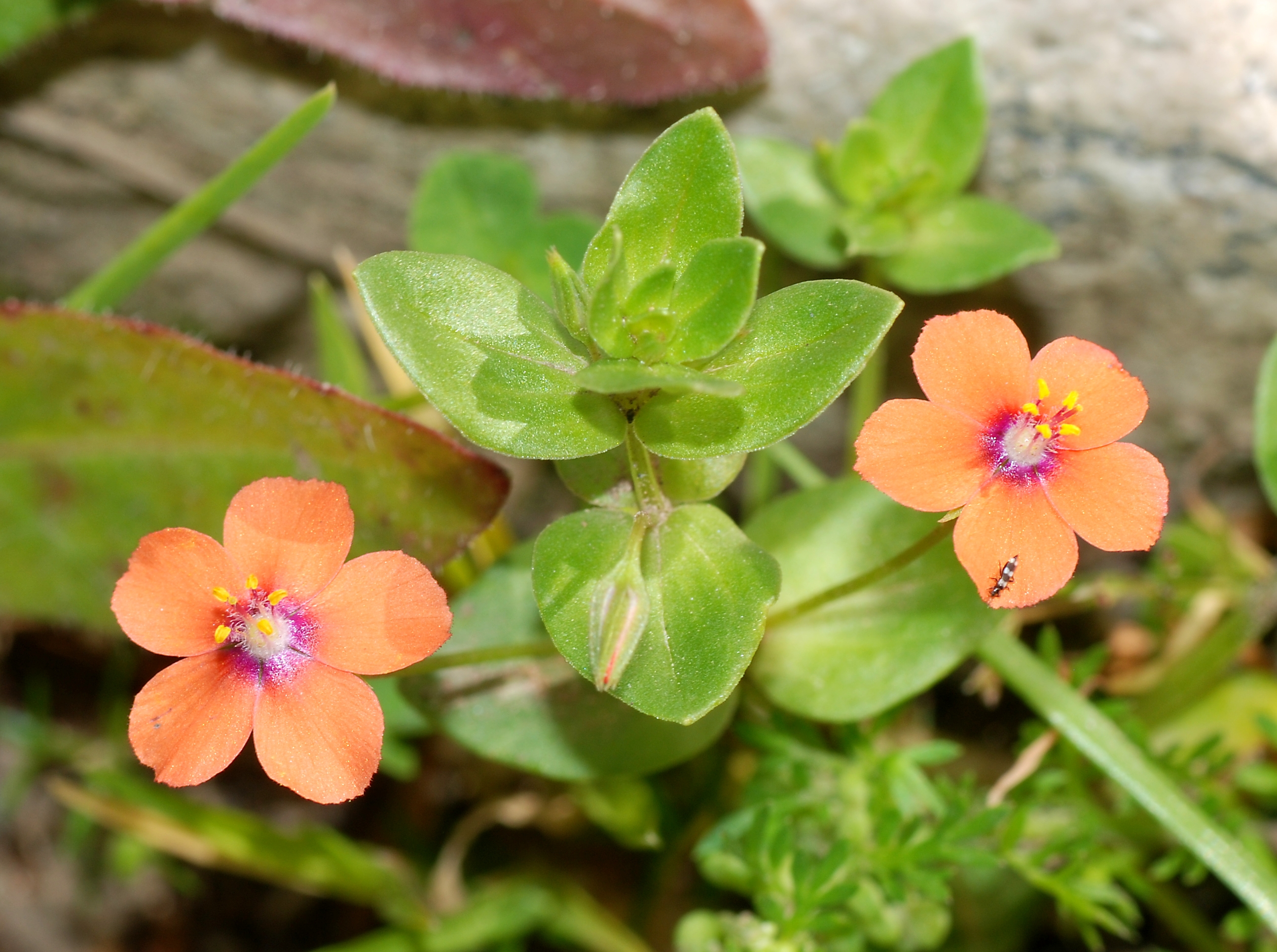 |
Saleem, H., Zengin, G., Ahmad, I., Htar, T.T., Naidu, R., Mahomoodally, M.F. and Ahemad, N., 2020. Therapeutic propensities, phytochemical composition, and toxicological evaluation of Anagallis arvensis (L.): A wild edible medicinal food plant. Food Research International, 137, p.109651. |
| Anaphalis nubigena DC. |
Daderi-Dawa |
Asteraceae |
Herb |
α −Guaiene, γ −Muurolene, γ −Cadinene, α −Muurolol, α
−Gurjunene, α −Bulnesene (Joshi et al., 2009a, 2009b)
|
Skin diseases, Wound healing |
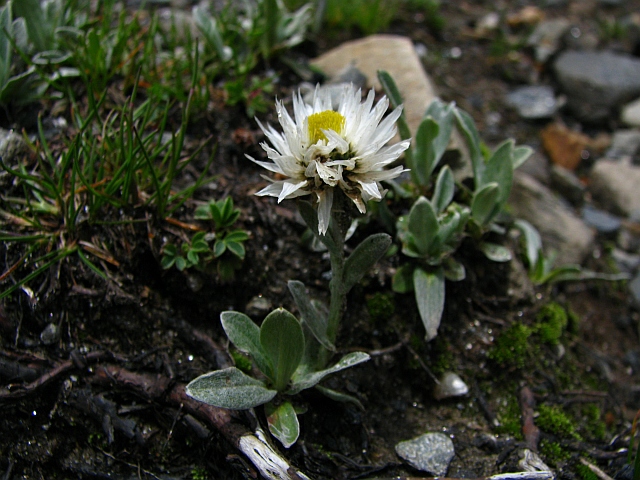 |
Joshi, K., Chavan, P., Warude, D., 2009a. Molecular markers in herbal drug technology. Current Science 87, 159–165. Joshi, R.K., Pande, C., Mujawar, M.H., Kholkute, S.D., 2009b. Chemical composition and antimicrobial activity of the essential oil of Anaphalis nubigena var. monocephala. Natural Product Communications 4, 993–996. |
| Anaphalis triplinervis |
Woolly Pearly Everlasting |
Asteraceae |
Herb |
The principal constituents identified were: epi-α-cadinol (15.6%), valencene (9.2%), 1,10-epoxyfuranoeremophilane (7.7%), α-humulene (5.6%), α-farnesene (5.7%), β-vetivone (5.5%), and germacrene D (4.7%). Other significant constituents were β-caryophyllene (3.7%), p-cymene (2.9%), (Z)-β-ocimene (2.6%), β-elemene (2.3%), caryophyllene oxide (2.3%), and humulene epoxide II (2.0%) |
traditionally used to treat epilepsy, laceration of toes, and wounds |
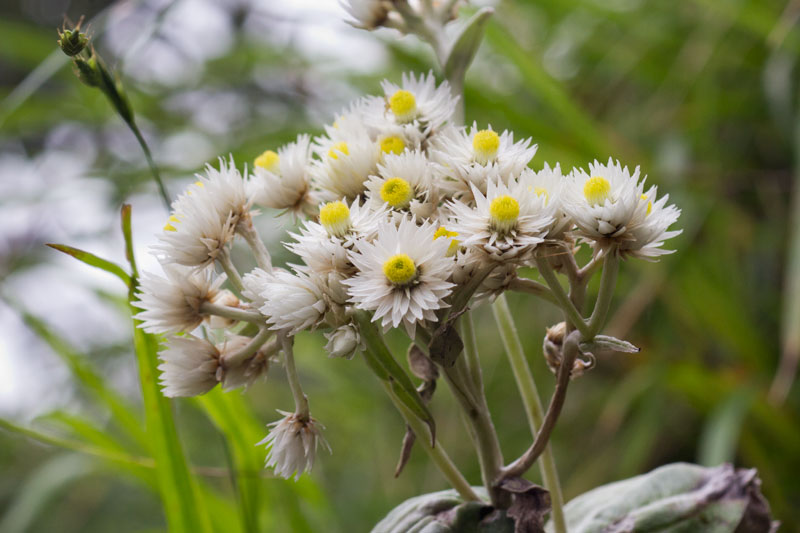 |
Sharma, R.K., Kaur, H., Singh, M., Kumar, M., Sharma, R., Shah, G.C. and Sharma, P., 2019. Chemical composition and antimicrobial properties of essential oil Anaphalis triplinervis from Western Himalaya. Chemistry of Natural Compounds, 55(4), pp.751-753. |
| Androsace mucronifolia |
Roundleaf Rock Jasmine |
Primulaceae |
Herb |
NA |
Whole plant is used to control abdominal pains |
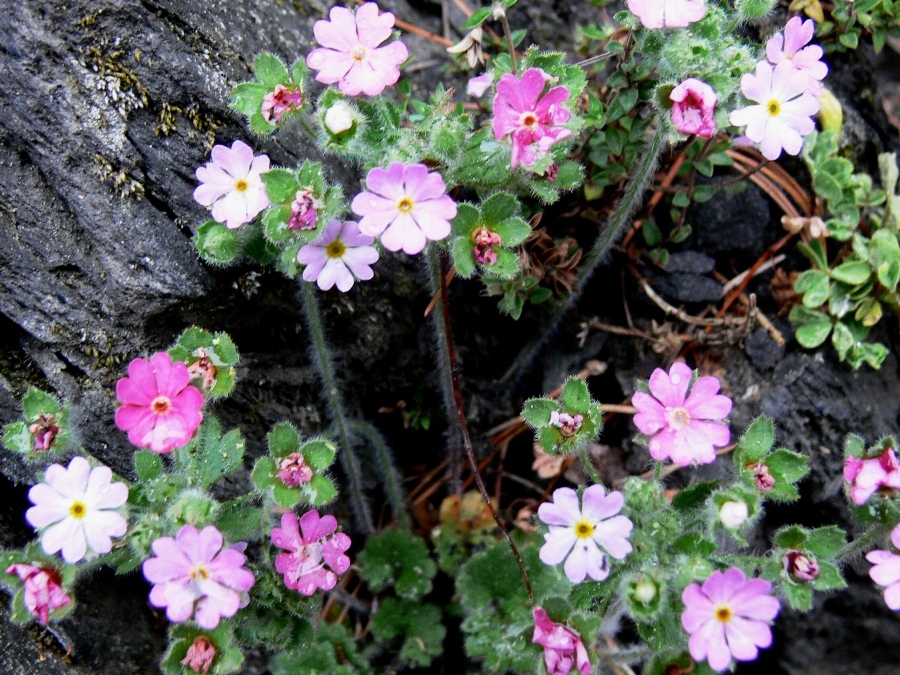 |
Kumar G, P., Gupta, S., Murugan M, P. and Bala Singh, S., 2009. Ethnobotanical studies of Nubra Valley-A cold arid zone of Himalaya. Ethnobotanical leaflets, 2009(6), p.9. |
| Anemone rupicola |
Rock Anemone |
Ranunculaceae |
Herb |
triterpenoids, saponins, steroids, lactones, fats and oils, saccharides, and alkaloids, etc |
Stomach worms, sharp pain, snakebite, cold tumor, gonorrhoea, joint yellow water |
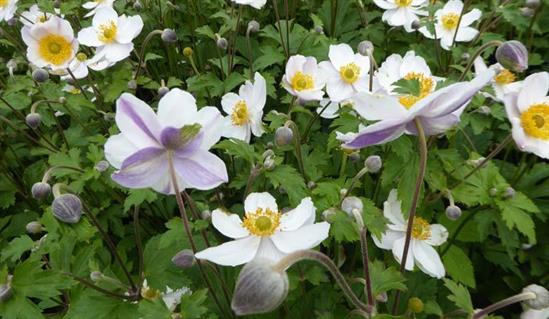 |
Hao, D.C., Gu, X. and Xiao, P., 2017. Anemone medicinal plants: ethnopharmacology, phytochemistry and biology. Acta pharmaceutica sinica B, 7(2), pp.146-158. |
| Angelica archangelica var. himalaica C.B. Clarke) Nasir |
Chohur, Chora |
Apiaceae |
Herb |
α-Pinene, δ-3-Carene, Limonene, α-Phellandrene (Fraternale
et al., 2014)
|
Antispasmodic, Carminative, Diaphoretic,
Expectorant, Stimulant, Stomach problems. A decoction of the roots and fruits is used as an expectorant.
|
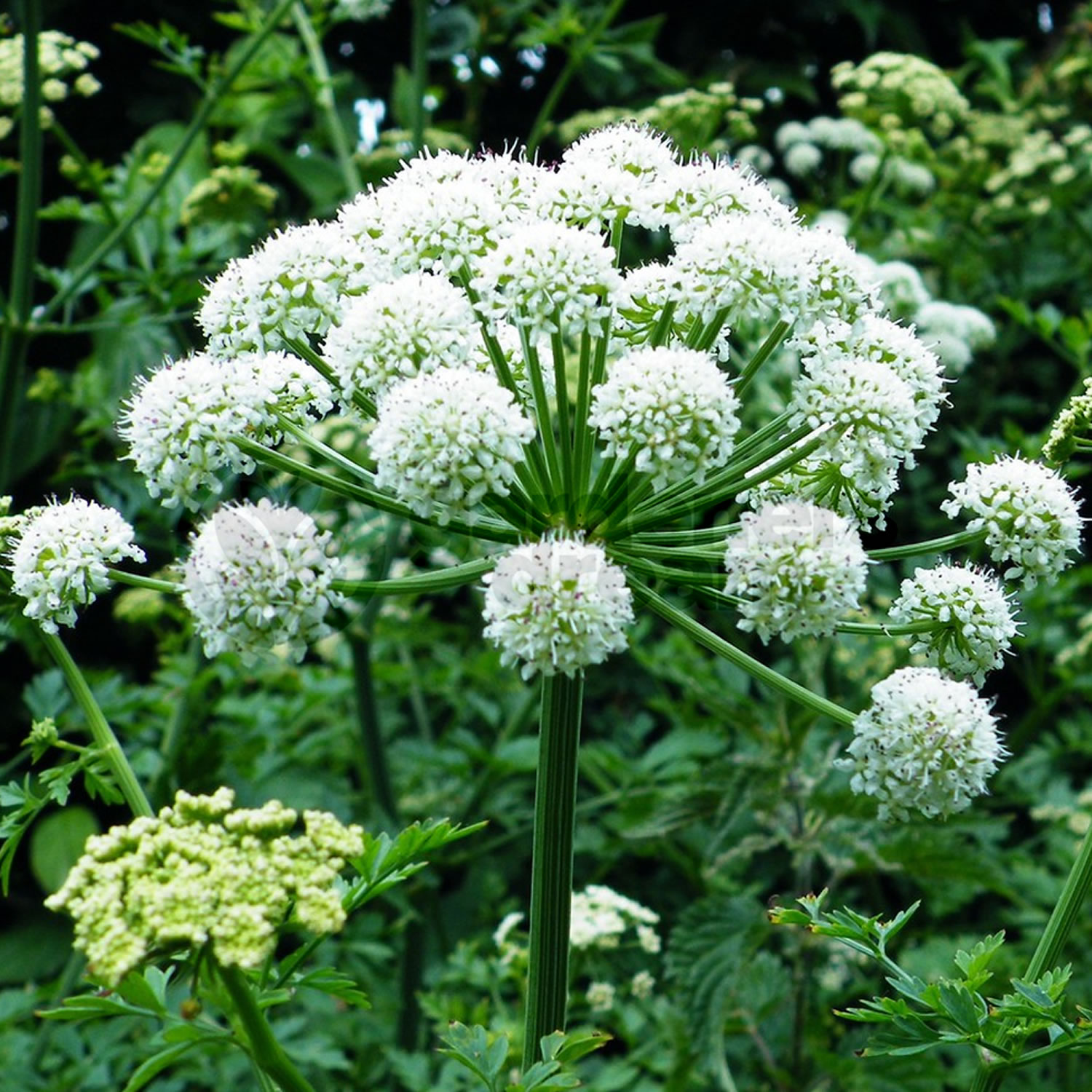 |
Fraternale, D., Flamini, G., Ricci, D., 2014. Essential oil composition and antimicrobial activity of Angelica archangelica L. (Apiaceae) roots. Journal of Medicinal Food 17, 1043–1047. |
| Angelica glauca Edgew |
Chohur, Chora, Faka gasse |
Apiaceae |
Herb |
α −Phellandrene, trans-carveol, β-Pinene, Thujene, β
−Caryophyllene, γ −Terpinene, Nerolidol, β −Bisabolene,
Germacrene-D, Lingustilide, Butylidene phthalide (Agnihotri
et al., 2004)
|
Dyspepsia, Flatulence. Enhance milk production in cattle espacially cows and goats. Root powder mixed with tea to treat gas and acidity in cattle. Decoction of the plant is considered to be cardiac stimulant and also used to cure mental disorders. |
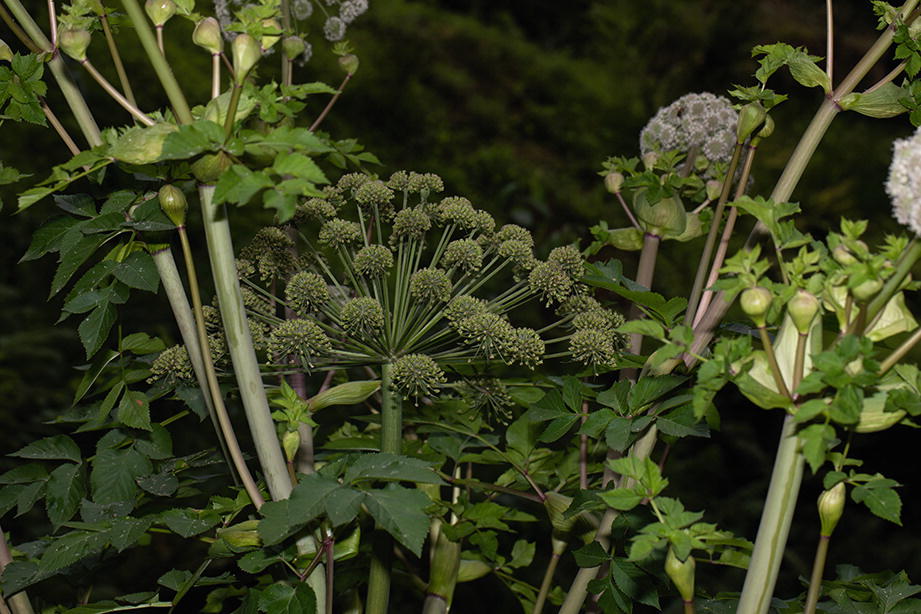 |
Agnihotri, V.K., Thappa, R.K., Meena, B., Kapahi, B.K., Saxena, R.K., Qazi, G.N., et al., 2004. Essential oil composition of aerial parts of Angelica glauca growing wild in North–West Himalaya (India). Phytochemistry 65, 2411–2413. |
| Anthemis cotula L. |
Fukh-ghass |
Asteraceae |
Herb |
Nonadecane, Cedrane α-Farnesene, Eicosane, Benzyl salicylate,
Aromadendrene (Rezaei and Kamkar, 2007)
|
Insect bite, Muscular pain |
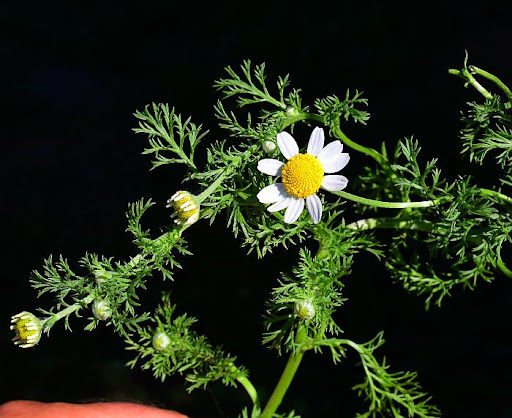 |
Rezaei, M.B., Kamkar, J., 2007. Chemical composition of essential oils from leaves and flowers of Anthemis cotula L. from Gilan Provinc. Journal of Medicinal Plants 6, 99–105. |
| Aquilegia nivalis (Baker) Falc.ex B.D.Jacks. |
Snow Columbine |
Ranunculaceae |
Herb |
|
The extracts 33 from the plant possess antioxidant properties and have been reported to be 34 hepatoprotective in rats. |
%20Falc.ex%20B.D.Jacks.png) |
Hilal, N., Qadri, O., Nawchoo, I.A., Akbar, S. and Fazili, K.M., 2021. Cancer cells are selectively eliminated through UPR driven apoptosis during treatment with Aquilegia nivalis extracts. |
| Aralia cachemirica Decne. |
Chuhur |
Araliaceae |
Herb |
The following phytoconstituents have already been isolated from the plant: octadec-6-enoic acid, 8-primara-14, 15-diene-19- oic acid, aralosides A&B |
hypoglycemic activity in glucose loaded animals |
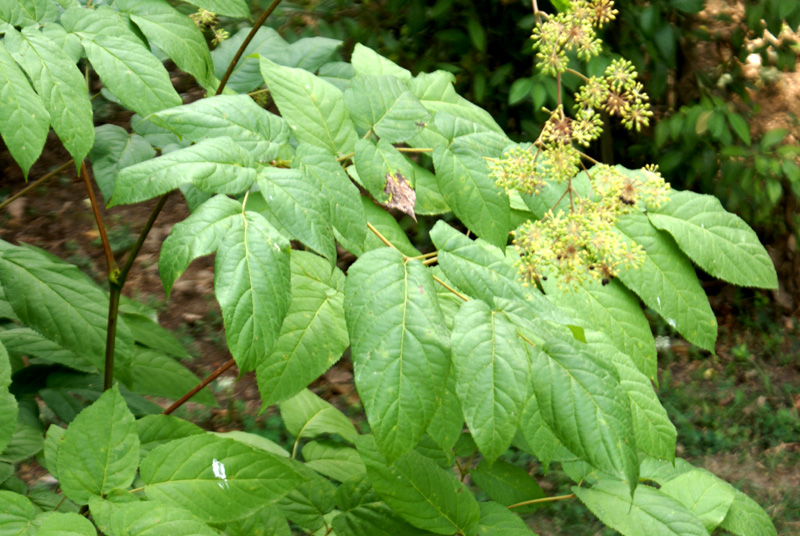 |
Majid, N., Nissar, S., Raja, W.Y., Nawchoo, I.A. and Bhat, Z.A., 2021. Pharmacognostic standardization of Aralia cachemirica: a comparative study. Future Journal of Pharmaceutical Sciences, 7(1), pp.1-8.
Pandita, D., Pandita, A. and Pandita, S., 2015. Pharmacological and Phytochemical Portrayal of Dicotyledonous Medicinal Plants of Jammu and Kashmir abound with Antidiabetic Potential. J. Microbiol. Biotech. Res, 5, pp.16-27.
|
| Archangelica officinalis Hoffm. |
Chohur, Chora |
Apiaceae |
Herb |
α-Pinene, δ-3-Carene, Limonene, α-Phellandrene (Fraternale
et al., 2014)
|
Antispasmodic, Carminative, Diaphoretic,
Expectorant, Stimulant, Stomach problems. A decoction of the roots and fruits is used as an expectorant.
|
 |
Fraternale, D., Flamini, G., Ricci, D., 2014. Essential oil composition and antimicrobial activity of Angelica archangelica L. (Apiaceae) roots. Journal of Medicinal Food 17, 1043–1047.
|
| Arctium lappa Linn. |
Cheerkachh |
Asteraceae |
Herb |
Caffeic acid (3, 4 – Dihydroxy - cinnamic acid); Chlrogenic acid (1S,3R,4R,5R)-3-{[(2Z)-3-(3,4 dihydroxyphenyl) prop -2 – enoyl] oxy }- 1, 4 ,5- trihydroxycyclohexanecarboxylic acid; |
antiinflmmatory, hepatoprotective, antitumor, antimicrobial, antifungal, anti-aging and hypoglycemic effects |
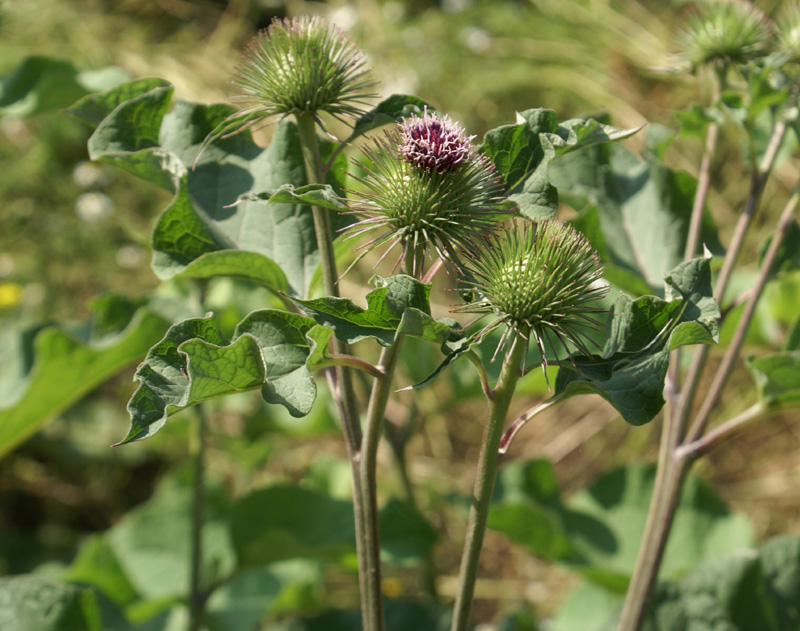 |
Al-Shammaa, D.A., Saour, K.Y. and Abdul-Khalik, Z.M., 2013. Phytochemical investigation for the main active constituents in Arctium lappa L. cultivated in Iraq. Iraqi Journal of Pharmaceutical Sciences (P-ISSN: 1683-3597, E-ISSN: 2521-3512), 22(1), pp.18-24. |
| Arisaema jacquemontii Blume |
Hapat Brand, Kawawari, Hapat makei, Hapat Gogej |
Araceae |
Herb |
Ariseminone (Verma et al., 2012) |
Respiratory disorders, Chronic boils, Skin diseases
|
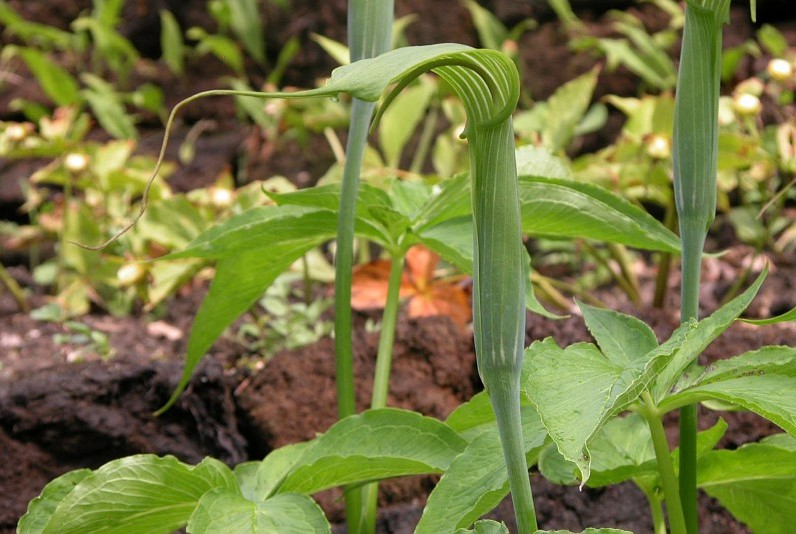 |
Fraternale, D., Flamini, G., Ricci, D., 2014. Essential oil composition and antimicrobial activity of Angelica archangelica L. (Apiaceae) roots. Journal of Medicinal Food 17, 1043–1047. |
| Arisaema propinquum Schott |
Sarfamakai |
Araceae |
Herb |
carbohydrates, protein, amino acids, fats and oils, sterols and steroids, glycoside, coumarins, flavonoids, alkaloids, tannins and phenoliccompounds, acidic compounds, saponins, terpenes and terpenoids, mucilage resins, and lipids/fats. |
methanolic and aqueous extracts of A. propinquum Schott rhizomes possess good anthelminthic activity. |
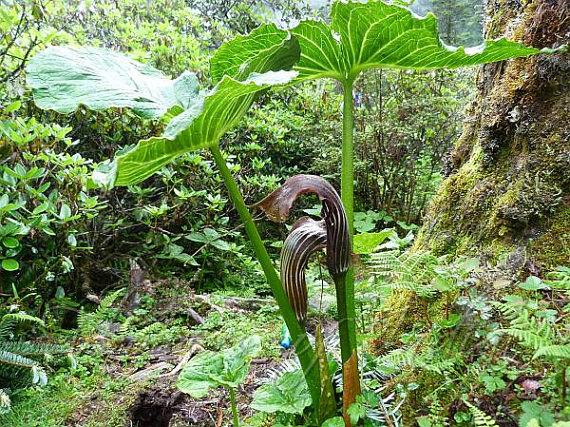 |
Mir, P.A., Dar, M.A. and Bader, G.N., 2020. Pharmacognostical standardization, phytochemical investigation, and anthelminthic activity of Arisaema propinquum Schott rhizomes. Pharmacognosy Research, 12(2). |
| Arnebia benthamii Wall. ex G. Don. |
Kahzaban |
Boraginaceae |
Herb |
Alkaloids, Phenols, Anthraquinones, Flavonoids, Saponins,
Glycosides, Tannins, Terpenoids (Shameem et al., 2015)
|
Decoction of rhizome in sugary water is sipped to alleviate common cold, cough and fever; also a good blood purifier. Fever, Throat infection, Cold, Cough, Diuretic, Headache, Heart diseases, Jaundice, Cough, Pneumonia, Ulcer, Hair loss. Tea (kahwa) is used for cough. |
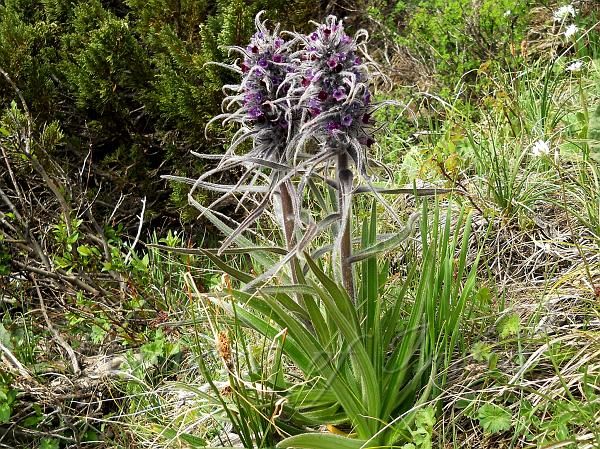 |
Shameem, N., Kamili, A.N., Javid, A.P., Hamed, R., Bandh, S.A., 2015. Antimicrobial and antioxidant activity of methanol extracts of Arnebia benthamii (Wall ex. G. Don) Johnston-A critically endangered medicinal plant of North western Himalaya. Journal of Analytical Science and Technology 6, 36–43. |
| Arnebia euchroma(Royle) I.M.Johnst. |
Demok |
Boraginaceae |
Herb |
Arnebinone, Ethyl 9-(2′,5′-dihydroxyphenyl) nonanoate, Octyl
ferulate, Butyryl alkannin (Singh et al., 2015)
|
Cold, Earache, Eye ailments, Gynaecological disorders, Hair tonic, Kidney disorders, Lung problems, Toothache, Urinary disorder, Wounds. |
.png) |
Singh, L.K., Maheshwari, D.K., Bajpai, V.K., 2015. Isolation of bioactive marker compo�nent, butyryl alkannin from Arnebia euchroma roots and its efficacy against multi�drug–resistant pathogens. National Academy of Science Letters 38, 87–90. |
| Artemisia absinthium L. |
Teth-Win, Chhuma-Jom |
Asteraceae |
Herb |
Camphor, Sabinene, Myrcene, Cineole, Artemisia ketone,
Linalool, α-Thujone, β-Thujone, Epoxyocimene, Verbenol,
Carvone, Sabinyl acetate, Curcumene, Neryl butyrate,
Chamazulene, Chrysanthenyl acetate, Germacrene D, α-
Phellandrene (Sharopov et al., 2012)
|
Paste of dried leaves and inflorescences blended with a glass of lukewarm milk or water is used to cure stomach pain and worm infections of intestine. Dandruff, Fever, Stomach pain, Worm-intestinal. Extract of whole herb is used to cure the liver infection in cattle. Dried herb in powdered form is used in epilepsy, gout and fever. |
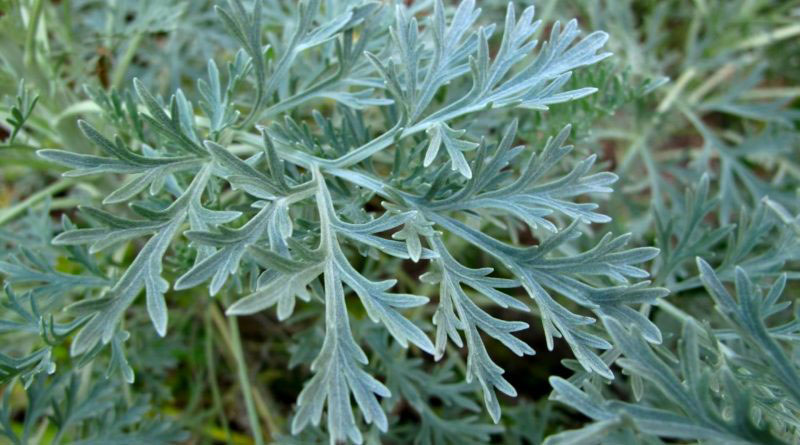 |
Sharopov, F.S., Sulaimonova, V.A., Setzer, W.N., 2012. Composition of the essential oil of Artemisia absinthium from Tajikistan. Records of Natural Products 6, 127–134. |
| Artemisia annua L. |
Sweet Wormwood |
Asteraceae |
Herb |
Artemisinin, Camphor, 1–8 Cineole, β-Eudesmol, Borneol,
Camphene, Pcymene, Terpene-4-ol, α-Pinene, α-Gurjunene
(Shaheen et al., 2014)
|
Parasite diseases, Malaria, Cancer |
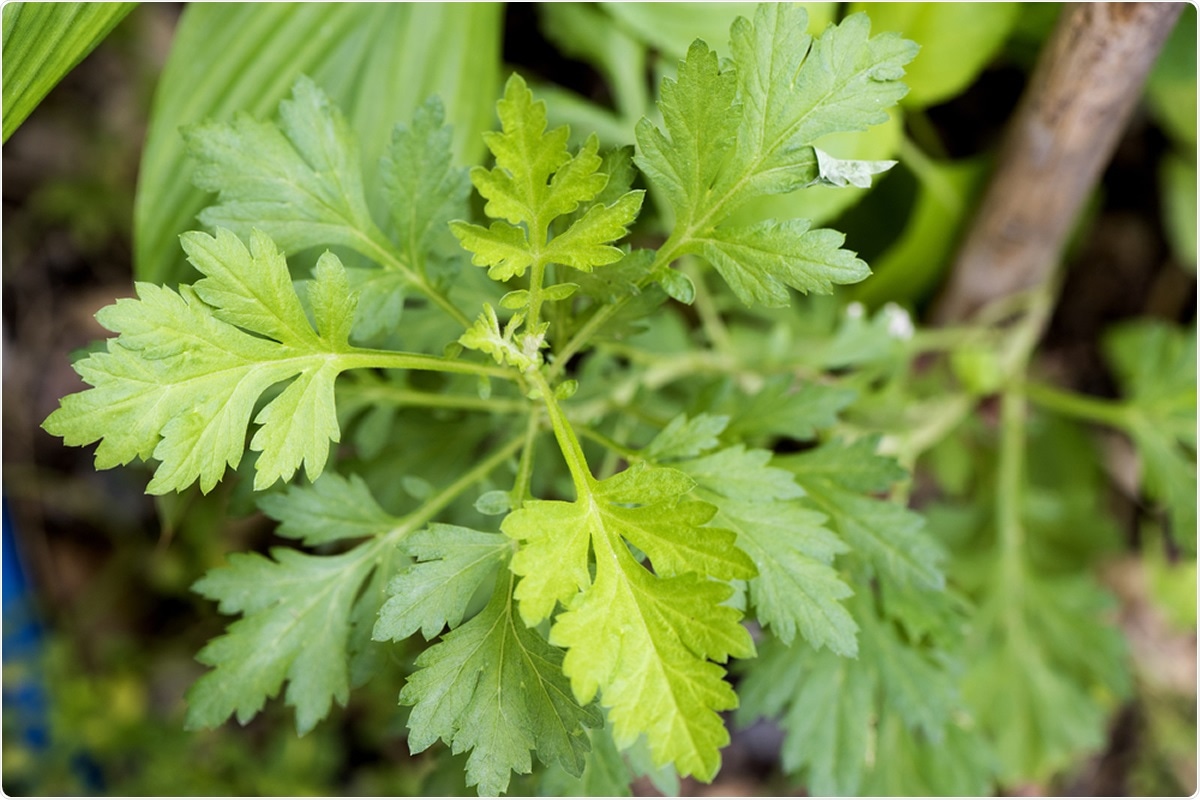 |
Shaheen, F., Rasoola, S., Shah, Z.A., Soomro, S., Jabeen, A., Mesaik, M.A., et al., 2014. Chemical constituents of Marrubium vulgare as potential inhibitors of nitric oxide and respiratory burst. Natural Product Communications 9, 903–906. |
| Artemisia brevifolia Wall. |
Murin |
Asteraceae |
Herb |
Caryophyllene, Chrysanthenyl propionate, Elixene, Piperitone,
Carvone, Camphor, Pinocarveol, Chrysanthenone (Abad et al.,
2012)
|
Blood ailments, Fever, Gastro-intestinal disorder. |
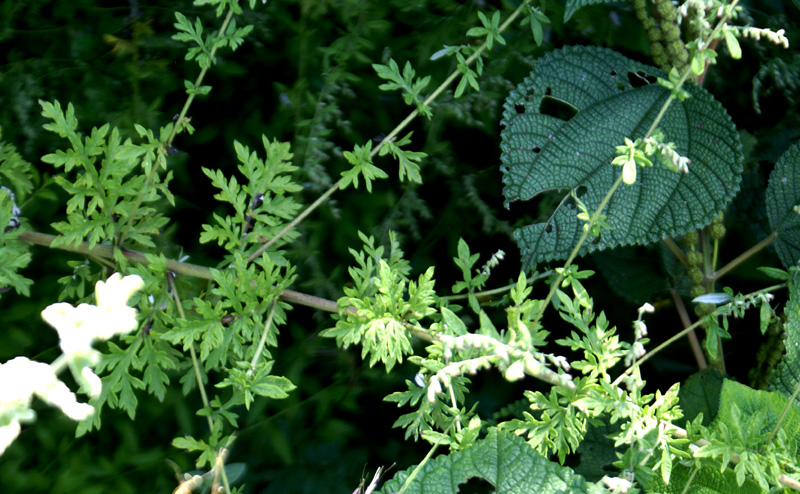 |
Abad, M.J., Bedoya, L.M., Apaza, L., Bermejo, P., 2012. The Artemisia L. genus: a review of bioactive essential oils. Molecules 17, 2542–2566. |
| Artemisia dracunculus L. |
Tarragon, Tsa-chheh, Shersing |
Asteraceae |
Herb |
Anethole, Limonene, Methyl chavicol; α, β-Ocimene, α-Pinene,
Methyl eugenol, β-Pinene, α-Terpinolene, Bornyl acetate,
Bicyclogermacrene (Abad et al., 2012)
|
Intestinal disorder, Indigestion, Menstrual irregularities, Toothache. |
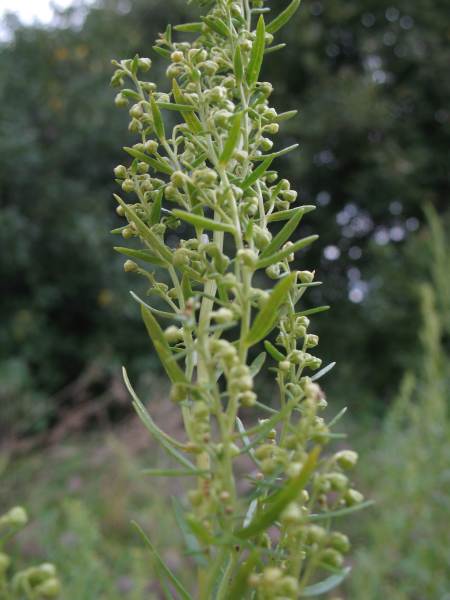 |
Abad, M.J., Bedoya, L.M., Apaza, L., Bermejo, P., 2012. The Artemisia L. genus: a review of bioactive essential oils. Molecules 17, 2542–2566. |
| Artemisia japonica Thunb. |
Zieo |
Asteraceae |
Herb |
Spathulenol, Germacrene D, β-Elemene, Caryophyllene (Rashmi et al., 2014)
|
Skin infections, Diarrhoea. |
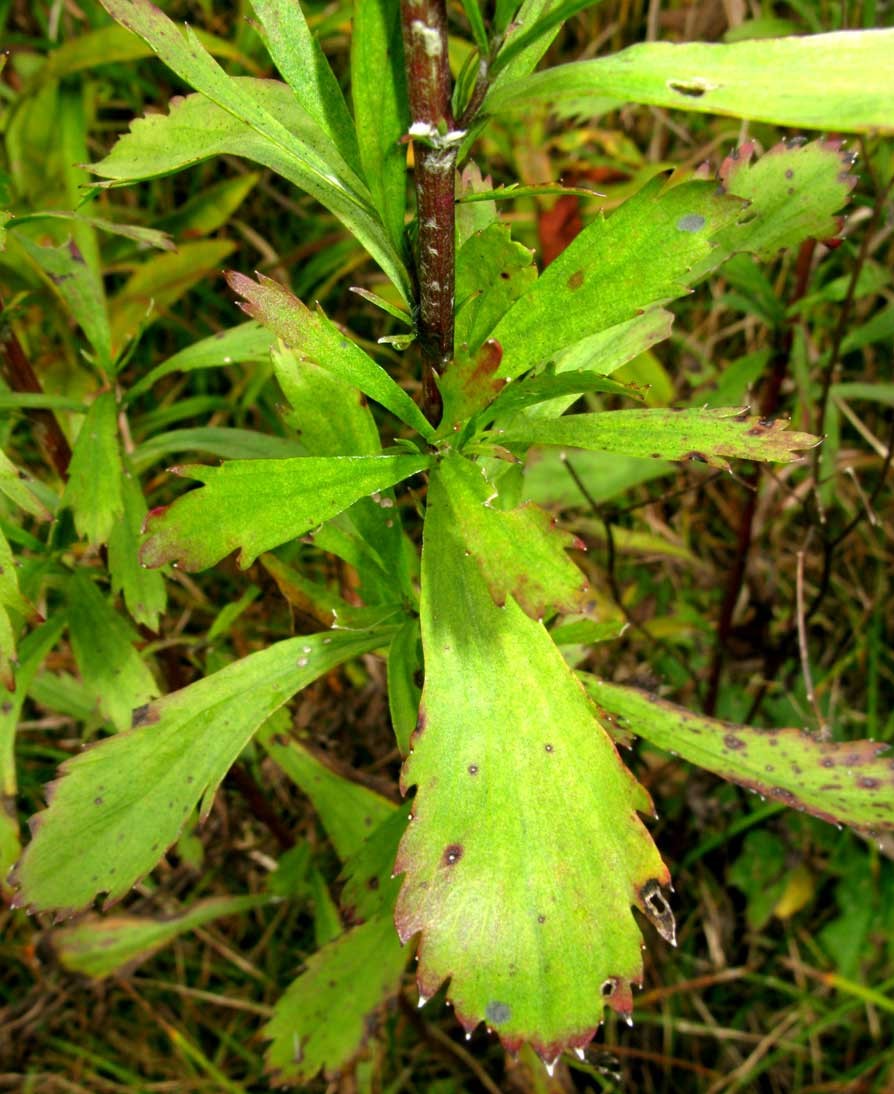 |
Rashmi, T.R., Francis, M.S., Soumya, M., 2014. Essential oil composition of Artemisia japonica Thunb. from Kerala. Journal of Pharmacognosy and Phytochemistry 3, 160–163. |
| Artemisia nilagirica (C.B.Clarke) Pamp. |
Nilgiri Wormwood |
Asteraceae |
Shrub |
Borneol, Caryophyllene oxide, Camphor, β-Thujone, Thujanol,
Myrtenol, Lynalyl acetate, α-Pinene, β-Pinene, Limonene,
Linalool, γ-Gurijunene, Germacrane D, Farnesol (Abad et al.,
2012)
|
Asthma, Nervous disorder |
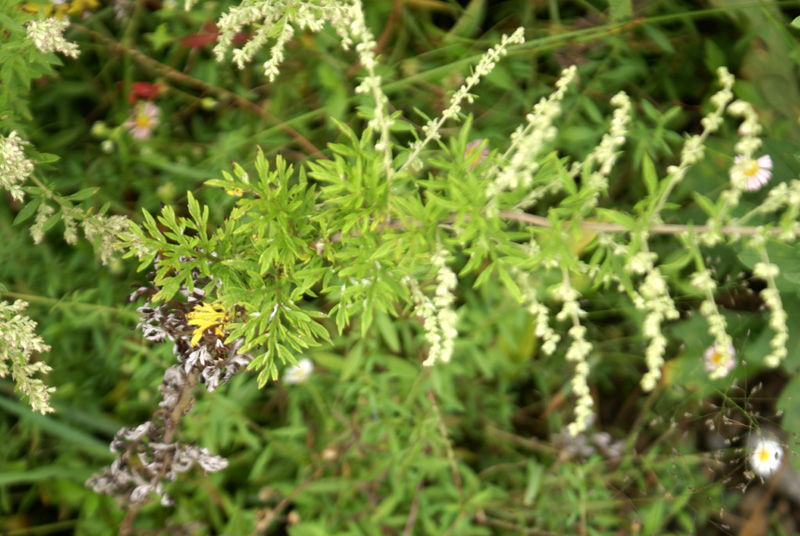 |
Abad, M.J., Bedoya, L.M., Apaza, L., Bermejo, P., 2012. The Artemisia L. genus: a review of bioactive essential oils. Molecules 17, 2542–2566. |
| Artemisia roxburghiana Besser. var. purpurascens (Jacq.) |
|
Asteraceae |
Herb |
Thujone; 1,8-cineole, Camphor, Borneol, Linalyl acetate,
Humulene, Caryophyllene, Eugenol (Joshi et al., 2016)
|
Allergy, Boils |
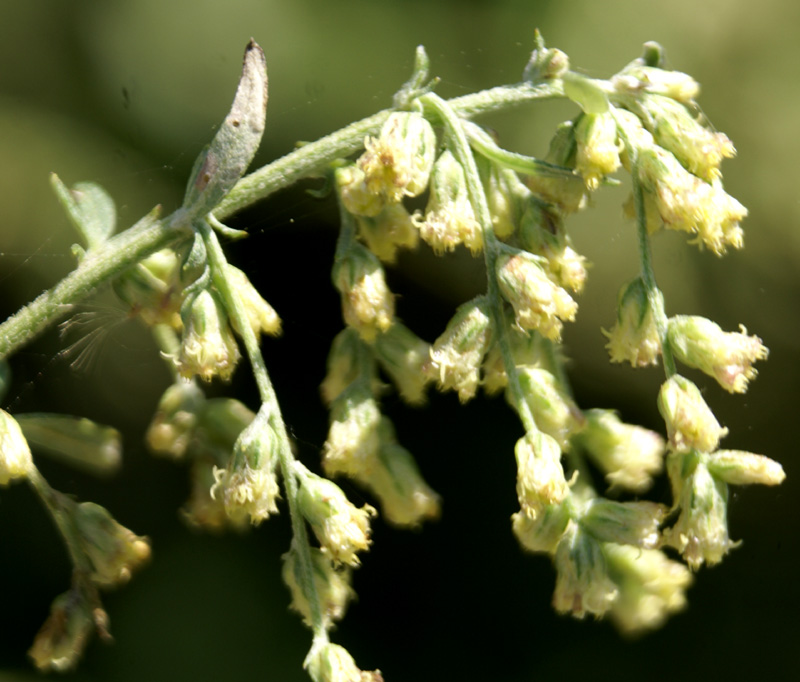 |
Joshi, R.K., Satyal, P., Setzer, W.N., 2016. Himalayan aromatic medicinal plants: a review of their ethnopharmacology, volatile phytochemistry, and biological activities. Medicines 3, 6. |
| Artemisia scoparia Waldst. & Kitam. |
Pari chaw, Tethwan |
Asteraceae |
Herb |
Capillene, β-Caryophyllene, Myrcene, β- Pinene, p-Cymene, γ
−Terpinene, 1-Phenyl-2,4-pentadiyne (Joshi et al., 2016)
|
Fever, Blood pressure, skin and ear diseases. The aerial part made into a paste with common salt, given to eliminate intestinal worms and flatulence. |
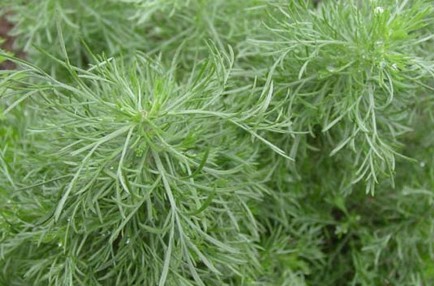 |
Joshi, R.K., Satyal, P., Setzer, W.N., 2016. Himalayan aromatic medicinal plants: a review of their ethnopharmacology, volatile phytochemistry, and biological activities. Medicines 3, 6. |
| Artemisia sieversiana Ehrh. |
Atantin, Khamchu |
Asteraceae |
Herb |
Eucalyptol, 1,8-Cineole, Geranyl butyrate, Borneol, Camphor
(Abad et al., 2012)
|
Urinary disorders, Kidney pain, Inflammation, Skin problems. |
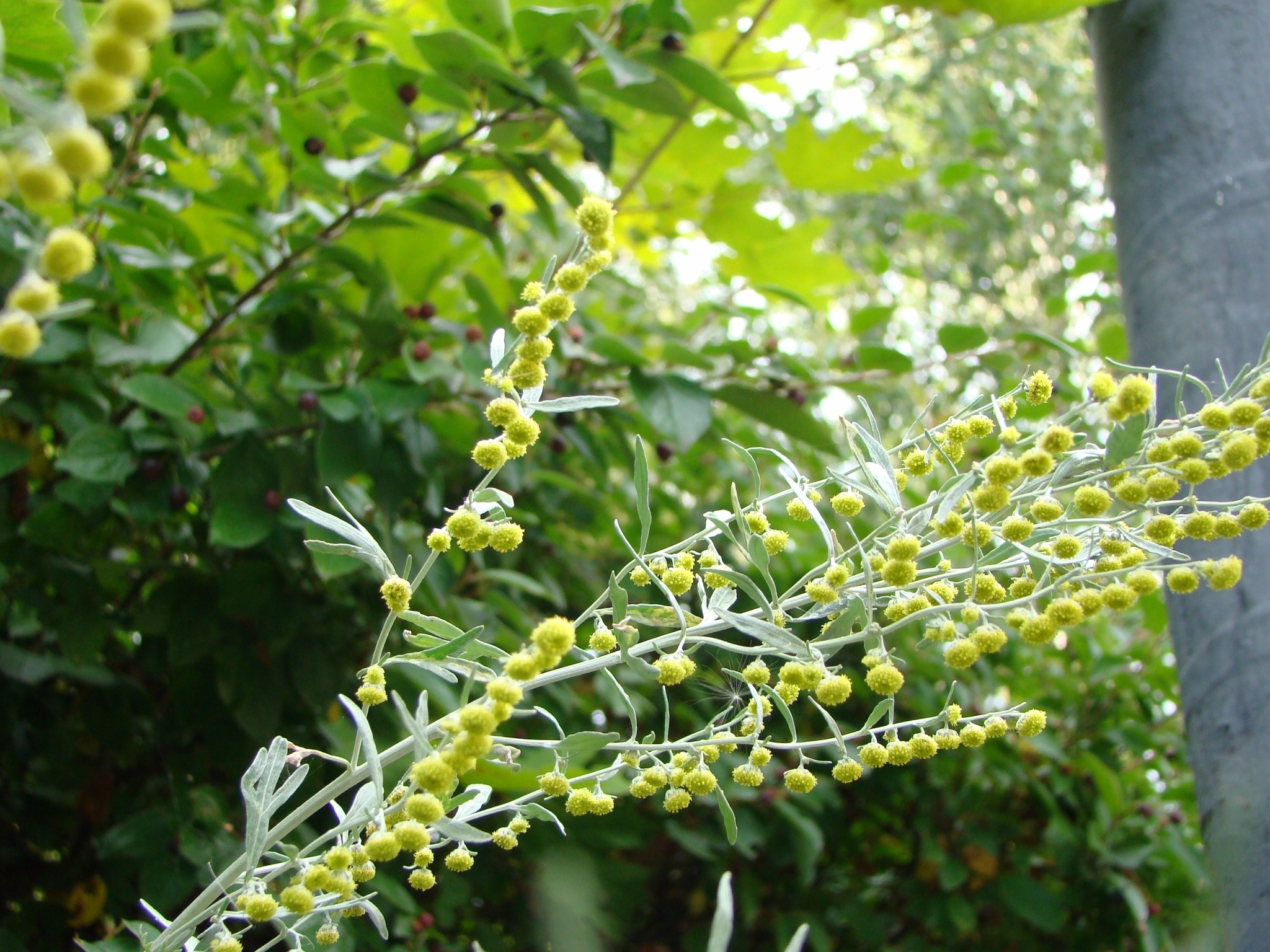 |
Abad, M.J., Bedoya, L.M., Apaza, L., Bermejo, P., 2012. The Artemisia L. genus: a review of bioactive essential oils. Molecules 17, 2542–2566. |
| Artemisia vulgaris L. |
Nagdowna |
Asteraceae |
Herb |
Davanone, β-Pinene, Germacrene-D, Isobornyl isobutyrate, β-
Pinene, Limonene, δ-3- Carene, α-Pinene, δ-Terpinene, Rose
oxide (Haider et al., 2014)
|
Malaria, Fever |
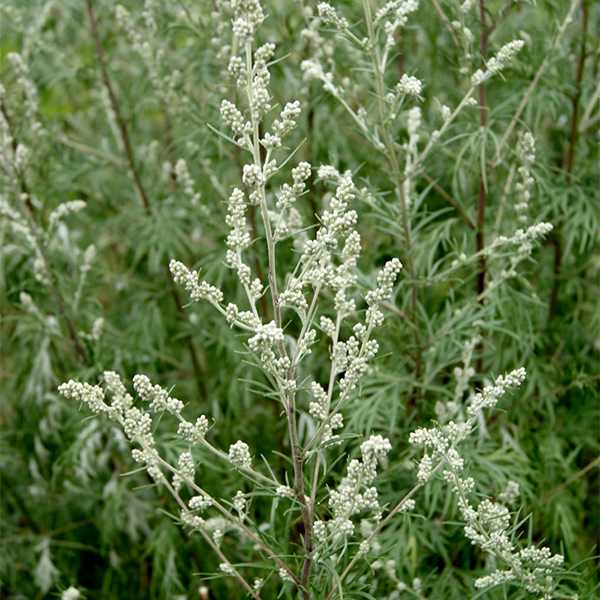 |
Haider, S.Z., Mohan, M., Andola, H.C., 2014. Constituents of Artemisia indica Willd. from Uttarakhand Himalaya: A source of davanone. Pharmacognosy Research 6, 257. |
| Asparagus filicinus Buch. Ham |
Fern Asparagus |
Asparagaceae |
Herb |
Two new spirostanoides, filiasparosides E (1) and F (2), one new furostanoside, filiasparoside G (3), and one new ecdysterone, stachysterone A-20, 22-acetonide (4), together with six known steroidal saponins, asparagusin A (5), filiasparoside A (6), filiasparoside B (7), aspafilioside A (8), aspafilioside B (9), and filiasparoside C (10) were isolated from the roots of Asparagus filicinus |
cytotoxicities against human breast adenocarcinoma MDA-MB-231 cell line |
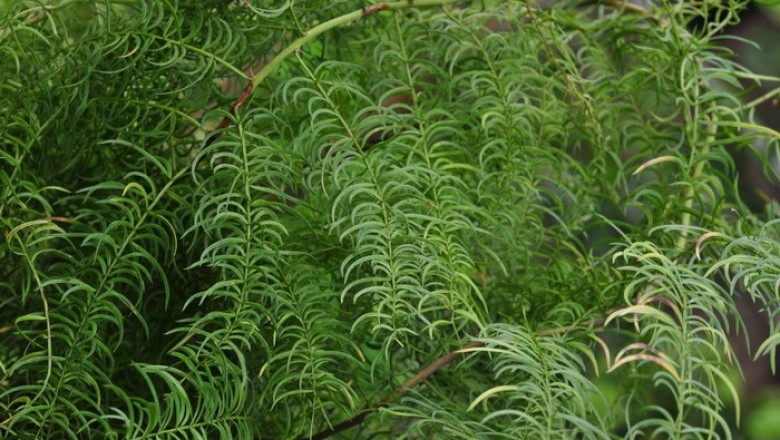 |
Wu, J.J., Cheng, K.W., Zuo, X.F., Wang, M.F., Li, P., Zhang, L.Y., Wang, H. and Ye, W.C., 2010. Steroidal saponins and ecdysterone from Asparagus filicinus and their cytotoxic activities. Steroids, 75(10), pp.734-739. |
| Asperagus recemosus |
Satavar |
Asparagaceae |
Herb |
Steroidal saponins, known as shatvarins. Shatvarin I to VI are present. Shatvarin I is the major glycoside with 3-glucose and rhamnose moieties attached to sarsapogenin, Oligospirostanoside referred to as Immunoside, Polycyclic alkaloid-Aspargamine A, a cage type pyrrolizidine alkaloid |
galactogougue affects, antihepatotoxic, immunomodulatory effects, immunoadjuvant effect, antilithiatic effect and teratogenicity of A. racemosus. |
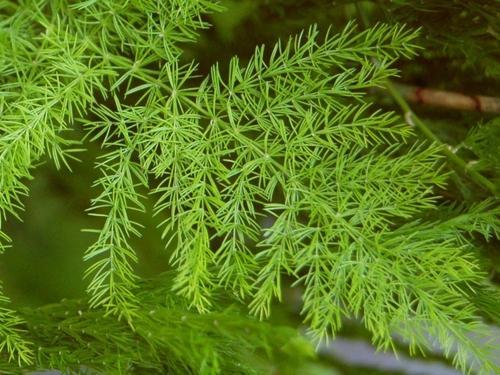 |
Alok, S., Jain, S.K., Verma, A., Kumar, M., Mahor, A. and Sabharwal, M., 2013. Plant profile, phytochemistry and pharmacology of Asparagus racemosus (Shatavari): A review. Asian Pacific journal of tropical disease, 3(3), pp.242-251. |
| Astragalus grahamianus |
Drabi kaeind |
Fabaceae |
Herb |
|
Skin diseases |
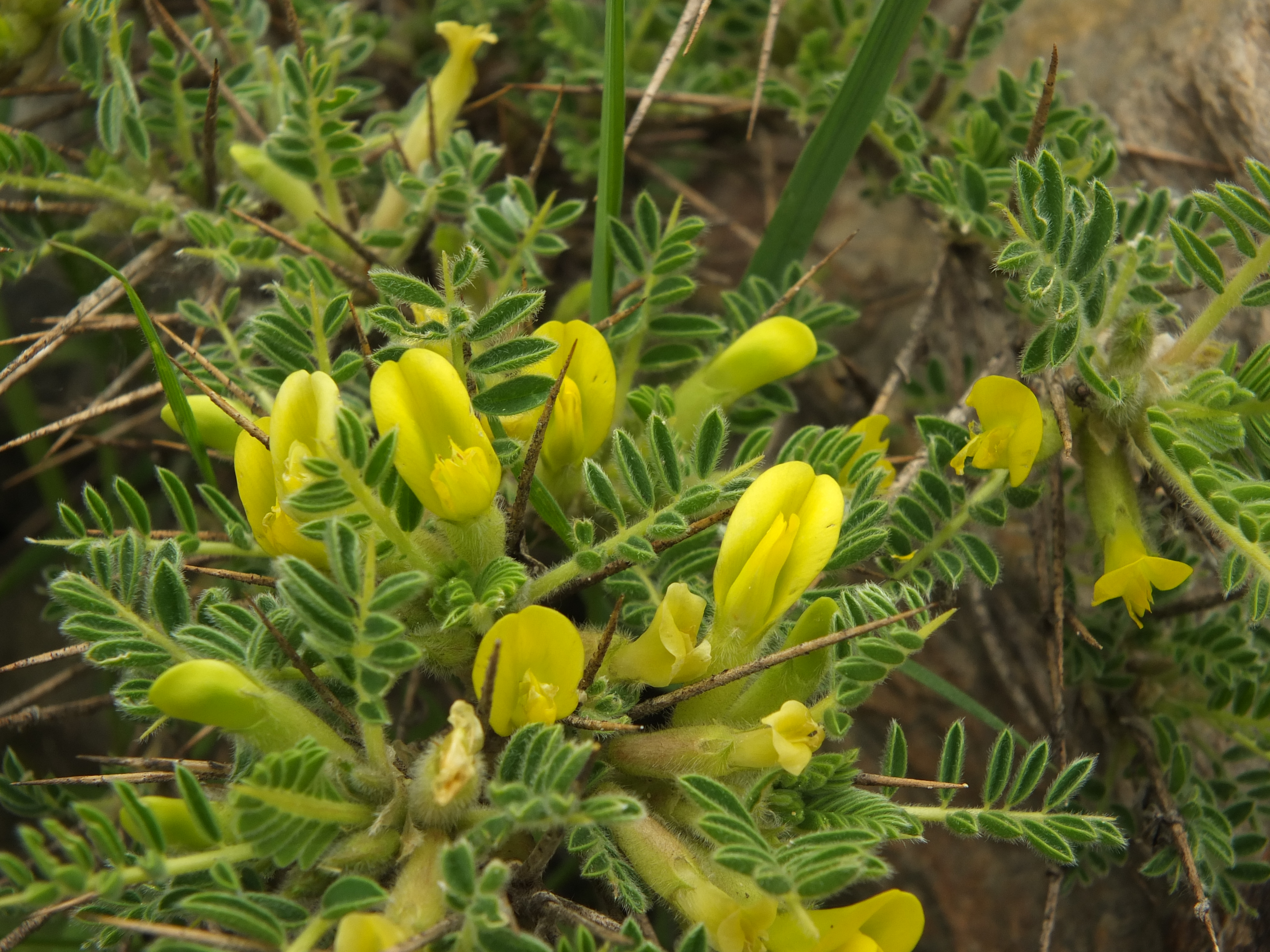 |
Kala, C.P., 2006. Medicinal plants of the high altitude cold desert in India: diversity, distribution and traditional uses. The International Journal of Biodiversity Science and Management, 2(1), pp.43-56. |
| Atropa acuminata Royle ex Lindl. |
Sagangur, Belladonna |
Solanaceae |
Herb |
Tropane alkaloids— atropine and scopolamine (Ashtiania and
Sefidkonb, 2011)
|
Arthritis, asthma, conjunctivitis, encephalitis, pancreatitis,peritonitis, acute infections and neuroinflammatory disorders. Rheumatic pain, Asthma, Narcotic, Sedative, Burns, Eye diseases, Inflammation. Roots and leaves are used as sedative, diuretic and analgesic. For asthma, leaves are burnt and smoke is inhaled. For joint pain, paste of leaves is applied on the affected area. For blood circulation, Extract of root is taken. |
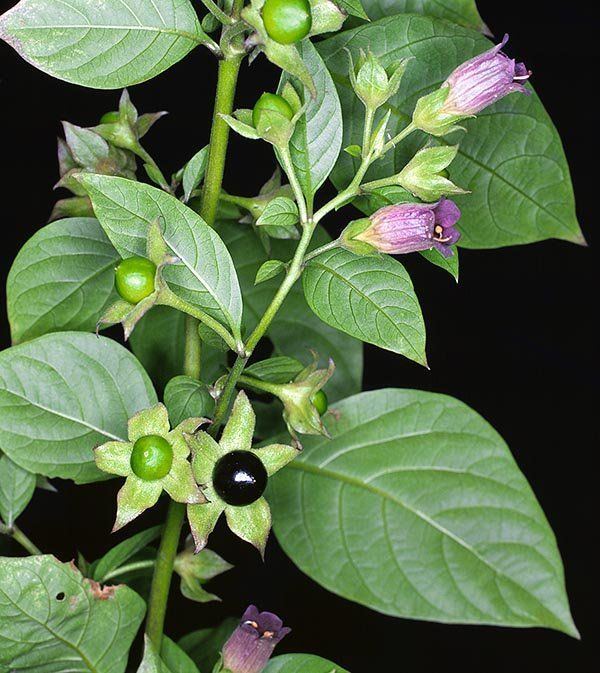 |
Ashtiania, F., Sefidkonb, F., 2011. Tropane alkaloids of Atropa belladonna L. and Atropa acuminata Royle ex Miers plants. Journal of Medicinal Plants Research 5, 6515–6522. |
| Atropa belladonna L. |
Sagangur, Belladonna |
Solanaceae |
Herb |
Tropane alkaloids— atropine and scopolamine (Ashtiania and
Sefidkonb, 2011) |
Arthritis, asthma, conjunctivitis, encephalitis, pancreatitis,peritonitis, acute infections and neuroinflammatory disorders. Rheumatic pain, Asthma, Narcotic, Sedative, Burns, Eye diseases, Inflammation. Roots and leaves are used as sedative, diuretic and analgesic. For asthma, leaves are burnt and smoke is inhaled. For joint pain, paste of leaves is applied on the affected area. For blood circulation, Extract of root is taken. |
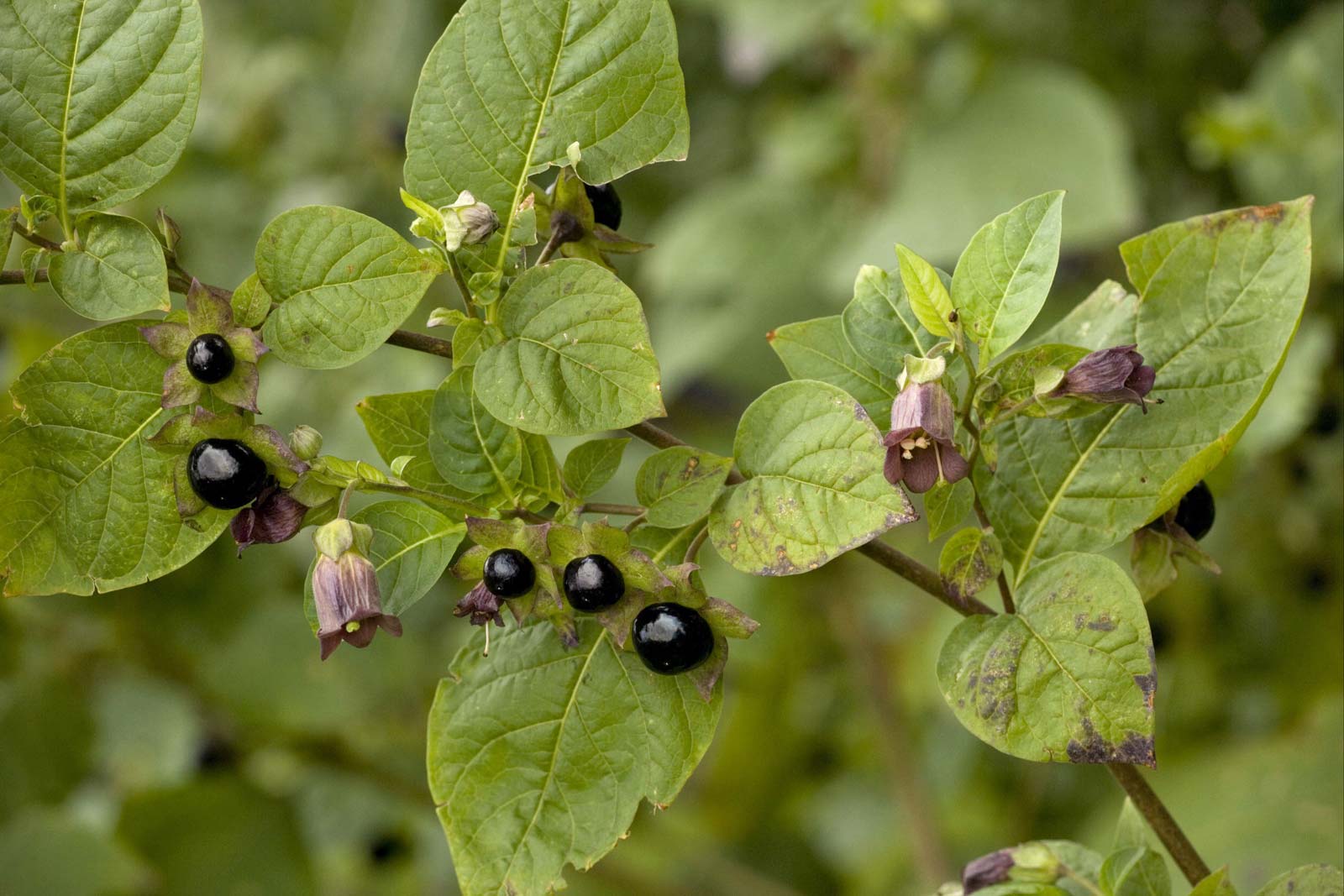 |
Ashtiania, F., Sefidkonb, F., 2011. Tropane alkaloids of Atropa belladonna L. and Atropa acuminata Royle ex Miers plants. Journal of Medicinal Plants Research 5, 6515–6522. |
| Berberis aristata DC. |
Kaodach |
Berberidaceae |
Shrub |
Berberine, Oxyberberine, Berbamine, Aromoline, Karachine,
Palmatine, Oxycanthine Taxilamine (Mazumder et al., 2011)
|
Backache, Eye ailments, Fracture, Jaundice, Malarial fever, General Weakness |
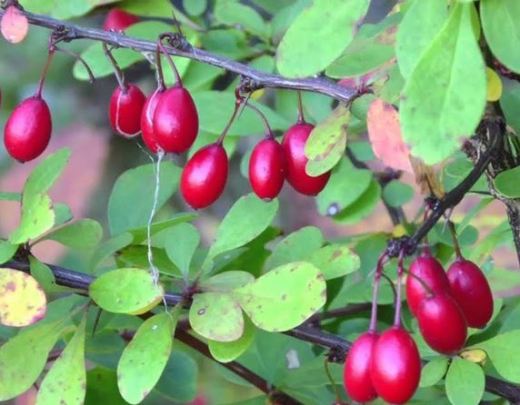 |
Mazumder, P.M., Das, S., Das, M.K., 2011. Phyto–pharmacology of Berberis aristata DC: a review. Journal of Drug Delivery and Therapeutics 1, 46–50. |
| Berberis asiatica Roxb. ex DC. |
Rasaut, Kasmal |
Berberidaceae |
Shrub |
Berberine, Palmitine, Jatrrohirine, Colunbamamine
Tetrahydropalmitine, Berbamine, Oxyberberine, oxyacanthine
(Srivastava et al., 2015)
|
Backache, Joint pain. |
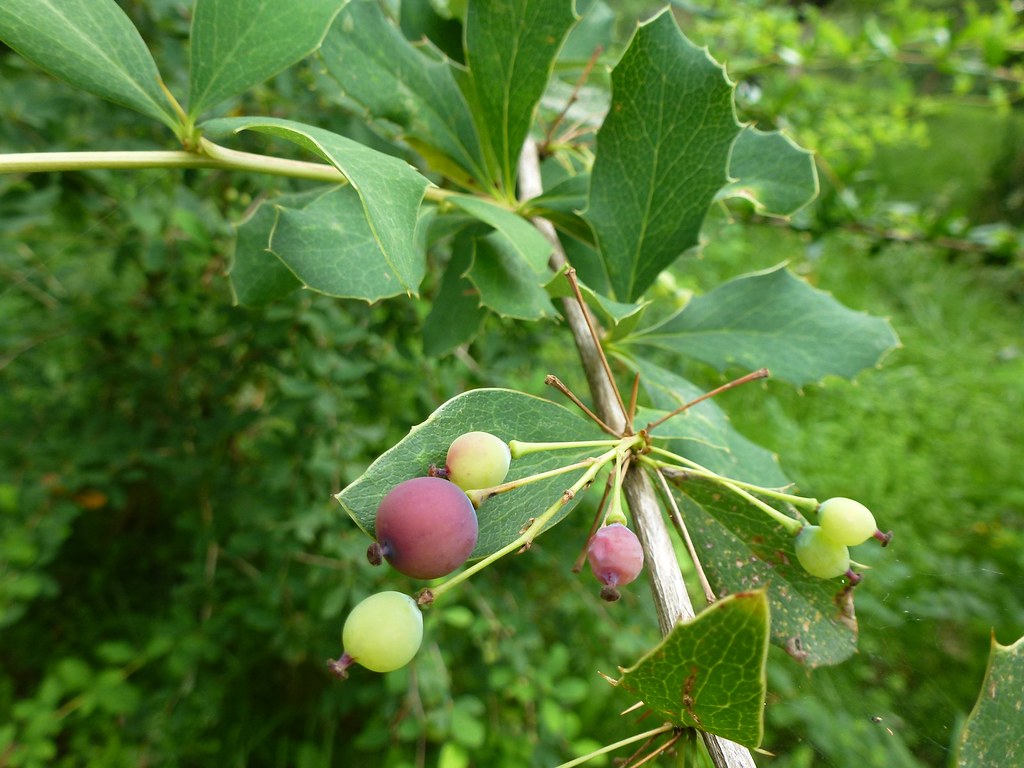 |
Srivastava, S., Srivastava, M., Misra, A., Pandey, G., Rawat, A.K., 2015. A review on biological and chemical diversity in Berberis (Berberidaceae). Experimental and Clinical Sciences 14, 247–267.
|
| Berberis lycium Royle |
Unab, Kawdach |
Berberidaceae |
Shrub |
Palmatine, Berberine, Vasicin, Vasicinone, Tannin, Flavonoids,
Phenols, Terpenoids (Sood et al., 2013)
|
Soft root peelings boiled in sugary water is taken to relieve indigestion, constipation, and irregular bowl movements; paste prepared from fresh fruits is used to heal wounds. Eye diseases, Stomach disorders, Jaundice, Boils, Chest problem, Splenic trouble. |
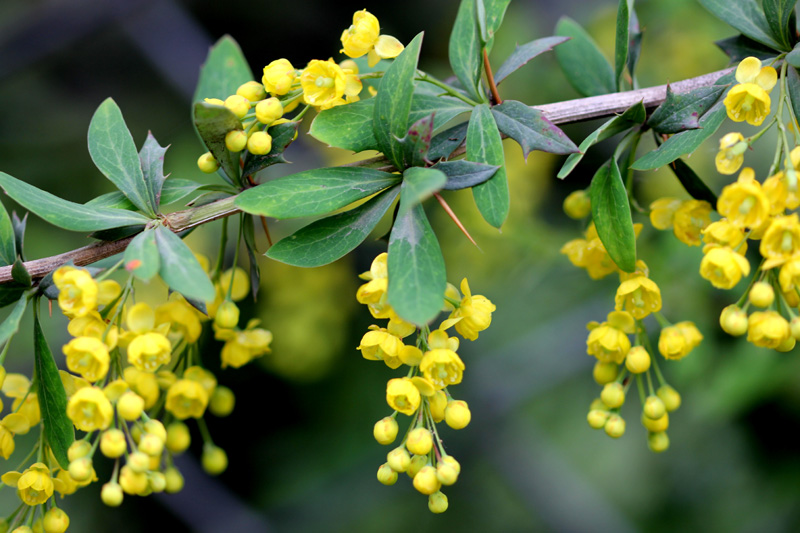 |
Sood, P., Modgil, R., Sood, M., 2013. Berberis lycium a medicinal plant with immense value. Indian Journal of Pharmaceutical and Biological Research 1, 27–37. |
| Bergenia ciliata(Haw.) Stemb |
Zakhm-i-Hayat, Pahend, Korasadun |
Saxifragaceae |
Herb |
Gallic acid, Tannic acid, Galloylcatechin, Catechin, Metarbin,
Bergenin, Catechin (Ruby et al., 2012)
|
Asthma, Bladder stone, Diarrhoea, Digestive ailments, Menstrual irregularities, Pulmonary infections, Skin diseases, Wounds. Decoction of the rhizome used as antiseptic in foot and mouth diseases. Powdered rhizome is used as tonic and popularly used to break stones in bladder and kidney. |
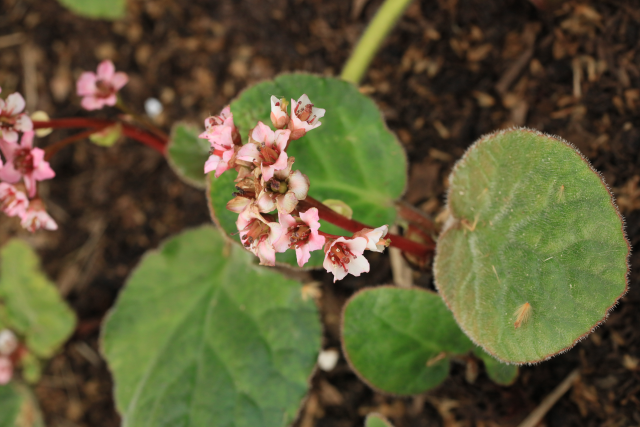 |
.Ruby, K.M., Chauhan, R., Sharma, S., Dwivedi, J., 2012. Polypharmacological activities of Bergenia species. International Journal of Pharmacy and Pharmaceutical Sciences 1, 100–109. |
| Bergenia ligulata |
Pashanabheda |
Saxifragaceae |
Herb |
the preliminary investigation revealed the presence of alkaloids, steroids, flavonoids, terpenoids, tannins, glycosides, carbohydrates and saponins the diethylether and acetone extract were studied. β-Sitosterol, stigmesterol, tannic acid and gallic acid were isolated by using thin layer and column chromatography. |
It is used in urinary bladder stone, antilithic activity diuretic activity, anti-bradykinin activity, antiviral activity, antipyretic activity, antibacterial, anti inflammatory, hepatoprotective activity, insecticidal activity, α-glucosidase activity. |
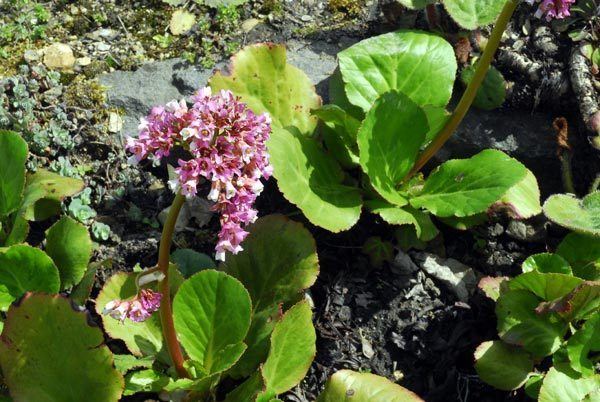 |
Ruby, K.M., Chauhan, R., Sharma, S. and Dwivedi, J., 2012. Polypharmacological activities of Bergenia species. International Journal of Pharmaceutical Sciences Review and Research, 13(1), pp.100-110. |
| Bergenia stracheyi (Hook.f. & Thomson) Engl. |
Himalayan Bergenia |
Saxifragaceae |
Herb |
oxygenated sesquiterpenoids (43.06%), higher oxygenated hydrocarbons (29.83%), Among oxygenated sesquiterpenoids Cadinene <14-hydroxy-δ-> (38.36%) and Khusinol (2.06%) were the main components |
Used in Ayurveda |
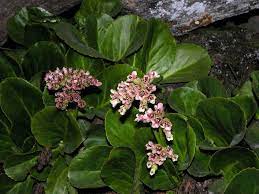 |
Kumar P, Javed M, Tewari A, Bisht K. PHYTOCHEMICAL INVESTIGATION AND IN VITRO ANTIFUNGAL ACTIVITY OF ESSENTIAL OIL FROM THE RHIZOME OF BERGENIA STRACHEYI (Hook.f. & Thomson) Engl. JDDT |
| Betula utilis D.Don. |
Burze |
Betulaceae |
Tree |
Betulin, Betulic acid, Geranic acid, β-Seleneol, β-Linalool,
Terragon, β-Sesquiphellendrene, Champacol, Cineol (Pal et al.,
2015)
|
Bronchitis, Burns, Jaundice, Leprosy, Anaemia, Hysteria, Obesity, Rheumatism, Primogenital diseases. Infusion of the bark is used as antiseptic. |
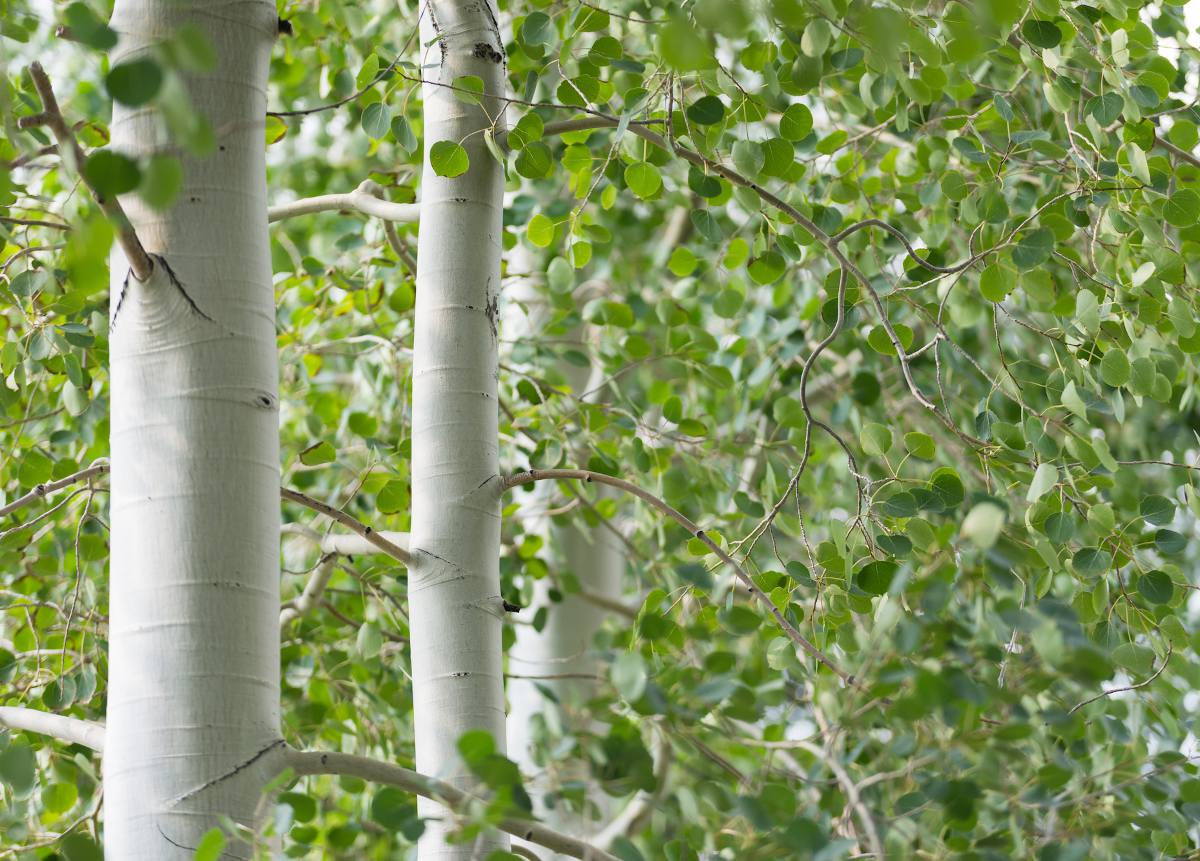 |
Pal, M., Mishra, T., Kumar, A., Baleshwar, Upreti, D.K., Rana, T.S., 2015. Chemical constituents and antimicrobial potential of essential oil from Betula utilis growing in high altitude of Himalaya (India). Journal of Essential Oil Bearing Plants 3 (18), 1078–1082. |
| Brassica rapa |
Tilgogul |
Brassicaceae |
Herb |
kaempferol 3-O-sophoroside-7-O-Glucoside, kaempferol 3-O-(feruloyl/caffeoyl)-sophoroside-7-Oglucoside, isorhamnetin 3,7-O-diglucoside, and isorhamnetin 3-O-glucoside |
It has a wide array of medicine properties including heat-clearing, detoxifying and anti-hypoxia |
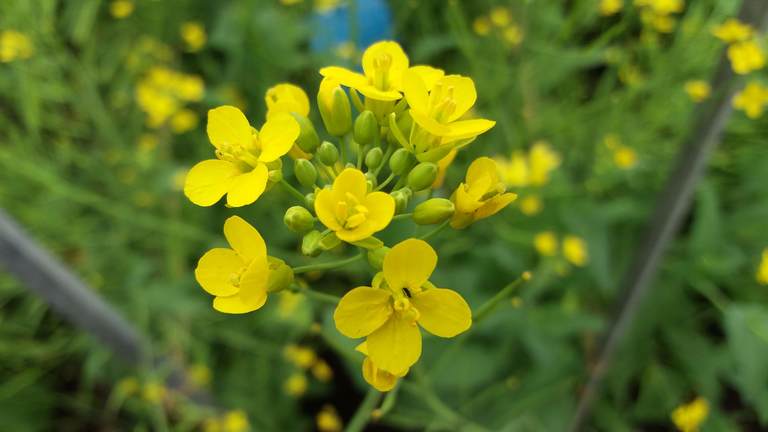 |
Hua, H., Zhang, W., Li, J., Li, J., Liu, C., Guo, Y., Cheng, Y., Pi, F., Xie, Y., Yao, W. and Gao, Y., 2021. Neuroprotection against cerebral ischemia/reperfusion by dietary phytochemical extracts from Tibetan turnip (Brassica rapa L.). Journal of Ethnopharmacology, 265, p.113410. |
| Bunium persicum (Boiss) Fedts. |
Kalajeera |
Apiaceae |
Herb |
The seeds of Bunium persicum were studied for the presence of flavonoids, saponins, alkaloids and tannins |
Methanolic extracts of plant have antioxidant activity |
%20Fedts..jpg) |
Sharififar, F., Yassa, N. and Mozaffarian, V., 2010. Bioactivity of major components from the seeds of Bunium persicum (Boiss.) Fedtch. Pakistan journal of pharmaceutical sciences, 23(3). |
| Bupleurum falcatum L. |
Bormuje |
Apiaceae |
Herb |
Quinic acid derivatives, Flavonoids, Monoterpene glycosides,
Saikosaponins (Tung et al., 2015)
|
Abdominal pain, Liver diseases. A decoction of the plant is used to cure liver troubles. |
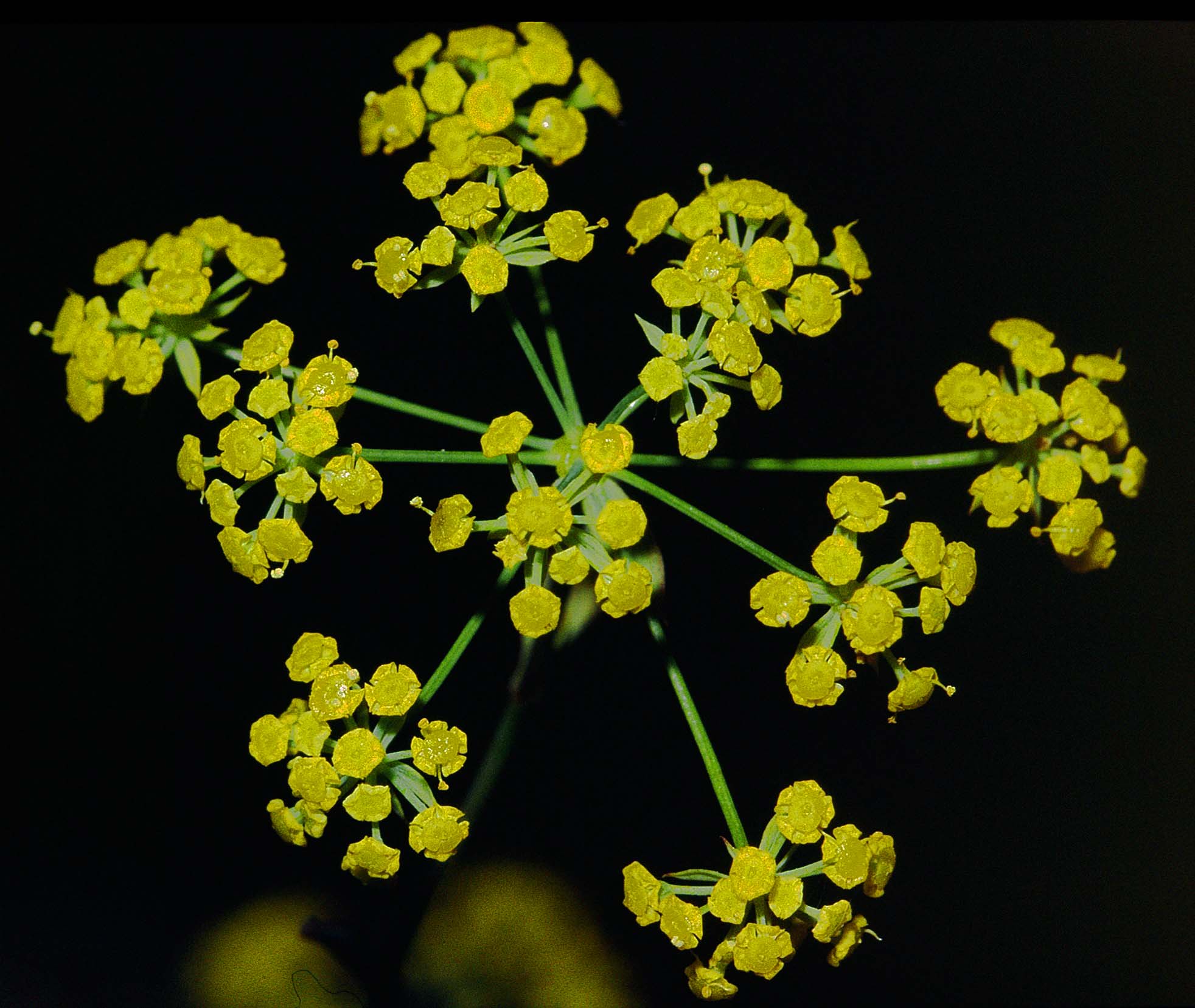 |
Tung, N.H., Uto, T., Morinaga, O., Shoyama, Y., 2015. Chemical constituents from the aerial parts of Bupleurum falcatum L. and biological evidences. Natural Product Sciences 21, 71–75.
|
| Calendula officinalis L. |
Hamesh Bahar |
Asteraceae |
Herb |
δ-Cadinene, γ-Cadinene, α-Cadinol, α-Muurolene, α-Calacorene
(Gazim et al., 2008)
|
Eye ailments, Boils, Burns, Pneumonia |
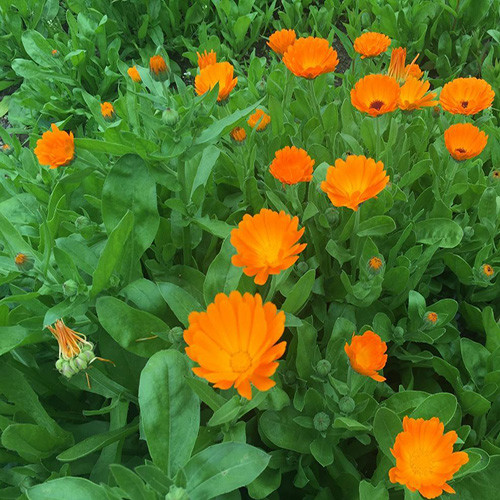 |
Gazim, Z.C., Rezende, C.M., Fraga, S.R., Dias Filho, B.P., Nakamura, C.V., Cortez, D.A., 2008. Analysis of the essential oils from Calendula officinalis growing in Brazil using three different extraction procedures. Revista Brasileira de Ciências Farmacêuticas 44, 391–395.
|
| Cannabis sativa L. |
Bungh, Chares |
Cannabaceae |
Herb |
Cannabinoids-Tetrahydrocannabinol (THC), Cannabidiol (CBD),
Cannabinol (CBN), β-Caryophyllene, Cannabigerol, Alkaloids,
Saponin, Flavonoids,Tannins, Cardiac glycosides, Balsam,
Phenols,Terpenes, Steroids, Resins (Audu et al., 2014)
|
Arthritis, Blood diseases, Cholera, Dandruff, Diarrhoea, Gastric problems, Menstrual disorder, Piles, Rheumatism, Skin diseases, Urinary infection. |
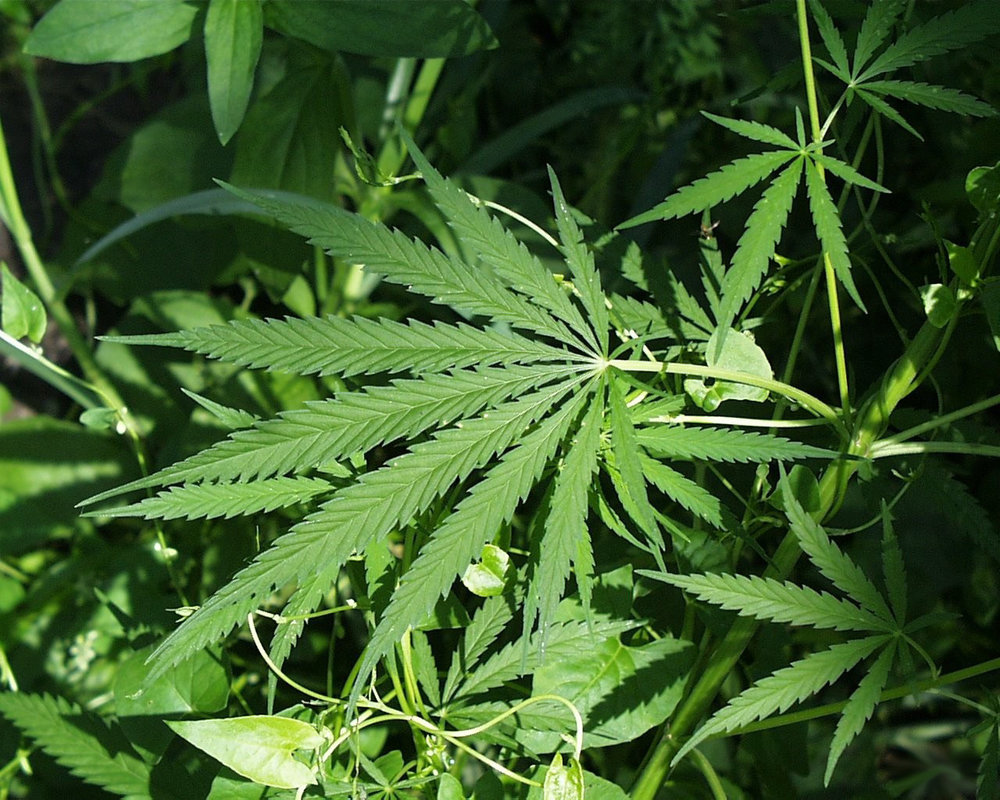 |
Audu, B.S., Ofojekwu, P.C., Ujah, A., Ajima, M.N., 2014. Phytochemical, proximate composition, amino acid profile and characterization of Marijuana (Cannabis sativa L.). The Journal of Phytopharmacology 3, 35–43.
|
| Celosia argentea L. |
Moval |
Amaranthaceae |
Herb |
Saponins, Celosin-E,F,G, Cristatain, Betalains, Nicotinic acid,
Celogenamide-A, Celogentin A–D, H, J, K (Ramesh et al., 2013)
|
Indigestion, Constipation |
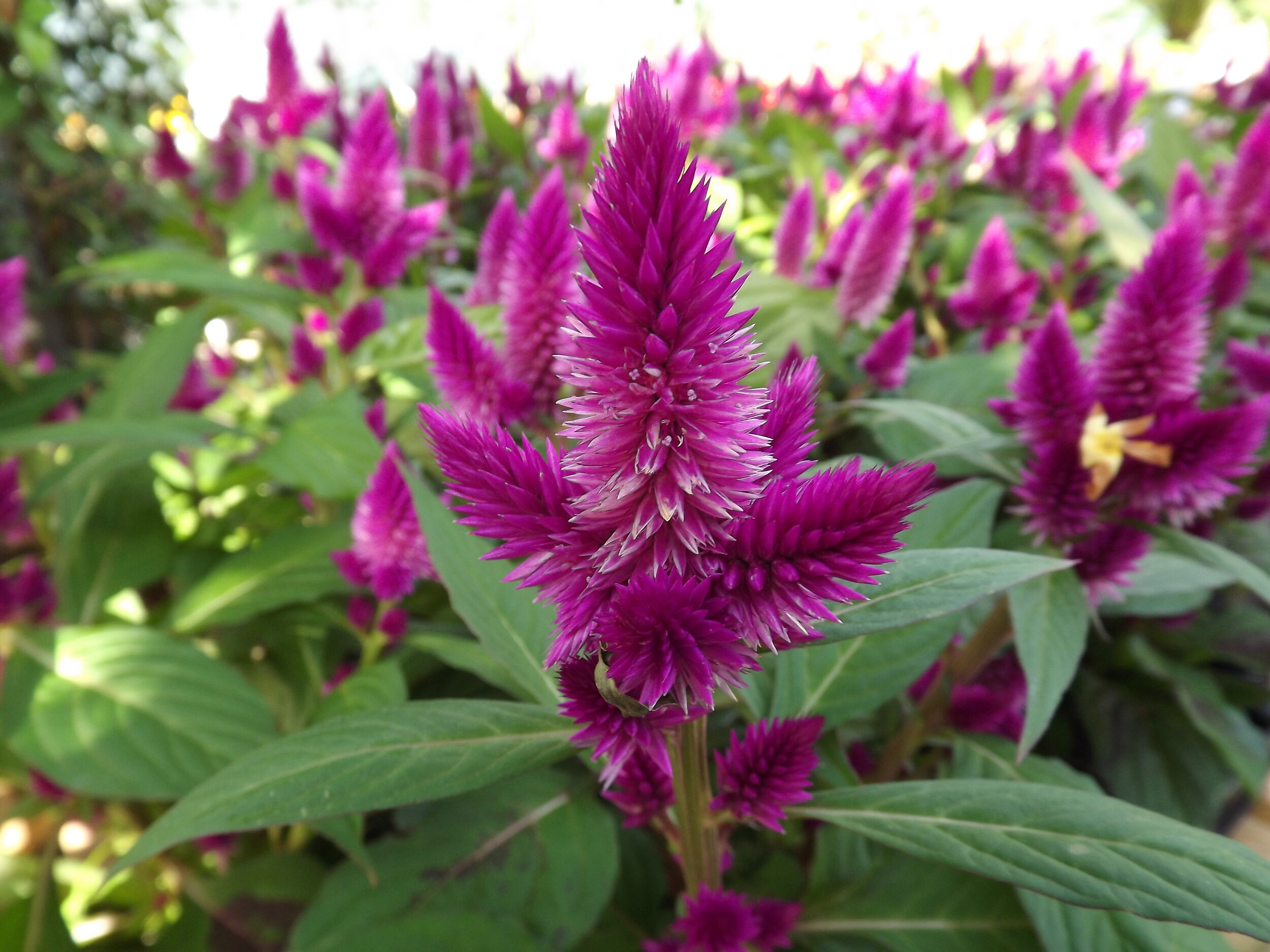 |
Ramesh, B.N., Mahalakshmi, A.M., Mallappa, S.H., 2013. Towards a better understanding of an updated ethnopharmacology of Celosia argentea L. International Journal of Pharmacy and Pharmaceutical Sciences 5, 54–59. |
| Centaurea iberica Trevir. |
Krech |
Asteraceae |
Herb |
Germacrene D, Caryophyllene oxide, β- Caryophyllene, β-
Eudesmol, Bicyclogermacrene, Spathulenol (Kilic, 2013)
|
Inflammations, Eye & Skin diseases, Burns |
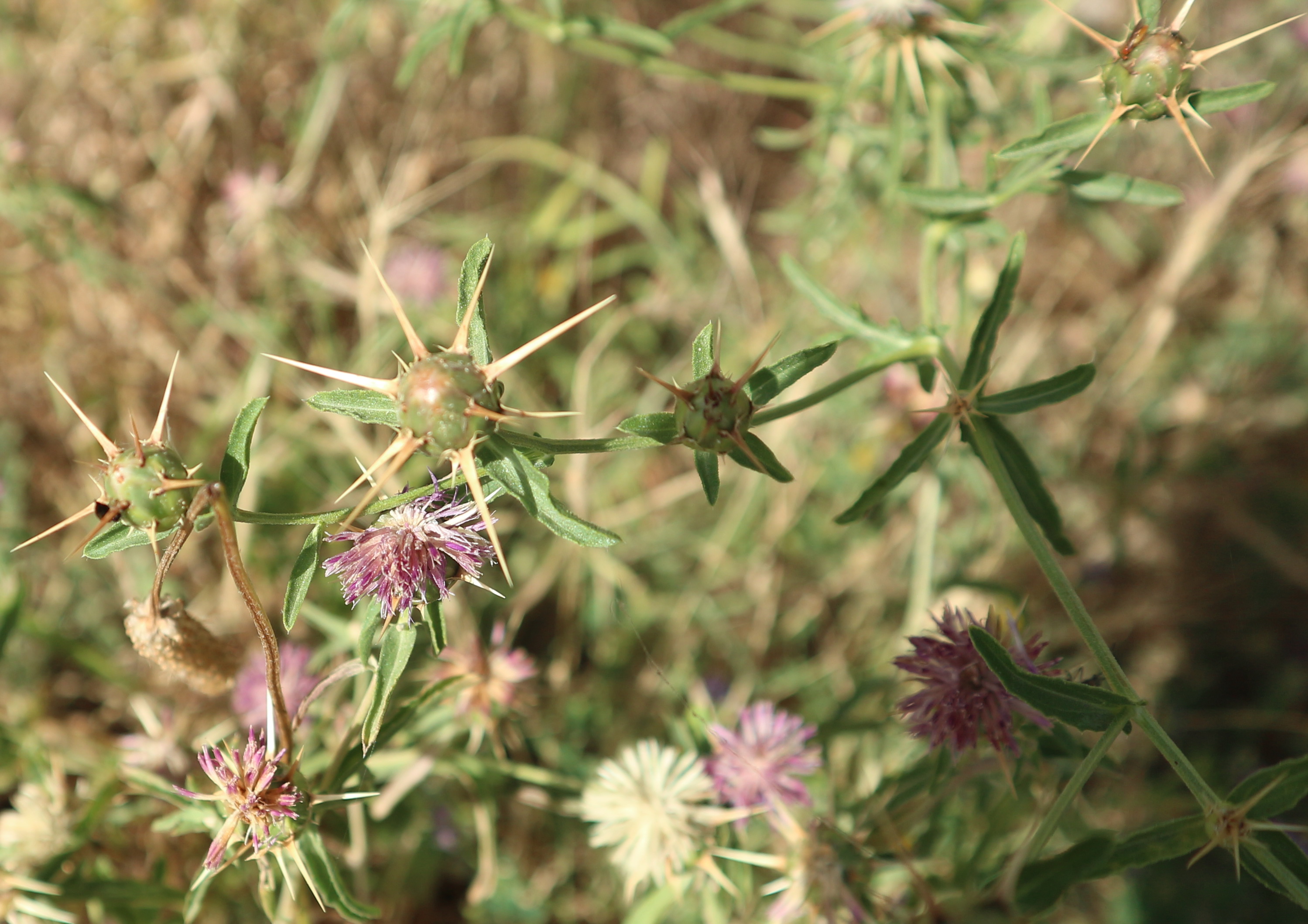 |
Kilic, O., 2013. Essential oil compounds of three Centaurea L. taxa from Turkey and their chemotaxonomy. Journal of Medicinal Plants Research 17 (7), 1344–1350. |
| Cephalanthera longifolia |
Sword Leaved Helleborine |
Orchidaceae |
Herb |
|
dysuria |
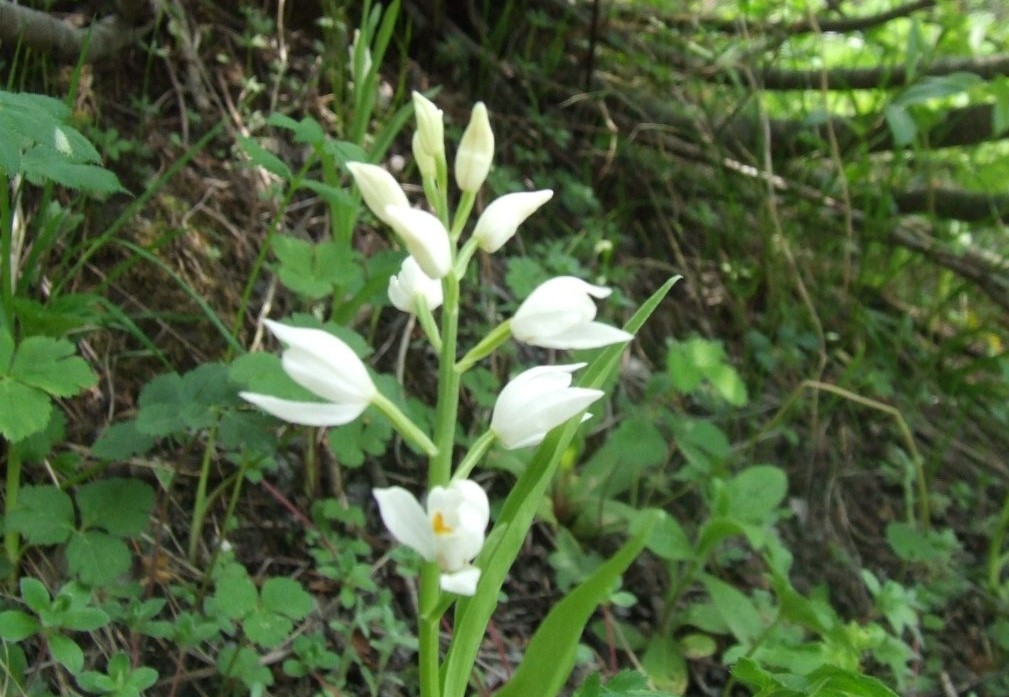 |
Shah, A., Bharati, K.A., Ahmad, J. and Sharma, M.P., 2015. New ethnomedicinal claims from Gujjar and Bakerwals tribes of Rajouri and Poonch districts of Jammu and Kashmir, India. Journal of ethnopharmacology, 166, pp.119-128. |
| Chenopodium album L. |
Janchikarpo, Saag |
Amaranthaceae |
Herb |
p- Cymene, Ascaridole, Pinane-2-ol, α-Pinene, β-Pinene, α-
Terpineol (Usman et al., 2010)
|
Blood pressure, Anaemia, Worms, Constipation |
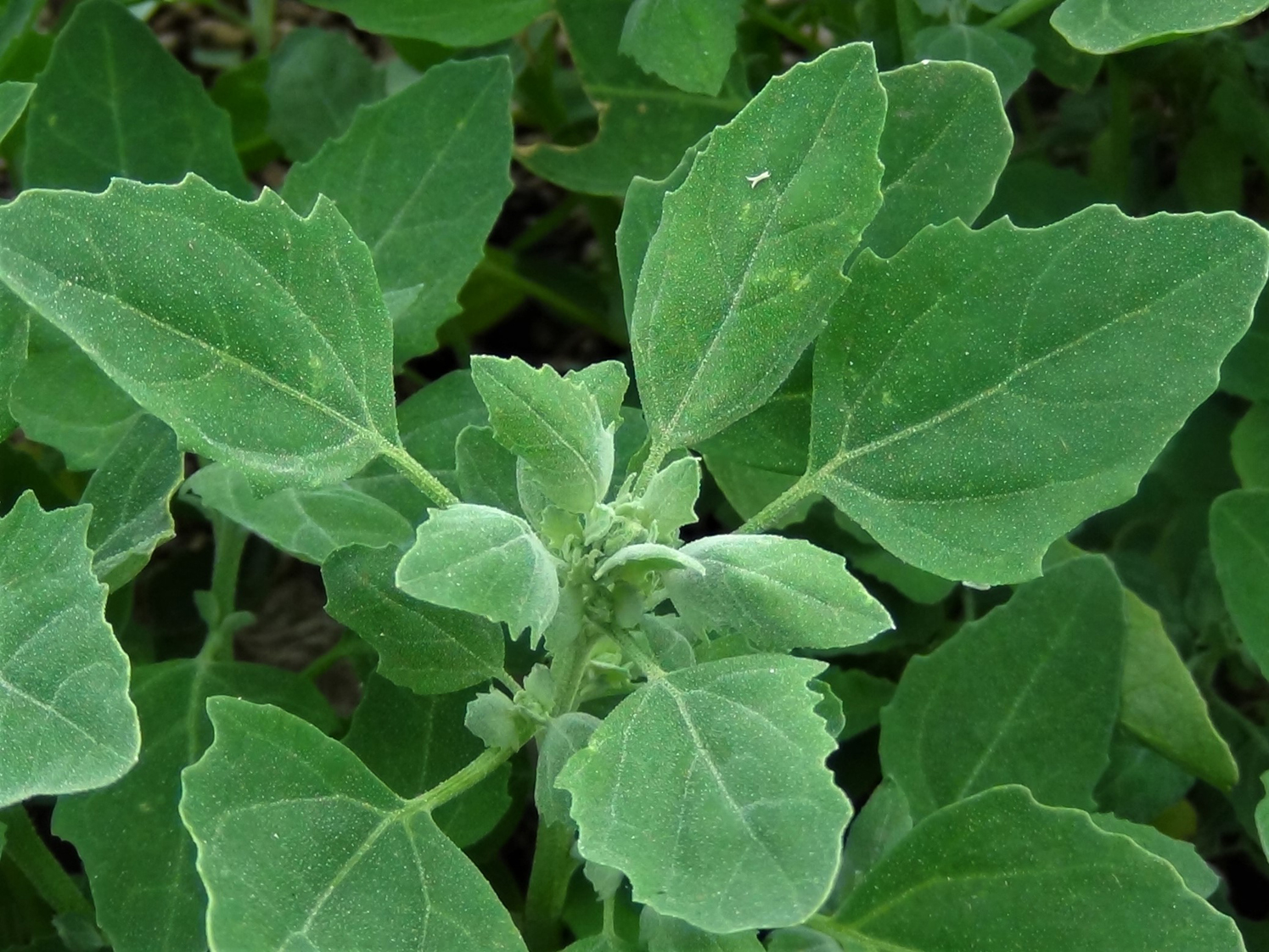 |
Kilic, O., 2013. Essential oil compounds of three Centaurea L. taxa from Turkey and their chemotaxonomy. Journal of Medicinal Plants Research 17 (7), 1344–1350.
|
| Chenopodium ambrosoides L. |
Jangli Javein, Ganhar |
Amaranthaceae |
Herb |
Terpinyl acetate, p-Cymene, Terpinene ascaridole, Neral,
Geraniol (Koba et al., 2009)
|
Worms. The root extract combined with sugary water is given in the form of 2 spoonfuls daily at bed time to cure typhoid. |
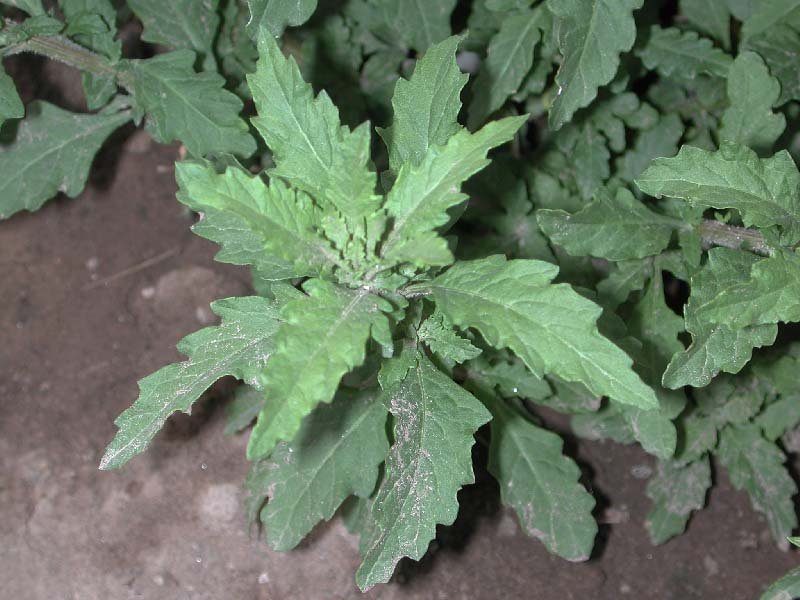 |
Koba, K., Catherine, G., Raynaud, C., Chaumont, J.P., Sanda, K., Laurence, N., 2009. Chemical composition and cytotoxic activity of Chenopodium ambrosioides L. es�sential oil from Togo. Bangladesh Journal of Scientific and Industrial Research 44, 435–440. |
| Chenopodium botrys L. |
Kulkuli akh |
Amaranthaceae |
Herb |
Elemol acetat, Seline-11-en-4α-ol, Selina-3,11-dien-6α-ol,
Elemol, α-Eudesmol acetat, α-Chenopodiol, Botrydiol (Andov
et al., 2014)
|
Parasitic worms, Constipation, Stomach & liver ailments, Asthma, Vomiting, Weakness. |
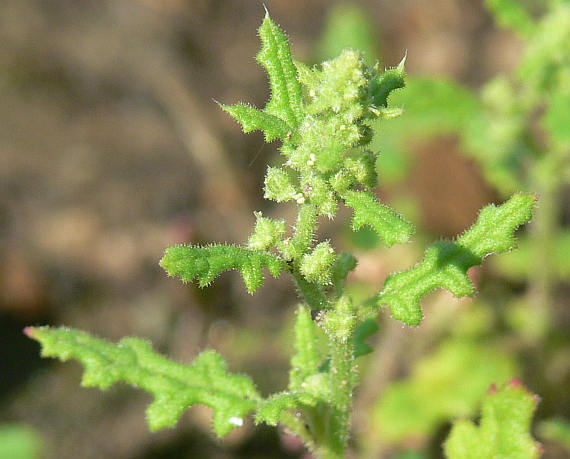 |
Andov, L.A., Karapandzova, M., Cvetkovikj, I., Stefkov, G., Kulevanova, S., 2014. Chemical composition of Chenopodium botrys L. (Chenopodiaceae) essential oil. Macedonian Pharmaceutical Bulletin 60, 45–51.
|
| Cichorium intybus L. |
Handi Posh |
Asteraceae |
Herb |
Tannins, Saponins, Flavonoids, Terpenoids, Cardiac glycosides,
Anthocyanins (Shad et al., 2013)
|
Pain, Rheumatism |
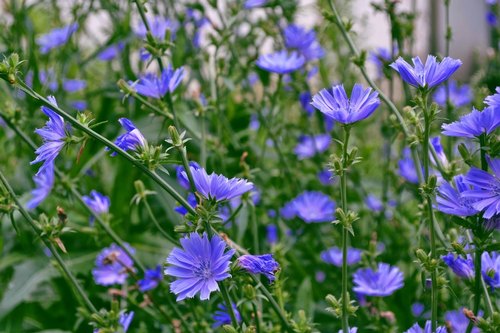 |
Shad, M.A., Nawaz, H., Rehman, T., Ikram, N., 2013. Determination of some biochem�icals, phytochemicals and antioxidant properties of different parts of Cichorium in�tybus L.: A comparative study. The Journal of Animal and Plant Sciences 23, 1060–1066. |
| Codonopsis ovata Benth. |
Kashmir Bonnet Bellflower |
Campanulaceae |
Herb |
Column chromatography yielded five compounds: taraxerol acetate, apigenin, luteolin, apigenin 7-0-glucoside and luteolin-7-0-glucoside. |
have been used as traditional Chinese medicines since the Qing Dynasty, where they were claimed for strengthening the spleen and tonifying the lung, as well as
nourishing blood and engendering liquid.
|
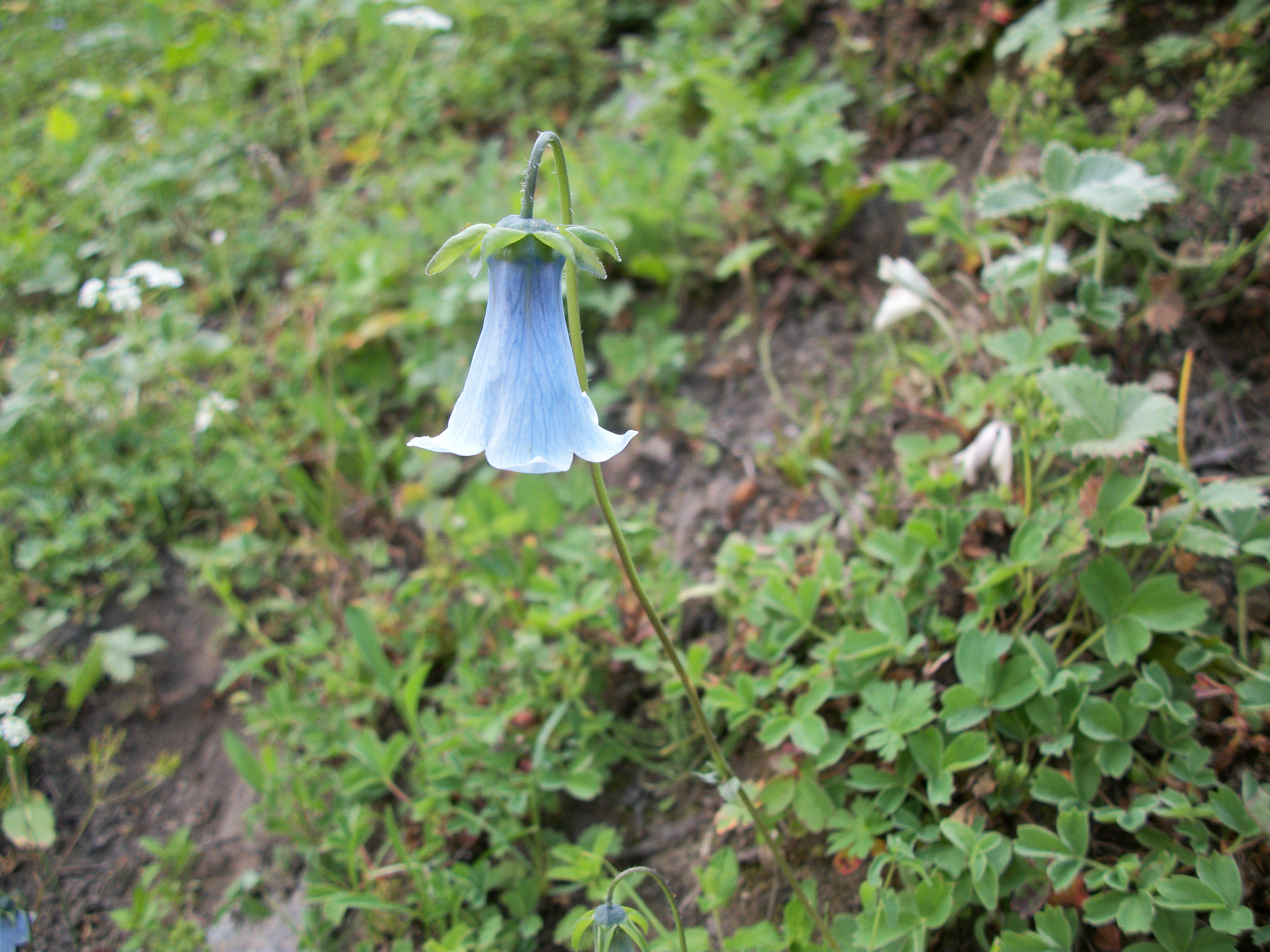 |
Varma, N. and Tandon, J.S., 1989. Constituents of Codonopsis ovata. International Journal of Crude Drug Research, 27(2), pp.105-108. Gao, S.M., Liu, J.S., Wang, M., Cao, T.T., Qi, Y.D., Zhang, B.G., Sun, X.B., Liu, H.T. and Xiao, P.G., 2018. Traditional uses, phytochemistry, pharmacology and toxicology of Codonopsis: A review. Journal of ethnopharmacology, 219, pp.50-70. |
| Codonopsis rotundifolia Benth. |
Tunde Jaeid |
Campanulaceae |
Herb |
Cordifoliketone A, Cordifoliketone B, Coniferaldehyde,
Sinapinaldehyde, Coniferoside, Isoconiferin, Nervolan B-C,
Dillapiole (He et al., 2015)
|
Asthma, General weakness. |
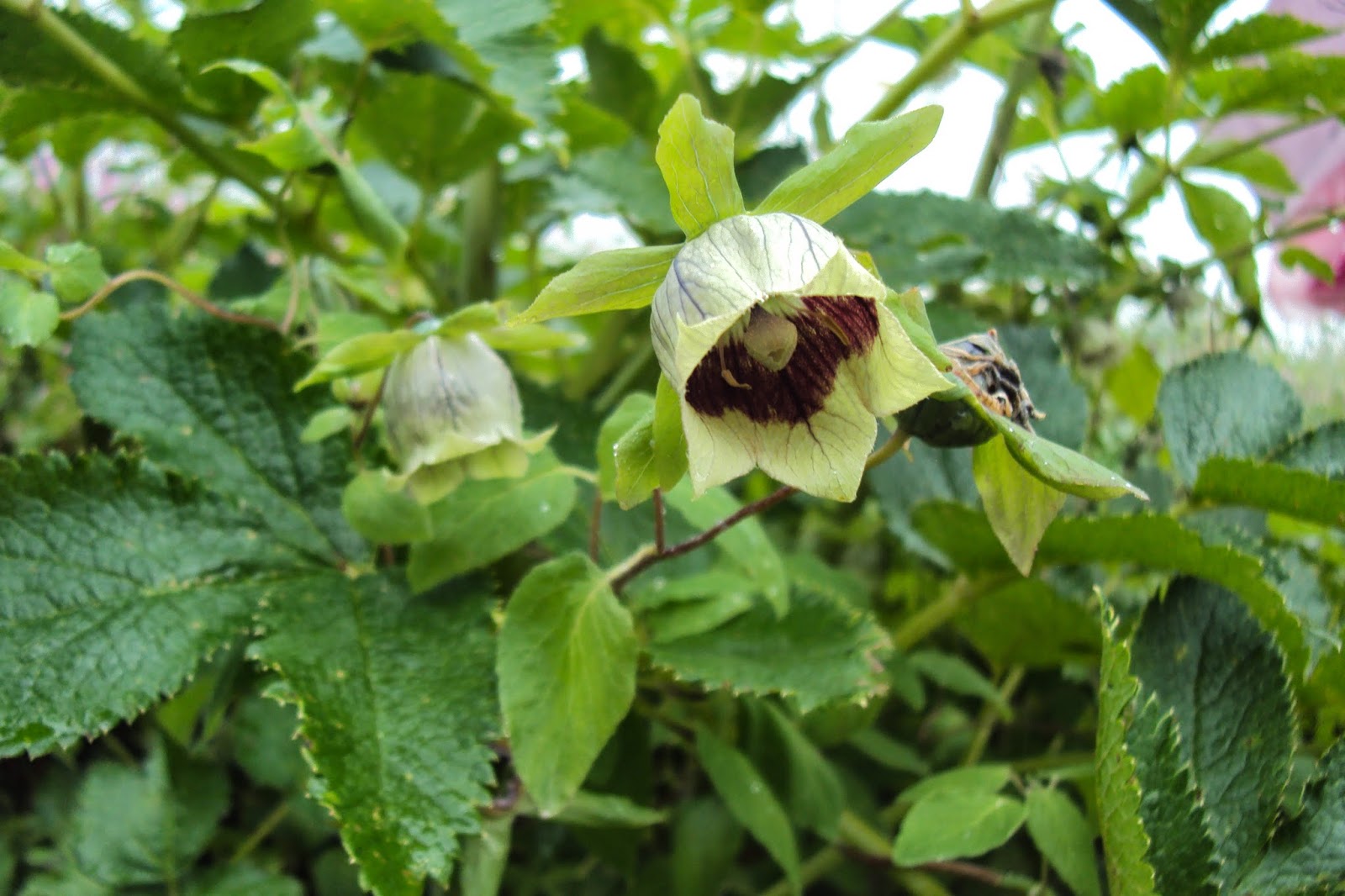 |
He, J.Y., Ma, N., Zhu, S., Komatsu, K., Li, Z.Y., Fu, W.M., 2015. The genus Codonopsis (Campanulaceae): A review of phytochemistry: bioactivity and quality control. Journal of Natural Medicines 69, 1–21. |
| Colchicum luteum Baker |
Meadow Saffron |
Colchicaceae |
Herb |
0.94% and 70% of total alkaloids, the major being colchicine 0.40% and 0.20% respectively. Colchicine analogs—decteyl thiocolchicine (DTC), decetylmethylcolchicine (DMC) and trimethylcolchicinic. |
cytotoxic, phytotoxic, insecticidal activities |
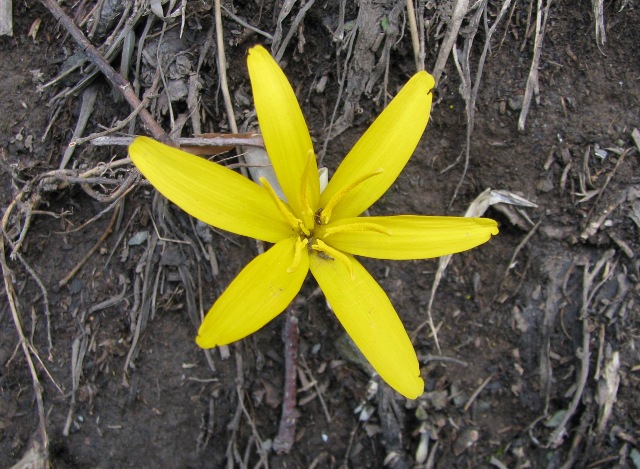 |
Khan, H., Tariq, S.A. and Khan, M.A., 2011. Biological and phytochemical studies on corms of Colchicum luteum Baker. Journal of Medicinal plants research, 5(32), pp.7031-7035. |
| Conium maculatum L. |
Mohar gasse, Mohar kuch, Faki fadyani |
Apiaceae |
Herb |
Coniine, α-Pinene, Camphene, Limonen, Linalool, Camphene,
Limonene, Fenchyl acetate, Sabinene, Myrcene (Rastakhiz et al.,
2015)
|
Nervous problems, Cancer |
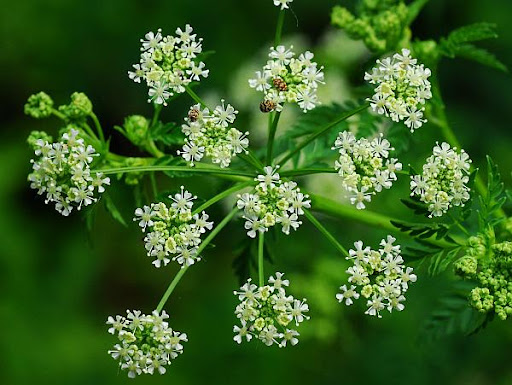 |
Rastakhiz, N., Azar, P.A., Tehrani, M.S., Moradalizadeh, M., Larijani, K., 2015. Chemical constituents comparison of essential oils of aerial parts of Conium maculatum L. growing wild in Iran by hydrodistillation, microwave assisted hydro-distillation and solid phase microextraction methods. International Journal of Life Sciences 9, 48–50. |
| Convolvulus arvensis |
Field Bindweed |
Convolvulaceae |
Climber |
Phytochemical studies showed that Convolvulus arvensis L. contained alkaloids, phenolic compounds, flavonoids, carbohydrates, sugars, mucilage, sterols, resin. tannins, unsaturated sterols/triterpenes, lactones and proteins |
Cytotoxic effect, Antioxidant effect, Vasodilating effect and Antidiarrhoeal effect. |
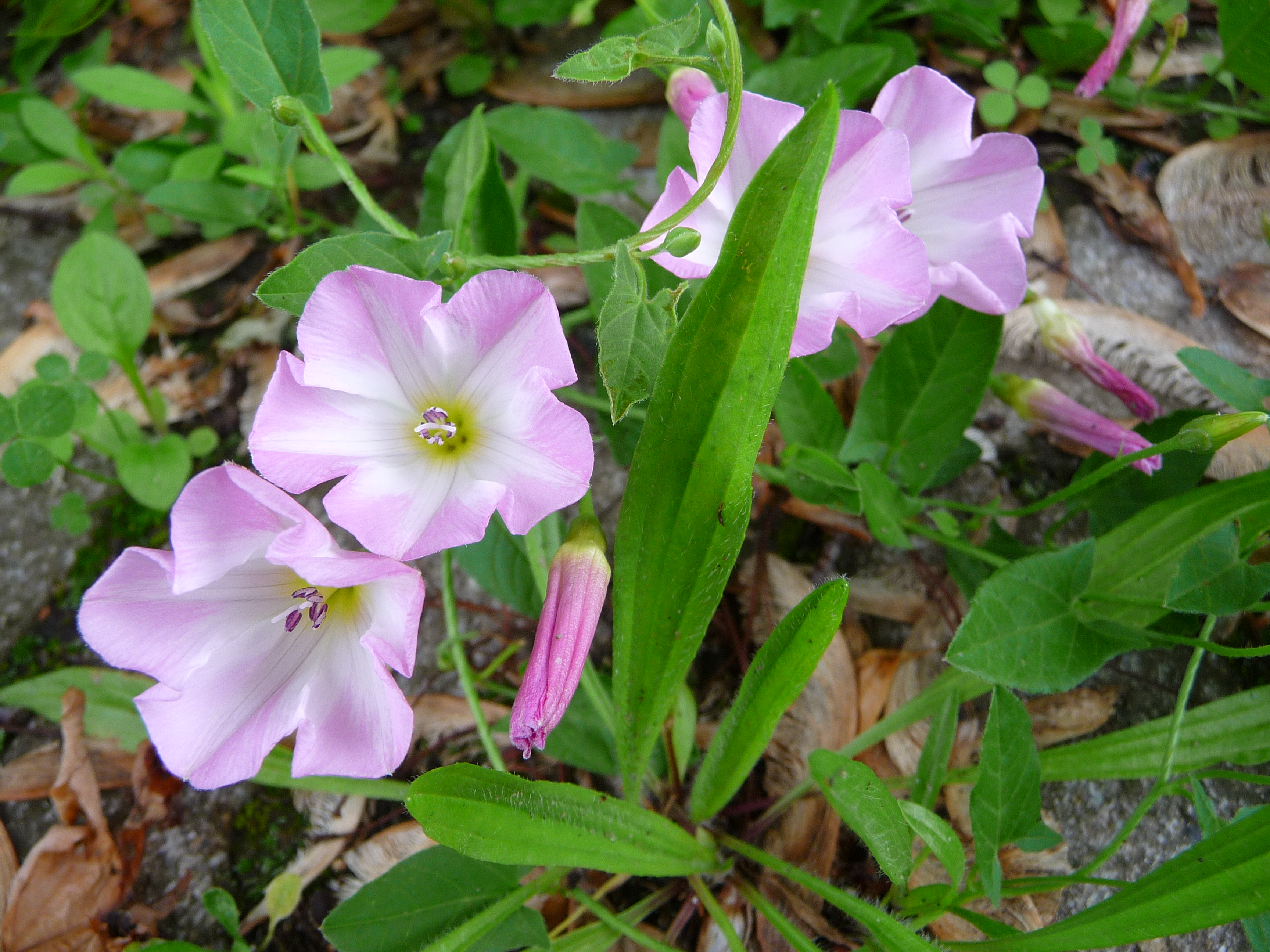 |
Al-Snafi, A.E., 2016. The chemical constituents and pharmacological effects of Convolvulus arvensis and Convolvulus scammonia-A review. IOSR Journal of Pharmacy, 6(6), pp.64-75. |
| Coriandrum sativum L. |
Danival |
Apiaceae |
Herb |
decenal, decanal, decen-1-ol and n-decanol. Other constituents present in fairly good amounts are tridecen-1-al , dodecenal, dodecanal, undecanol, and undecanal |
The essential oil of C. sativum showed antimicrobial activity against both Gram positive and Gram negative bacteria and therefore it can be used as a herbal medicine. |
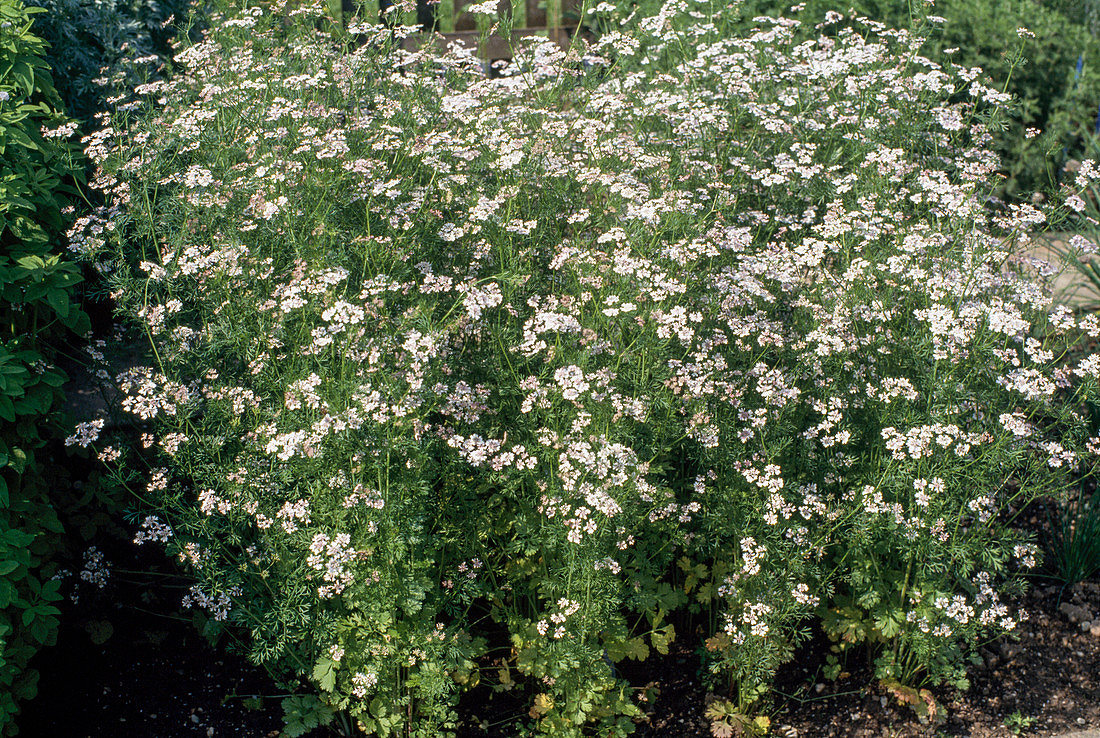 |
Matasyoh, J.C., Maiyo, Z.C., Ngure, R.M. and Chepkorir, R., 2009. Chemical composition and antimicrobial activity of the essential oil of Coriandrum sativum. Food Chemistry, 113(2), pp.526-529. |
| Corydalis cashmeriana Royle |
Kashmir Corydalis |
Fumariaceae |
Herb |
|
Roots are used as tonic, diuretic and antiperiodic. The juice of plant suppresses urination. It is also prescribed in syphilitic and cutaneous affections. |
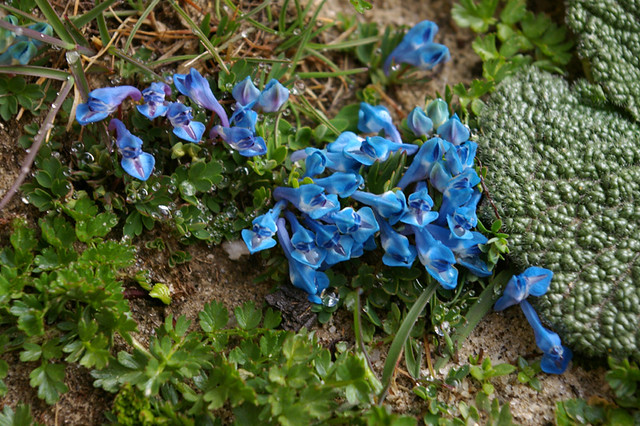 |
Sharma, V., Sharma, B.L. and Bharati, K.A., ETHNOBOTANICAL NOTES ON ALPINE MEDICINAL HERBS OF KEDARNATH RANGE OF GARHWAL HIMALAYAS. |
| Corydalis diphylla |
Two-Leaved Corydalis |
Fumariaceae |
Herb |
|
Curic for Opthalmic disease. |
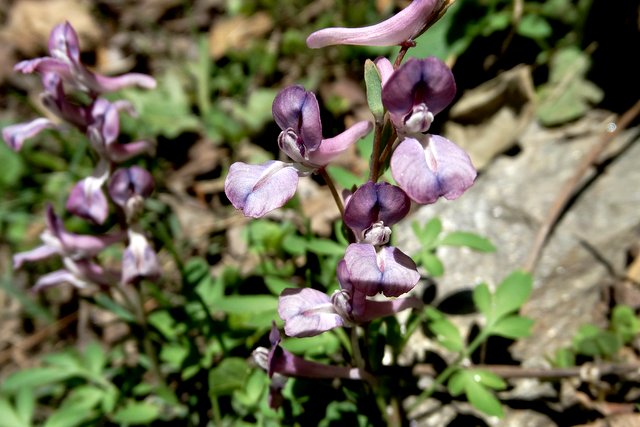 |
Hussain, F., Islam, M. and Zaman, A., 2006. Ethnobotanical profile of plants of Shawar valley, district Swat, Pakistan. Int J Biol Biotechnol, 3(2), pp.301-7. |
| Corydalis govianiana Wall. |
Sangi-harb |
Fumariaceae |
Herb |
|
Decoction of aerial portion is administered to treat whooping cough, respiratory disorders, chest infections, and asthma. |
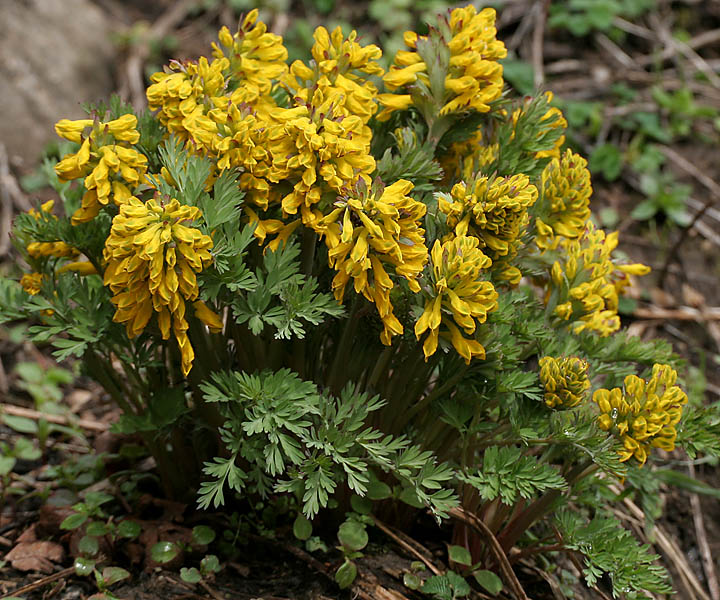 |
Hussain, F., Islam, M. and Zaman, A., 2006. Ethnobotanical profile of plants of Shawar valley, district Swat, Pakistan. Int J Biol Biotechnol, 3(2), pp.301-7. |
| Corydalis thyrsiflora |
Thyrse Corydalis |
Fumariaceae |
Herb |
|
|
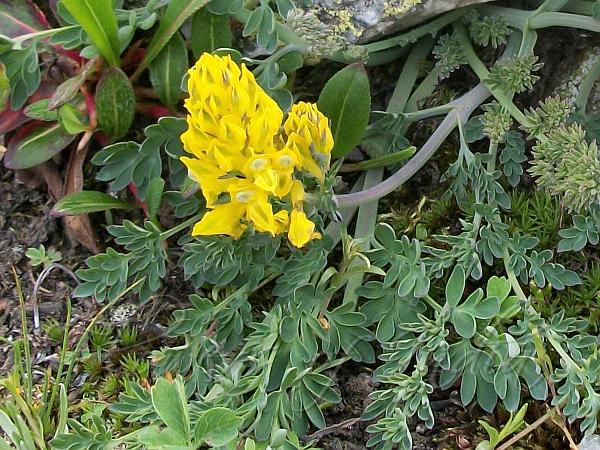 |
Bhadrecha, P., Kumar, V. and Kumar, M., 2017. Medicinal plant growing under sub-optimal conditions in trans-himalaya region at high altitude. Def Life Sci J, 2, pp.37-45. |
| Cuscuta europaea L. |
Kukili Pot |
Convolvulaceae |
Climber |
Chlorogenic acid, Quercetin-3-O-glucoside, Kaempferol-3-O-glucoside |
Plant sap is given approximately half teaspoonful twice a day, for a week as carminative. Plant extract is applied externally on affected area, twice a day for 14 to 28 days to treat psoriasis |
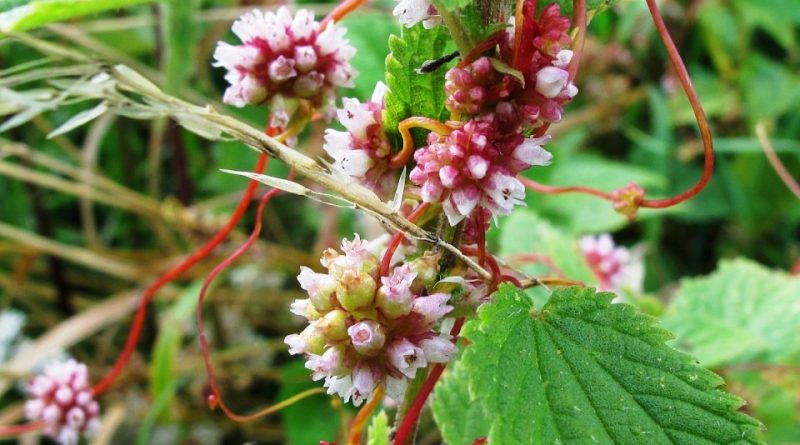 |
Ahmad, A., Tandon, S., Xuan, T.D. and Nooreen, Z., 2017. A Review on Phytoconstituents and Biological activities of Cuscuta species. Biomedicine & Pharmacotherapy, 92, pp.772-795. |
| Cuscuta reflexa Roxb. |
Kukili pot, Gili Pot, Janeo-bal |
Convolvulaceae |
Climber |
The prevailing compounds were lauric acid (2.46%), ester compound (0.05%), alkanes (0.05), phenolic compound (0.08%), myristic acid (2.77%), plasticizer compound (4.15%), palmitolic acid (2.27%), palmitic acid (13.97%), diterpene (2.31%), stearic acid (1.68%), mono unsaturated fatty (5.19%), chlorine compound (2.16%), steroid (11.6%), alkaloid (1.78%), triterpenes (3.56%) and amino compound (39.27%). |
A decoction of the whole plant is used to treat jaundice. |
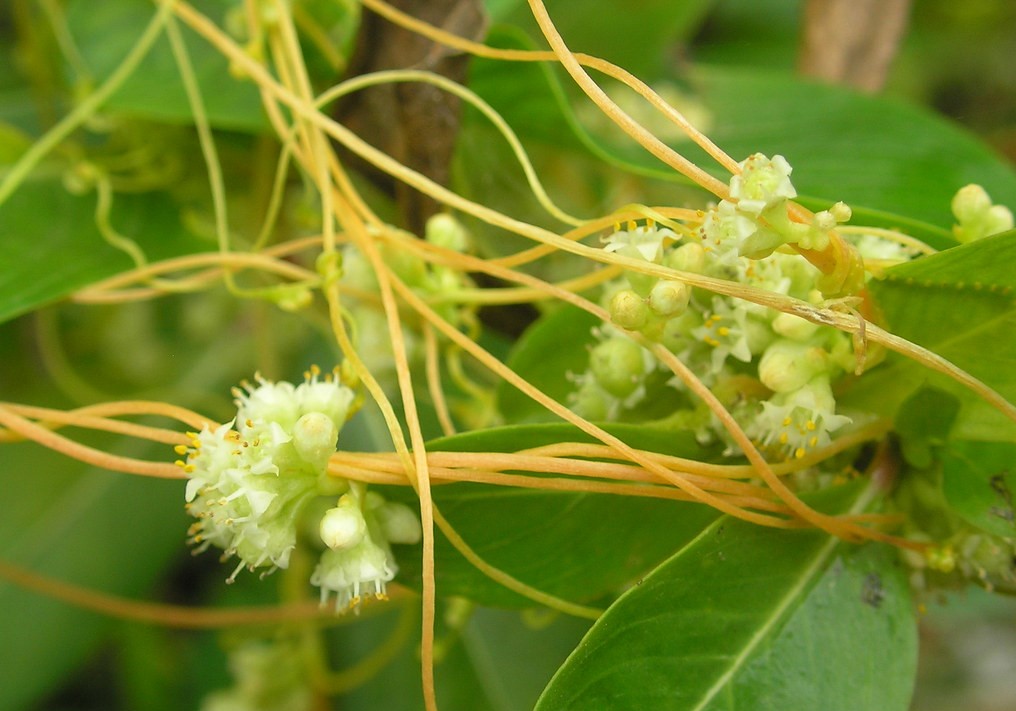 |
Rai, D.K., Sharma, V., Pal, K. and Gupta, R.K., 2016. Comparative phytochemical analysis of Cuscuta reflexa Roxb. Parasite grown on north India by GC-MS. Trop Plant Res, 3(2), pp.428-443.
Raghuvanshi, D., Dhalaria, R., Sharma, A., Kumar, D., Kumar, H., Valis, M., Kuča, K., Verma, R. and Puri, S., 2021. Ethnomedicinal Plants Traditionally Used for the Treatment of Jaundice (Icterus) in Himachal Pradesh in Western Himalaya—A Review. Plants, 10(2), p.232.
|
| Cynoglossum micranthum Poir. |
Krishkeot |
Solanaceae |
Herb |
Cyanustine, Cynaustraline, Hexadecanoic acid, Methyl ester, β
−Sistosterol, α- Stigmastance-3, 6-dione, β −Hydroxy-
stigmasta-4-en-3-one, Daucosterol (Joshi et al., 2016)
|
Infertility, Potency |
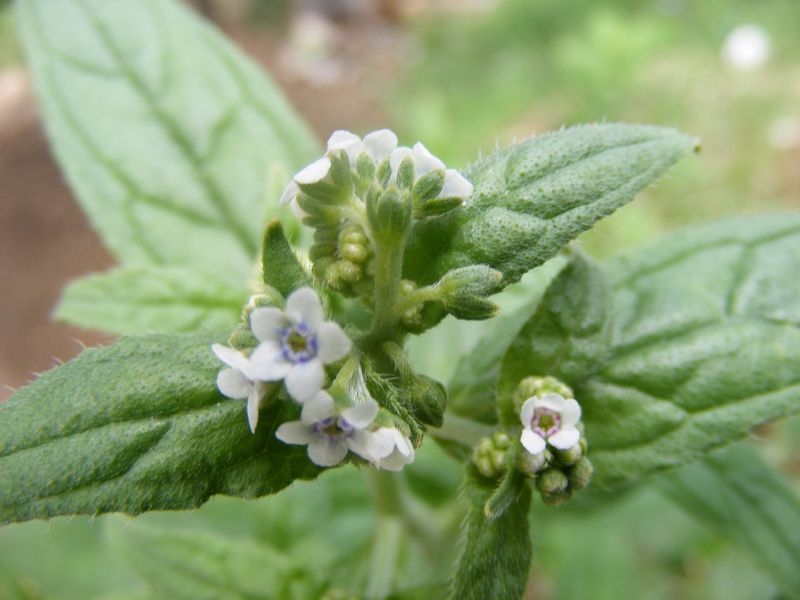 |
Joshi, R.K., Satyal, P., Setzer, W.N., 2016. Himalayan aromatic medicinal plants: a review of their ethnopharmacology, volatile phytochemistry, and biological activities. Medicines 3, 6 |
| Datura stramonium L. |
Datur |
Solanaceae |
Herb |
Hyoscyamine, Atropine, Hyoscine, Meteloidine, Apohyoscine,
Scopolamine (Das et al., 2012)
|
Intestinal problems, Boils, Headache, Skin diseases, Worms, Asthma, Bronchitis, Stomach problem. Seed powder mixed with mustard oil is used externally to cure rheumatism. Seed decoction is used externally to cure the frostbite. Smoke of seeds is given to cure the toothache. Seed infusion is given to the horses as a tonic. |
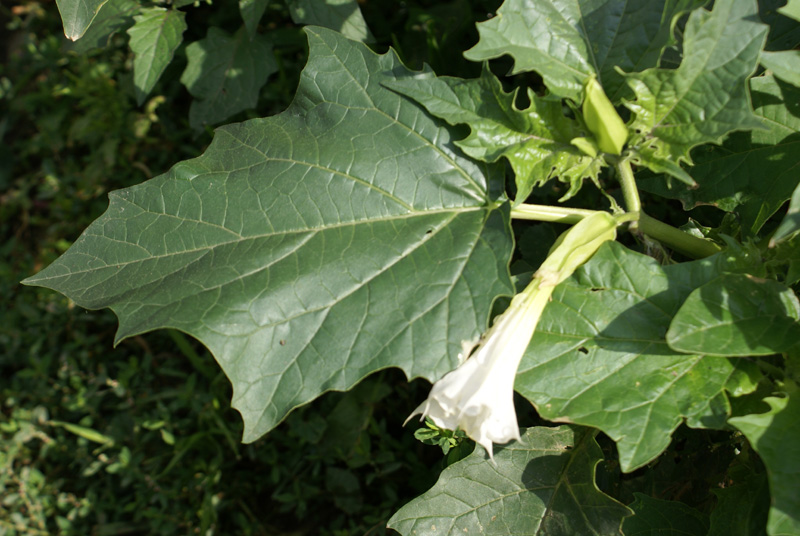 |
Das, S., Kumar, P., Basu, S.P., 2012. Phytoconstituents and therapeutic potentials of Datura stramonium Linn. Journal of Drug Delivery and Therapeutics 14 (2), 4–7. |
| Delphinium cashmirianum Royle. |
Mori |
Ranunculaceae |
Herb |
14-Acetyl-20-ethyl-1,8-dihydroxy-16,18-dimethoxylycoctonine, royleinine along with three more norditerpenoid alkaloids, isotalitazidine, condelphine and senbusine-C . |
Roots are collected when the plant is at the fruiting stage. Dried and crushed roots are given in small quantities with butter-milk to treat liver infections. It is considered to be poisonous, if taken in large quantities. |
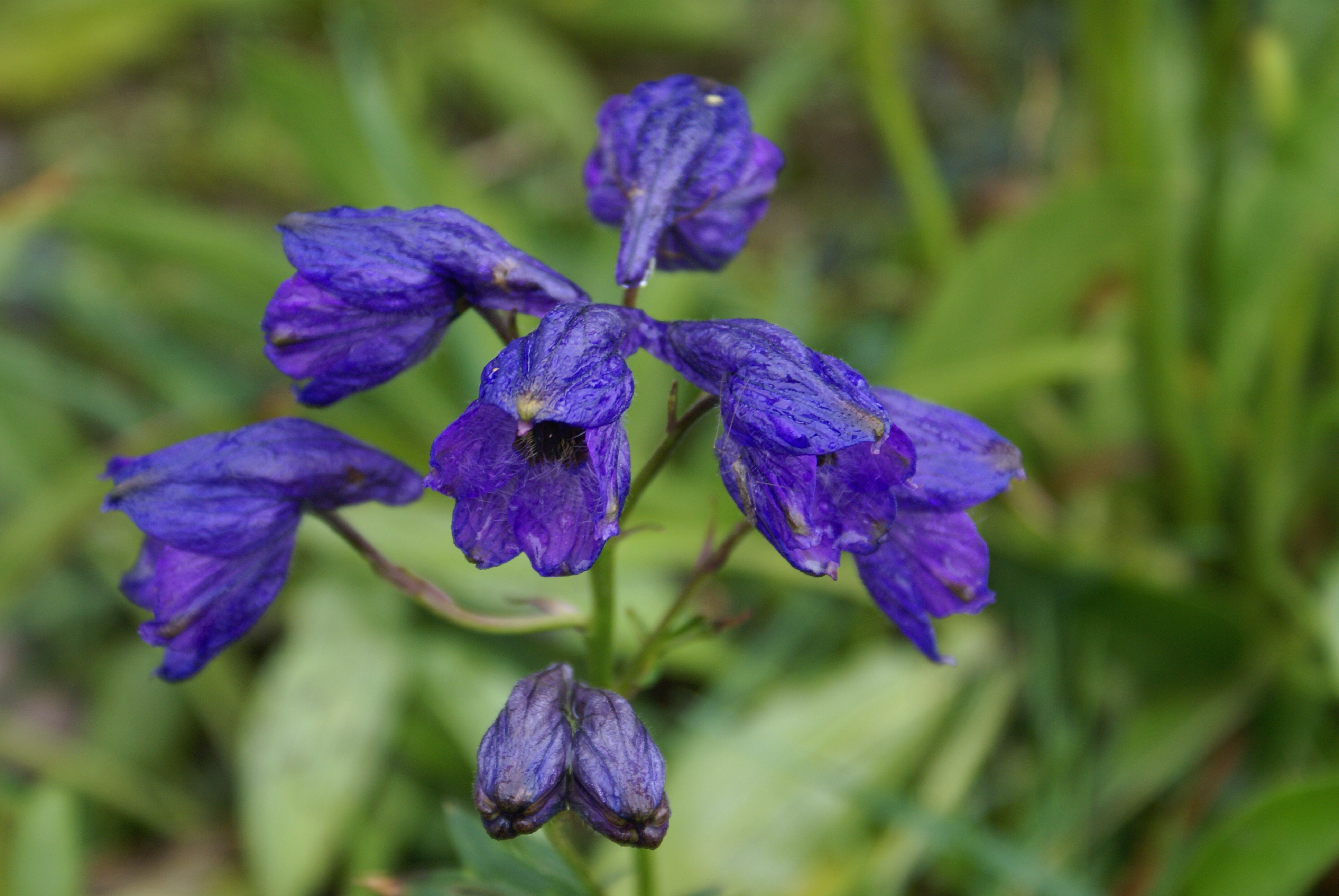 |
Ulubelen, A., Mericli, A.H., Mericli, F., Kolak, U., Arfan, M., Ahmad, M. and Ahmad, H., 2000. Royleinine, a new norditerpenoid alkaloid from Delphinium roylei. Heterocycles, 53(10), pp.2279-2283.
Sharma, P.K. and Singh, V., 1989. Ethnobotanical studies in northwest and Trans-Himalaya. V. Ethno-veterinary medicinal plants used in Jammu and Kashmir, India. Journal of ethnopharmacology, 27(1-2), pp.63-70.
|
| Delphinium denudatum |
Jadwar |
Ranunculaceae |
Herb |
Many bioactive constituents are isolated including flavonoids, triterpenoids, alkaloids, including delphocurarine, staphisagrine, delphine, condelphine, denudatin, delnudine, delnuline, vilmorri anonymouse, vilmorrianone, a diterpenoid alkaloid. |
In Unani medicine, Jadwár is considered a Tiryaqe-sumoom (Antidote to poison), Muqawwi-e-Asab (Nerve tonic), Muqawwi-e-Qalb (Cardiotonic), Mufarreh (Exhilarent), Musakkin (Sedative), Dafe Humma (Antipyretic), Mufatteh (Deobstruent) |
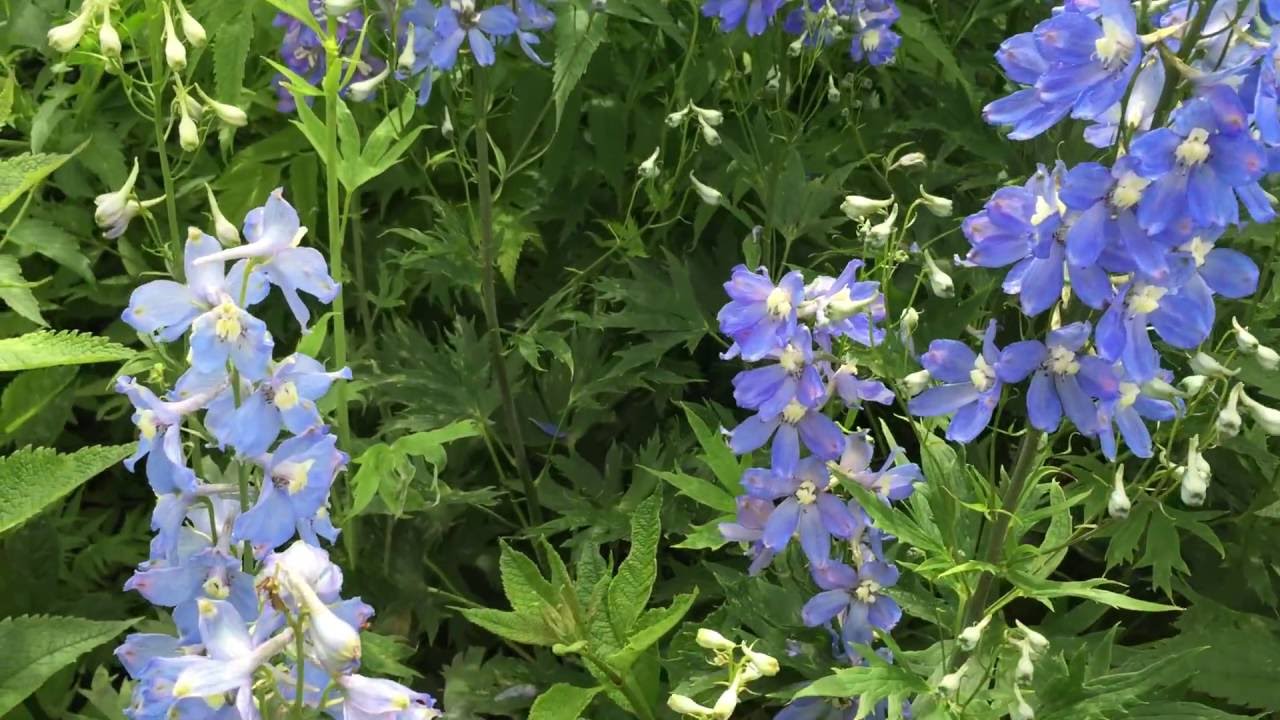 |
Ulubelen, A., Mericli, A.H., Mericli, F., Kolak, U., Arfan, M., Ahmad, M. and Ahmad, H., 2000. Royleinine, a new norditerpenoid alkaloid from Delphinium roylei. Heterocycles, 53(10), pp.2279-2283.Sharma, P.K. and Singh, V., 1989. Ethnobotanical studies in northwest and Trans-Himalaya. V. Ethno-veterinary medicinal plants used in Jammu and Kashmir, India. Journal of ethnopharmacology, 27(1-2), pp.63-70. |
| Didymocarpus pedicellata |
Stone Flower |
Gesneriaceae |
Herb |
The main compounds were α- Humulen (62.15%), Cedroxyde (5.69%), and (-)-α- Panasinsanene (3.70%), Longifolol (2.80%), 1-Octen-3-one (2.32 %), E- Caryophyllene (1.96 %) and α-Cadina-4, 9-diene (1.77%). The main minor compounds was α-Terpineol (0.07 %), α-Cyclogeraniol (0.07%), Acetophenone (0.08%), Phenyl acetaldehyde (0.09 %), Geraniol (0.12%), Myrcene (0.13%) and (Z)-Hex-2-enol (0.83%). |
Didymocarpus pedicellata is used in the treatment of renal diseases particularly kidney stones and bladder Khare |
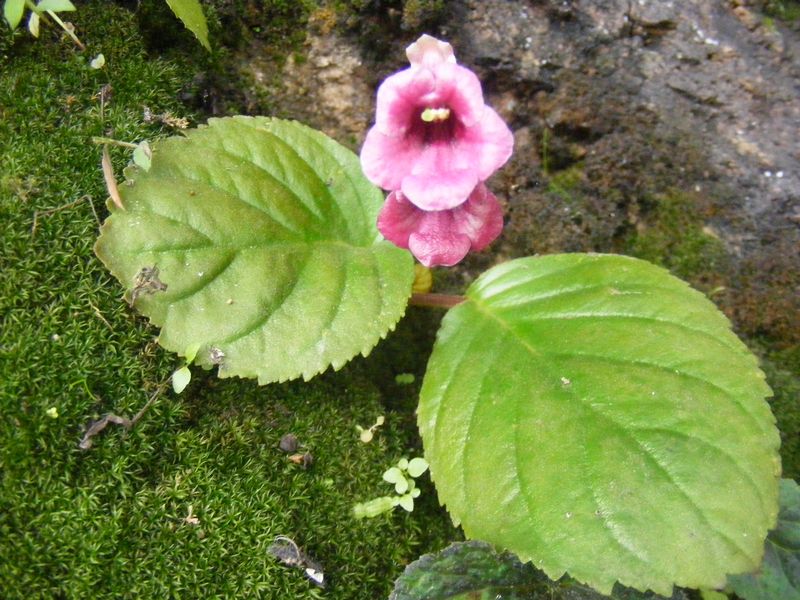 |
Prasad, K. and Chandra, D., 2017. Antioxidant Activity, Phytochemical and Nutrients of Didymocarpus pedicellata r. br from Pithoragarh, Uttarakhand Himalayas, India. J of Pharmacol& Clin Res, 4(3), pp.1-8. |
| Digitalis lanata |
woolly foxglove |
Plantaginaceae |
Herb |
Digitoxigenin, Digitoxin, Digoxigenin, Gluevatromonoside and Digitoxose |
Cardiovascular, cytotoxic, antidiabetic, antioxidant, insecticidal, immunological, hepato, neuro and cardioprotective effects. |
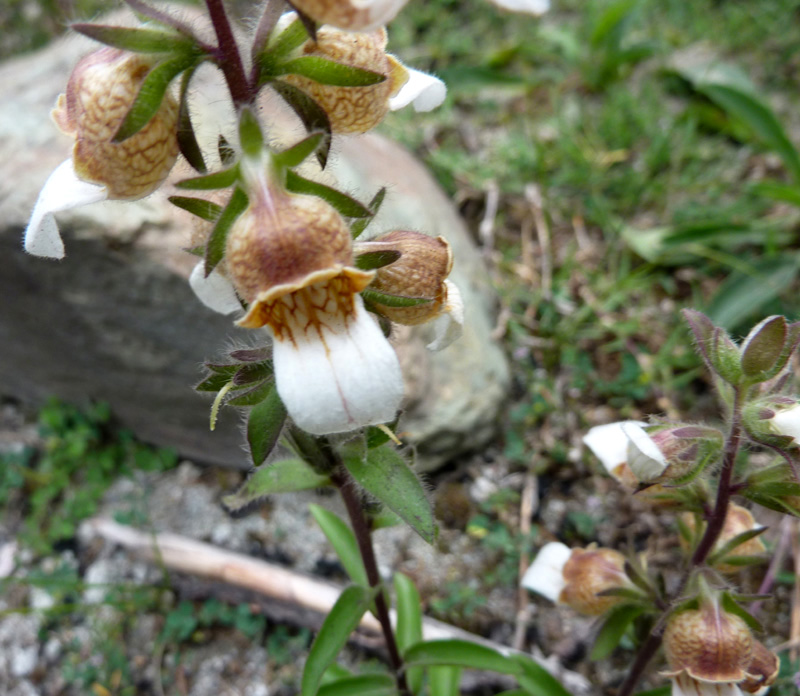 |
Bertol, J.W., Rigotto, C., de Pádua, R.M., Kreis, W., Barardi, C.R.M., Braga, F.C. and Simões, C.M.O., 2011. Antiherpes activity of glucoevatromonoside, a cardenolide isolated from a Brazilian cultivar of Digitalis lanata. Antiviral Research, 92(1), pp.73-80. Jograna, M.B., Patil, D.S. and Kotwal, S.V., 2020. Digitalis species a potent herbal drug: A review on their pharmacognosy and pharmacological activities. Journal of Current Pharma Research, 10(4), pp.3821-3831. |
| Digitalis purpurea |
Foxglove |
Plantaginaceae |
Herb |
HPLCanalysis revealed the presence of digoxin and digitoxin for all immersion frequencies. |
Diuretics Anti-arrhythmic drugs Antihypertensive drugs Vasodilators Anticoagulants. |
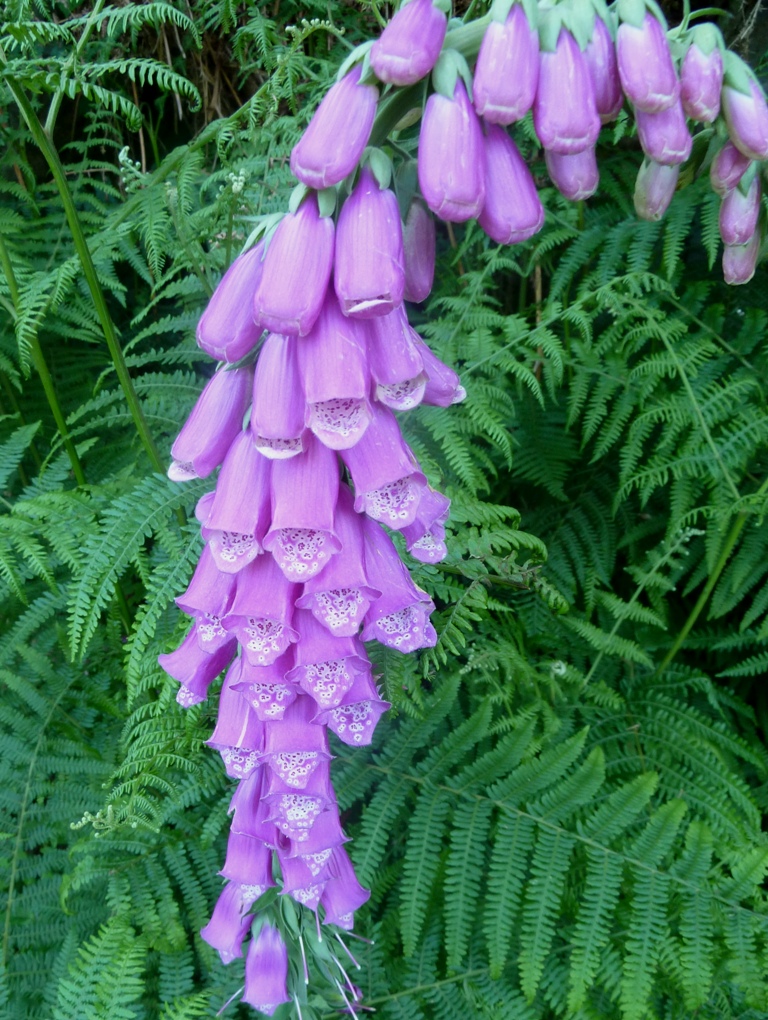 |
Pérez-Alonso, N., Wilken, D., Gerth, A., Jähn, A., Nitzsche, H.M., Kerns, G., Capote-Perez, A. and Jiménez, E., 2009. Cardiotonic glycosides from biomass of Digitalis purpurea L. cultured in temporary immersion systems. Plant Cell, Tissue and Organ Culture (PCTOC), 99(2), pp.151-156. Phillipson, J.D. and Anderson, L.A., 1989. Ethnopharmacology and western medicine. Journal of ethnopharmacology, 25(1), pp.61-72. |
| Dioscorea deltoidea Wall.ex Griseb. |
Krisch, Kraeth |
Dioscoreaceae |
Climber |
Diosgenin (Cortisone, pregnenolone, progesterone), Stigmasterol
(β-sitosterol, campestrol, ergosterol, brassicasterol, delta-7-
stigmasterol and delta-7-avenasterol), Sapogenins (Steroids or
triterpenes) (Dangwal and Chauhan, 2015)
|
Leaf decoction is used as eye drops to treat ophthalmic infections; to sharpen eyesight. Ophthalmic infections, Birth control, Rheumatism, Lice control, Swelling. |
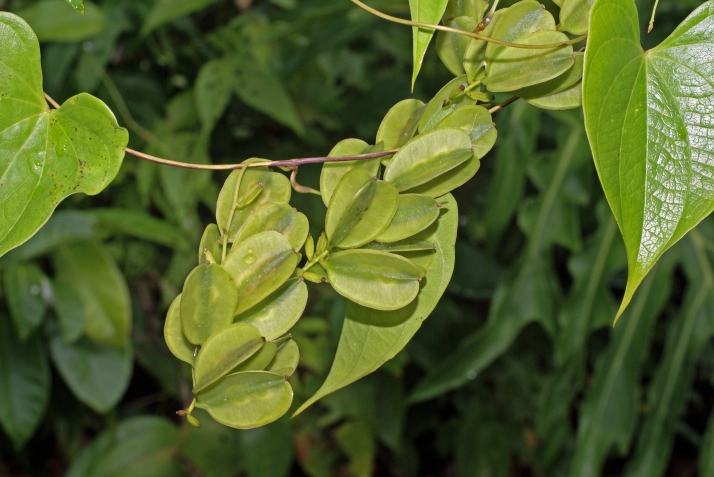 |
Dangwal, L., Chauhan, A.S., 2015. Dioscorea deltoidea Wall. ex Griseb. A highly threatened Himalayan medicinal plant, An overview. International Journal of Pharma and Bio Sciences 6, 452–460.
|
| Dipsacus inermis var. inermis |
Wopal Hakh |
Dipsacaceae |
Herb |
Dipsacol, Triacontan-3-one, 8-Methyldotriacontan-7-ol (Zhao
and Shi, 2011)
|
Cough, Swelling, Body ache, Sore throat, Pain |
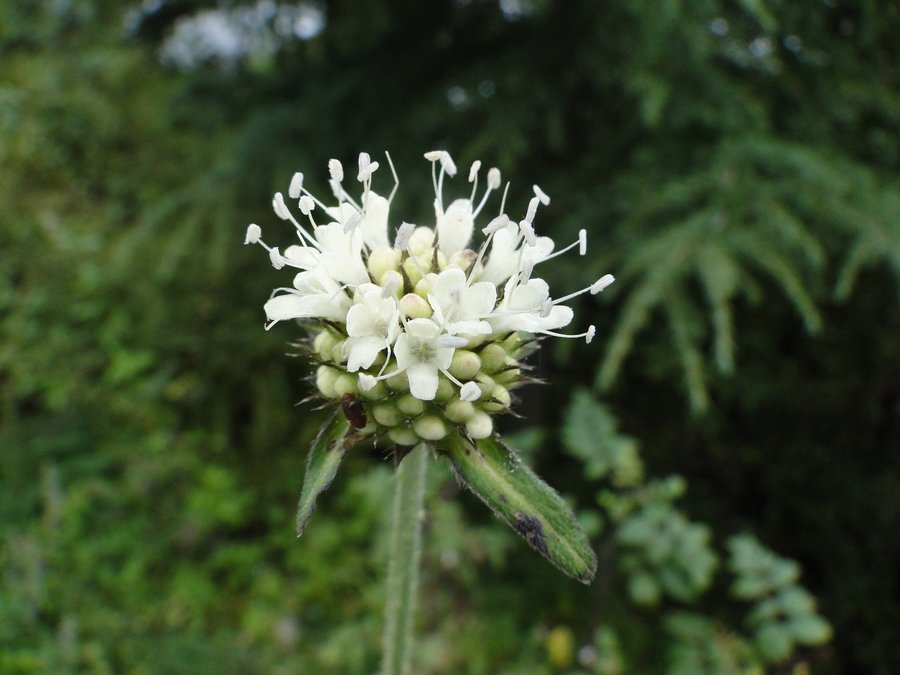 |
Zhao, Y.M., Shi, Y.P., 2011. Phytochemicals and biological activities of Dipsacus species. Chemistry and Biodiversity 8, 414–430.
|
| Dracocephalum heterophyllum Benth. |
Zinzer, Zypsi, Jimthiglae, Zimthigle |
Lamiaceae |
Herb |
Citronellol, Cineole, Germacrene-D, Triterpenes— oleanolic acid,
ursolic acid, pomolic acid, 2α- hydroxyl ursolic acid;
Flavonoids— apigenin-7-O-rutinoside, luteolin, diosmetin;
Phenolic acids- rosmarinic acid, methyl rosmarinate (Zhang
et al., 2008)
|
Eye disinfectant, Hypertension, Cold, Ulcers |
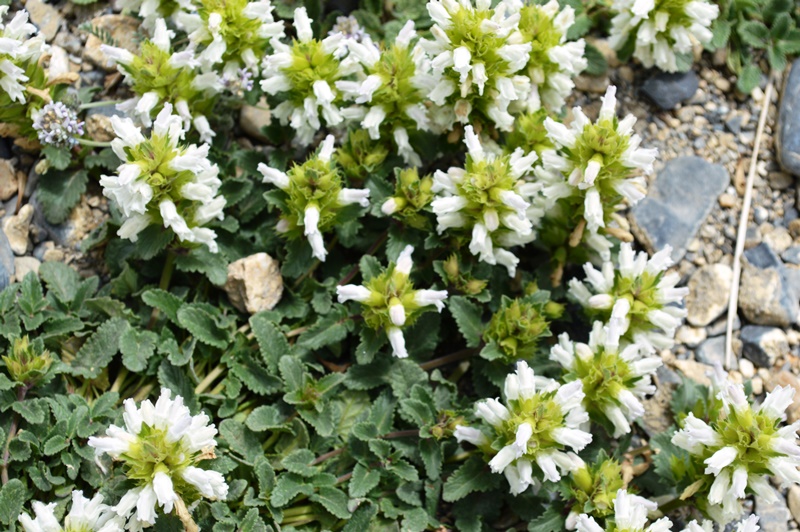 |
Zhang, C., Li, H., Yun, T., Fu, Y., Liu, C., Gong, B., Neng, B., 2008. Chemical composition: antimicrobial and antioxidant activities of the essential oil of Tibetan herbal medicine Dracocephalum heterophyllum Benth. Natural Product Research 22, 1–11. |
| Dracocephalum nutans L. |
Nodding Dragonhead |
Lamiaceae |
Herb |
Germacene, Pinene, Pinocamphone, Sabinene, Caryophyllene
oxide, α —Caryophyllene (Baiseitova et al., 2015)
|
Gastrointestinal and Stomach disorders. |
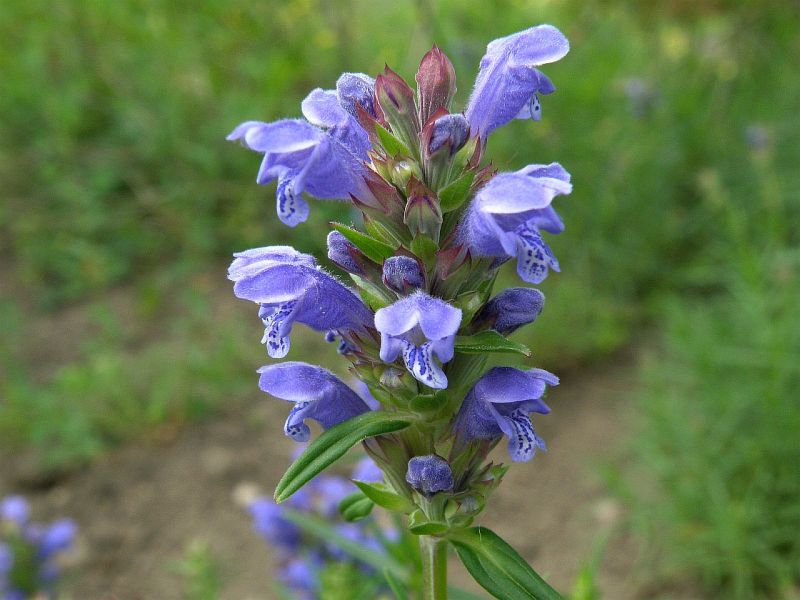 |
. Baiseitova, A.M., Aisa, H., Janar, J., 2015. Chemical constituents of Dracocephalum nutans. International Journal of Biological and Chemical Sciences 8, 90–97 |
| Dysphania ambrosioides (L.) Mosyakin & Clemants |
Jangli Javein, Ganhar |
Amaranthaceae |
Herb |
Terpinyl acetate, p-Cymene, Terpinene ascaridole, Neral,
Geraniol (Koba et al., 2009)
|
Worms. The root extract combined with sugary water is given in the form of 2 spoonfuls daily at bed time to cure typhoid.
α-amylase inhibitory, cytotoxic, leishmanicidal and antimicrobial potentials were exhibited by plant samples. D. ambrosioides revealed significant antioxidant, cytotoxic, antimicrobial and anti-diabetic potentials.
|
.jpg) |
Koba, K., Catherine, G., Raynaud, C., Chaumont, J.P., Sanda, K., Laurence, N., 2009. Chemical composition and cytotoxic activity of Chenopodium ambrosioides L. es�sential oil from Togo. Bangladesh Journal of Scientific and Industrial Research 44, 435–440.
Bezerra, J.W.A., Costa, A.R., de Freitas, M.A., Rodrigues, F.C., de Souza, M.A., da Silva, A.R.P., Dos Santos, A.T.L., Linhares, K.V., Coutinho, H.D.M., de Lima Silva, J.R. and Morais-Braga, M.F.B., 2019. Chemical composition, antimicrobial, modulator and antioxidant activity of essential oil of Dysphania ambrosioides (L.) Mosyakin & Clemants. Comparative immunology, microbiology and infectious diseases, 65 Zohra, T., Ovais, M., Khalil, A.T., Qasim, M., Ayaz, M. and Shinwari, Z.K., 2019. Extraction optimization, total phenolic, flavonoid contents, HPLC-DAD analysis and diverse pharmacological evaluations of Dysphania ambrosioides (L.) Mosyakin & Clemants. Natural product research, 33(1), pp.136-142. pp.58-64.
|
| Dysphania botrys (L.) Mosyakin & Clemants |
Kulkuli akh |
Amaranthaceae |
Herb |
Elemol acetat, Seline-11-en-4α-ol, Selina-3,11-dien-6α-ol,
Elemol, α-Eudesmol acetat, α-Chenopodiol, Botrydiol (Andov
et al., 2014)
|
Parasitic worms, Constipation, Stomach & liver ailments, Asthma, Vomiting, Weakness. |
.jpg) |
Andov, L.A., Karapandzova, M., Cvetkovikj, I., Stefkov, G., Kulevanova, S., 2014. Chemical composition of Chenopodium botrys L. (Chenopodiaceae) essential oil. Macedonian Pharmaceutical Bulletin 60, 45–51.
|
| Elsholtzia densa Benth |
Dense Himalayan Mint |
Lamiaceae |
Herb |
The leaf essential oil of E. densa was characterized by citral (52.2%), geranyl acetate (3.3%) and geraniol (3.1%), whereas the inflorescence essential oil of E. densa was found to be dominated by pinocarvone (51.9%), cispinocamphone (5.2%) and citronellyl acetate (3.4%). |
methanolic extract of Elsholtzia densa effectively prevented the oxidative damage and liver dysfunction in both the acute and chronic models of induced hepatotoxicity in rats |
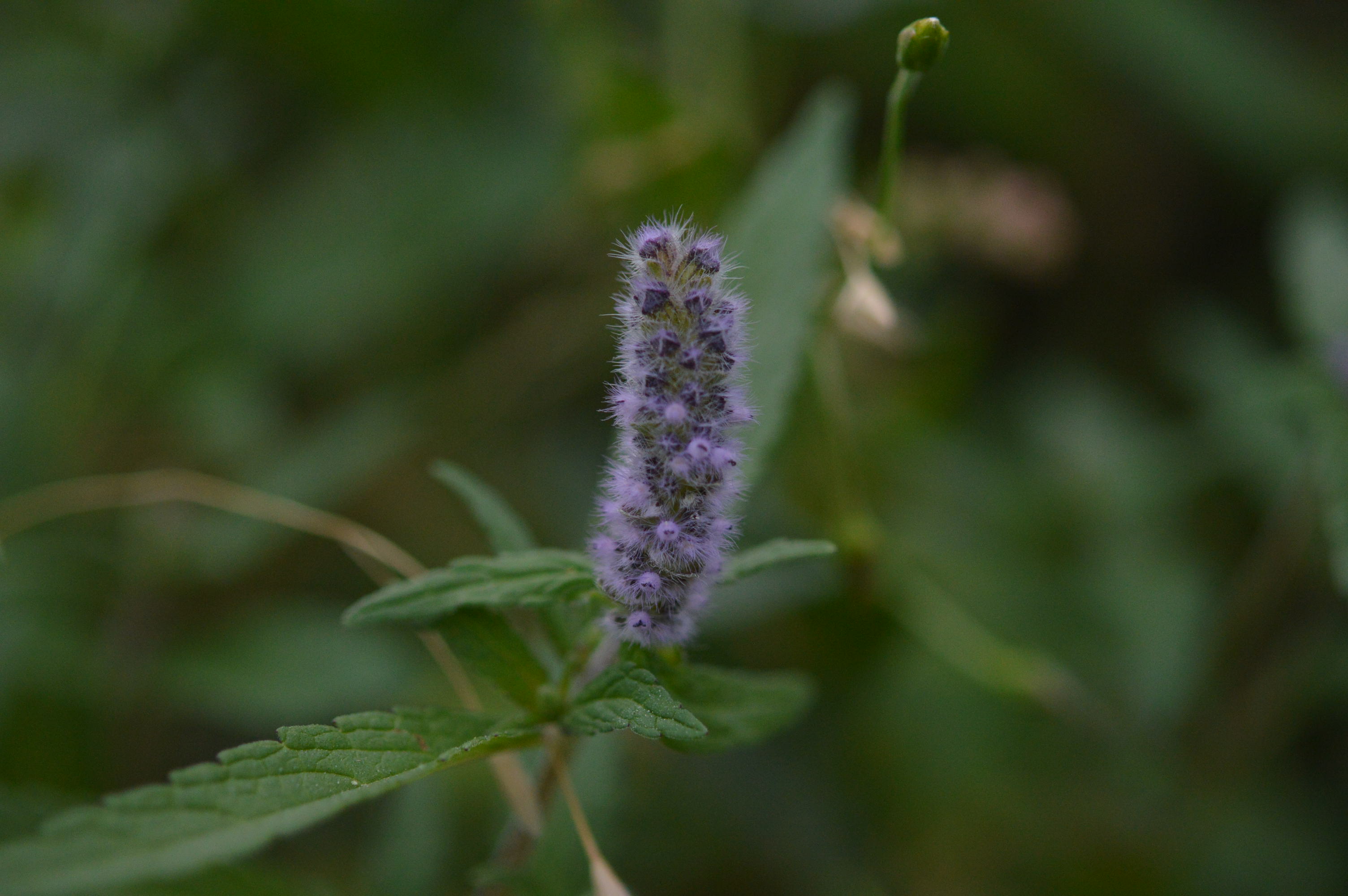 |
Chauhan, A., Venkatesha, K.T., Padalia, R.C., Singh, V.R., Verma, R.S. and Chanotiya, C.S., 2019. Essential oil composition of leaves and inflorescences of Elsholtzia densa Benth. from western Himalaya. Journal of Essential Oil Research, 31(3), pp.217-222. Zargar, O.A., Bashir, R., Ganie, S.A., Masood, A., Zargar, M.A. and Hamid, R., 2018. Hepatoprotective potential of elsholtzia densa against acute and chronic models of liver damage in wistar rats. Drug research, 68(10), pp.567-575. |
| Epilobium laxum |
Lax Willowherb |
Onagraceae |
Herb |
|
|
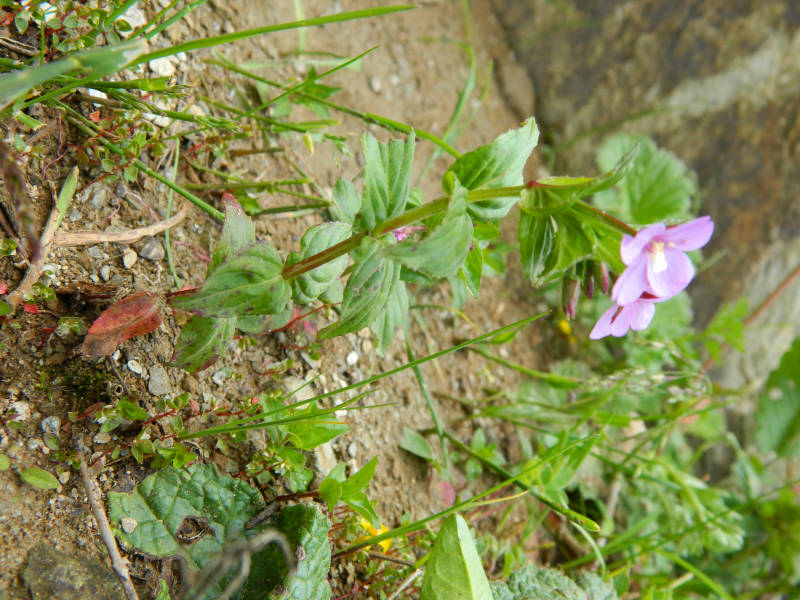 |
|
| Equisetum arvense Linn. |
Bandak, Gandumgund |
Equisetaceae |
Herb |
Equisetum arvense contained alkaloids, carbohydrate, proteins and amino acids, phytosterols, saponins, sterols, ascorbic acid, silicic acid, phenol , tannin, flavonoids, triterpenoids, volatile oils and many other biological active constituents |
The pharmacological studies showed that it possessed antioxidant, anticancer, antimicrobial, smooth muscle relaxant effects of the vessels and ileum, anticonvulsant, sedative, anti-anxiety, dermatological immunological, antinociceptive, anti-inflammatory, antidiabetic, diuretic, inhibition of platelet aggregation, promotion of osteoblastic response, anti-leishmanial, and many other effects |
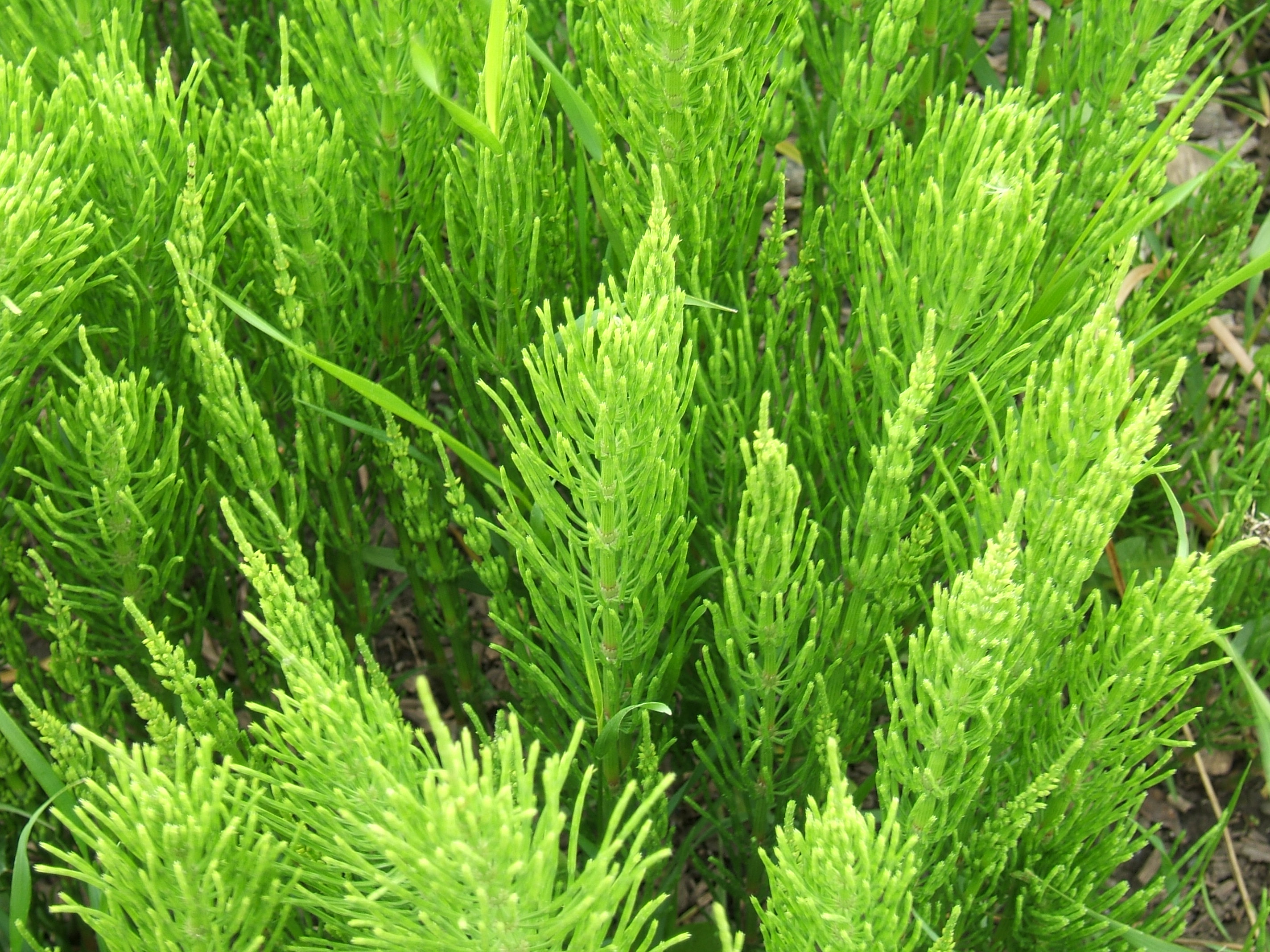 |
Al-Snafi, A.E., 2017. The pharmacology of Equisetum arvense-A review. IOSR Journal of Pharmacy, 7(2), pp.31-42. |
| Eremurus himalaicus |
Foxtail Lily |
Asphodelaceae |
Herb |
Phytochemical investigation of different extracts of Eremurus himalaicus revealed the presence of alkaloids, tannins, saponins, terpenoids, flavonoids, phenolics, and cardiac glycosides as secondary metabolites |
The aqueous extract is most potent in decreasing the blood glucose levels in normal rats and it might be producing this effect by a mechanism independent from the insulin secretion, for example, by the inhibition of endogenous glucose production or by the inhibition of intestinal glucose absorption |
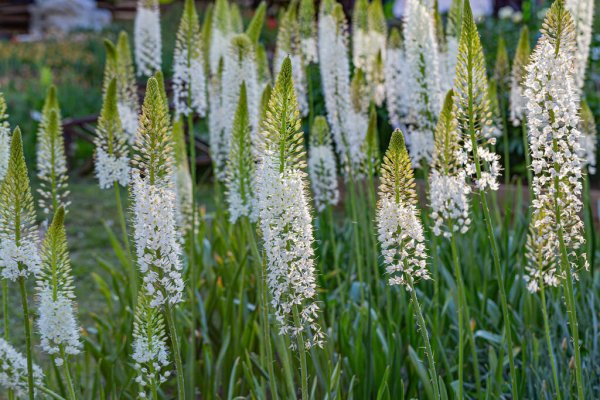 |
Mushtaq, A., Akbar, S., Zargar, M.A., Wali, A.F., Malik, A.H., Dar, M.Y., Hamid, R. and Ganai, B.A., 2014. Phytochemical screening, physicochemical properties, acute toxicity testing and screening of hypoglycaemic activity of extracts of Eremurus himalaicus baker in normoglycaemic Wistar strain albino rats. Biomed research international, 2014. |
| Erigeron canadensis L. |
Shaale-gasse, Shalle-lut |
Asteraceae |
Herb |
Limomene, Camphene, α & β-Pinenes, Caryophyllene
Germacrene D, α-Curcumene (Unnithan et al., 2014)
|
Cough, Fever, Internal injuries, Stomach problems |
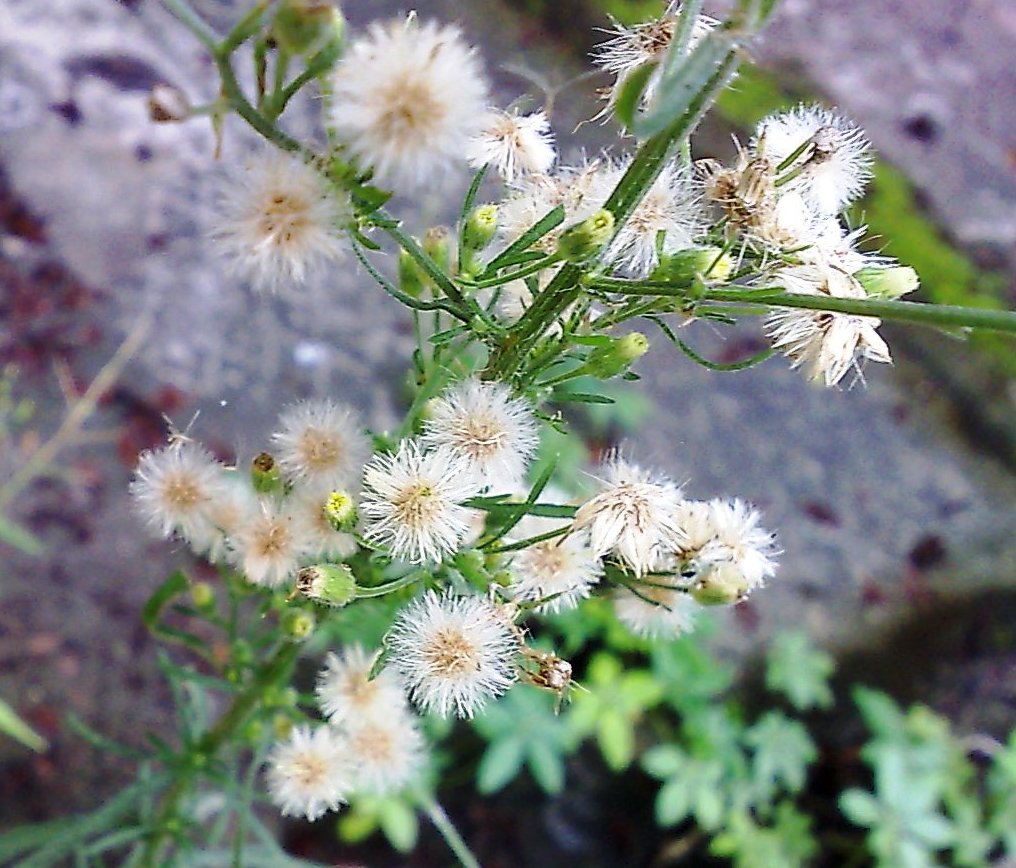 |
Unnithan, C.R., Muuz, M., Woldu, A., Reddy, D.N., Gebremariam, G., Menasbo, B., Hilawie, M., Teklu, T., 2014. Chemical analysis of the essential oil of Erigeron ca�nadensis L. Unique Journal of Pharmaceutical and Biological Sciences 02, 8–10. |
| Euphorbia helioscopia L. |
Gur-sochal |
Euphorbiaceae |
Herb |
Helioscopinolide A & B, Scopoletin, Scoparone, Isoscopoletin,
Licochalone A, Quercelin, 7, 4-dihydroxy-5-methoxy flacanone,
2, 4-dihydroxy-6′-methoxydihydro- chalcone, Pinocembri (Geng
et al., 2012)
|
Euphorbia pilosa is much branch, milky latex bearing tall herb commonly used to treat bronchitis, Purgative, emetic, fistulous sores and asthma-related problems.
Joint problems, Ringworm, Skin eruptions, Warts,
Constipation, Indigestion.
|
 |
Geng, D., Weng, L.J., Han, Y.Y., Yang, X., 2012. Chemical constituents from Euphorbia helioscopia. Advanced Materials Research 396, 1337–1340. |
| Euphorbia wallichii Hook. f. |
Guri-dud, Gur-sochal |
Euphorbiaceae |
Herb |
Wallichanol A & B, Phorbol-13-acetate, Ingenol, Ingenol-3-
palmitate, Ingenol- 20-palmitate, 9,19-Cyclolart-25- en-3b,24(R)-
diol, α-Tocopherolquinone, Methyl gallate, Shikimic acid, Methyl
shikimate, 2,4-Dihydroxy-6-methoxyacetophenone, Quercetin,
Guavinoside C, Dsucrose (Yang et al., 2015)
|
Skin infections, Warts, Digestive problems, Dropsy, Nervous troubles, Asthma, Fistular sores. Latex from green stems applied to treat fungal infection and foot and mouth diseases of the cattle. Purgative and digestive, decoction given in gout juice is used for nerve troubles and dropsy, also applied to warts and skin infections. |
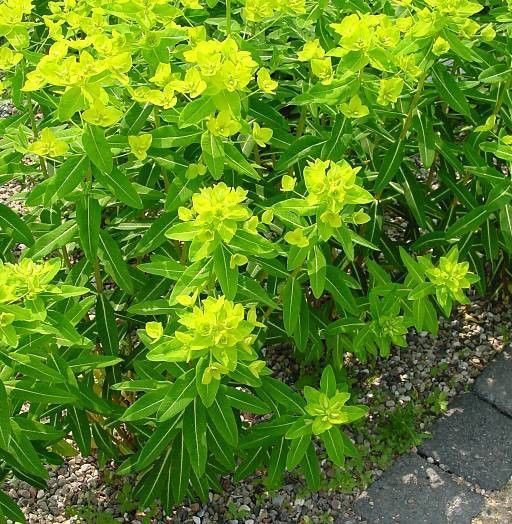 |
Yang, D.S., Peng, W.B., Yang, Y.P., Liu, K.C., Li, X.L., Xiao, W.L., 2015. Chemical con�stituents from Euphorbia wallichii and their biological activities. Journal of Asian Natural Products Research 17, 946–951. |
| Euphrasia officinale Linn. |
Pushi-Kachh |
|
|
|
|
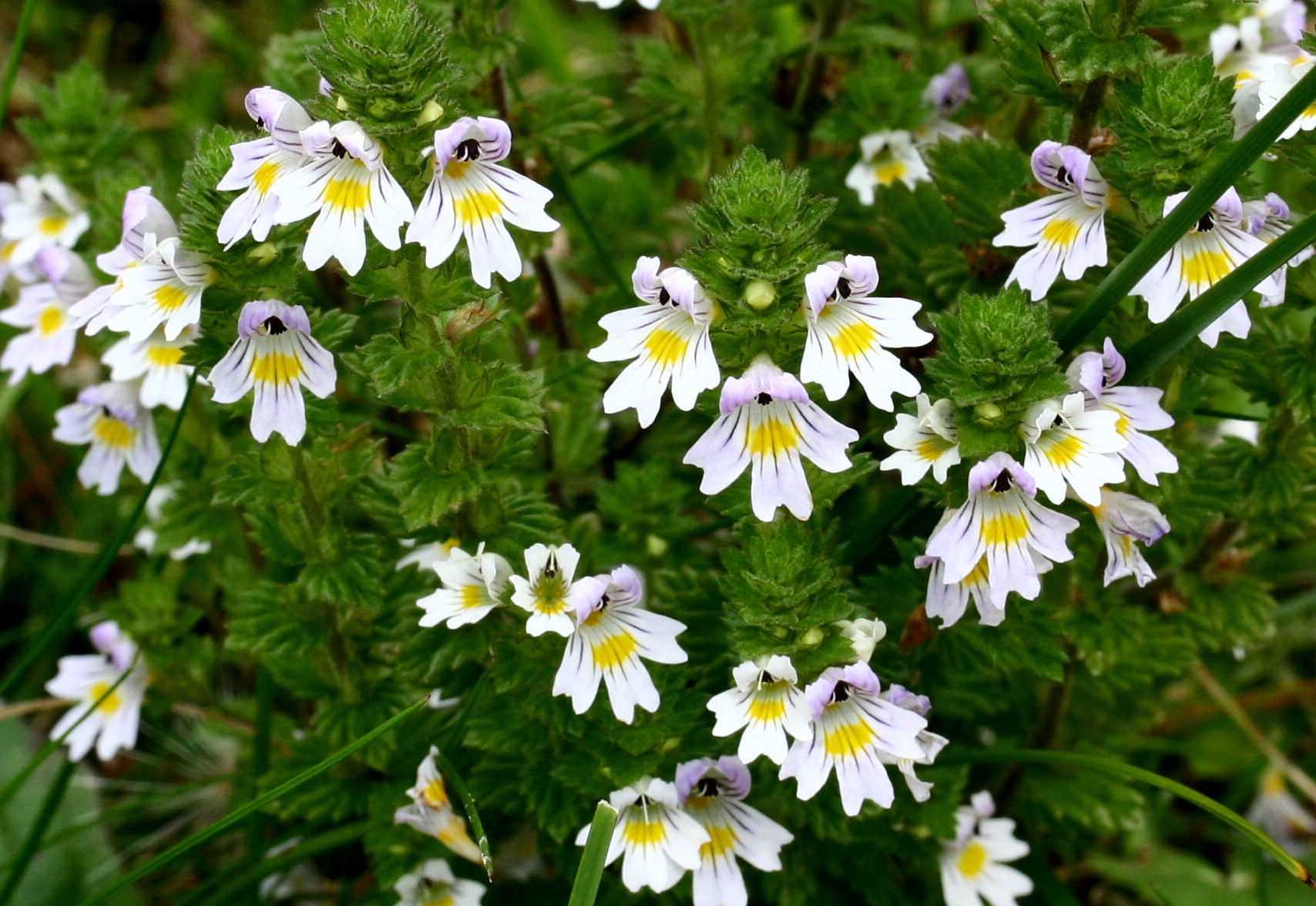 |
|
| Ferula jaeschkeana Vatke |
Sampharu, Hapath kanpoor |
Apiaceae |
Herb |
Limonene (26.0%), p-Cymene, α-Pinene, α-Terpinen-4-ol,
Cubenol, δ-Selinene, Terpin-4-yl acetate, epi-Cubenol, α-
Gurjunene, cis-Ocimene, Isolongifolene, p-Menth-1- β, 4 α-diol
(Sahebkar and Iranshahi, 2011)
|
Gastric problems, Wound healing, Toothache, Bruises, Chest pain |
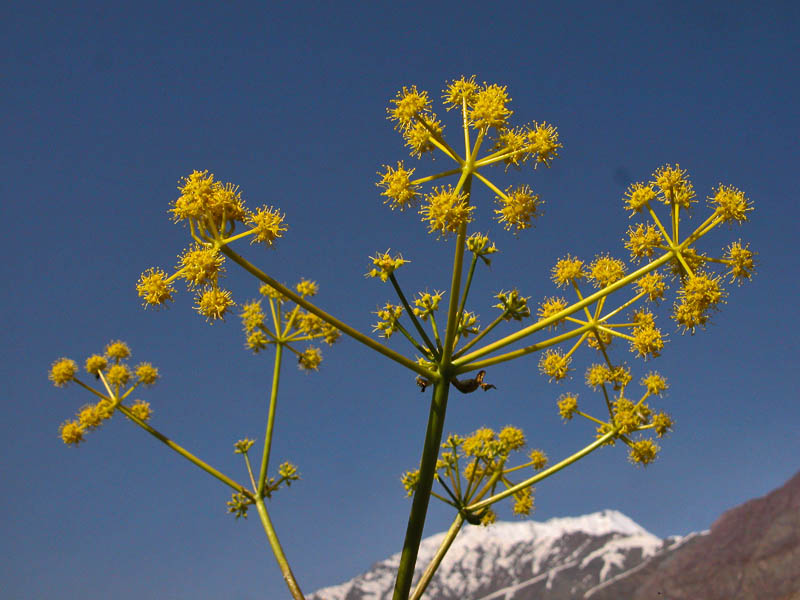 |
Sahebkar, A., Iranshahi, M., 2011. Volatile constituents of the genus Ferula (Apiaceae): A review. Journal of Essential Oil Bearing Plants 14, 504–531. |
| Ficus carica Linn. |
Anjeer, Injeer |
Moraceae |
Tree |
Anthocyanins, Phenolic acids, Flavonoids |
Its fruit, root and leaves are used in the native system of medicine in different disorders such as gastrointestinal (colic, indigestion, loss of appetite and diarrhea), respiratory (sore throats, coughs and bronchial problems), inflammatory and cardiovascular disorders |
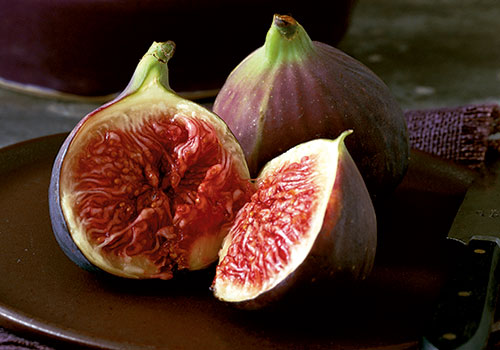 |
Patil Vikas, V., Bhangale, S.C. and Patil, V.R., 2010. Evaluation of anti-pyretic potential of Ficus carica leaves. Evaluation, 2(2), p.010. |
| Filipendula vestita (Wall. ex G. Don.) Maxim. |
Chitpava, Banhara |
Rosaceae |
Shrub |
Methyl salicylate, Salicaldehyde, Santene (Joshi et al., 2016) |
Wound healing |
%20Maxim.,.jpg) |
Joshi, R.K., Satyal, P., Setzer, W.N., 2016. Himalayan aromatic medicinal plants: a review of their ethnopharmacology, volatile phytochemistry, and biological activities. Medicines 3, 6.
|
| Foeniculum vulgare L. |
Badiyan |
Apiaceae |
Herb |
Gas chromatography-mass spectrometry (GCeMS), and 28 components were identified. Trans-anethole (68.53%) and estragole (10.42%) |
The essential oil from fennel seeds, which was rich in trans-anethole, possessed good antibacterial activity against selected food-borne pathogens. |
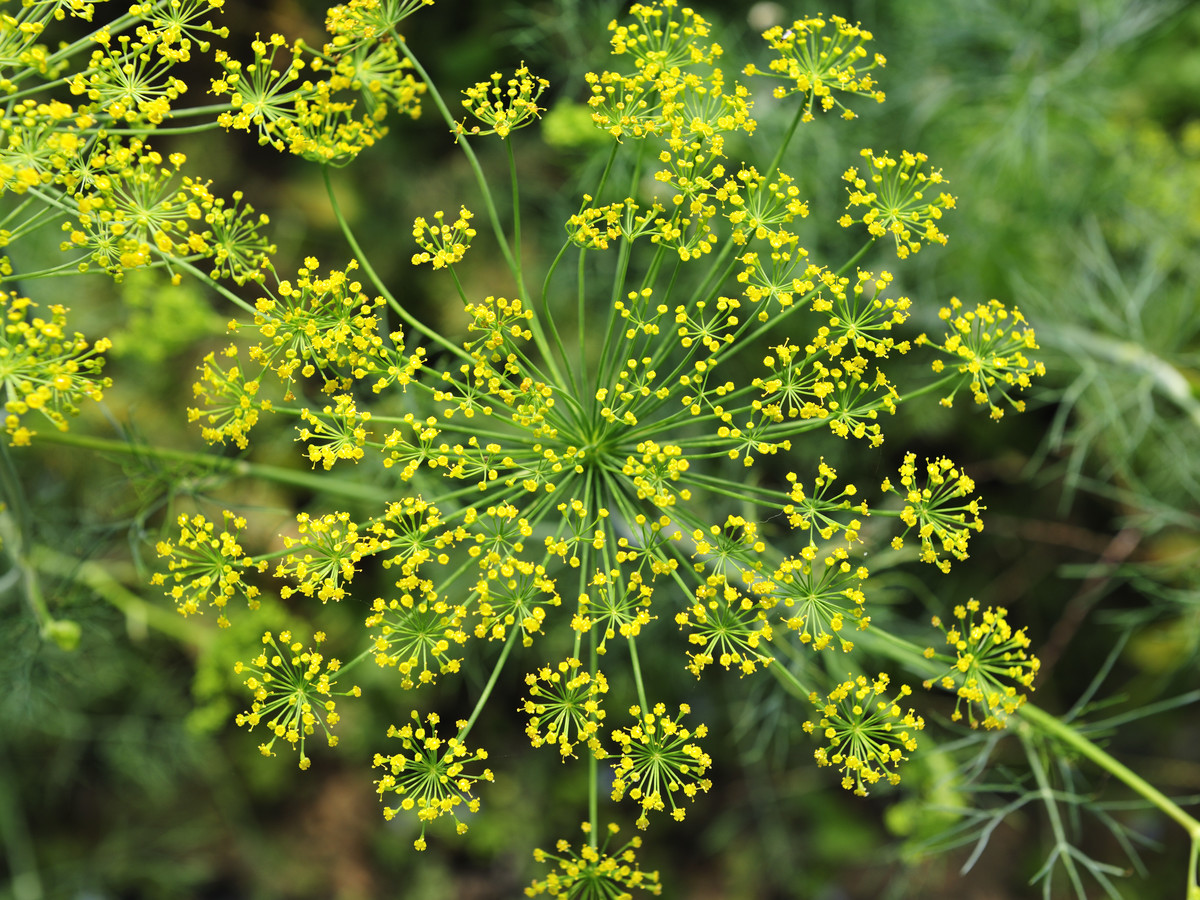 |
Diao, W.R., Hu, Q.P., Zhang, H. and Xu, J.G., 2014. Chemical composition, antibacterial activity and mechanism of action of essential oil from seeds of fennel (Foeniculum vulgare Mill.). Food control, 35(1), pp.109-116. |
| Fragaria nubicola (Lindl. ex Hook. f.) Lacaita |
Yangraich |
Rosaceae |
Herb |
Ellagic acid, acid-glycoside and various other glycosides. |
The fruits possess potential to have anti-inflammatory antioxidant and antineurodegenerative properties. |
.jpg) |
Anees, S., Dar, K.B., Bhat, A.H., Showkat Ahmad, S. and Hamid, R., 2018. Anti-Hyperlipidemic And Antioxidant Capacity of Active Extracts of Fragaria Nubicola in High Fat Diet Fed Hyperlipidemic Rats. International Journal of Pharmaceutical Science and Research, 9(6), pp.2228-2237. |
| Fritillaria cirrhosa D.Don |
Yellow Himalayan Fritillary |
Liliaceae |
Herb |
Verticinone, verticine, imperialine-3-β-D-glucoside. |
F. cirrhosa bulbus effectively protected against CSE-induced oxidative stress in RAW264.7 macrophages by suppressing ROS accumulation, increasing GSH level and improving HO-1 expression. |
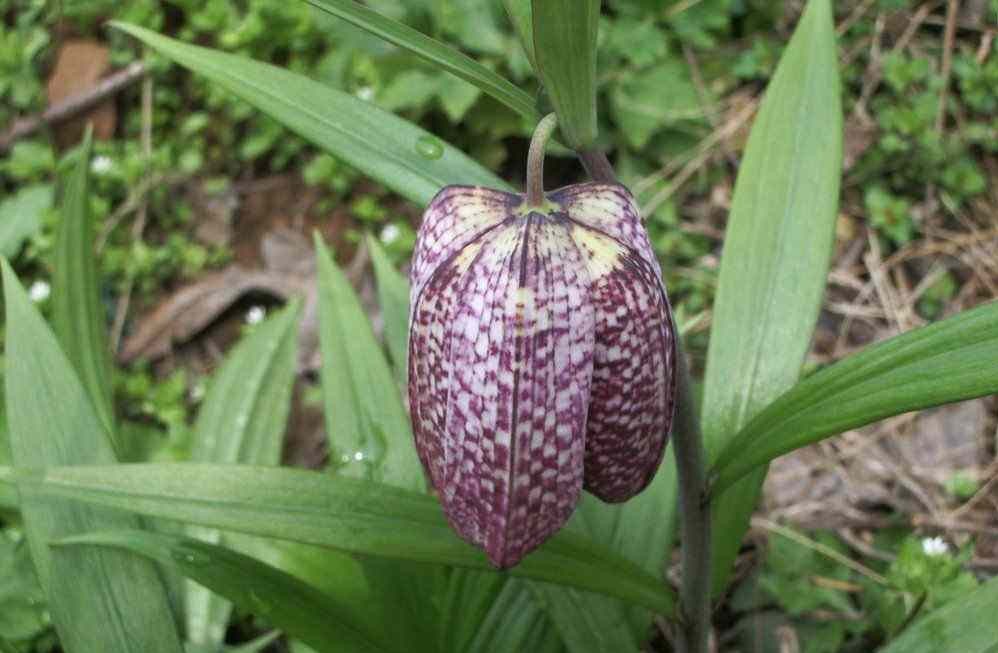 |
Liu, S., Yang, T., Ming, T.W., Gaun, T.K.W., Zhou, T., Wang, S. and Ye, B., 2020. Isosteroid alkaloids from Fritillaria cirrhosa bulbus as inhibitors of cigarette smoke-induced oxidative stress. Fitoterapia, 140, p.104434. |
| Fritillaria imperialis |
crown imperial |
Liliaceae |
Herb |
teroidal alkaloids, saponins, terpenoids, glycosides and many other compounds. |
It possessed anticholinergic, cardiovascular, anticancer, insecticidal, platelet aggregation inhibition and many other pharmacological effects |
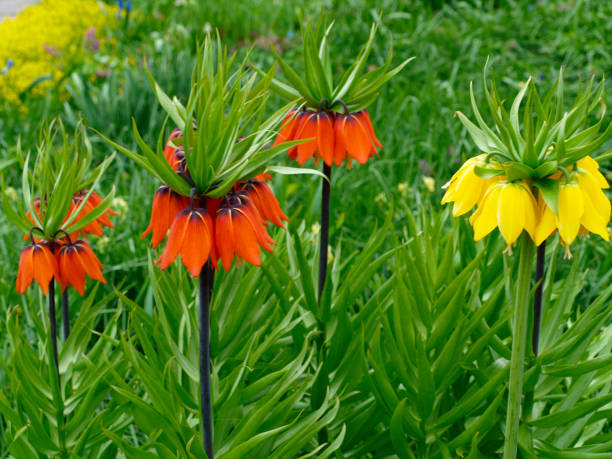 |
Al-Snafi, A.E., 2019. Fritillaria imperialis-A review. IOSR Journal of pharmacy, 9(3), pp.47-51. |
| Fritillaria roylei Hook. |
Sheath Khar |
Liliaceae |
Herb |
verticinone, verticine, imperialine-3-β-D-glucoside |
Bulbs are diuretic, fresh ones are poisonous, but edible after cooking. Powdered herb is used to cure tuberculosis and broncho-asthma. |
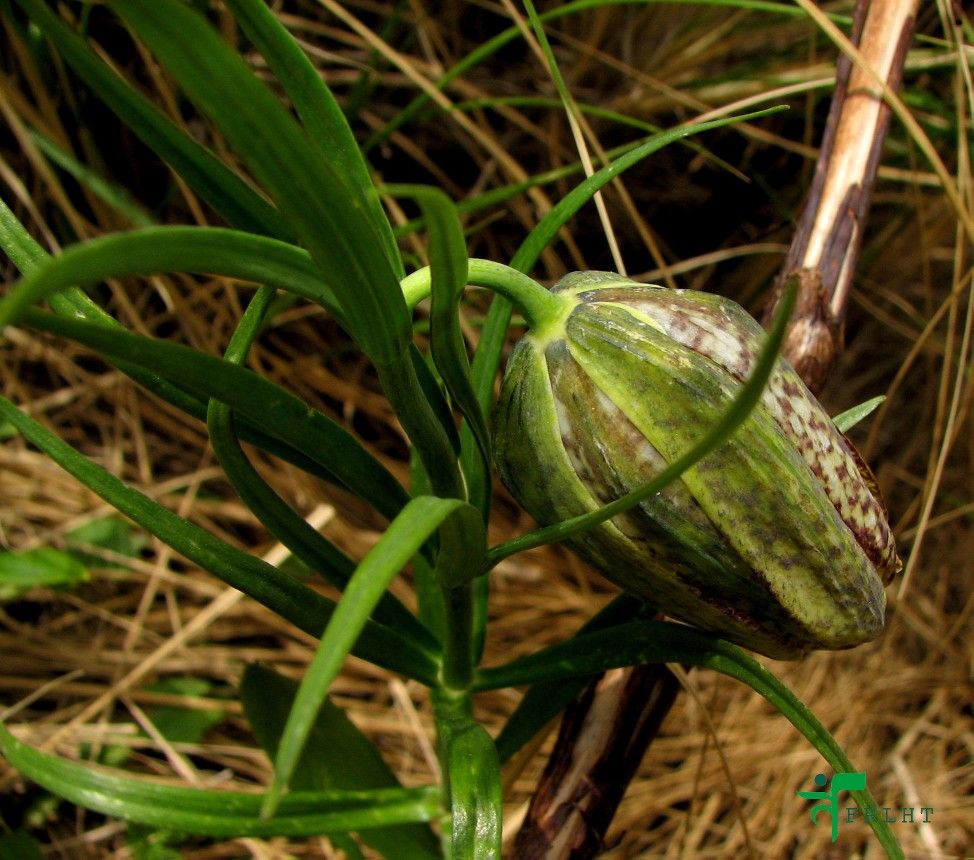 |
Simei Liua , Tiechui Yangb , Tse Wai Mingb , Tse Kathy Wai Gaunb , Ting Zhoua , Shu Wanga , Bengui Yea; Isosteroid alkaloids from Fritillaria cirrhosa bulbus as inhibitors of cigarette smoke-induced oxidative stress; Fitoterapia (2018), |
| Fumaria indica (Hausskn.) Pugsley |
Shahtar |
Fumariaceae |
Herb |
Tetrahydrocoptisine, narlumidine, methyl fumarate, protopine, bicuculine, and fumariline. |
In traditional systems of medicine, the plant is reputed for its anthelmintic, diuretic, diaphoretic, laxative, cholagogue, stomachic and sedative activities and is used to purify blood and in liver obstruction in ethnopharmacology. |
%20Pugsley.jpg) |
Gupta, P.C., Sharma, N. and Rao, C.V., 2012. A review on ethnobotany, phytochemistry and pharmacology of Fumaria indica (Fumitory). Asian Pacific Journal of Tropical Biomedicine, 2(8), pp.665-669. |
| Galinsoga parviflora Cav. |
Marchawagan ghasa |
Asteraceae |
Herb |
Triacontanol, Phytol, β-sitosterol, Stigmasterol, 7-Hydroxy-β-
sitosterol, 7-Hydroxystigmasterol, β-Sitosterol-3-O-β-D-glucoside,
3,4-Dimethoxycinnamic acid, Protocatechuic acid, Fumaric acid,
Uracil (Mostafa et al., 2013)
|
Painful joints |
 |
Mostafa, I., El-Aziz, E.A., Hafez, S., El-Shazly, A., 2013. Chemical constituents and bio�logical activities of Galinsoga parvifl ora Cav. (Asteraceae) from Egypt. Zeitschrift für Naturforschung C 1, 285–292.
|
| Gaultheria trichophylla |
Himalayan snowberry |
Ericaceae |
Shrub |
flavonoids, Tannins, steroids and anthraquionones |
Gaultheria trichophylla Royle (Ericaceae) has long been used for various ailments in traditional systems of medicines; most importantly it is used against pain and inflammation |
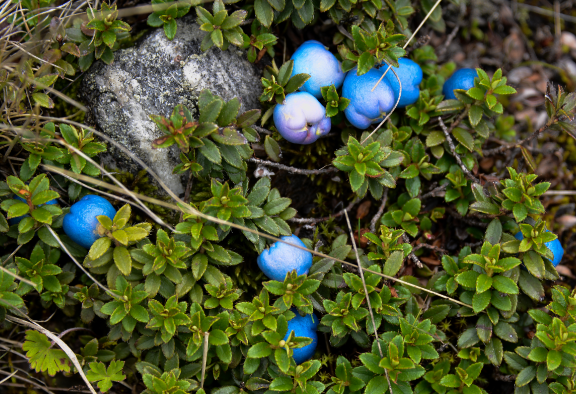 |
Alam, F. and Najum us Saqib, Q., 2015. Pharmacognostic standardization and preliminary phytochemical studies of Gaultheria trichophylla. Pharmaceutical biology, 53(12), pp.1711-1718. |
| Gentiana carinata |
Dark Blue Gentian |
Gentianaceae |
Herb |
|
Whole plant heals local injuries and controls stomach disorders. |
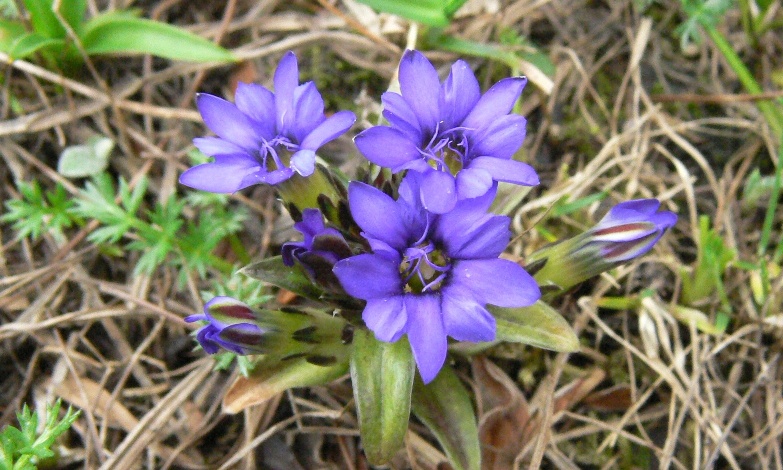 |
Kumar G, P., Gupta, S., Murugan M, P. and Bala Singh, S., 2009. Ethnobotanical studies of Nubra Valley-A cold arid zone of Himalaya. Ethnobotanical leaflets, 2009(6), p.9. |
| Gentiana kurroo Royle |
Neel-kanth, Nilkanth, Kuru |
Gentianaceae |
Herb |
Tannins, Alkaloids, Saponins, Cardiac glycosides, Terpenes,
Flavonoids, Phenolics (Wani et al., 2011)
|
Stomachache, Urinary infections, Inflamations |
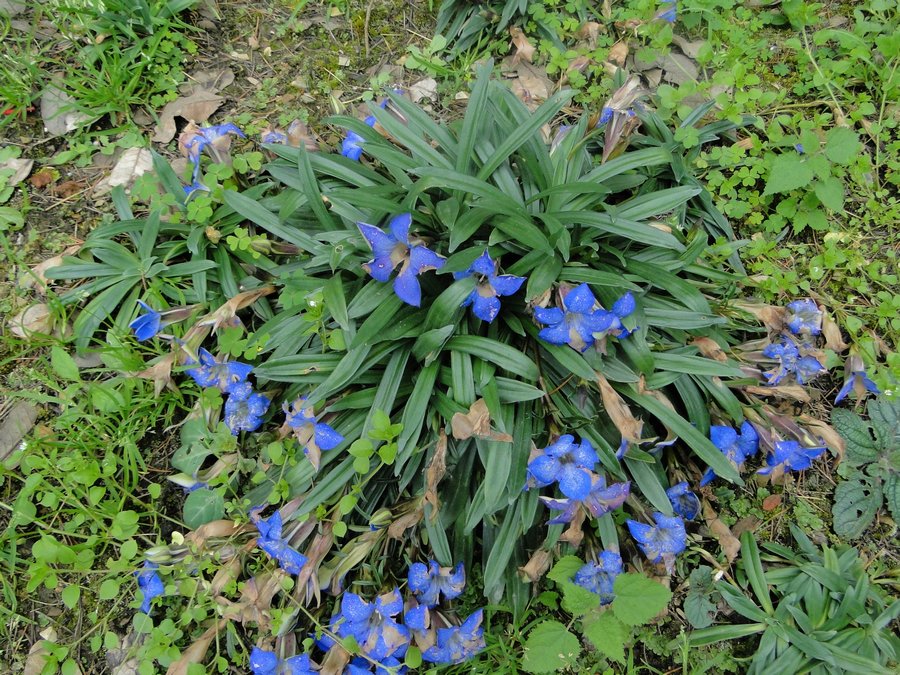 |
Wani, B.A., Ramamoorthy, D., Ganai, B.A., 2011. Preliminary phytochemical screening and evaluation of analgesic activity of methanolic extract of roots of Gentiana kurroo Royle in experimental animal models. International Journal of Pharmacy and Pharmaceutical Sciences 3, 164–166. |
| Geranium pratense L. |
Gugchuk, Ringresh, Karipat |
Gentianaceae |
Herb |
Myricetin, Tryptophan (Bautista et al., 2015) |
Dysentery, Fever, Influenza, Pneumonia, Swellings |
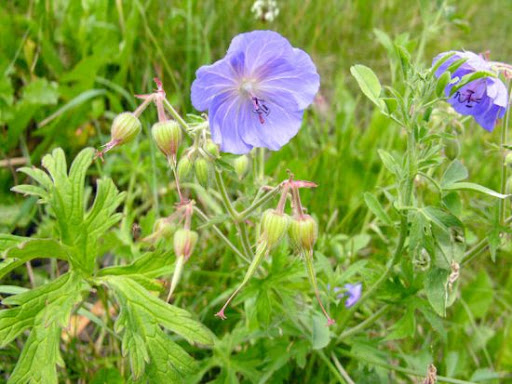 |
Bautista, M., Madrigal–Santillan, E., Morales–González, A., Gayosso–Delucio, J.A., Madrigal–Bujaidar, E., Chamorro–Cevallos, G., et al., 2015. An alternative hepato�protective and antioxidant agent, the Geranium. African Journal of Traditional, Complementary and Alternative Medicines 12, 96–105.
|
| Geranium sibiricum L. |
Eyamlomentok |
Gentianaceae |
Herb |
Corilagin, Geraniin (Bautista et al., 2015) |
It has been used to treat intestinal inflammation in traditional Korean folk medicine. Studies have examined its anti-oxidative and anti-proliferative activity in the Chang liver cells. Diarrhoea |
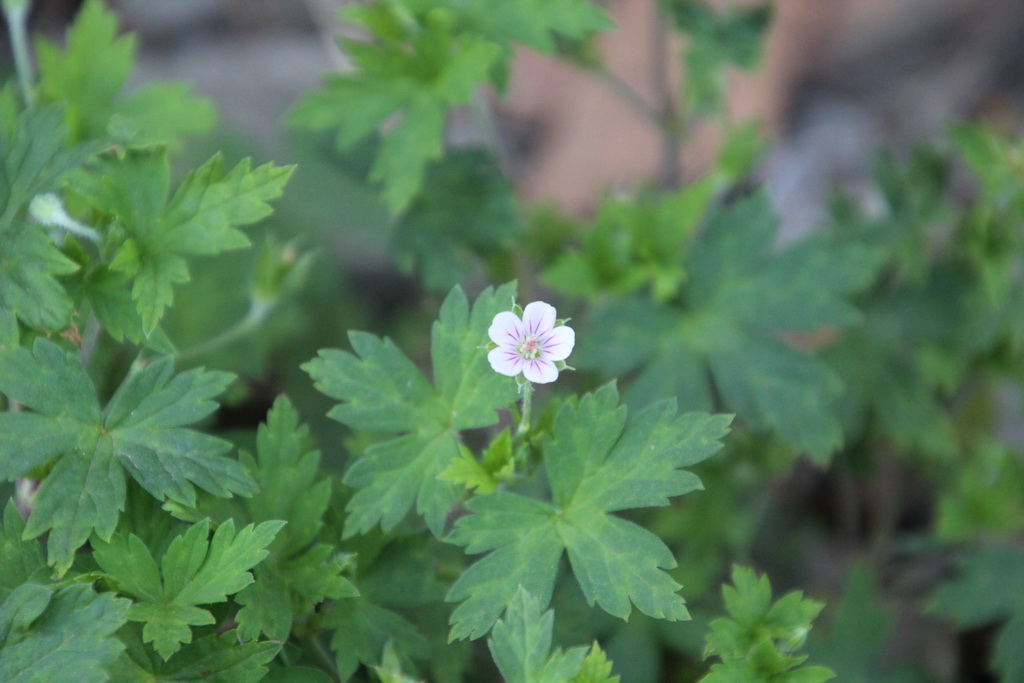 |
Bautista, M., Madrigal–Santillan, E., Morales–González, A., Gayosso–Delucio, J.A., Madrigal–Bujaidar, E., Chamorro–Cevallos, G., et al., 2015. An alternative hepato�protective and antioxidant agent, the Geranium. African Journal of Traditional, Complementary and Alternative Medicines 12, 96–105.
|
| Geranium wallichianum D. Don ex Sweet |
Kao ashud, Kaw Gasse |
Gentianaceae |
Herb |
Ursolic acid, β-Sitosterol, Stigmasterol, β-Sitosterol galactoside,
Herniarin, 2,4,6-trihydroxyethylbenzoate (Ismail et al., 2009)
|
Root is used in backache, sexual debility, joint pain, colic, jaundice, and kidney and spleen disorder. In different assay the crude extracts and different fractions of rhizomes and leaves showed varied degree of antimicrobial activities and enzyme inhibitions. It is also used for Blood ailments, Vision problems, Rheumatic pain, Toothache, Backache Delivery pain, Diarrhoea.
|
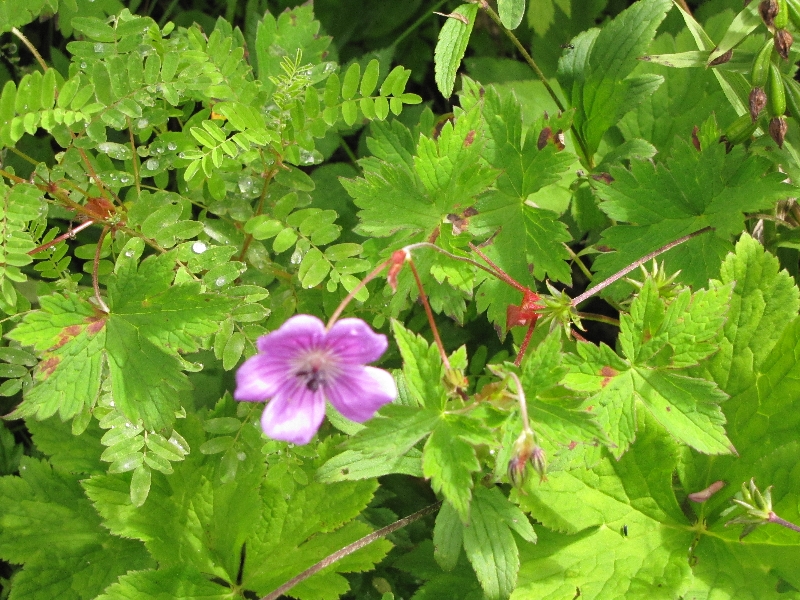 |
Ismail, M., Ibrar, M., Iqbal, Z., Hussain, J., Hussain, H., Ahmed, M., et al., 2009. Chemical constituents and antioxidant activity of Geranium wallichianum. Records of Natural Products 3, 193–197.
|
| Glycine max L. |
Gabbe Muth |
Paplionaceae |
Herb |
Phenol, 2,6-dimethoxy-, 2-Methoxy-4-vinylphenol, 3,5-Dimethoxyacetophenone, 1,2-cyclopentanedione
and Hexadecanoic acid, methyl ester.
|
The presence of phytochemicals with strong pharmacological actions like antimicrobial and antioxidants activities could be considered as sources of quality raw materials for food and pharmaceutical industries. |
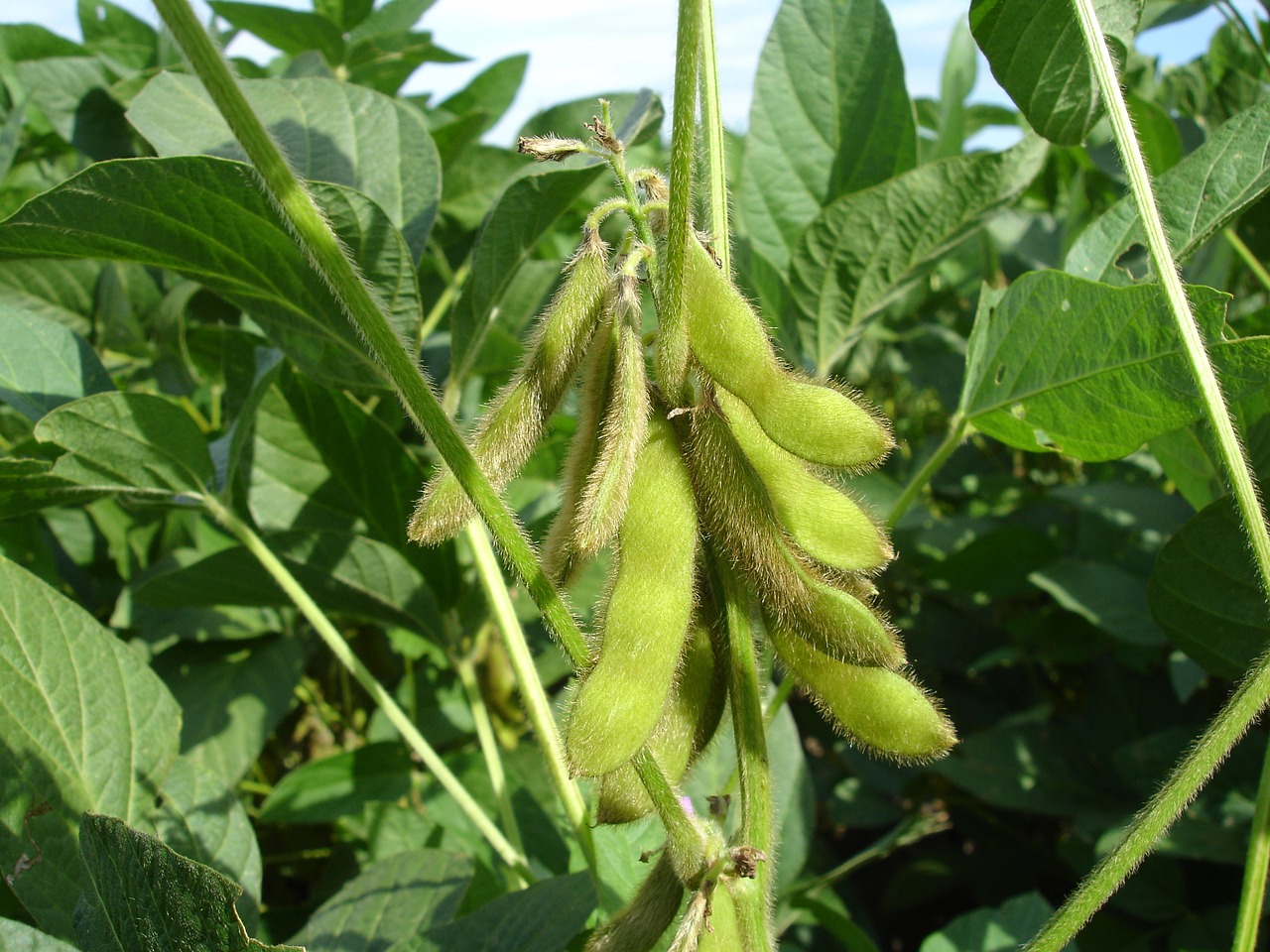 |
Lee, J.H., Baek, I.Y., Choung, M.G., Ha, T.J., Han, W.Y., Cho, K.M., Ko, J.M., Jeong, S.H., Oh, K.W., Park, K.Y. and Park, K.H., 2008. Phytochemical constituents from the leaves of soybean [Glycine max (L.) Merr.]. Food Science and Biotechnology, 17(3), pp.578-586.Alghamdi, S.S., Khan, M.A., El-Harty, E.H., Ammar, M.H., Farooq, M. and Migdadi, H.M., 2018. Comparative phytochemical profiling of different soybean (Glycine max (L.) Merr) genotypes using GC–MS. Saudi journal of biological sciences, 25(1), pp.15-21. |
| Glycyrrhiza glabra |
Shanger |
Paplionaceae |
Herb |
The phytochemical screening
of the Glycyrrhiza glabra root revealed the presence of alkaloids, glycosides, carbohydrates, starches, phenolic
compounds, flavonoids, proteins, pectin, mucilage, saponins, lipids, tannins, sterols and steroids.
|
Research have come up with many therapeutic activities of licorice, a recent review paper summarized the pharmacological activities and discussed potential uses of Glycyrrhiza glabra for antitumor, antimicrobial, antiviral, anti-inflammatory,
immunoregulatory, and several other activities that contribute to the recovery and protection of the nervous, alimentary, respiratory, endocrine, and cardiovascular systems
|
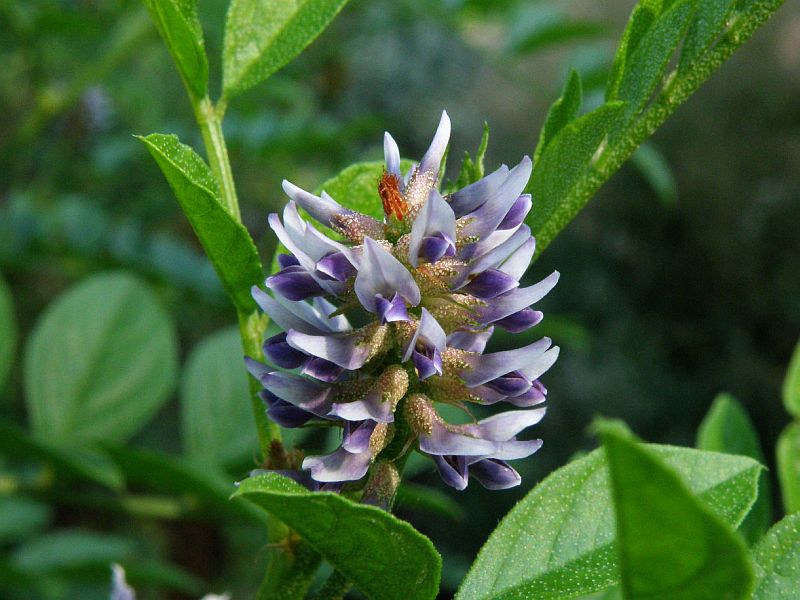 |
Al-Snafi, Ali Esmail. "Glycyrrhiza glabra: A phytochemical and pharmacological review." IOSR Journal of Pharmacy 8, no. 6 (2018): 1-17. Thakur, A.K. and Raj, P., 2017. Pharmacological perspective of Glycyrrhiza glabra Linn: A mini-review. J. Anal. Pharm. Res, 5(5), p.00156. |
| Heracleum candicans Wall.ex DC. |
Kaindal, Krandel, Churu, Mirkul |
Apiaceae |
Herb |
Germacrene D, 1, 8-cineole (11.8%), Sabinene, α-Pinene, β-
Ocimene, γ-Terpinene, cis-Sabinene hydrate, trans-Sabinene
hydrate, Linalool, Terpinen-4-ol, Germacrene D-4-ol,
Caryophyllene oxide, Pimaradiene, Sandaracopimara-8-15-diene
(Joshi, 2016)
|
H. candicans increases the antioxidant capacity of the liver and maintains hepatocyte function in the face of CCl4-
induced injury.
Infertility, Gynaecological disorders, Joint pain,
Leucoderma.
|
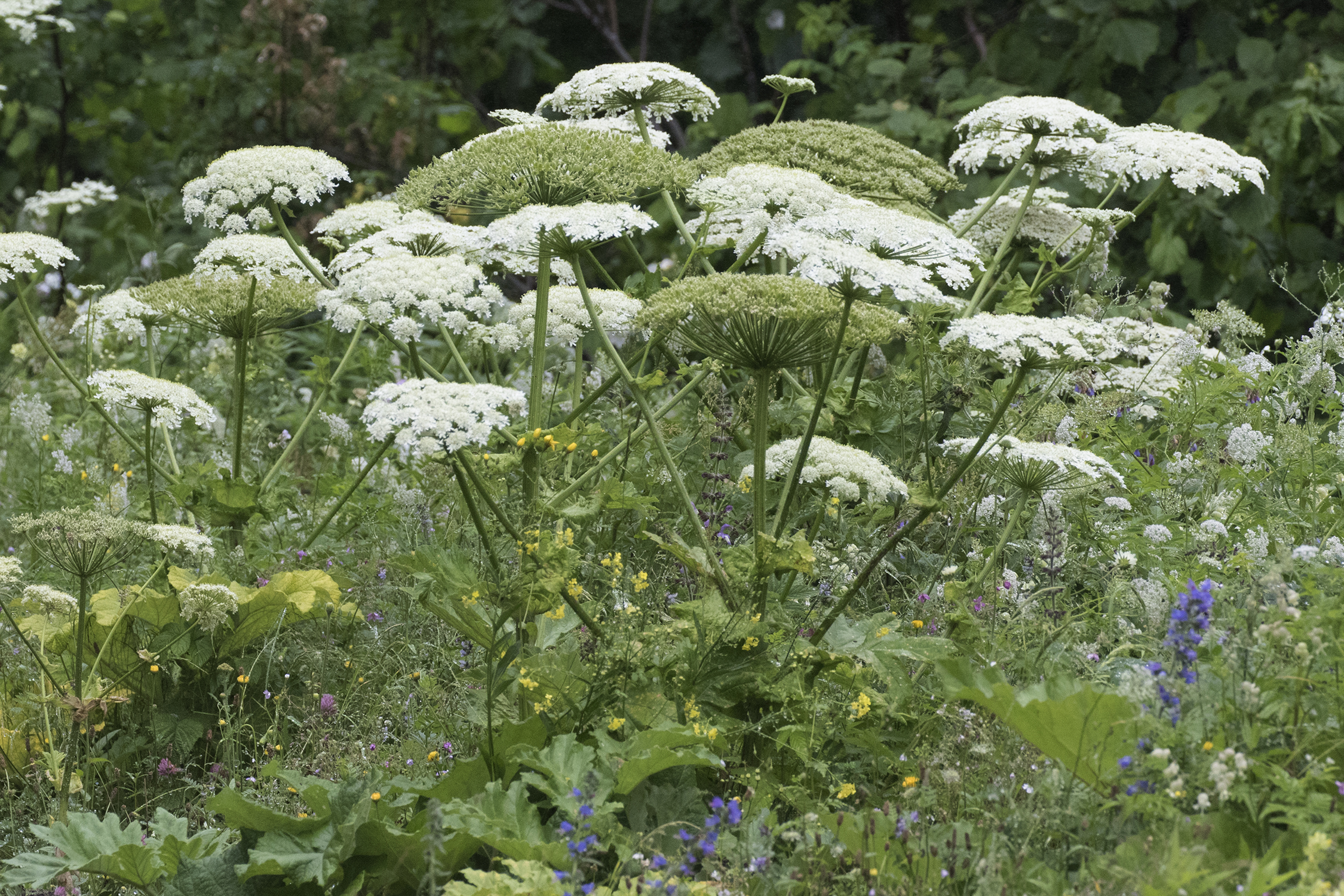 |
Joshi, R.K., 2016. Chemical constituents of leaf essential oils of Heracleum candicans Wall. ex DC. from western Himalaya of Uttarakhand, India. American Journal of Essential Oils and Natural Products 4, 1–4. |
| Hippophae rhamnoides L. |
Sastalulu, Chakdum, Tirku, Buru |
Elaeagnaceae |
Shrub |
Hippophae cerebroside, Oleanolic acid, Ursolic acid, 19-α-
Hydroxyursolic acid, Dulcioic acid, 5-Hydroxymethyl-2-
furancarbox-aldehyde, Cirsiumaldehyde, Octacosanoic acid,
Palmitic acid,1-O-Hexadecanolenin (Zheng et al., 2009)
|
High antioxidant and high antibacterial activity. |
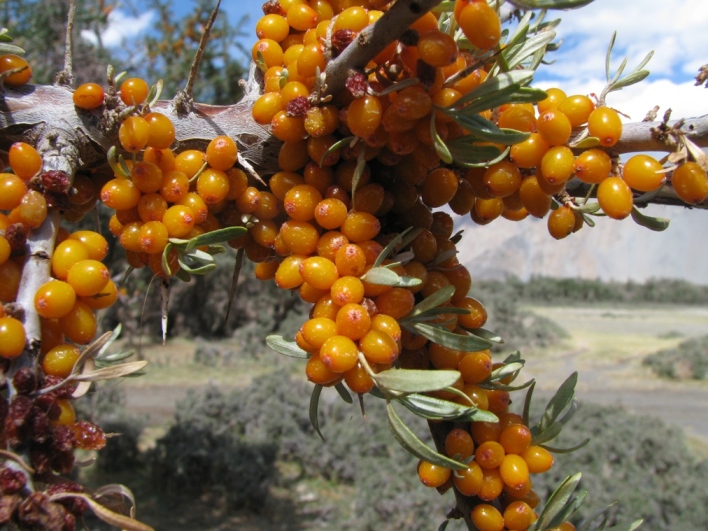 |
Zheng, R.X., Xu, X.D., Tian, Z., Yang, J.S., 2009. Chemical constituents from the fruits of Hippophae rhamnoides. Natural Product Research 23, 1451–1456. |
| Hyoscyamus niger L. |
Bazarbang |
Solanaceae |
Herb |
Hyoscyamine, Apoatropine, Hyoscine, Skimmianine,
Scopolamine, Belladonines (Aparna et al., 2015)
|
Seed powder is applied on gums to cure toothache. Asthma, Nervousness, Whooping cough. Powdered herb is used to cure asthmas and whooping cough. |
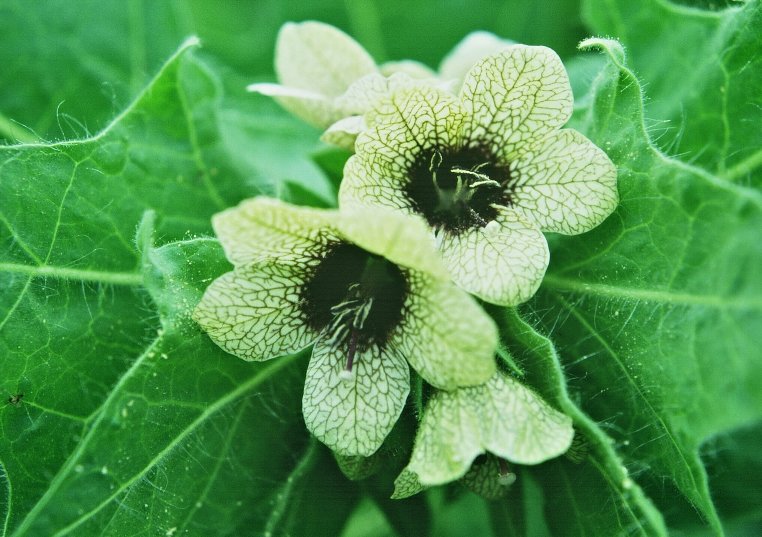 |
Aparna, K., Joshi, A.J., Vyas, M., 2015. Phyto–chemical and pharmacological profiles of Hyoscyamus niger Linn (Parasika Yavani)–a review. Pharma Science Monitor 6, 153–158. |
| Hypericum perforatum L. |
Chai gasse |
Hypericaceae |
Herb |
D-Mannitol, Hypericin, Germacrene D, (E)-Caryophyllene, 2-
Methyloctane, α-Pinene, Bicyclogermacrene, (E)-β-Ocimene,
Sesqiuterpenoids, Monoterpenoids (Đorđević, 2015)
|
Rheumatism, Urinary irritation, Wounds. |
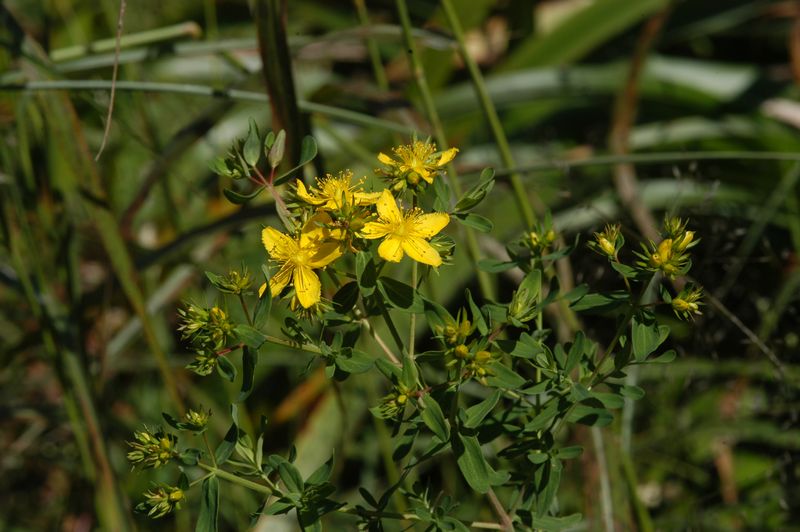 |
Đorđević, A.S., 2015. Chemical composition of Hypericum perforatum L. essential oil. Advanced Technologies 4 (1), 64–68.
|
| Inula racemosa Hook. f. |
Poshkar mool, Gugi Phool |
Asteraceae |
Herb |
Alantolactone, isoAlantolactone, dihydro-Alantolactone,
dihydroiso-Alantolactone, Sitisterol, Daucosterol, Inunolide,
Aplotaxene,Phenylacetonitrile, Isonitrile (Wang et al., 2000)
|
Abdominal pain, Acidity, Worms, Inflammations, Burns, Asthma, Diarrhoea, Fever,Gastro-intestinal problems, Gynaecological & Liver disorders, Rheumatism, Wounds. Roots used as an expectorant and in veterinary medicine as a tonic and stomachic. Oil of the leaves is an anthelmintic, also an expectorant and diuretic, the seeds are an aphrodisiac. |
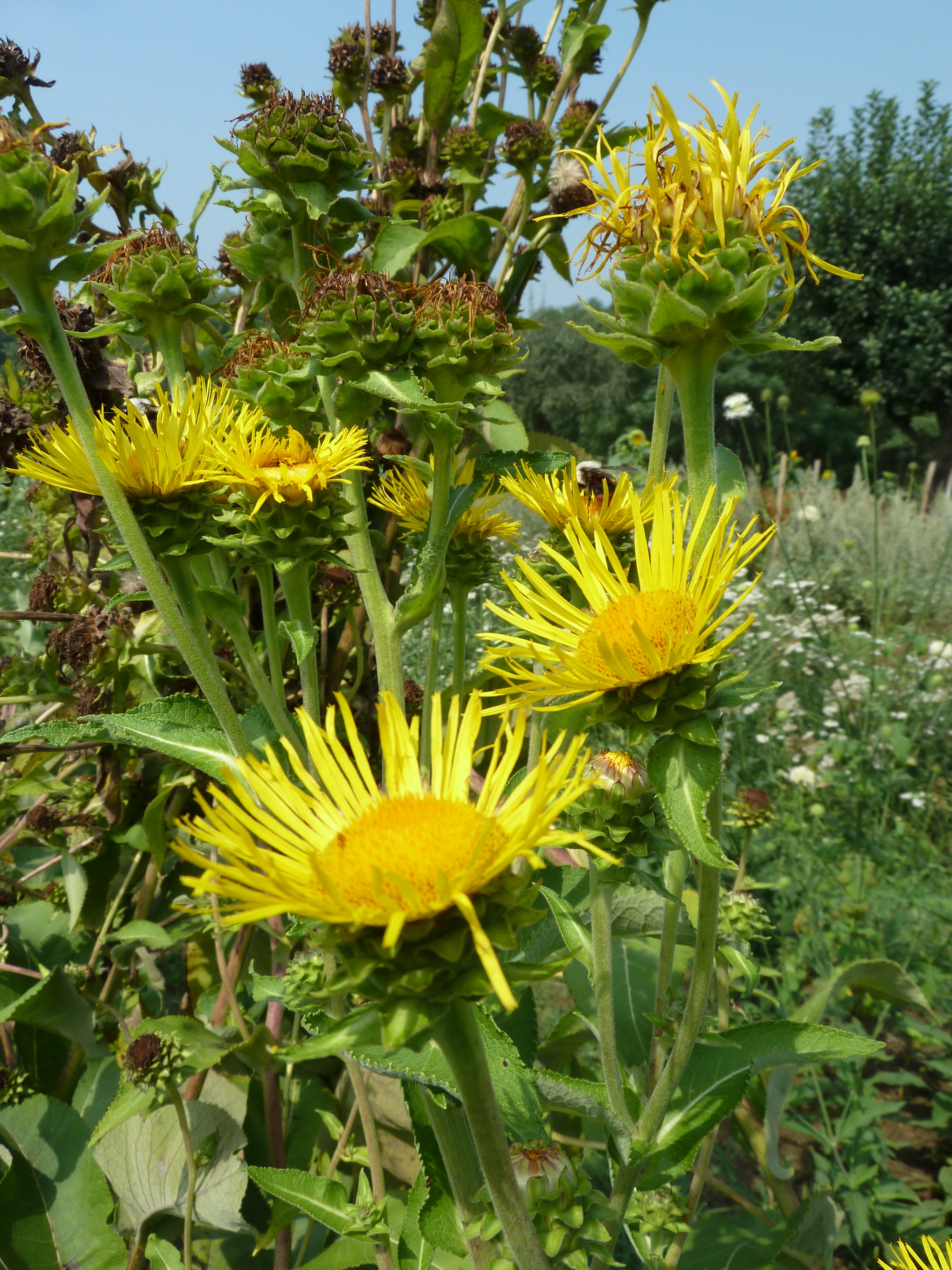 |
Wang, K., Liu, H., Zhao, Y., Chen, X., Hu, Z., Song, Y., Ma, X., 2000. Separation and determination of alantolactone and isoalantolactone in traditional Chinese herbs by capillary electrophoresis. Talanta 52, 1001–1005.
|
| Iris ensata |
Japanese water iris |
Iridaceae |
Herb |
Phytochemical screening of the extract showed the presence of some common compounds like phenols, terpenoids, flavonoids, carbohydrate etc. |
The plant shows remarkable antioxidant potential and can be used for prevention or treatment of various oxidative related diseases |
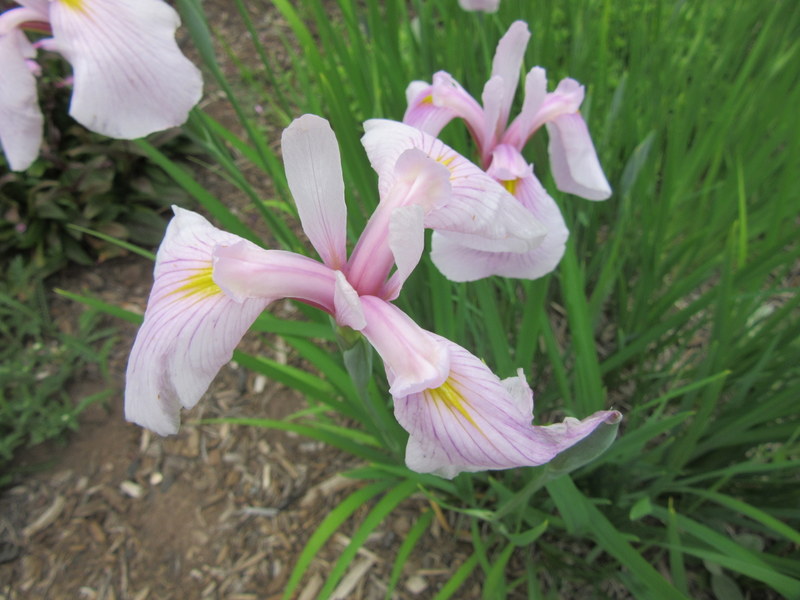 |
Ganaie, A.A., Mishra, R.P. and Allaie, A.H., 2018. Antioxidant activity of some extracts of Iris ensata. Journal of Pharmacognosy and Phytochemistry, 7(2), pp.230-235. |
| Iris kashmeriana |
Mazar mund |
Iridaceae |
Herb |
5,7,8- trihydroxy-3-(4-methoxyphenyl)-4H-chromen-4-one, 5,7,8-trihydroxy-3-(4-hydroxyphenyl)-4H-chromen-4-one, 5,7,8-triacetoxyoxy-3-(4-methoxyphenyl)-4H-chromen-4-one and 6,7-diacetoxyoxy-3-(4- methoxyphenyl)-4H-chromen-4- |
anthelmintic activity of I. hookeriana rhizome against gastrointestinal nematodes of sheep. |
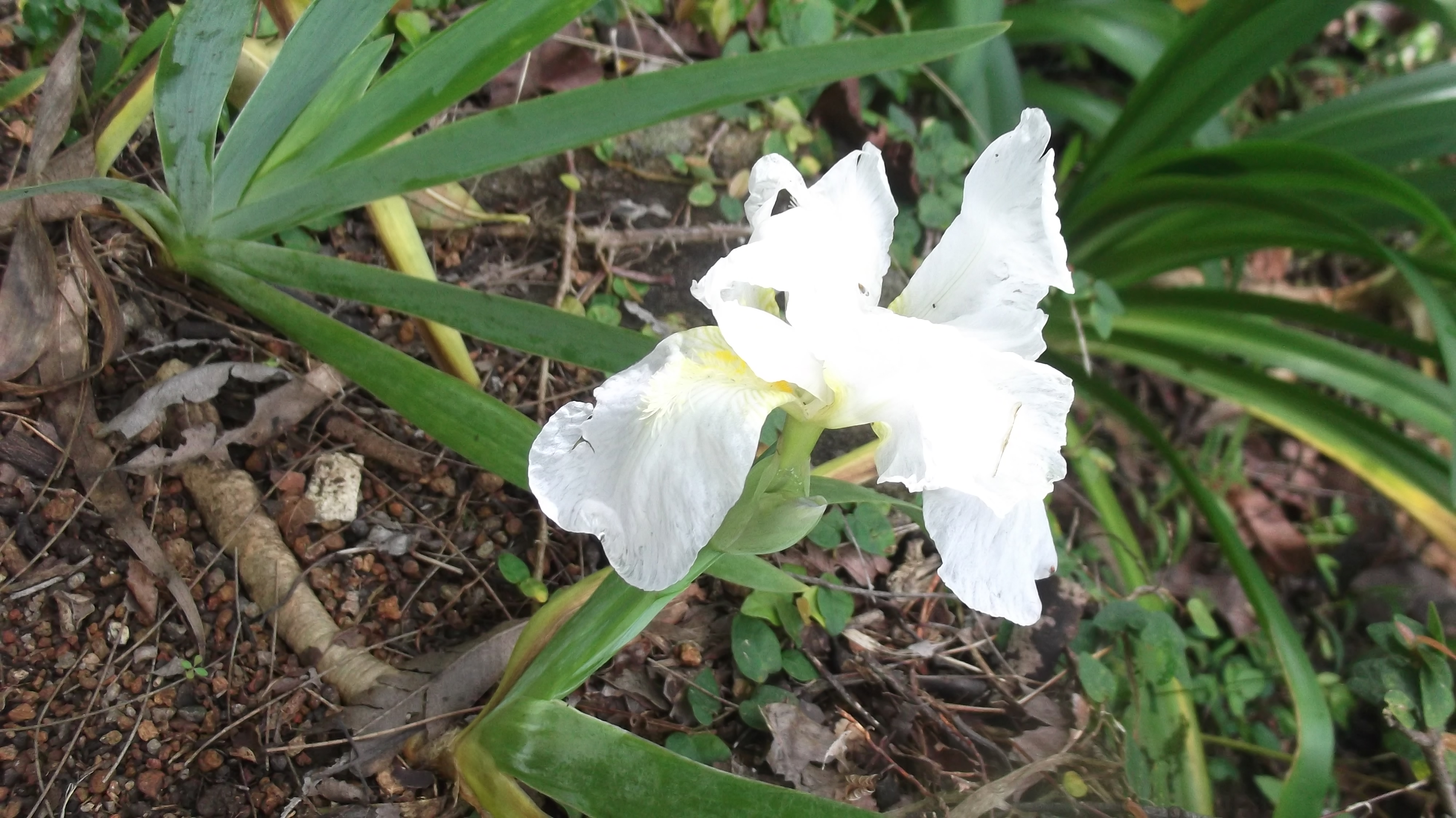 |
Alam, A., Jaiswal, V., Akhtar, S., Jayashree, B.S. and Dhar, K.L., 2017. Isolation of isoflavones from Iris kashmiriana Baker as potential anti proliferative agents targeting NF-kappaB. Phytochemistry, 136, pp.70-80. |
| Iris nepalensis |
Sonzal |
Iridaceae |
Herb |
Chemical investigation of chloroform extract of rhizomes of Iris nepalensis yielded new alkylated 1,4-benzoquinone derivative |
cytotoxic activities against human cancer cell lines |
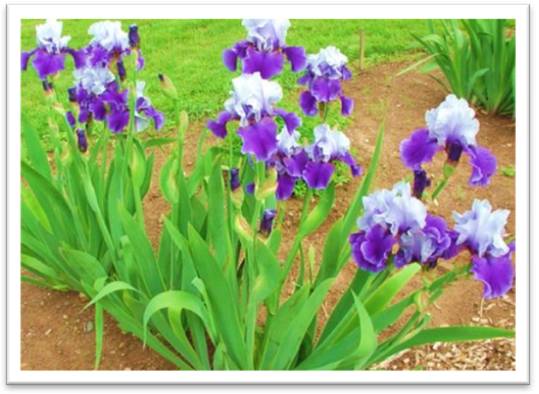 |
Tantry, M.A., Ghazanfar, K. and Zargar, U.R., 2013. New alkylated benzoquinone from Iris nepalensis. Natural product research, 27(20), pp.1832-1836. |
| Juglans regia Linn. |
Dun |
Juglandaceae |
Tree |
carbohydrates, cardiac glycosides, phenolics, flavonoids, alkaloids, proteins, steroids, and tannin. |
Juglans regia exhibits anti-oxidant, anti-histaminic, bronchodilator, anti-fertility, analgesic, immunomodulatory, anti-ulcer, anti-diabetic, hepatoprotective, anti-microbial, anti-inflammatory, lipolytic anti-hypertensive, neuroprotective, insecticidal, anticancer, wound healing and several other therapeutic properties |
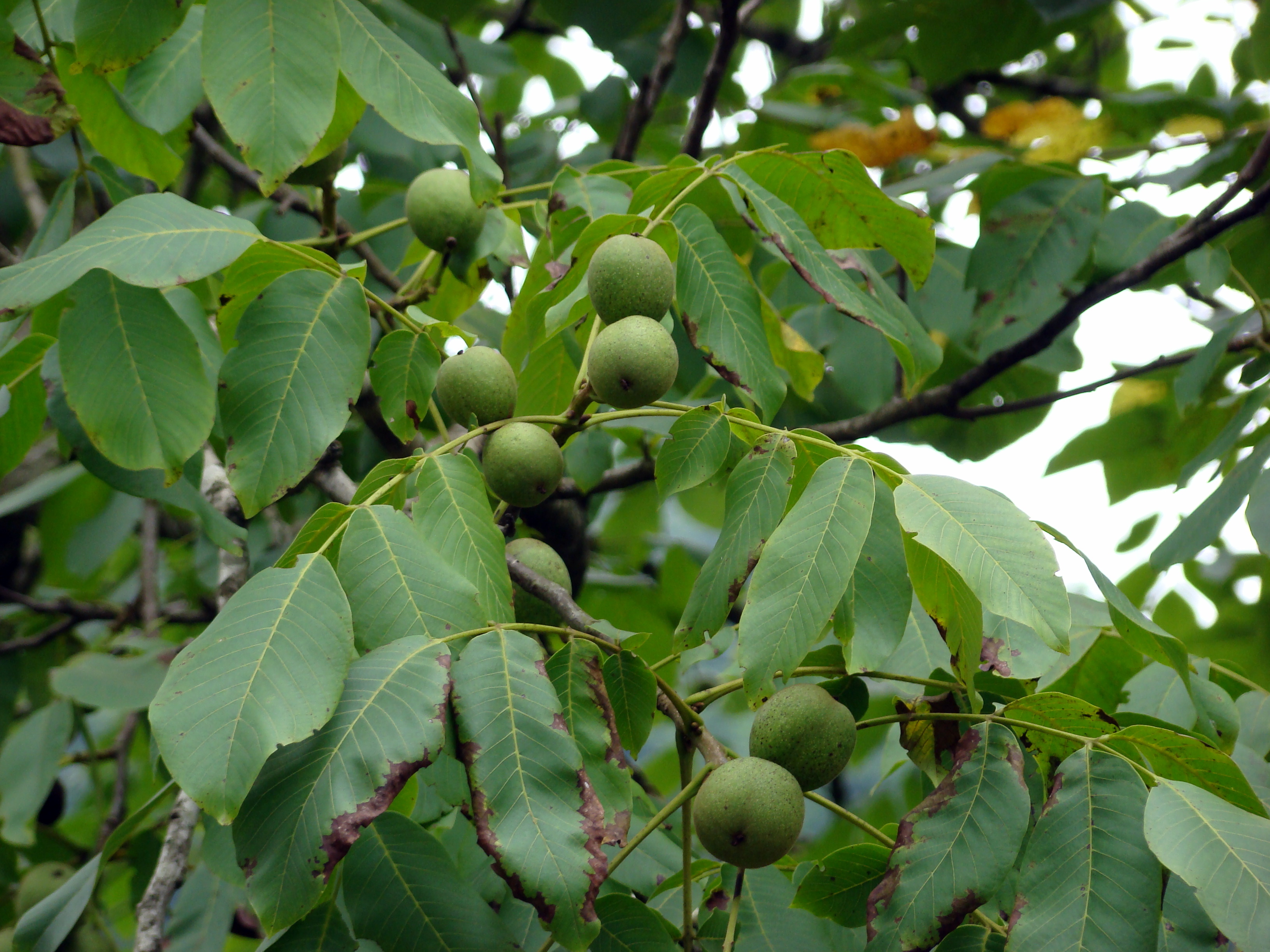 |
Gupta, A., Behl, T. and Panichayupakaranan, P., 2019. A review of phytochemistry and pharmacology profile of Juglans regia. Obesity Medicine, 16, p.100142. |
| Jurinea macrocephala Benth. |
Dhup |
Asteraceae |
Herb |
β-sitosterol, lupenone, physcion, ptiloepoxide, 20, 21α-epoxytaraxastan-3β-ol and chlorogenic acid. All the compounds were isolated for the first time in roots. |
Root decoction is given in colio pain. |
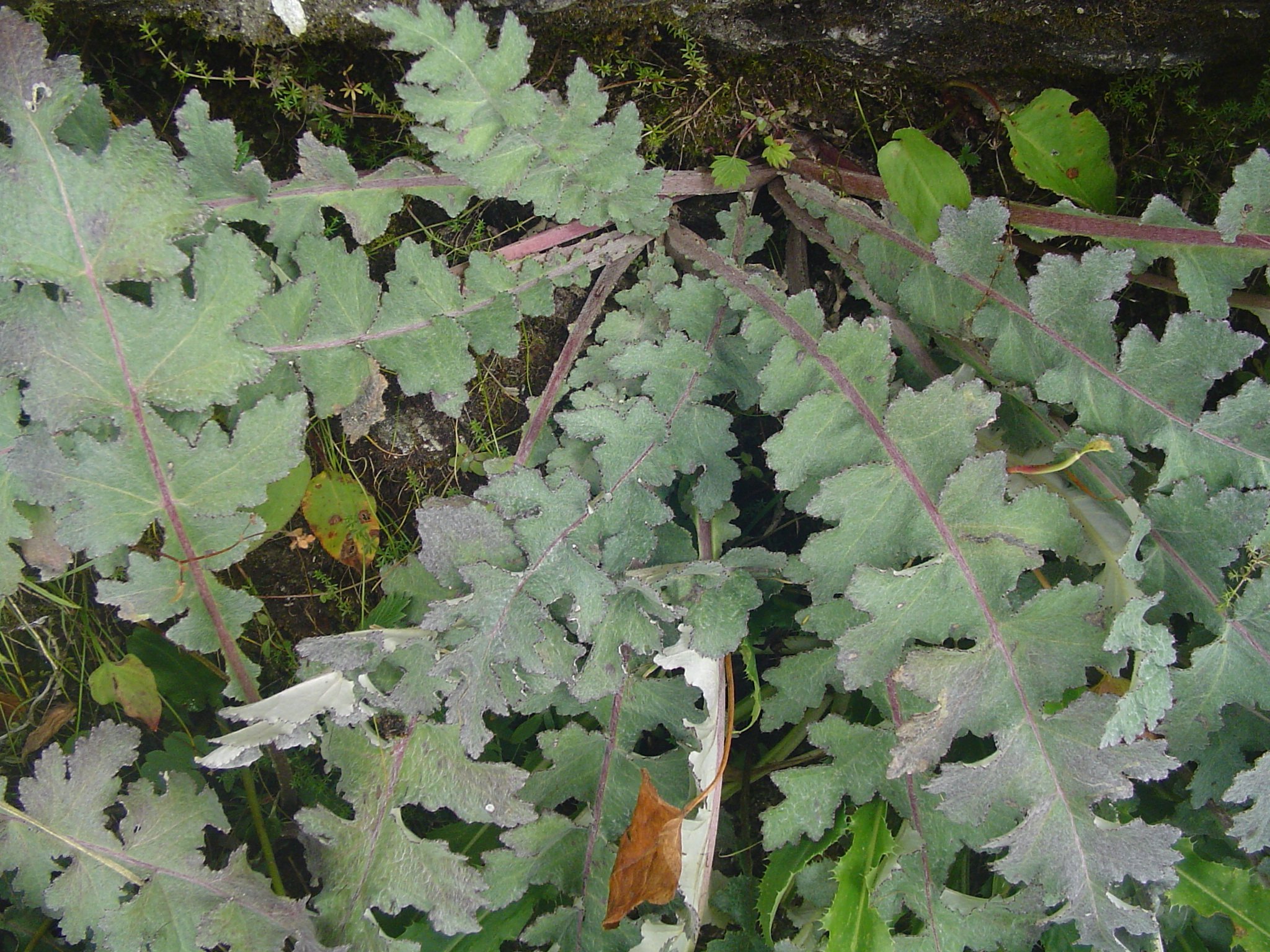 |
Kumar, A. and Agnihotri, V.K., 2020. Phytochemical studies of Jurinea macrocephala roots from Western Himalaya. Natural product research, 34(3), pp.421-424. Kapahi, B.K., Srivastava, T.N. and Sarin, Y.K., 1993. Traditional medicinal plants of Gurez (Kashmir)–an ethnobotanical study. Ancient science of life, 13(1-2), p.119. |
| Lagenaria siceraria(Molina)Standl. |
Kashir Al |
Cucurbitaceae |
Herb |
4-C-Glycosylflavone, 7-0-Glucosyl-6-C-glucoside apigenin, 6-C-
glucoside apigenin, 6-C-Glucoside luteolin, 7,4-O-Diglucosyl-6-C-
glucoside apigenin, Isovitexin, Isoorientin, Saponarin, Saponarin
4-O-glucoside 2, Quercetin (Prashar et al., 2014)
|
Cold, Cough, Chest pain, Fever, Kidney stone, Stomach problems. |
Standl..jpg) |
Prashar, Y., Gill, N.S., Perween, A., 2014. An updated review on medicinal properties of Lagenaria siceraria. International Journal of Universal Pharmacy and Bio Sciences 3, 362–376.
|
| Lagotis cashmeriana Rupr |
Kahmir Lagotis |
Plantaginaceae |
Herb |
|
Used against the Fever, Tea (kahwa) prepared from the seeds are used for cough and throat infections. |
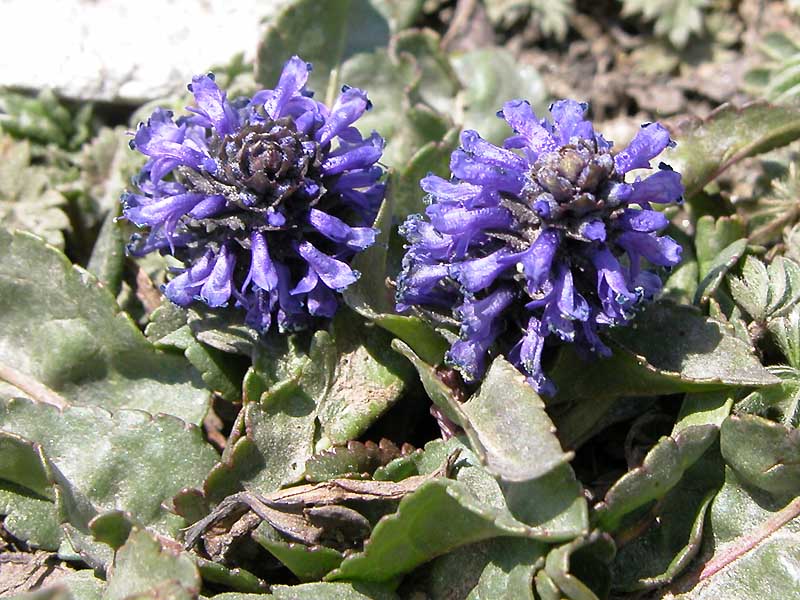 |
Shah, A., Bharati, K.A., Ahmad, J. and Sharma, M.P., 2015. New ethnomedicinal claims from Gujjar and Bakerwals tribes of Rajouri and Poonch districts of Jammu and Kashmir, India. Journal of ethnopharmacology, 166, pp.119-128. |
| Lamium album L. |
Zakhmi Dawa |
Lamiaceae |
Herb |
Verbascoside, Isoscutellarein; 6,10,14-Trimethyl-2-
pentadecanone, 4-Hydroxy-4-methyl-2-pentanone, 3-Methyl
butanal, 2-Methyl butanal, 2-Pentanone, 2-Ethyl furan, n-
Pentanal, 4-Hydroxy-4-methyl-2-pentanone, (2E)-Hexenal, Ethyl
benzene, 2-Heptanol, 5-Methyl-3-heptanone, 3-Octanone, 2-
Pentyl furan, p-Cymene, Dihydroedulan, n-Tridecane, (Z)-β-
Damascone, n-Tetradecane, n-Pentadecane, n-Hexadecane, n-
Heptadecane (Morteza-Semnani et al., 2016)
|
Burns, Nose bleeding, Wounds |
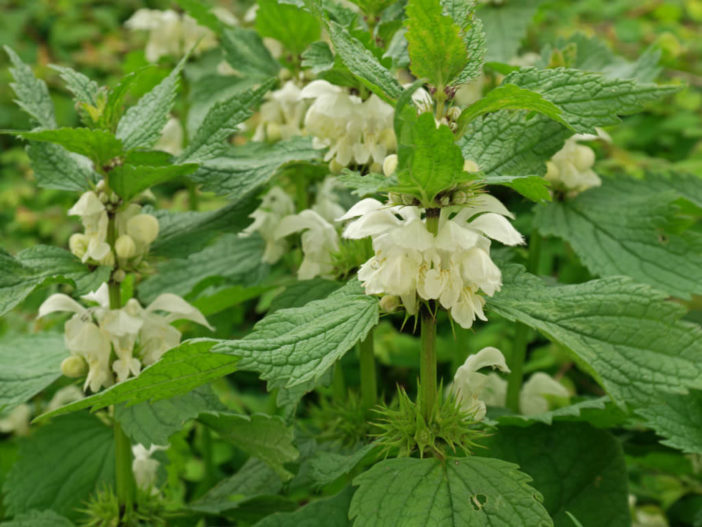 |
Morteza-Semnani, K., Saeedi, M., 2004. Essential oils composition of Nepeta cataria L. and Nepeta crassifolia Boiss: and Buhse from Iran. Journal of Essential Oil Bearing Plants 7, 120–124. |
| Lavetera cashmeriana Camb. |
Sozposh, Reshma khatmi |
Malvaceae |
Herb |
Phytochemical analysis indicated presence of coumarins, sterioids, phenolics etc. |
Plant has Antimicrobial activity which could act as a safe & natural source of antimicrobial agents against various pathogenic microorganisms. |
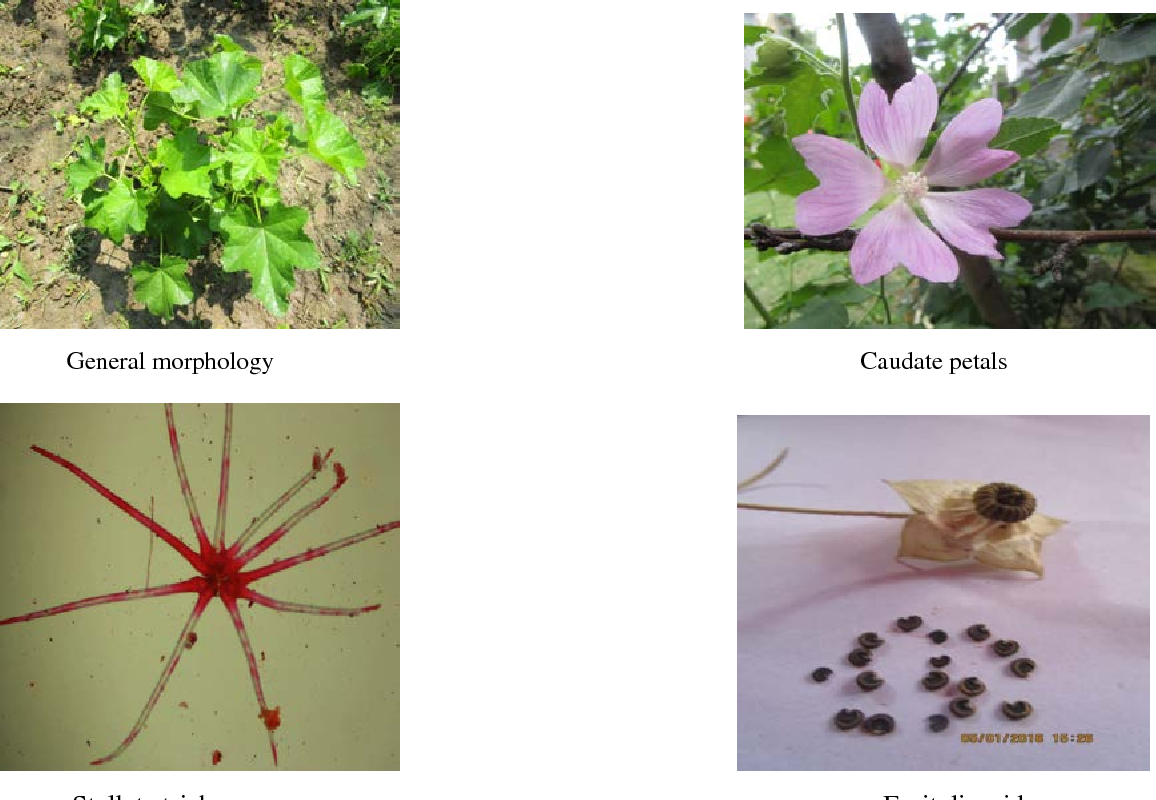 |
Mir, M.A., Shafi, A. and Wani, G.A., Investigation of Biochemical Analysis And Antibacterial Properties of Lavatera Cachemiriana. |
| Lychnis coronaria |
Rose campion |
Caryophyllaceae |
Herb |
|
ethyl acetate extracts of S. coronaria leaves and branches showed the best antibacterial activity against S. aureus (11 mm) |
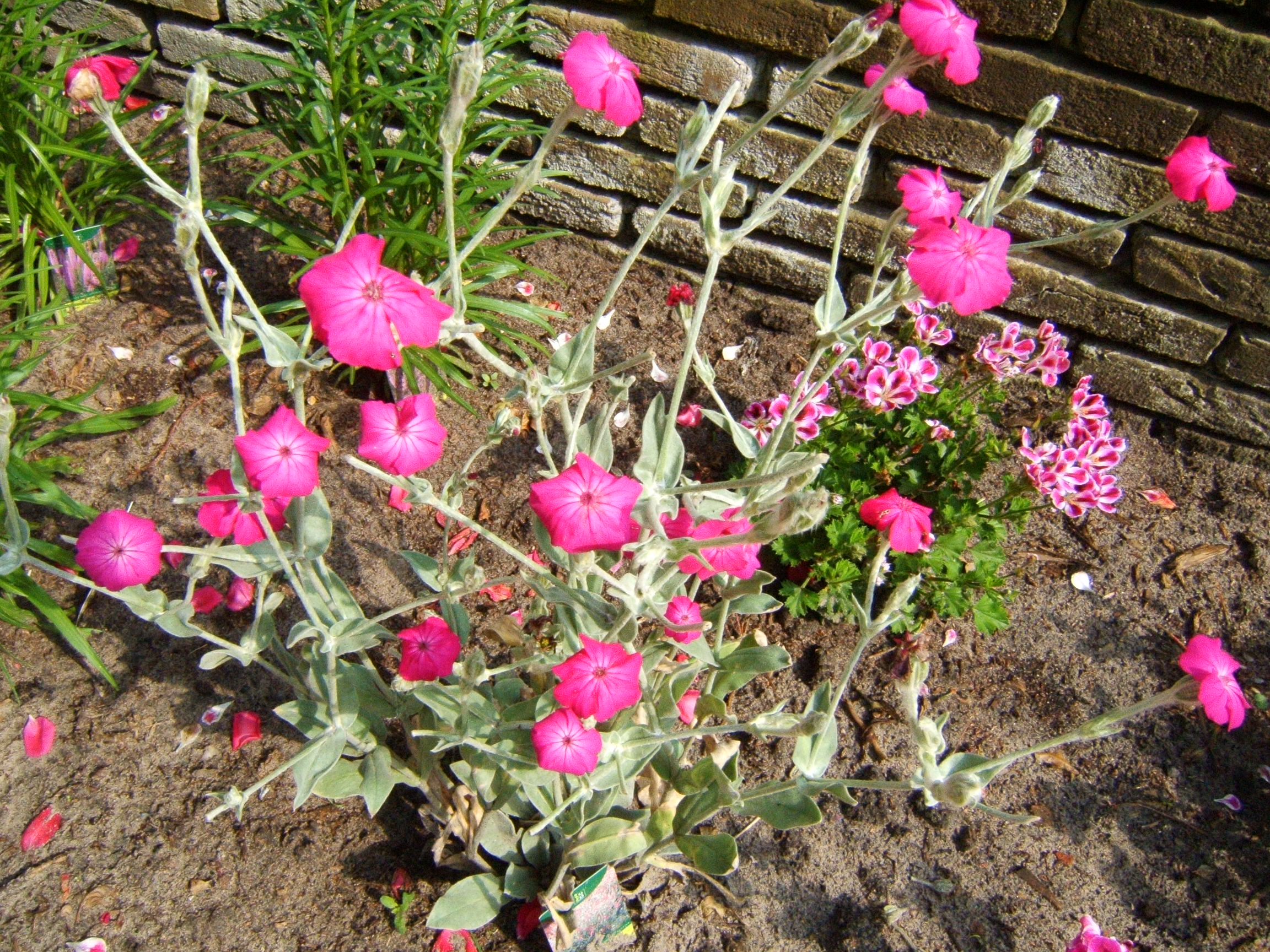 |
Güvensen, N.C., Keskin, D. and Yildiz, K., 2016. COMPARISION OF ANTIMICROBIAL ACTIVITY OF DIFFERENT EXTRACTS OF SILENE CORONARIA (Desr.) Clairv. ex Rchb. AND SILENE DENIZLIENSIS Aytaç. GROWN IN TURKEY. Global Journal of Research on Medicinal Plants & Indigenous Medicine, 5(12), p.286. |
| Malva neglecta Wallr. |
Sotzhal |
Malvaceae |
Herb |
alkaloids, tannins,saponins, hydroxycinnamic acids, flavonoids, flavonols, proanthocyanidins, anthocyanins, organic acids, protein, oils and sugars. |
It possessed antimicrobial, antioxidant, anti-inflammatory, anti-ulcerogenic, hepatoprotective, anti-urolithiasis, anticholinesterase and angiotensin converting enzyme, α-amylase, αglucosidase and pancreatic lipase inhibitory inhibitory effects. |
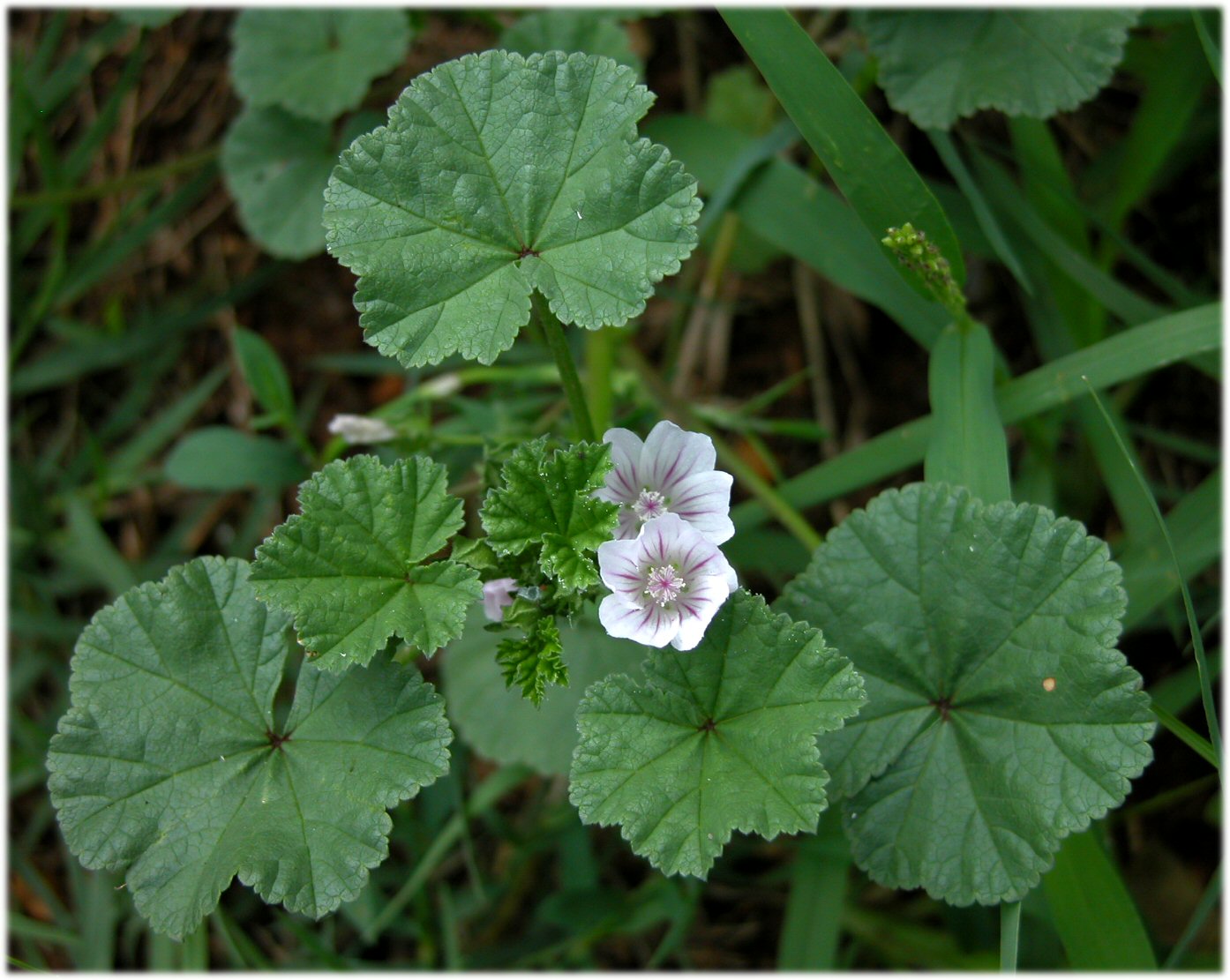 |
Al-Snafi, A.E., 2019. Medical benefit of Malva neglecta-A review. IOSR Journal of Pharmacy, 9(6), pp.60-67. |
| Malva sylvestris L. |
Sotzhal |
Malvaceae |
Herb |
The results of preliminary phytochemical screening on Malva sylvestris revealed the amount of phyto-constituents including anthocyanin, vitamins, alkaloids, saponin,flavonoids, tannins and phenolic compounds |
the sample extracts showed impressive antiox-idant activity via their ability to scavenge various biologically relevant reactive oxygen species (ROS) and inhibit peroxidation. |
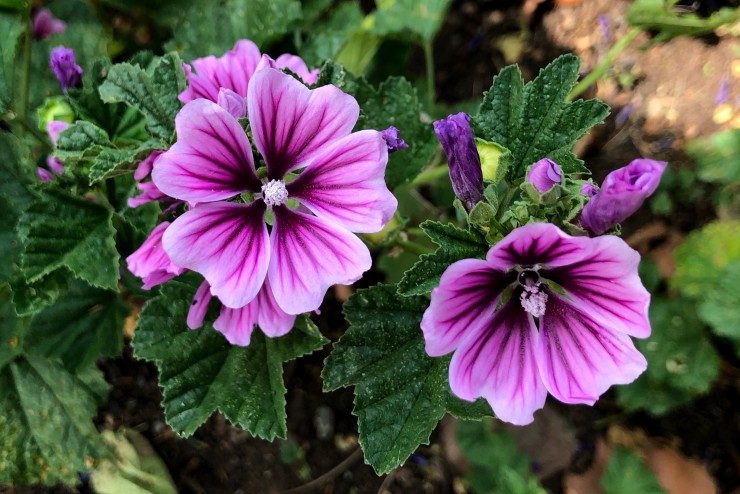 |
Mohajer, S., Taha, R.M., Ramli, R.B. and Mohajer, M., 2016. Phytochemical constituents and radical scavenging properties of Borago officinalis and Malva sylvestris. Industrial Crops and Products, 94, pp.673-681. |
| Malva verticillate Linn. |
Pudina kachh |
Malvaceae |
Herb |
hyperin and kaempferol-3-O-rutinoside, quinic acid and biochanin A |
M. verticillata demonstrates strong antioxidant activity |
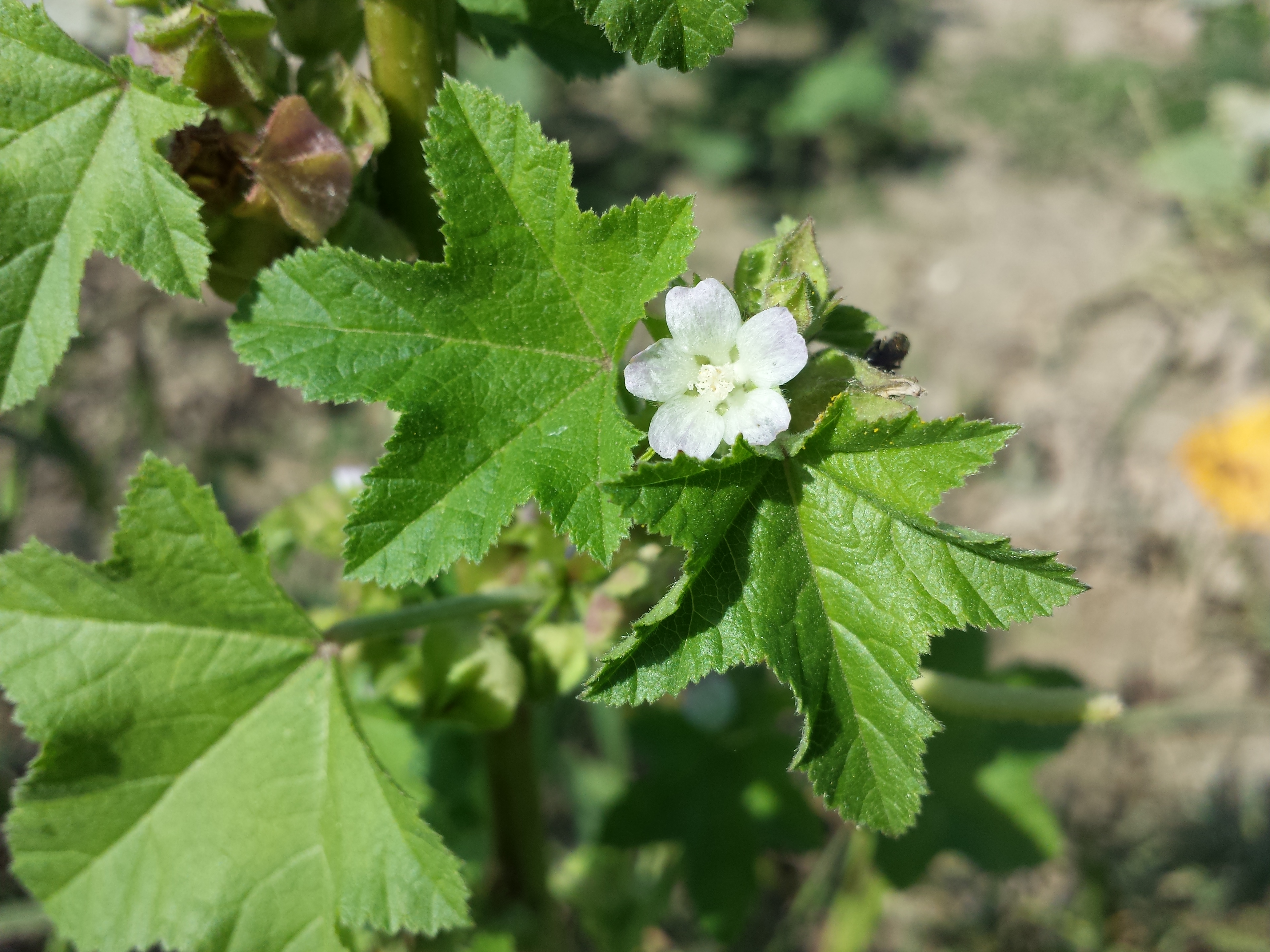 |
Ko, J.H., Nuankaew, W., Joo, S.W., Kim, H.G., Thi, N.N., Lee, Y.G., Kang, T.H. and Baek, N.I., 2018. Phenolic Compounds from the Aerial Parts of Malva verticillata and their Anti-diabetic Effect. Natural Product Communications, 13(7), p.1934578X1801300719. |
| Marrubium vulgare L. |
Trapaed, Troper |
Lamiaceae |
Herb |
Eudesmol, Citronellol, Citronellyl formate, Germacrene D, 11-
oxomarrubiin, Vulgarcoside A, 3-Hydroxyapigenin-4′-O-(6”-O-p-
coumaroyl)-beta-D-glucopyranoside (Shaheen et al., 2014)
|
Arthritis, Boils, Cough, Eye ailments, Rheumatism |
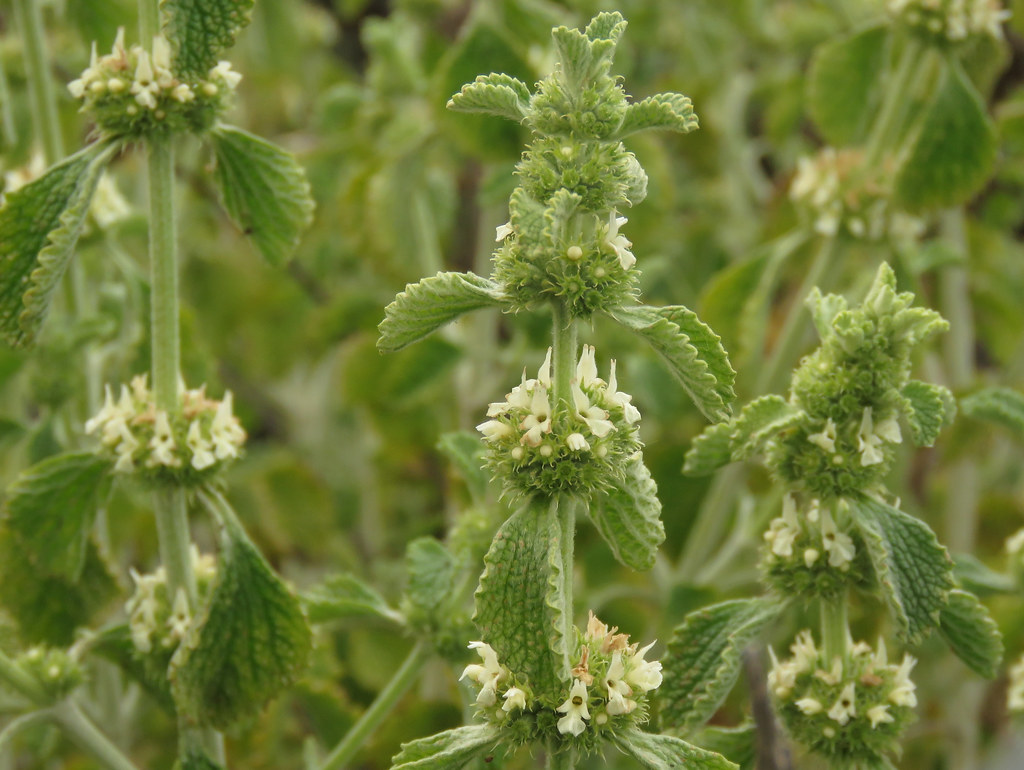 |
Shaheen, F., Rasoola, S., Shah, Z.A., Soomro, S., Jabeen, A., Mesaik, M.A., et al., 2014. Chemical constituents of Marrubium vulgare as potential inhibitors of nitric oxide and respiratory burst. Natural Product Communications 9, 903–906. |
| Meconopsis aculeata Royle |
Gul-e-neelam |
Papavaraceae |
Herb |
Phenols, Alkaloids, Tannins (Ahmad et al., 2016) |
Cardiacailments, Headache,Liverdiseases&Lung diseases, Pharyngitis, Stomachache, Ulcer, Backache, Gynaecological disorders, Renal colic, Wound. |
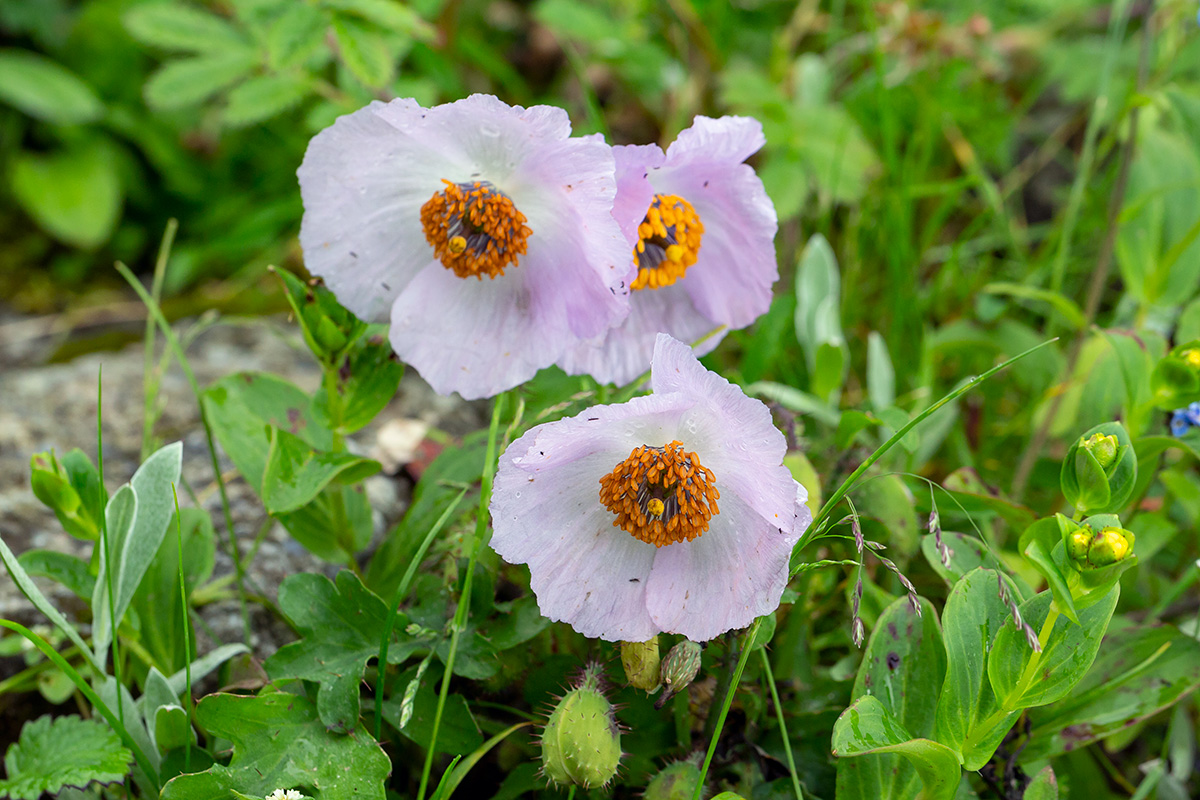 |
Ahmad, M., Kaloo, Z.A., Ganai, B.A., Ganaie, H.A., Singh, S., 2016. Phytochemical screening of Meconopsis aculeata Royle an important medicinal plant of Kashmir Himalaya, a perspective. Research Journal of Phytochemistry 10, 1–9. |
| Meconopsis latifolia |
Himalayan blue poppy |
Papavaraceae |
Herb |
Phytochemical studies have revealed the presence of major isoquinoline alkaloids and flavonoids |
Tonic, analgesic |
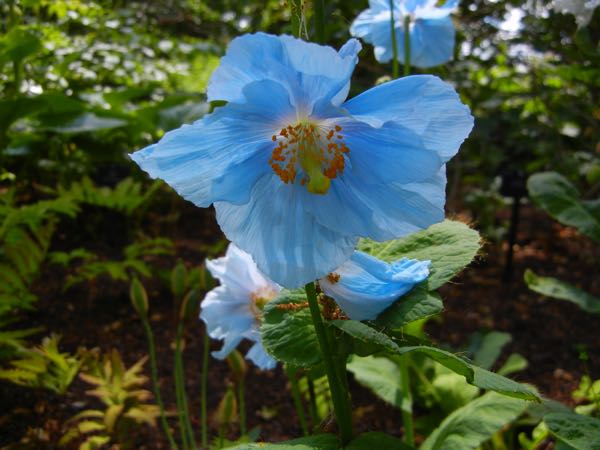 |
Guo, Q., Bai, R., Zhao, B., Feng, X., Zhao, Y., Tu, P. and Chai, X., 2016. An ethnopharmacological, phytochemical and pharmacological review of the genus Meconopsis. The American journal of Chinese medicine, 44(03), pp.439-462. Majid, A., Ahmad, H., Saqib, Z., Rahman, I.U., Khan, U., Alam, J., Shah, A.H., Jan, S.A. and Ali, N., 2020. Exploring threatened traditional knowledge; ethnomedicinal studies of rare endemic flora from Lesser Himalayan region of Pakistan. Revista Brasileira de Farmacognosia, 29, pp.785-792. |
| Mentha arvensis L. |
Pudina-jangli, Pudne |
Lamiaceae |
Herb |
Menthol, Menthone (Joshi et al., 2016) |
Aerial portion powder mixed with dilute curd (lassi) is given to cure cough, sore throat, indigestion and constipation. Constipation, Cough, Indigestion, Abdominal disorders, Diarrhoea, Rheumatic pain. Infusion of leaves in combination with seeds of Coriandrumsativumis given to increase memory power. |
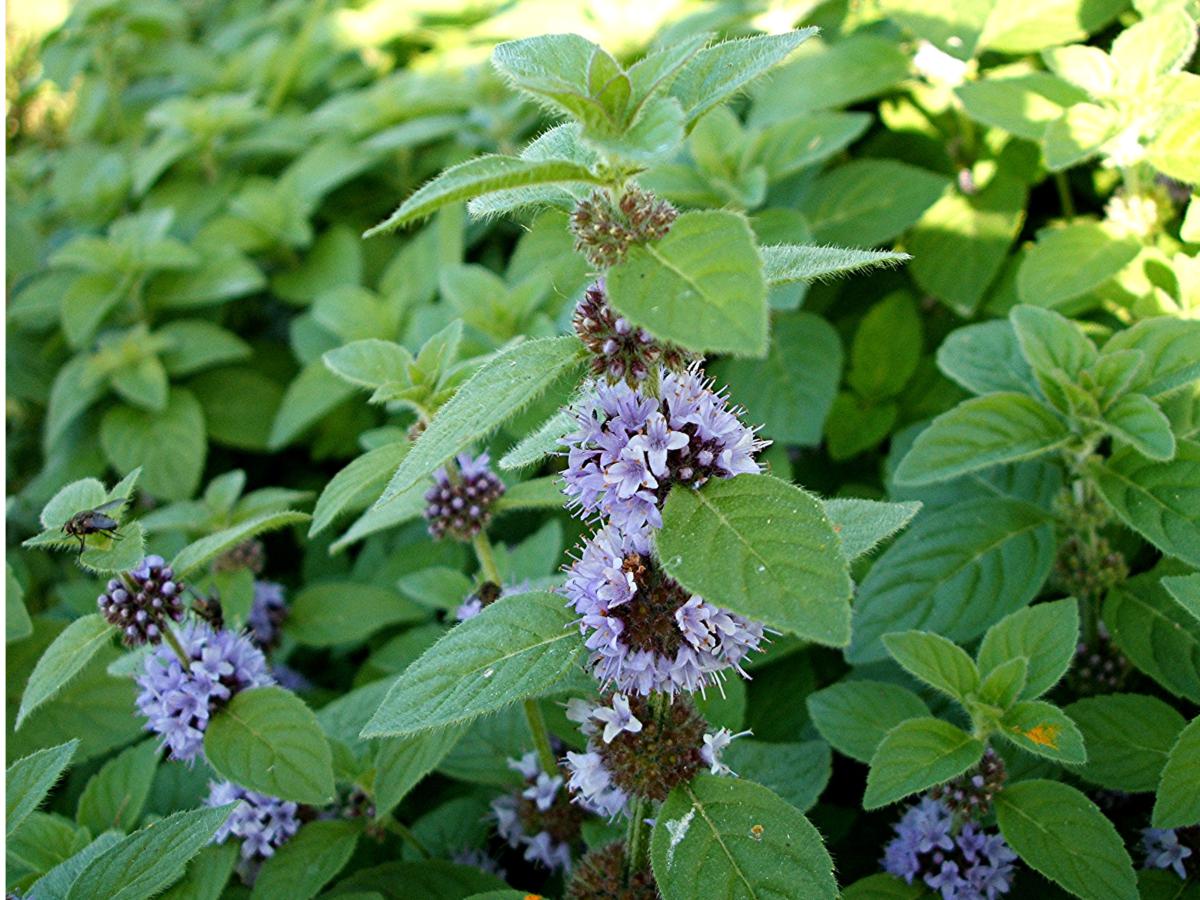 |
Joshi, R.K., Satyal, P., Setzer, W.N., 2016. Himalayan aromatic medicinal plants: a review of their ethnopharmacology, volatile phytochemistry, and biological activities. Medicines 3, 6. |
| Mentha longifolia L. |
Venni, Pudinakachh |
Lamiaceae |
Herb |
cis-Piperitone epoxide, Piperitenone oxide, Carvone, Limonene,
Pulegone, Menthone, Thymol, β-Thujone, Carvacrol, (E)-
Caryophyllene, Ulegone, Isomenthone, 1,8-Cineole, Borneol,
Piperitenone oxide (Golparvar et al., 2013)
|
Diarrhoea, Headache, Rheumatism, Vomiting, Intestinal worms, Fever, Tonsillitis. Decoction of the dried leaves is used as carminative. |
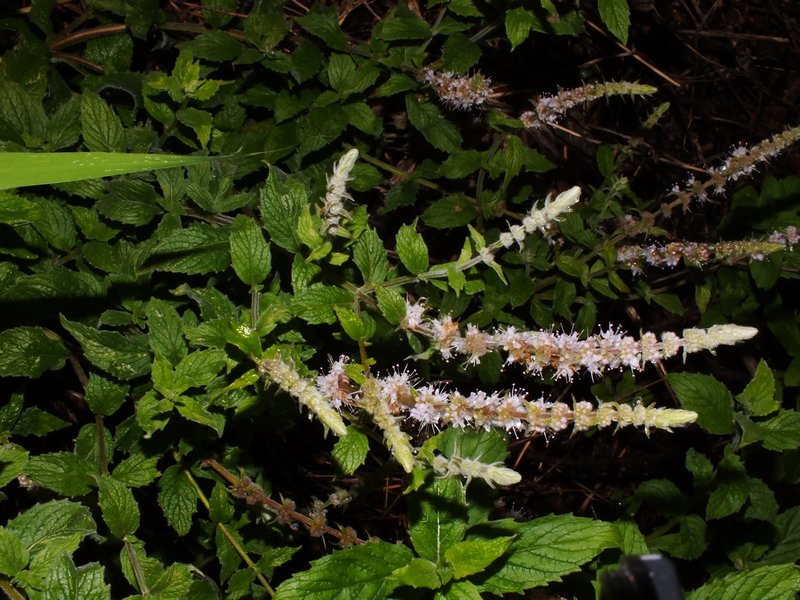 |
Golparvar, A.R., Hadipanah, A., Gheisari, M.M., 2013. Chemical analysis and Identification of the components of two ecotypes of (Mentha Longifolia L.) in Iran province. International Journal of Agriculture and Crop Sciences 5, 1946–1950. |
| Mentha piperita L. |
Pudina, Pudne |
Lamiaceae |
Herb |
Menthol, Menthone, Menthyl acetate, Myrcene; 1,8-Cineole Menthofuran (Paul and Datta, 2011) |
Diarrhoea, Nausea, Vomiting, Intestinal and Stomach problems |
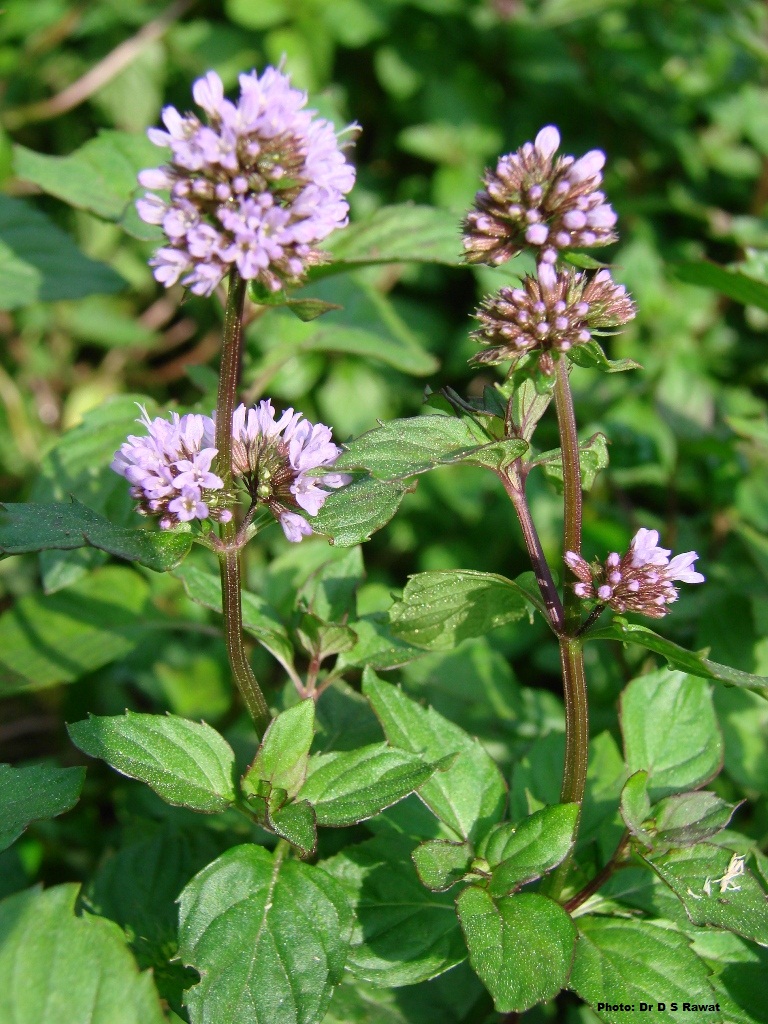 |
|
| Nepeta cataria L. |
Gand-e-soi, Brarigasse |
Lamiaceae |
Herb |
4a-α,7-α,7a-β-Nepetalactone; 1,8–Cineole, 4a-α, 7-β, 7a-α-
Nepetalactone; (E)-Caryophyllene; Citronellyl acetate (Morteza-
Semnani and Saeedi, 2004)
|
Dysentery, Fever, Toothache, Vomiting, Worms, Abdominal pain, Cough, Wounds. Decoction of shoot is used to treat dysentery and diarrhoea in the cattle. |
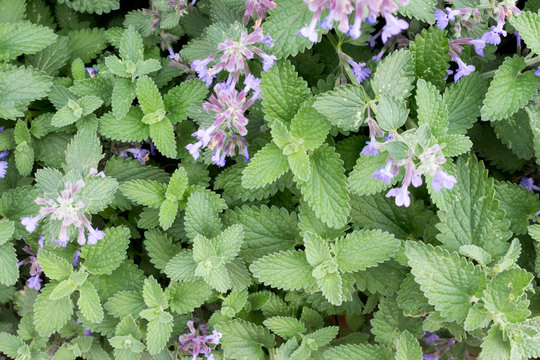 |
Morteza-Semnani, K., Saeedi, M., Akbarzadeh, M., 2016. Chemical composition of the essential oil of the flowering aerial parts of Lamium album L. Journal of Essenential Oil Bearing Plants 19, 773–777. |
| Nepeta discolour Royle ex Benth. |
Nyomalo, Shamalolo |
Lamiaceae |
Herb |
1,8-Cineole, β-caryophyllene, p-Cymene (Joshi et al., 2016) |
Cold, Cough, Fever. |
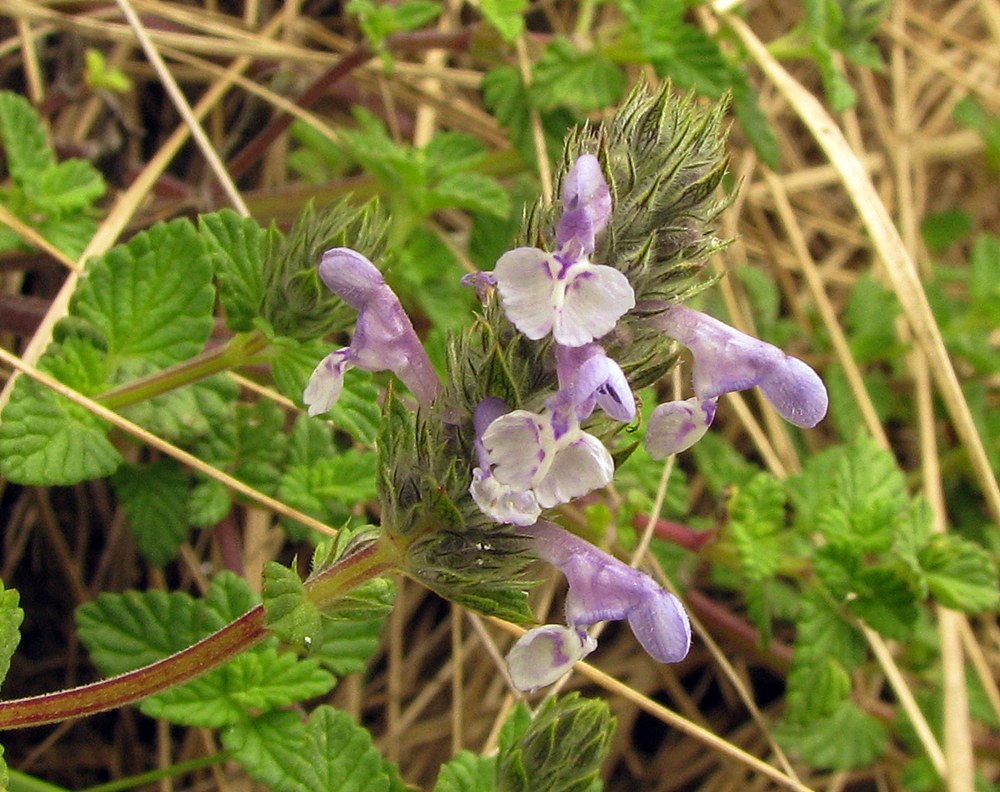 |
Joshi, R.K., Satyal, P., Setzer, W.N., 2016. Himalayan aromatic medicinal plants: a review of their ethnopharmacology, volatile phytochemistry, and biological activities. Medicines 3, 6.
|
| Nepeta erecta (Royle ex Benth.) Benth. |
Eripantso |
Lamiaceae |
Herb |
β-Caryophyllene, β-Caryophyllene oxide, Iridodial β-monoenol
acetate diastereomers, Iridodial β-monoenol acetate,
Isoiridomyrmecin (Bisht et al., 2012)
|
Dysentery, Stomach ache |
.jpg) |
Bisht, D.S., Joshi, S.C., Mathela, C.S., Padalia, R.C., 2012. Isoiridomyrmecin rich essential oil from Nepeta erecta Benth. and its antioxidant activity. Journal of Essential Oil Research 26, 29–35. |
| Nepeta govaniana (Wall. ex Benth.), Benth. |
Yellow catmint |
Lamiaceae |
Herb |
Isoiridomymecin, Pregeijerene, Geijerene, Germacrene D, − β-
Caryophyllene, Torreyol (Joshi et al., 2016)
|
Fungal diseases. |
,.jpg) |
Joshi, R.K., Satyal, P., Setzer, W.N., 2016. Himalayan aromatic medicinal plants: a review of their ethnopharmacology, volatile phytochemistry, and biological activities. Medicines 3, 6. |
| Nepeta laevigata (D. Don) Hand.-Mazz. |
Jatukpa, Longir |
Lamiaceae |
Herb |
Citronellol, β −Caryophyllene, Germacrene D (19.4%), α
−Bisabolol oxide B; 1,8-Cineole, Caryophyllene oxide, Manool
(Joshi et al., 2016)
|
Pneumonia, Dysentery. Intestinal disorders and urine infection. |
.jpg) |
Joshi, R.K., Satyal, P., Setzer, W.N., 2016. Himalayan aromatic medicinal plants: a review of their ethnopharmacology, volatile phytochemistry, and biological activities. Medicines 3, 6. |
| Ocimum basilicum L. |
Babre beol |
Lamiaceae |
Herb |
Methyl chavicol, Linolenic acid, Linalool, Estragole, Eugenol,
Tetradecanoic acid, n-Hexadecanoic acid, Phytol, Palmitin 2-
mono, Stigmasterol, β-Sitosterol (Ghani and Pai, 2015)
|
Fever, Hair fall, Headache, Muscular pain, Stomachache, Vomiting. |
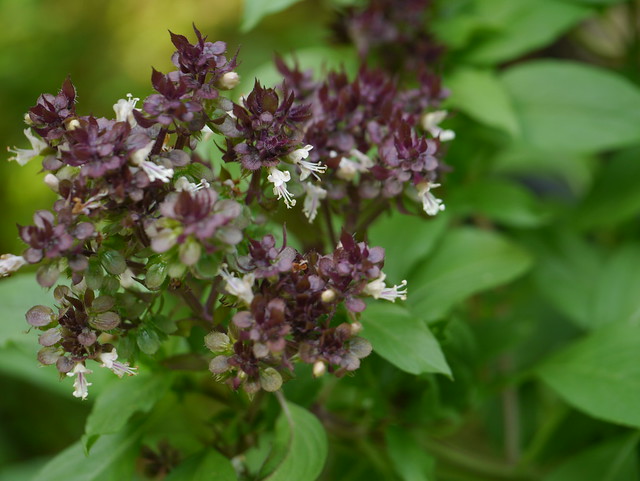 |
Ghani, S., Pai, S., 2015. Chemical composition, qualitative phytochemical screening and antioxidant potential of Ocimum basilicum L. essential oil. Indian Journal of Applied Research 5, 888–890. |
| Onosma hispidum Wall. Ex DC. |
Rattanjot |
Boroginaceae |
Herb |
4- hydroxy-3-methoxy cinnamic acid (ferulic acid) and 4-hydroxy-3-methoxy benzoic acid (vanillic acid) |
The crude extract and the isolated fractions in general were found significantly active against the tested species of streptococci, staphylococci and corynebacterium. |
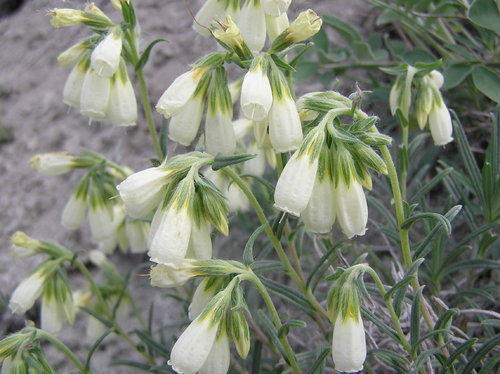 |
Naz, S., Ahmad, S., Rasool, S.A., Sayeed, S.A. and Siddiqi, R., 2006. Antibacterial activity directed isolation of compounds from Onosma hispidum. Microbiological research, 161(1), pp.43-48. |
| Orchis latifolia Linn. |
Nar-mada |
Orchidaceae |
Herb |
|
plant holds the reputation of being a ‘Vajikaran Rasayana’ the ayurvedic category of drugs having sexual stimulation properties |
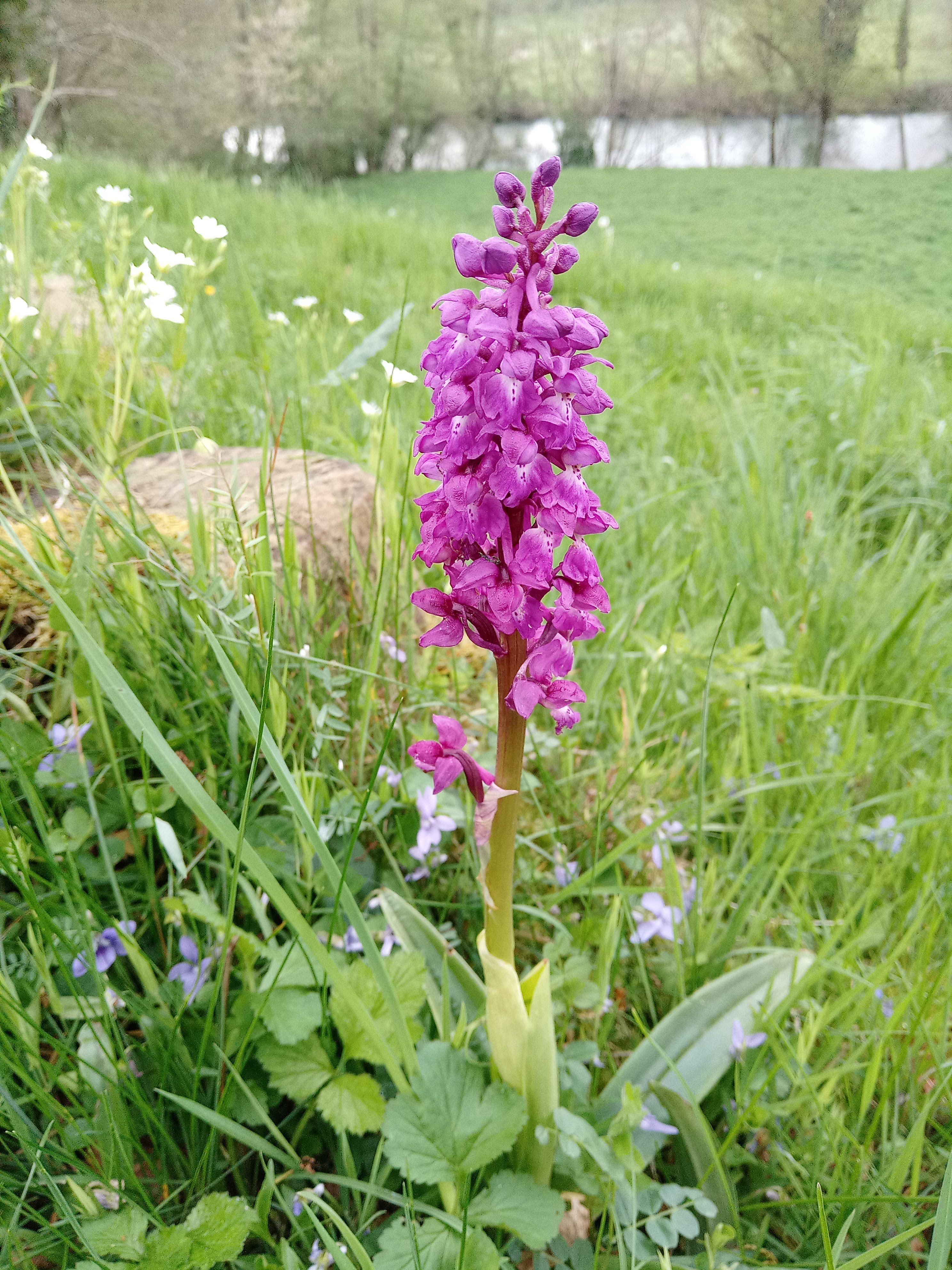 |
Thakur, M. and Dixit, V.K., 2008. Ameliorative effect of fructo-oligosaccharide rich extract of Orchis latifolia linn. on sexual dysfunction in hyperglycemic male rats. Sexuality and Disability, 26(1), pp.37-46. |
| Origanum vulgare Jones |
Beyar-i-gasse, Marzanjosh |
Lamiaceae |
Herb |
Origanol A and B, Ursolic acid, Oleanolic acid, β-Sitosterol
Triacontanol (Rao et al., 2013)
|
Plants have strong antioxidant activity. Fever, Menstrual suppression. |
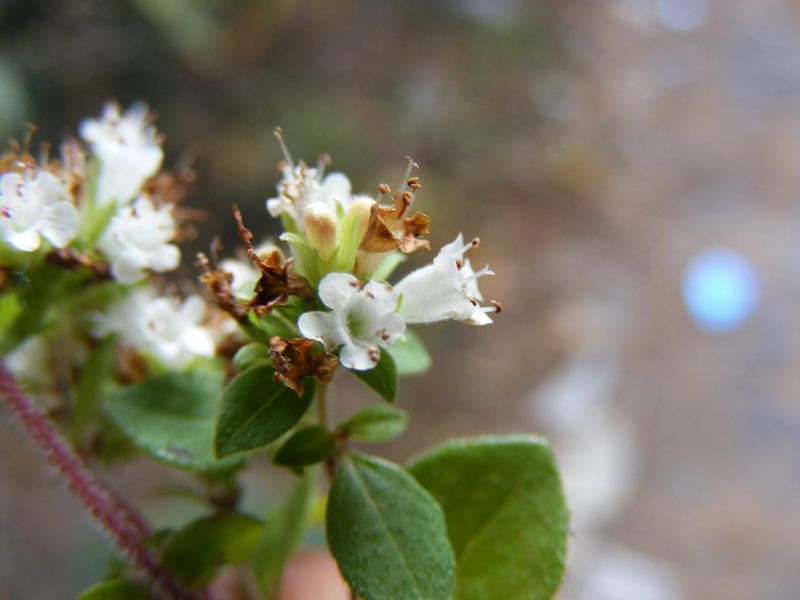 |
Rao, G.V., Mukhopadhyay, T., Annamalai, T., Radhakrishnan, N., Sahoo, M.R., 2013. Chemical constituents and biological studies of Origanum vulgare Linn. Pharmacognosy Research 2013, 143–145.
|
| Oxalis acetosella L. |
Chukchani |
Oxalidaceae |
Herb |
O. acetosella is very rich in β-carotene, ascorbic acid, tocopherols and xanthophylls, and that it is one of the best sources of flavonoids (flavonol glycosides and flavan-3-ols), especially rutin |
Leaf paste used to cure stomach and chest disorders in the cattle. |
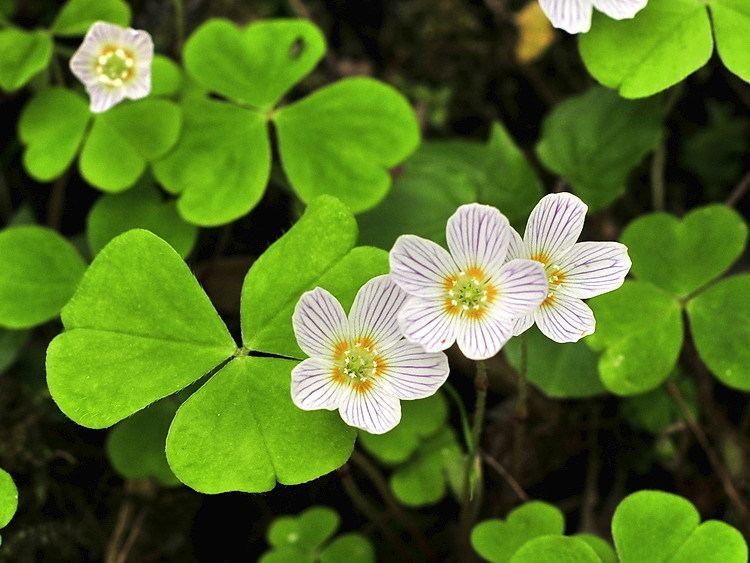 |
Šircelj, H., Mikulič-Petkovšek, M. and Batič, F., 2010. Antioxidants in spring leaves of Oxalis acetosella L. Food chemistry, 123(2), pp.351-357. |
| Oxalis corniculata |
Amrul |
Oxalidaceae |
Herb |
Carbohydrates and glycosides, phytosterols, phenolic compounds/tannins, flavonoids, proteins and aminoacids and volatile oils |
Antibacterial potential for the first time against important pathovars of phytopathogenic Xanthomonas pathovars. |
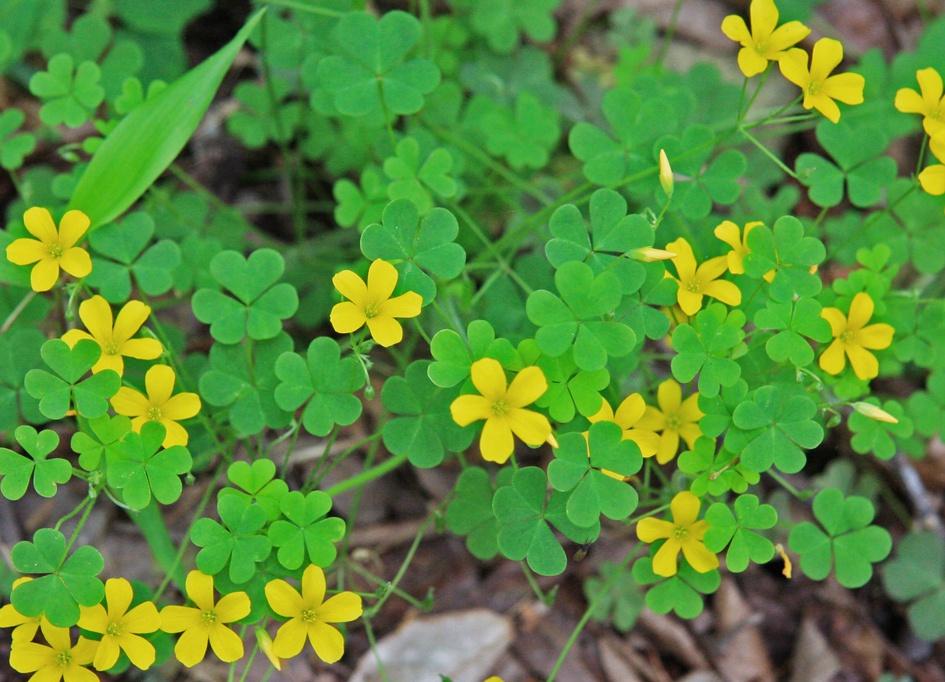 |
Raghavendra, M.P., Satish, S. and Raveesha, K.A., 2006. Phytochemical analysis and antibacterial activity of Oxalis corniculata; a known medicinal plant. My science, 1(1), pp.72-78. |
| Oxytropis cachemirianum |
Kashmir locoweed |
Oxalidaceae |
Herb |
|
|
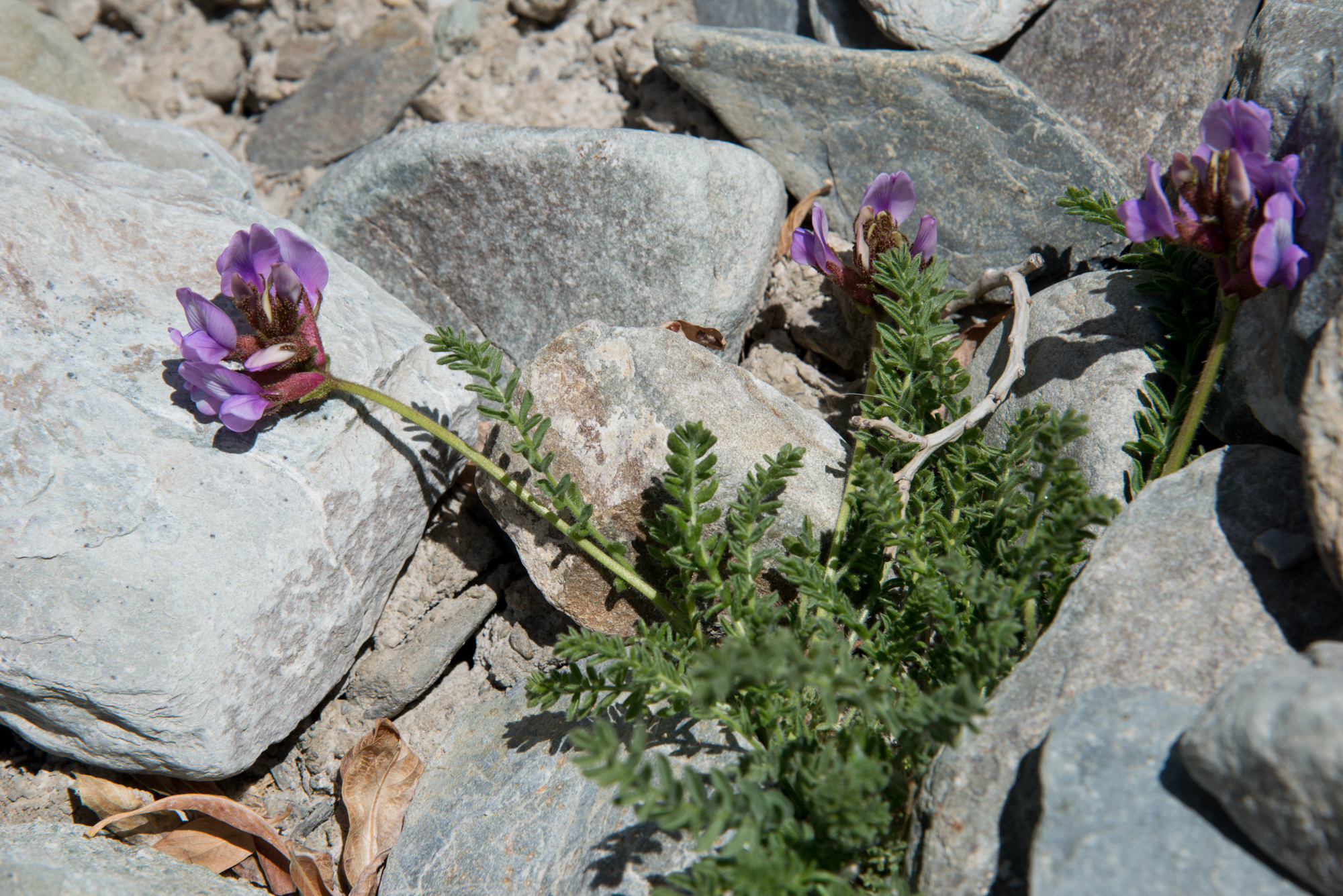 |
|
| Paeonia emodi Royle |
Kuklipot |
Paeoniaceae |
Herb |
Monoterpene glycosides occur in the form of paeonin A , paeonin B , paeonin C, wurdin , benzoyl wurdin, oxypaeoniflorin paeoniflorin, and lactiflorin. |
P. emodi is a medicinal plant of immense importance with a diverse pharmacological spectrum. There is a great scope for further screening of the plant against dropsy, Parkinson’s and other neurodegenerative disorders. The plant can also be evaluated against hyperlipidemia since oxidation of LDL leads to its
accumulation in the plasma and inhibits its clearance by liver.
|
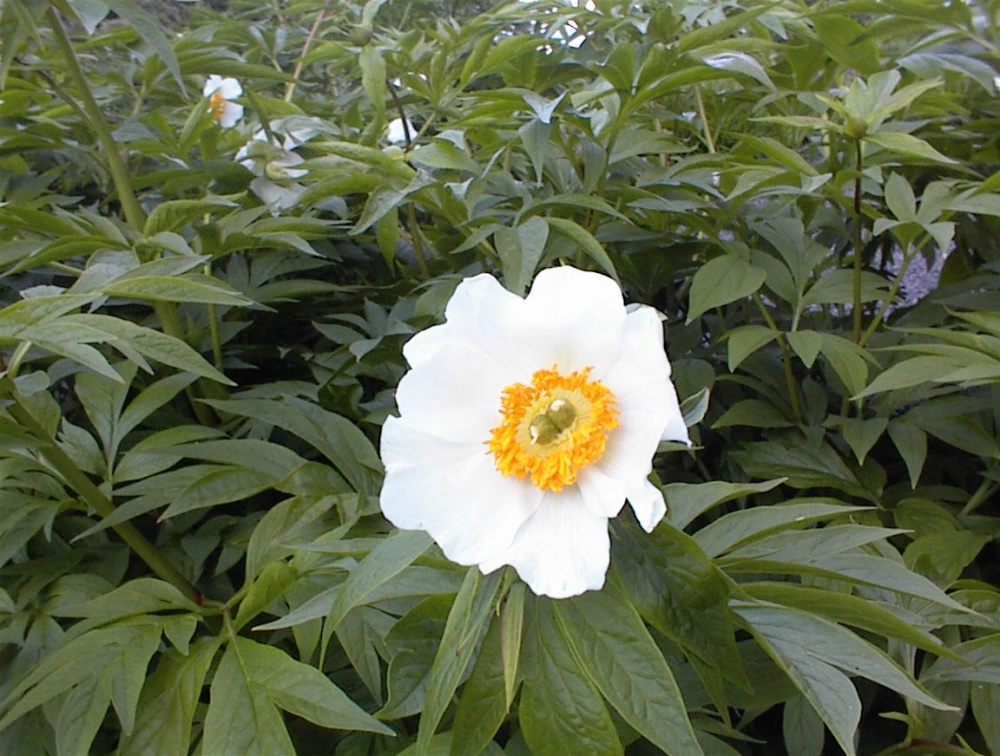 |
Zargar, B.A., Masoodi, M.H., Khan, B.A. and Akbar, S., 2013. Paeonia emodi Royle: Ethnomedicinal uses, phytochemistry and pharmacology. Phytochemistry letters, 6(2), pp.261-266. |
| Papaver rhoeus |
Common Poppy |
Papaveraceae |
Herb |
chemical analysis by TLC showed that the petals contain some anthocyanins, whereas no alkaloids were detected |
It can be consumed raw or cooked, and has been traditionally used to treat nervousness, insomnia, digestive and respiratory disorders, baldness, eye infections, as well as measles treatment. |
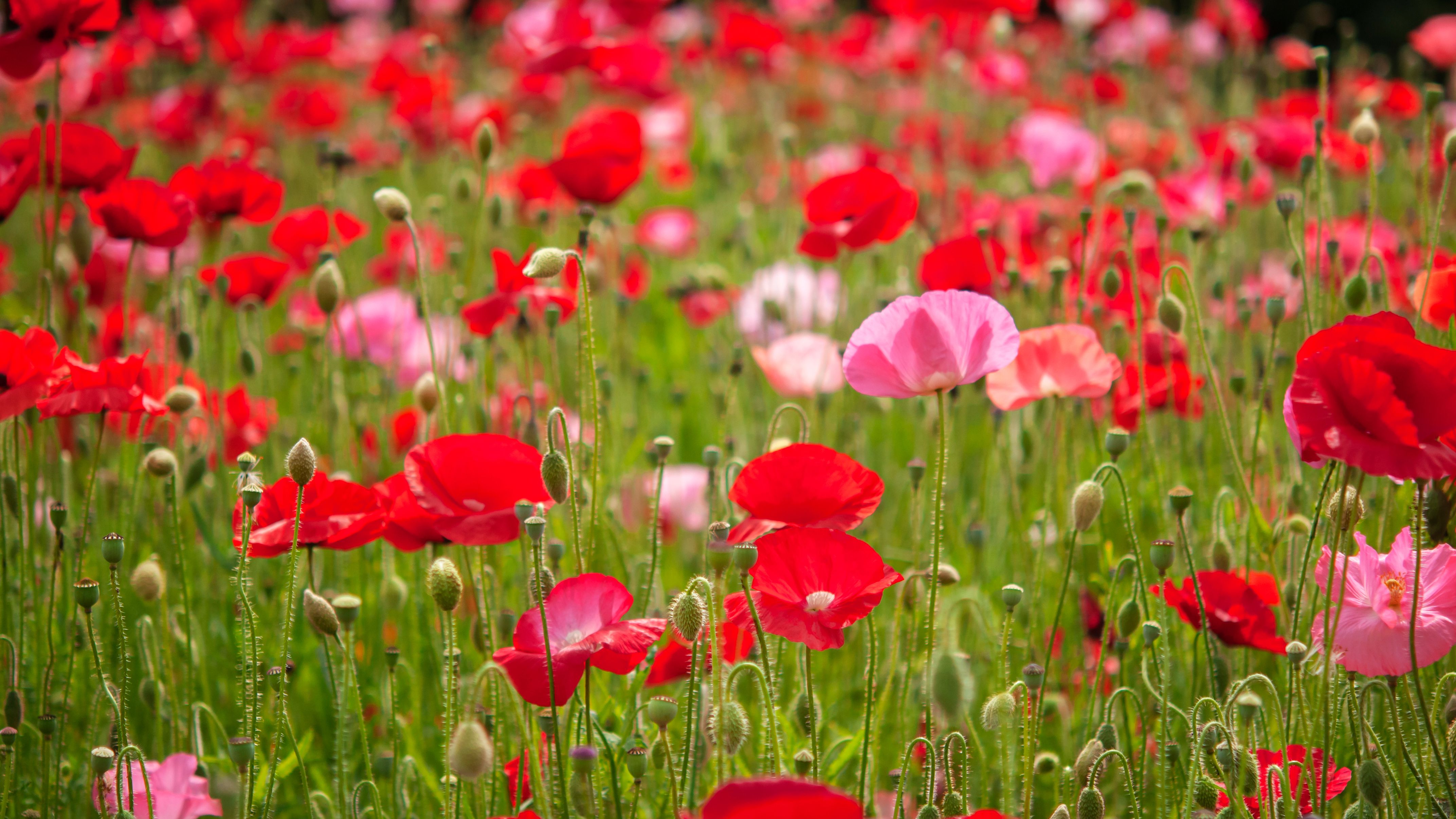 |
Soulimani, R., Younos, C., Jarmouni-Idrissi, S., Bousta, D., Khalouki, F. and Laila, A., 2001. Behavioral and pharmaco-toxicological study of Papaver rhoeas L. in mice. Journal of Ethnopharmacology, 74(3), pp.265-274.Grauso, L., de Falco, B., Motti, R. and Lanzotti, V., 2021. Corn poppy, Papaver rhoeas L.: a critical review of its botany, phytochemistry and pharmacology. Phytochemistry Reviews, 20, pp.227-248. |
| Papaver somniferum L. |
Khash khash, Afeen |
Papaveraceae |
Herb |
Morphine, Noscapine, Codeine, Thebaine, Papaverine, Narcotine
(Stranska et al., 2013)
|
Diarrhoea, Bronchitis, Pain killer, Male potency, Stomach disorder, Cough. Tea prepared from the fruit cover(1-2 gms) is used to cure the dry cough. For pain, dried milk of whole plant is taken. For cancer, grinded seed powder or oil of seeds is taken in small amounts. |
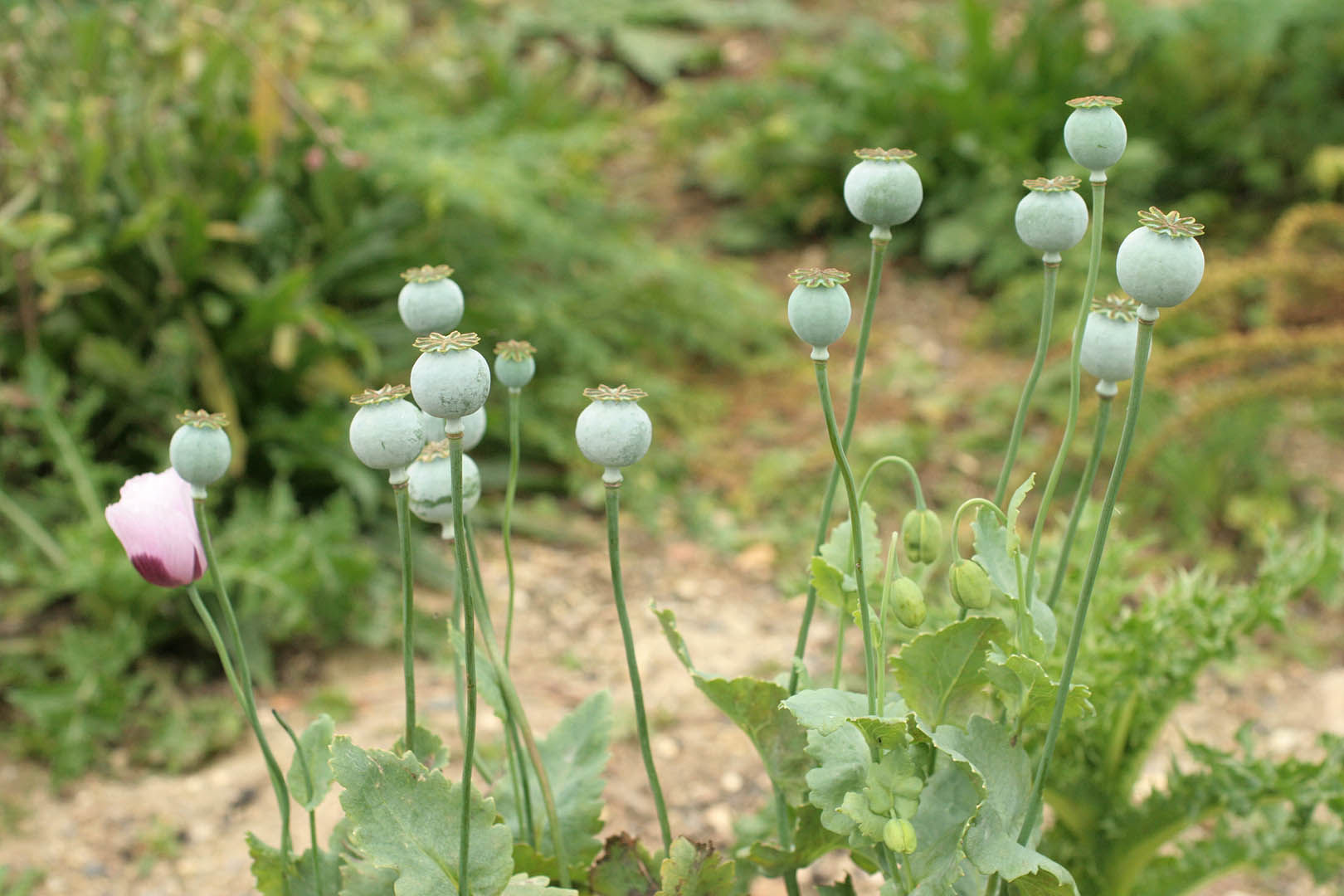 |
Stranska, I., Skalicky, M., Novak, J., Matyasova, E., Hejnak, V., 2013. Analysis of selected poppy (Papaver somniferum L.) cultivars, pharmaceutically important alkaloids. Industrial Crops and Products 41, 120–126. |
| Paraquilegia microphylla |
Social Worker |
Ranunculaceae |
Herb |
Two new triterpene saponins, paraquinosides A (1) and B (2) were isolated from the aerial parts of Paraquilegia microphylla |
|
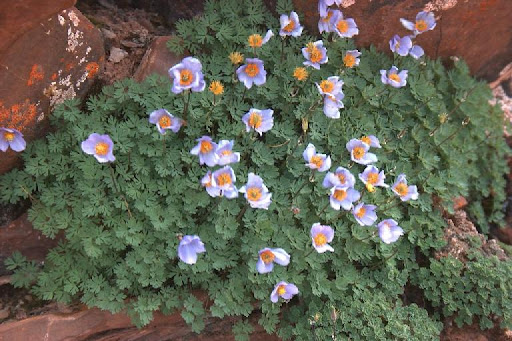 |
Xu, K., Zhang, P., Liao, X., Peng, S., Wang, M. and Ding, L., 2010. Two new triterpene saponins from the aerial parts of Paraquilegia microphylla. Fitoterapia, 81(6), pp.581-585. |
| Pedicularis pectinata Wall. |
Khara |
Scrophulariaceae |
Herb |
fatty acids, alkaloids, steroids, lignans, neo-lignans, tannins, ionones, phenylpropanoid glycosides, phenylethanoid glycosides, flavonoids, xanthones, iridoids, seco-iridoids, phenyl-glycosides, organic acids, polyols, saccharides, and amino acids. |
To cure the Swellings and stomach pain due to intestinal infection |
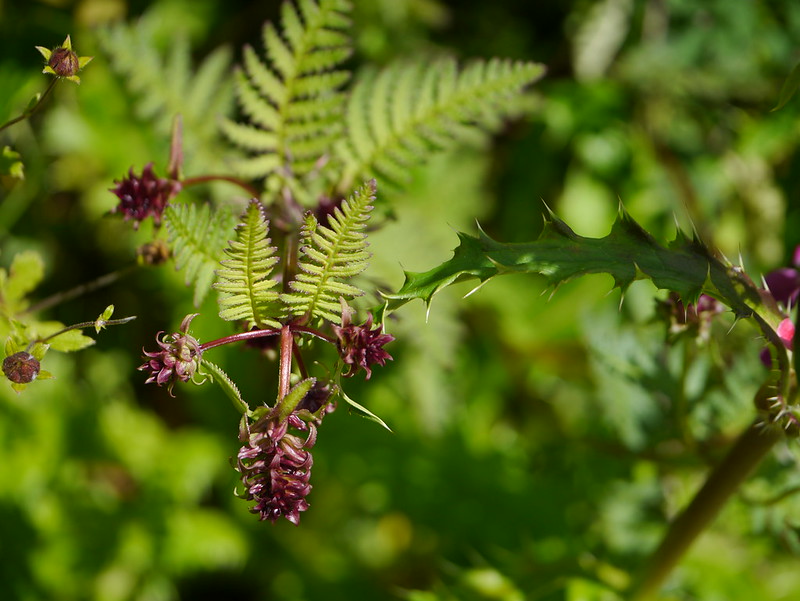 |
Frezza, C., Venditti, A., Toniolo, C., De Vita, D., Serafini, I., Ciccòla, A., Franceschin, M., Ventrone, A., Tomassini, L., Foddai, S. and Guiso, M., 2019. Pedicularis L. genus: Systematics, botany, phytochemistry, chemotaxonomy, ethnopharmacology, and other. Plants, 8(9), p.306. Singh, K.N., 2012. Traditional knowledge on ethnobotanical uses of plant biodiversity: a detailed study from the Indian western Himalaya. Biodiversity Research and Conservation, 28, p.63. |
| Pedicularis pyramidata |
Pyramid Lousewort |
Scrophulariaceae |
Herb |
Flavonoids,Polyphenols,glycosaponins |
antiplasmodic, antimicrobial |
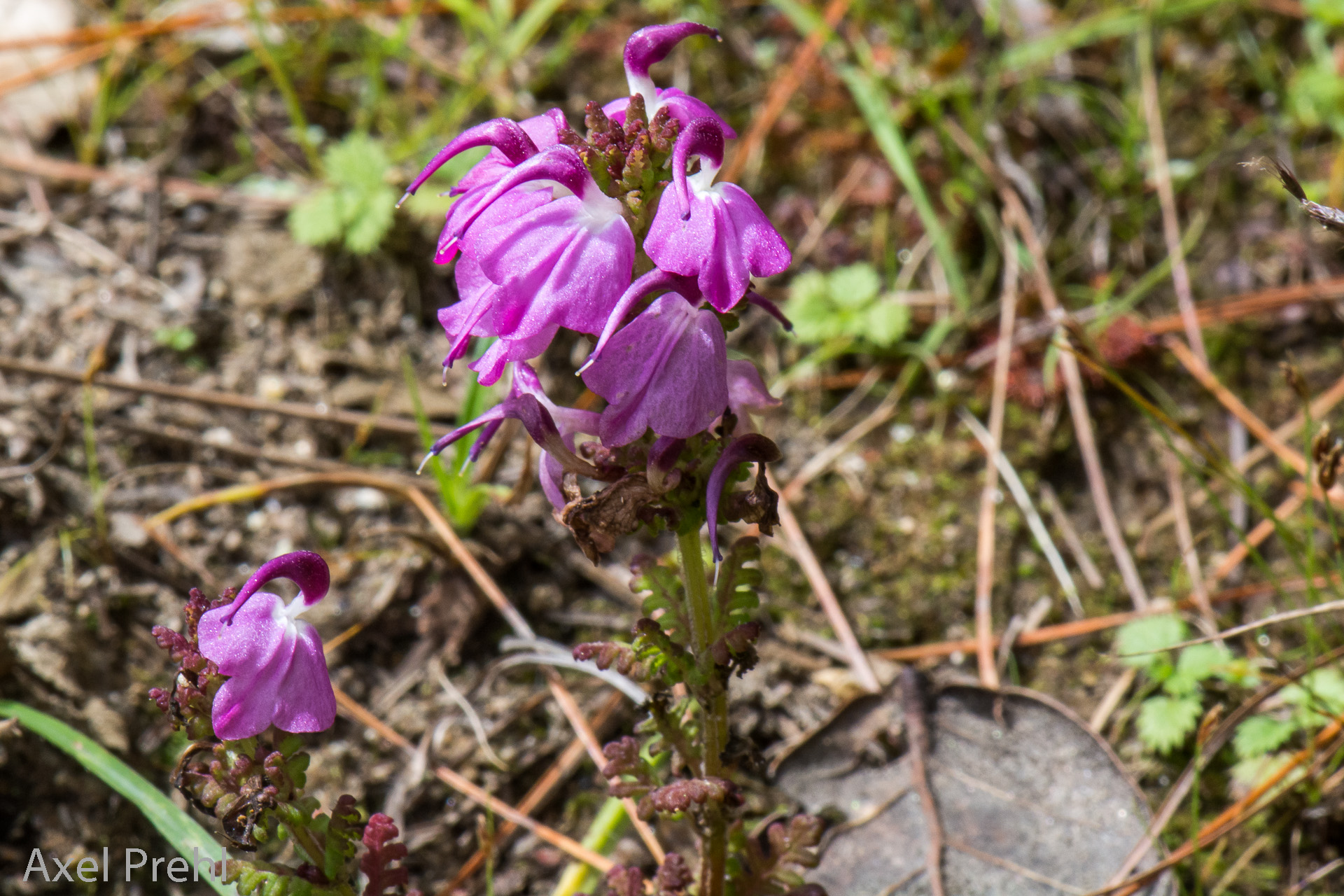 |
|
| Peganum harmala |
Wild rue |
Nitrariaceae |
Herb |
harmalol, harmaline, and harmine. Harmine is the most studied among these naturally occurring alkaloids |
P. harmala has been used intraditional medicines for the relief of pain and as an antiseptic agent. P. harmala also have antibacterial, antifungal, antiviral, antioxidant, antidiabetic, antitumor, antileishmanial, insecticidal and cytotoxic activities and hepatoprotective and antinociceptive effects. |
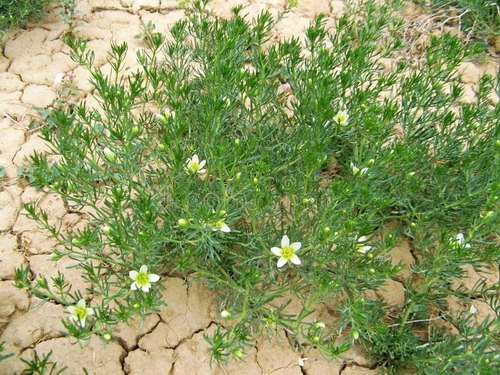 |
Asgarpanah, J. and Ramezanloo, F., 2012. Chemistry, pharmacology and medicinal properties of Peganum harmala L. African Journal of pharmacy and pharmacology, 6(22), pp.1573-1580. |
| Persicaria alpina (All.) H. Gross |
Tsokemuth |
Polygonaceae |
Herb |
GC-MS analysis revealed thirteen main compounds as dodecanal (54%), decanal (15%), trans-caryophyllene (8%), cyclododecane (7%) and α-humulene (5%). |
Leaf paste used to treat indigestion in the cattle. |
%20H.%20Gross.jpg) |
|
| Phlomis bracteoasa |
Purple Jerusalem Sage |
Lamiaceae |
Herb |
Literature survey of Phlomis bracteosa revealed the presence of different classes of natural product including (monoterpene, diterpene, triterpene, flavanoid and saponin. |
The plant is traditionally reported for its use for the treatment of Bone fractures, Sinus congestion, lymp fluid disorder and indigestion |
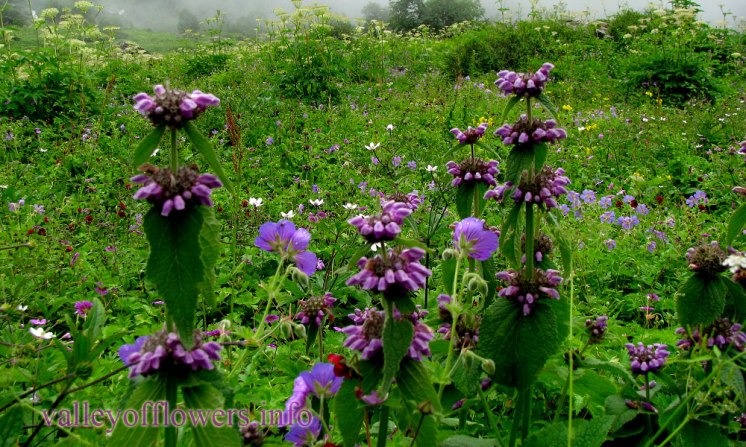 |
Ullah, R., Hussain, I. and Ahmad, S., 2013. Phytochemical and biological evaluation of phlomis bracteosa: a review. Life Science Journal, 10(7s). |
| Phytolacca acinosa |
Indian poke |
Phytolaccaceae |
Herb |
A new triterpenoid saponin from the roots of Phytolacca acinosa |
Rhizome is powdered & consumed as solutionwhile leaves and barks are crushed& extract is applied externally on the affected area. |
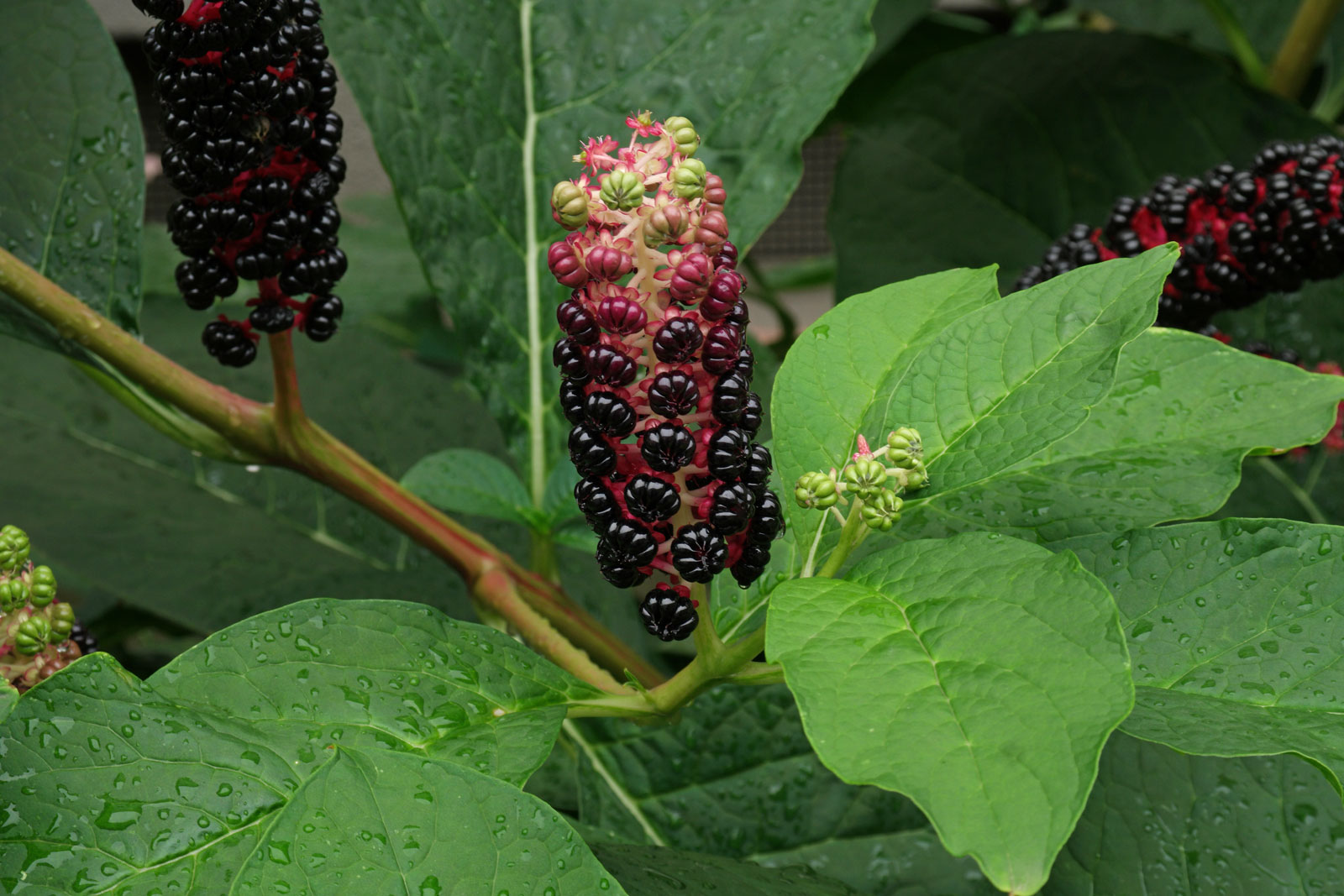 |
Chetri, B.K., Wangdi, P. and Penjor, T., 2018. Ethnomedicinal practices in kilikhar, mongar. Asian Plant Research Journal, pp.1-13. |
| Picrorhiza kurroa Royle ex Benth. |
Kod, Kutki |
Scrophulariaceae |
Herb |
Picroside-I, II,III, IV, V; Picrorhizin, Kutkoside, Kurrin, Kuthinol,
Kutkiol, Kutkisterol, Kutkoside, Androsin, Apocynin,
Cucurbitacin, D-Mannitol (Bhattacharjee et al., 2013)
|
Dropsy, Fever, Rheumatic arthritis, Intestinal infection, Joint pain, Roundworm, Stomach problems, Whooping Cough, Bronchial asthma, Gynaecological disorders, Jaundice, Liver ailments. Powdered roots are given to cure hepatic complaints especially in Jaundice. |
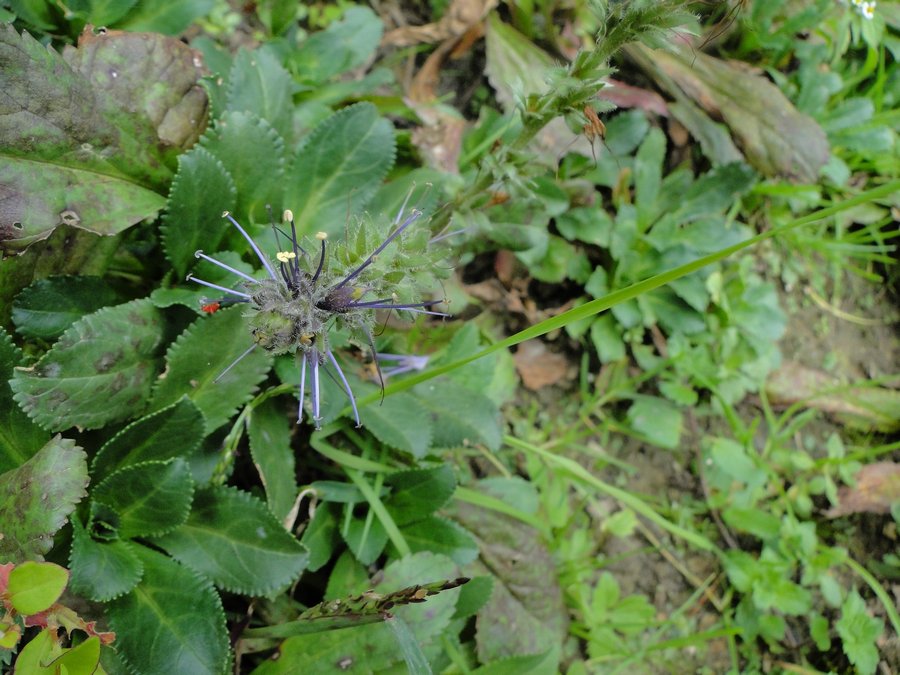 |
Bhattacharjee, S., Bhattacharjee, S., Bhattacharya Jana, S., Baghel, D.S., 2013. A review on medicinally important species of Picrorhiza. International Journal of Pharmaceutical Research and Bio-science 2, 1–16. |
| Pimpinella diversifolia DC. |
Hyo-kachh |
Apiaceae |
Herb |
Almost 78% of the oil is made up of eight phenylpropanoids with oxygen substituents at C-2 and C-5 of the aromatic ring; the remaining 20% is made up of C10 (5.8%), C12 (6.5%) and C15 (6.7%) hydrocarbons. Oxygenated terpenes including 4 unidentified sesquiterpene alcohols make up 2.1% of the oil. |
Hot aqueous extract is used as carminative. |
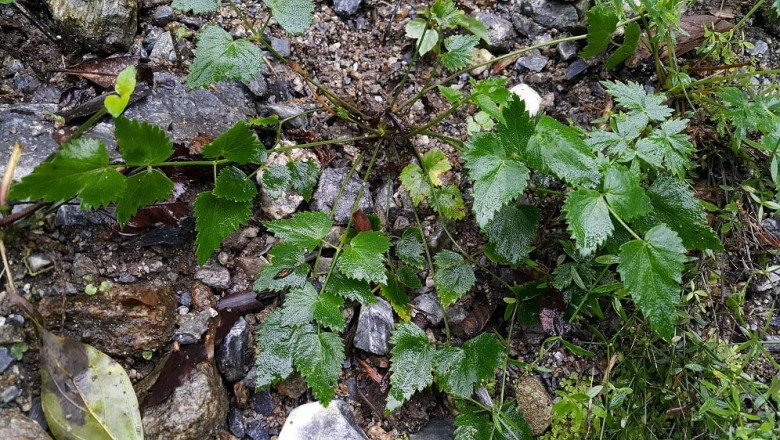 |
|
| Plantago lanceolata L. |
Gul, Phatal Kachh |
Plantaginaceae |
Herb |
p-hydroxybenzoic, vanillic, gallic and chlorogenic acid, besides apigenin, luteolin and luteolin-7-O-glucoside |
antioxidant, anti-inflammatory and cytotoxic activity |
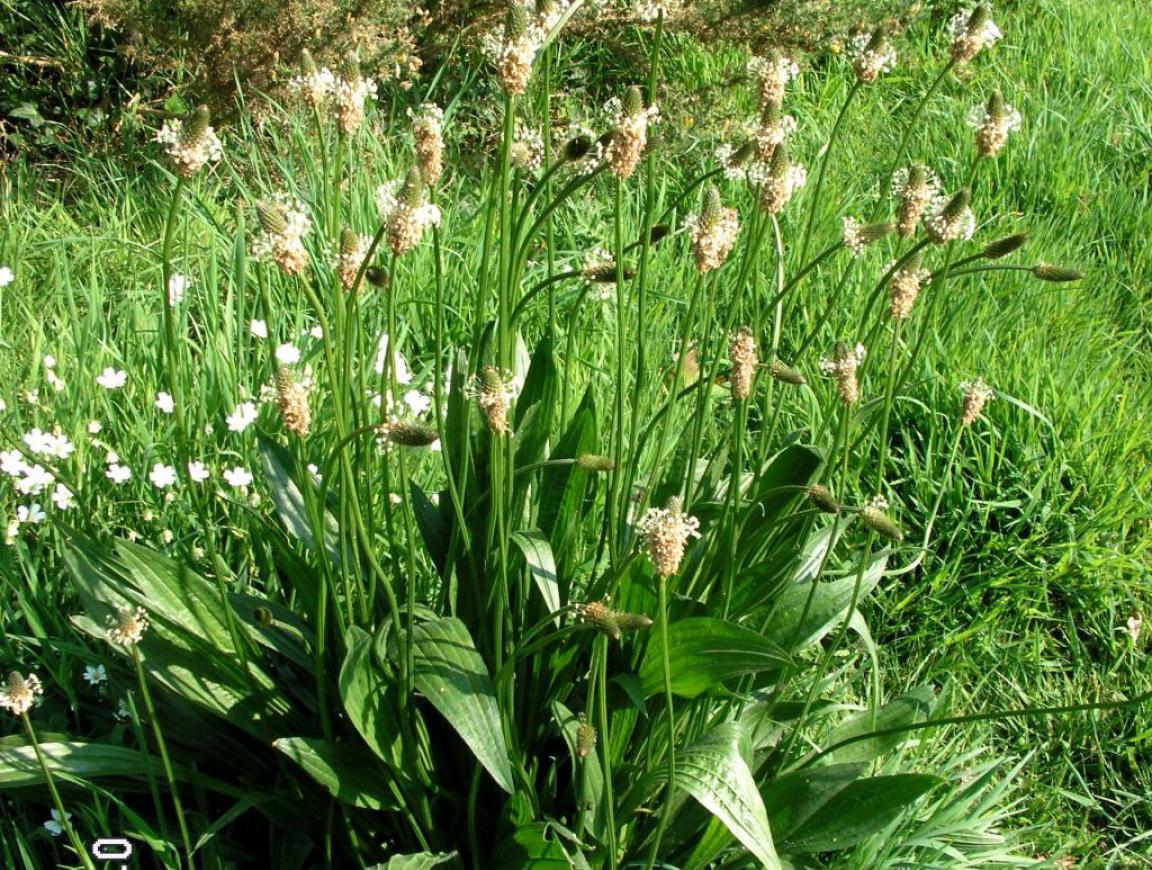 |
Beara, I.N., Lesjak, M.M., Orčić, D.Z., Simin, N.Đ., Četojević-Simin, D.D., Božin, B.N. and Mimica-Dukić, N.M., 2012. Comparative analysis of phenolic profile, antioxidant, anti-inflammatory and cytotoxic activity of two closely-related Plantain species: Plantago altissima L. and Plantago lanceolata L. LWT-Food Science and Technology, 47(1), pp.64-70. |
| Plantago major |
Broadleaf plantain |
Plantaginaceae |
Herb |
Flavonoids, alkaloids, terpenoids, phenolic
acid derivatives, iridoid glycosides, fatty acids, polysaccharides and vitamins
|
Plantago major is effective as a woundhealer, as well as an antiulcerative, antidiabetic, antidiarrhoeal, anti-inflammatory, antinociceptive, antibacterial, and antiviral agent. It also combats fatigue and cancer, is an antioxidant and a free radical scavenger. |
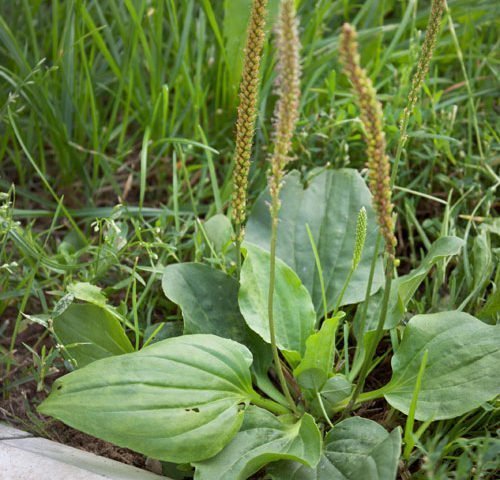 |
Adom, M.B., Taher, M., Mutalabisin, M.F., Amri, M.S., Kudos, M.B.A., Sulaiman, M.W.A.W., Sengupta, P. and Susanti, D., 2017. Chemical constituents and medical benefits of Plantago major. Biomedicine & Pharmacotherapy, 96, pp.348-360. |
| Plectranthus rugosus Wall |
Sloi |
Lamiaceae |
Shrub |
major compounds were germacrene-D (9.7%), β-caryophyllene (7.6%), dehydroabietane (5.2%), ar-curcumene (5.0), trans-ferruginol (3.3%), α-cadinol (3.2%), T-muurolol (2.3%), p-Cymene (3.2%) and γ-terpinene (2.0%). |
The essential oil of Rabdosia rugosus showed insignificant anti-inflammatory and analgesic activity but shows significant antipyretic, myorelaxant and antimicrobial activity. |
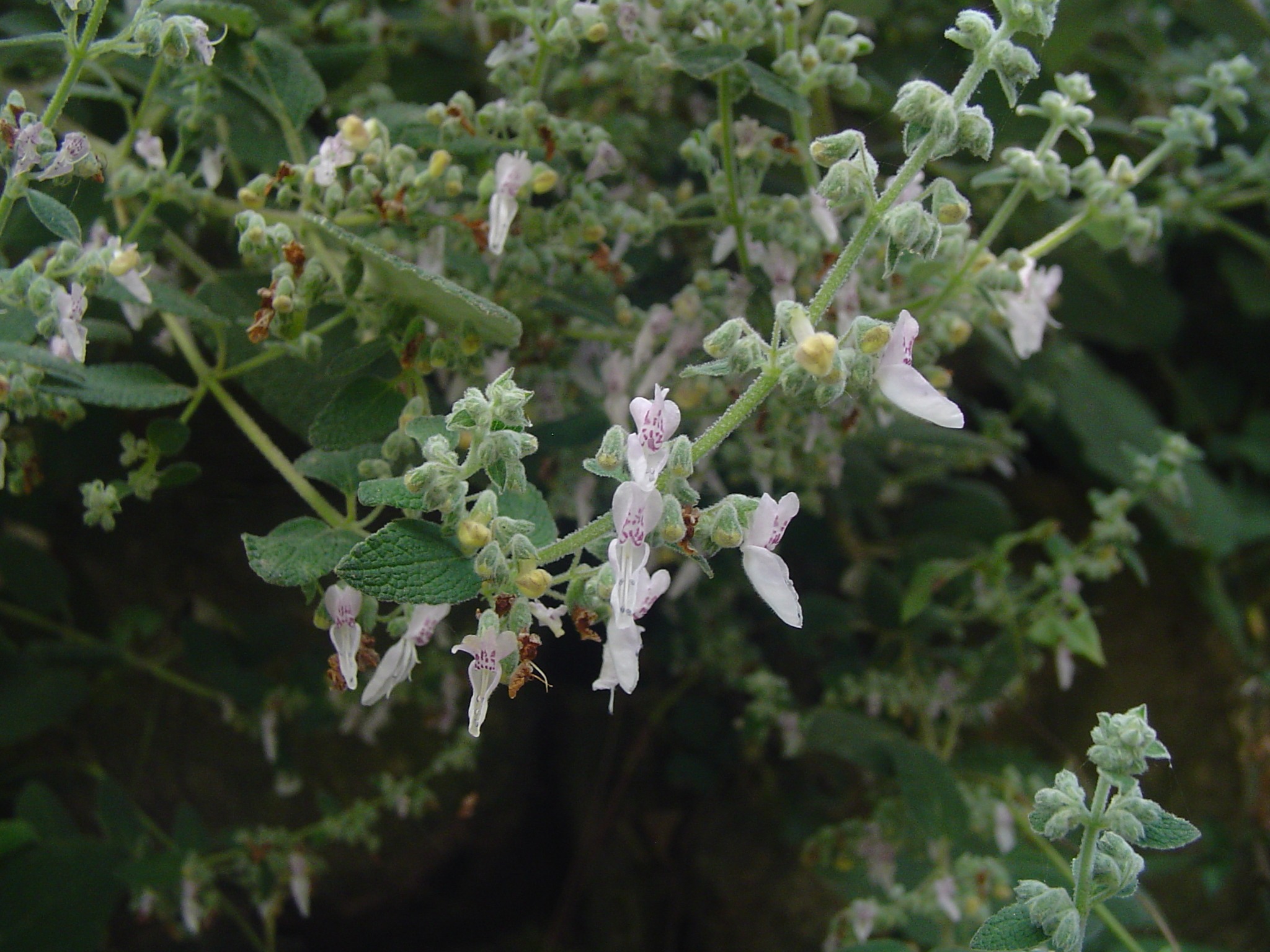 |
Singh, P., Kumar, R., Prakash, O., Pant, A.K., Kumar, M., Isidorov, V.A. and Szczepaniak, L., 2019. Chemical composition, anti-inflammatory, analgesic, antipyretic, myorelaxant, antibacterial and antifungal activity of rabdosia rugosus wall.(Syn. Plectranthus rugosus Wall.). Journal of Medicinal Herbs and Ethnomedicine, 5, pp.8-15. |
| Pleurospermum candollei |
Paper Cup Flower |
Apiaceae |
Herb |
luteolin 7-O-glucoside (1), oxypeucedanin hydrate (2), pabulenol (3), bergapten (4), heptadecanoic acid (5), (E)-isoelemicin (6), trans-asarone (7), α-linolenic acid (8), and isoimperatorin (9) |
Whole plant is commonly used for abdominal problems, stomach disorders, decrease cholesterol, blood pressure, heart problems and gastric troubles. |
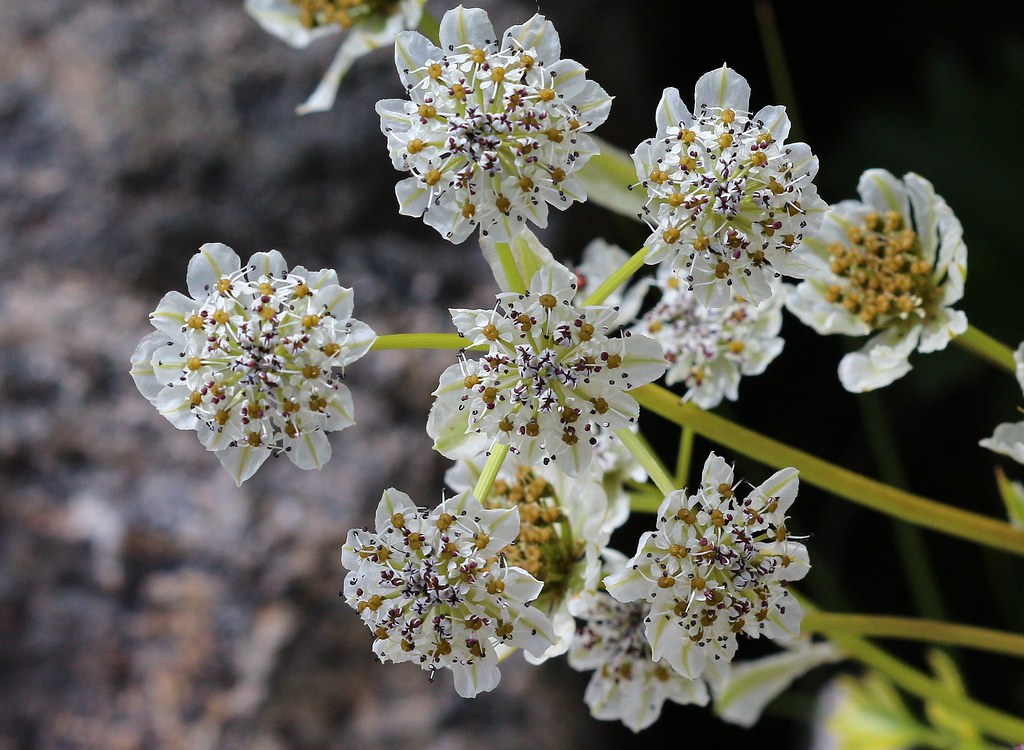 |
Khan, S.W., Abbas, Q., Hassan, S.N., Khan, H. and Hussain, A., 2015. Medicinal Plants of Turmic Valley (Central Karakoram National Park), Gilgit-Baltistan, Pakistan. Journal of Bioresource Management, 2(2), p.11. |
| Podophyllum hexandrum Royle |
Van vangun, Ban kakri |
Podophyllaceae |
Herb |
Podophyllotoxin, Tannin, Podophyllin, Podophyllic acid,
Podophylloquercin, Peltatin, Picropodophyllin (Hameed et al., 2014)
|
Skin diseases, Boils, Diarrhoea, Gynaecological disorders, Liverailments, Menstrual disorder, Skin diseases, Tumour, Acidity. The pericarp of mature red fruit used to treat eye wounds of cattle. Powdered roots are used in hepatic enlargement. For acidity and diarrhea juice of fruits or extract of roots is taken. For heart diseases, extract of root is taken. |
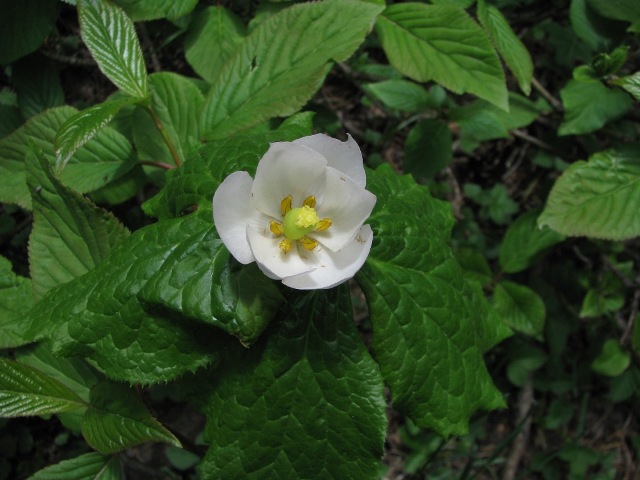 |
Hameed, I., Ullah, A., Murad, W., Khan, S., 2014. Podophyllum hexandrum Royle. Journal of Agricultural Science 4, 331–338.
|
| Polygonatum oppositifolium (Wall.) Royle |
Doodedaani |
Asparagaceae |
Herb |
|
|
%20Royle.jpg) |
Hynniewta, S.R. and Kumar, Y., 2008. Herbal remedies among the Khasi traditional healers and village folks in Meghalaya. |
| Polygonatum verticillatum (L.) All. |
Mishri, Mithadodhu, Doodedaani |
Asparagaceae |
Herb |
α-Bulnesene, Linalyl acetate, Eicosadienoic, Pentacosane,
Piperitone, Docasane, Diosgenin, Santonin, Calarene (Saboon
et al., 2016)
|
Menstrual irregularities, Urinary infections, Backache. Ariel part given to milch animals to increase milk yield. |
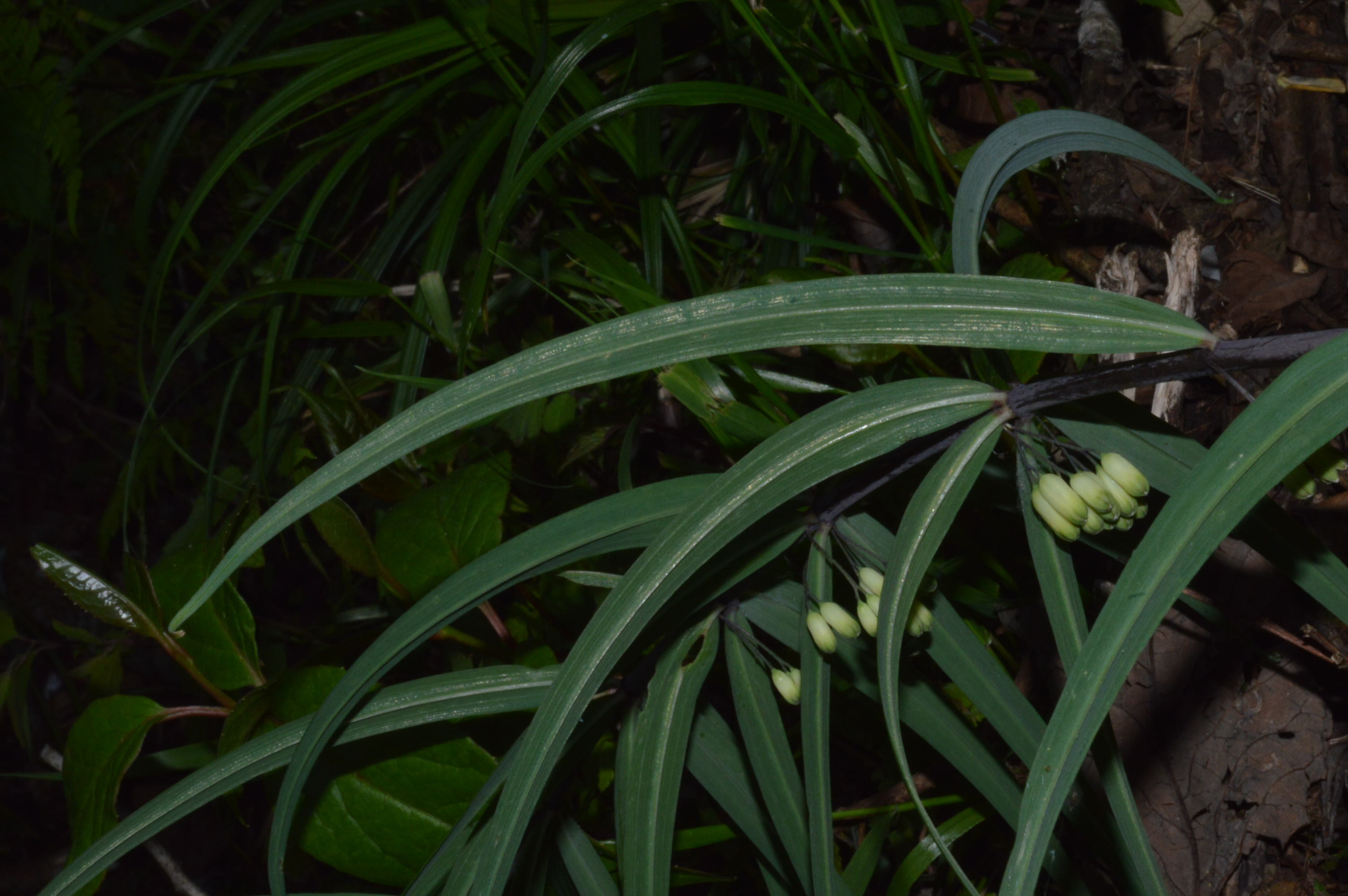 |
Saboon, Bibi, Y., Arshad, M., Sabir, S., Shoaib, M., Amjad, et al., 2016. Pharmacology and biochemistry of Polygonatum verticillatum, A review. Journal of Coastal Life Medicine 4, 406–415.
|
| Polygonum affinis. |
The Himalayan bistort |
Polygonaceae |
Herb |
|
|
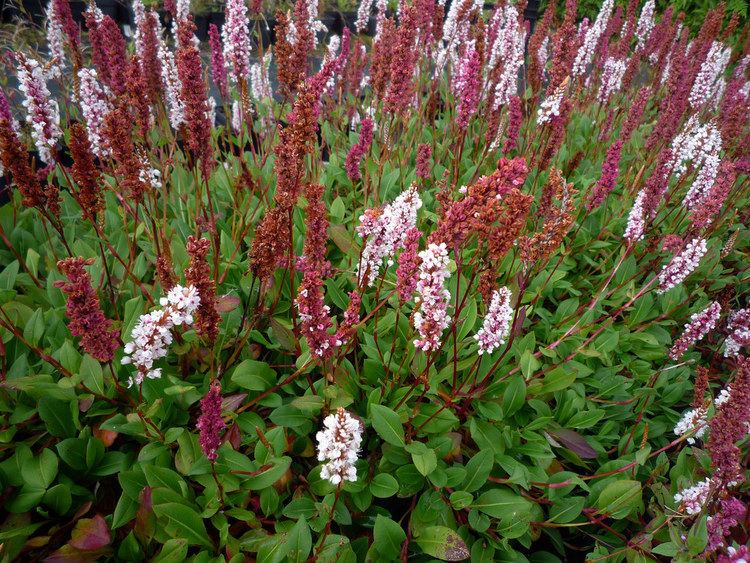 |
|
| Polygonum viviparum Linn. |
Churkee |
Polygonaceae |
Herb |
|
possesses anti-inflammatory actions in macrophages and works through a novel mechanism involving Nrf2 actions and HO-1. |
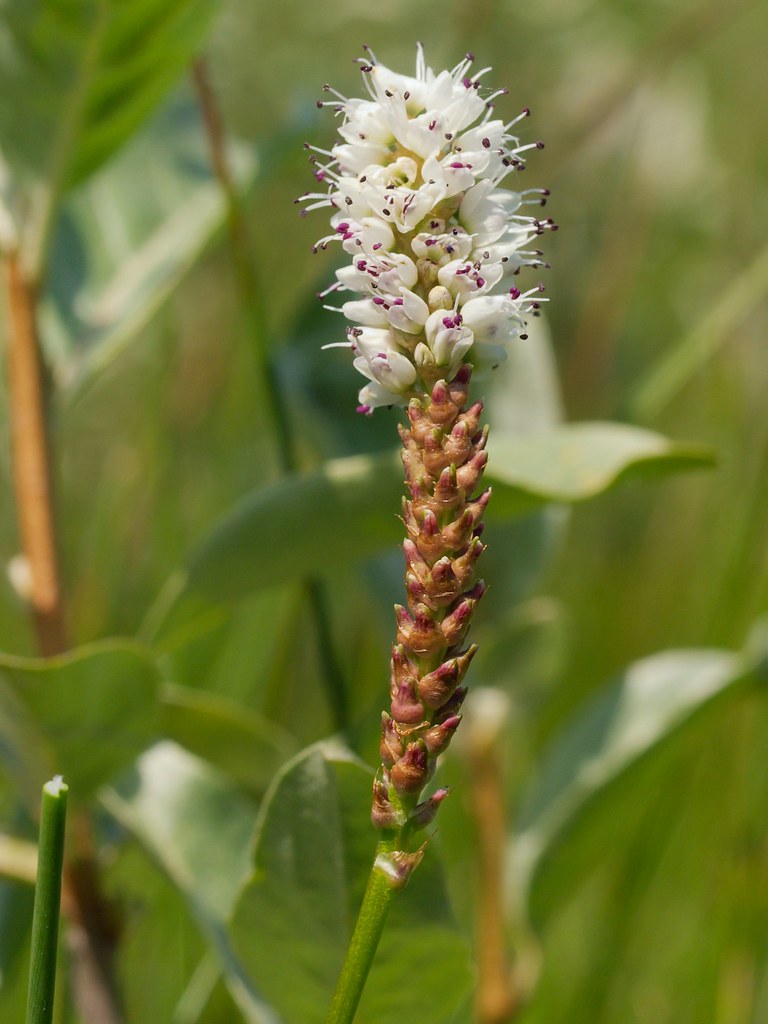 |
Cheng, H.W., Lee, K.C., Cheah, K.P., Chang, M.L., Lin, C.W., Li, J.S., Yu, W.Y., Liu, E.T. and Hu, C.M., 2013. Polygonum viviparum L. inhibits the lipopolysaccharide‐induced inflammatory response in RAW264. 7 macrophages through haem oxygenase‐1 induction and activation of the Nrf2 pathway. Journal of the Science of Food and Agriculture, 93(3), pp.491-497. |
| Polymonium caerulum |
Jacob's-ladder |
Polemoniaceae |
Herb |
GC–MS performed after silanization enabled the identification of carbohydrates, fatty acid esters, amino acids and carboxylic acids |
antimicrobial, antimalarial, anti-leishmanial and antitrypanosomaL activity, cytotoxicity towards mammalian cells – HEK293 and Vero cell lines, both originating from kidney and also against pharyngeal squamous cell carcinoma. |
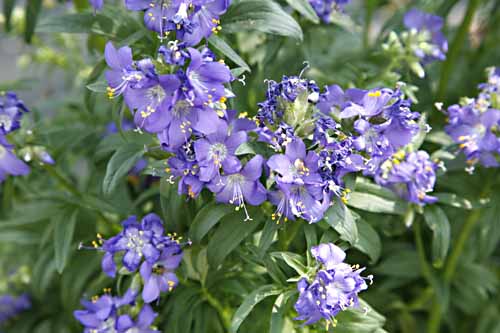 |
Łaska, G., Sieniawska, E., Świątek, Ł., Zjawiony, J., Khan, S., Boguszewska, A., Stocki, M., Angielczyk, M. and Polz-Dacewicz, M., 2019. Phytochemistry and biological activities of Polemonium caeruleum L. Phytochemistry Letters, 30, pp.314-323. |
| Portulaca oleraceae |
Nuner |
Portulacaceae |
Herb |
5-hydroxy-1-p-coumaric acyl-2,3-dihydro-1H-indole-2-carboxylic acid-6-O-β-d-glucopyranoside, 5-hydroxy-1-ferulic acyl-2,3-dihydro-1H-indole-2-carboxylic acid-6-O-β-d-glucopyranoside, 5-hydroxy-1-(p-coumaric acyl-7′-O-β-d-glucopyranose)-2,3-dihydro-1H-indole-2-carboxylic acid-6-O-β-d-glucopyranoside, |
It has been used as a folk medicine in manycountries as a diuretic, febrifuge, antiseptic, antispasmodic and vermifuge. |
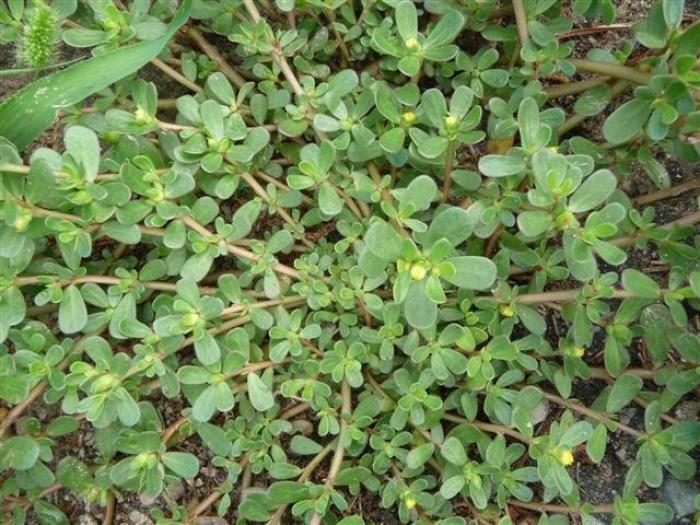 |
Xiang, L., Xing, D., Wang, W., Wang, R., Ding, Y. and Du, L., 2005. Alkaloids from Portulaca oleracea L. Phytochemistry, 66(21), pp.2595-2601. |
| Potentilla anserine |
Silverweed |
Rosaceae |
Herb |
Different groups of compounds such as chlorogenic acid, kaempferol 3-O-rutinoside, acacetin 7-O-rutinoside, and genistein were reported for the first time in this species |
with mild discomforts, mild inflammation of the oral and pharyngeal mucosa, tooth ache |
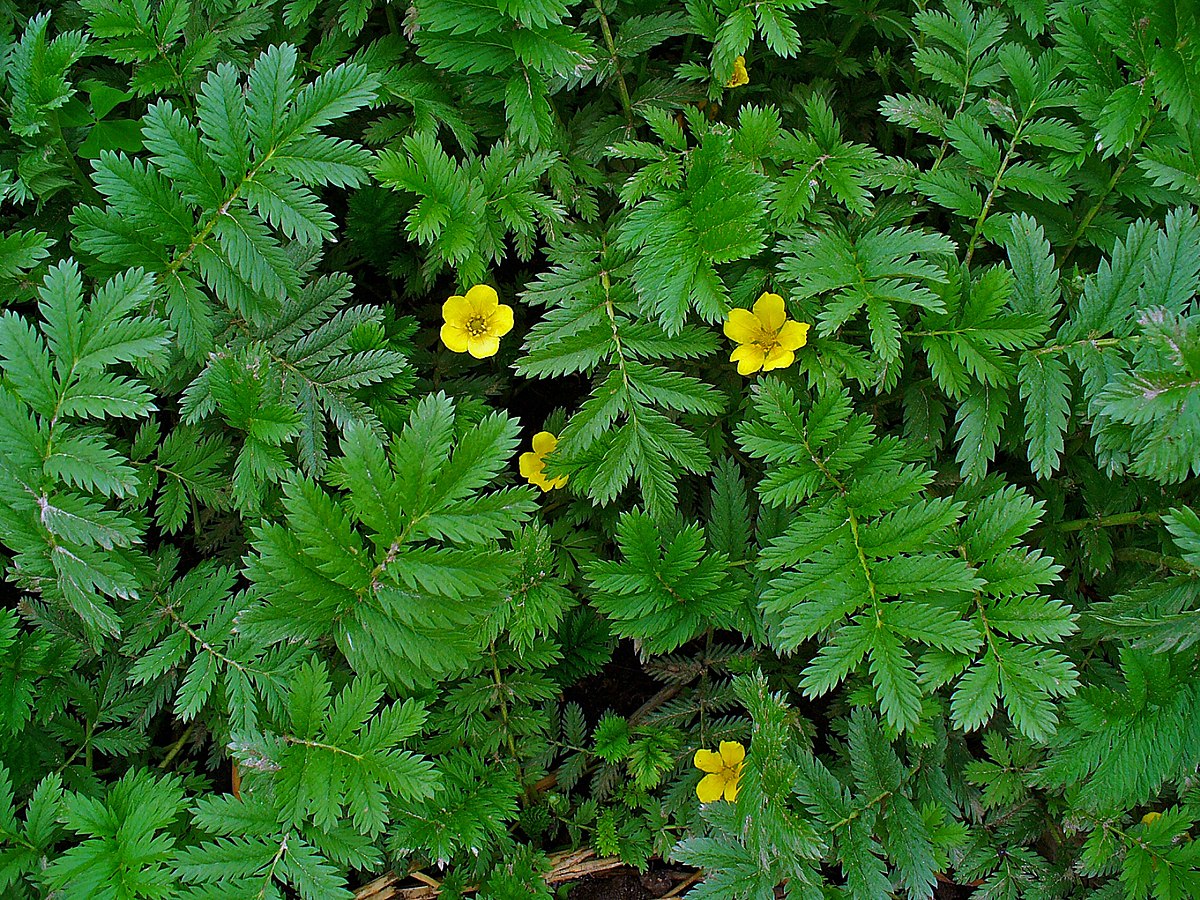 |
Mari, A., Lyon, D., Fragner, L., Montoro, P., Piacente, S., Wienkoop, S., Egelhofer, V. and Weckwerth, W., 2013. Phytochemical composition of Potentilla anserina L. analyzed by an integrative GC-MS and LC-MS metabolomics platform. Metabolomics, 9(3), pp.599-607. Tomczyk, M. and Latté, K.P., 2009. Potentilla—A review of its phytochemical and pharmacological profile. Journal of Ethnopharmacology, 122(2), pp.184-204. |
| Potentilla atrosanguinea |
Himalayan cinquefoil |
Rosaceae |
Herb |
p-coumaric acid, rutin, tilirosid and kaempferol were quantified as others were in lesser amount |
Diarrhoea, bleeding, influenza,cough, parotitis, lymphadenitis,hepatitis, scare, numbness of limbs, dysmenorrhea, ulcer |
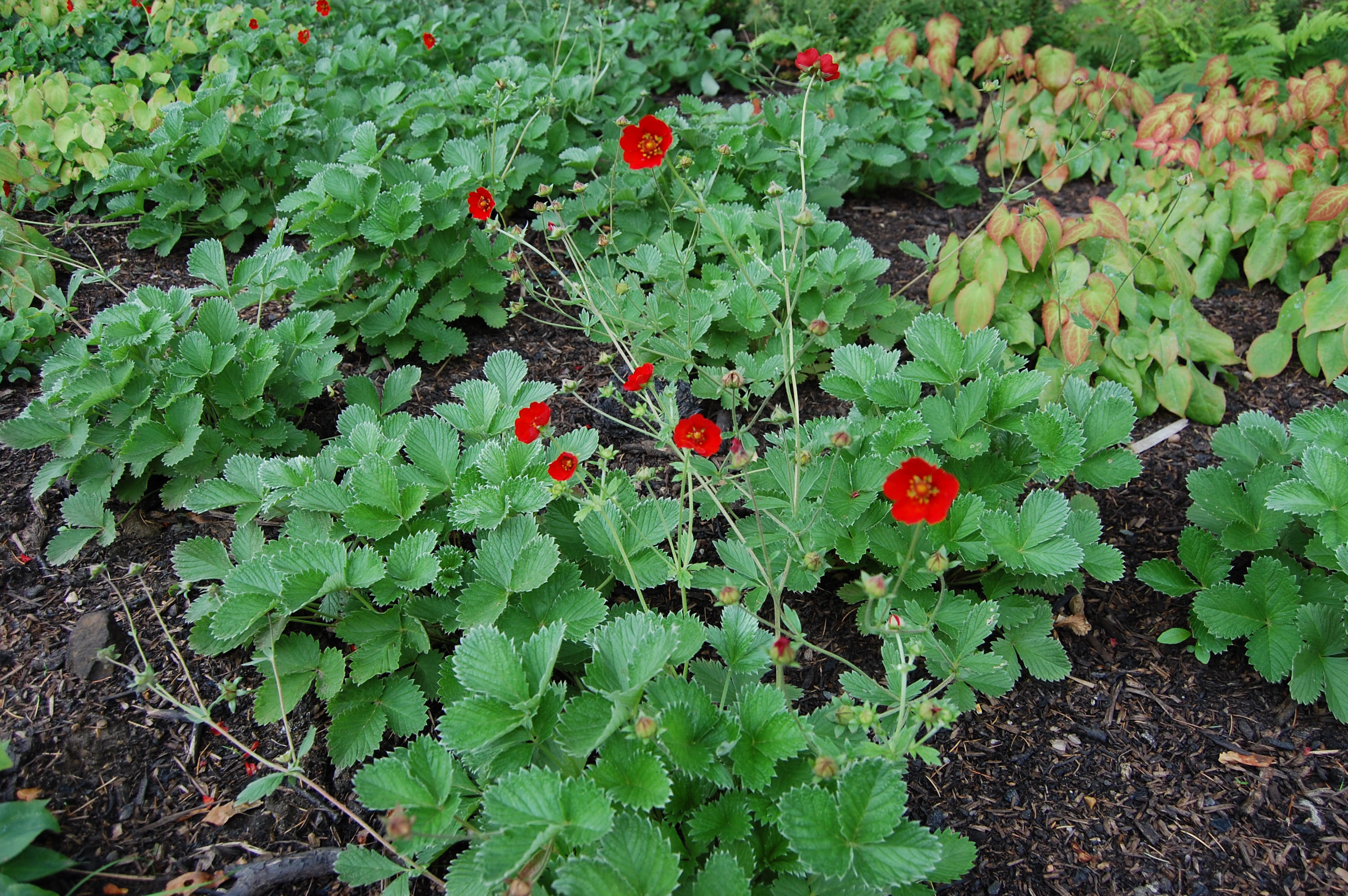 |
Walia, M., Kumar, P., Singh, B. and Agnihotri, V.K., 2018. UPLC–DAD quantification of chemical constituents of Potentilla atrosanguinea roots and their antioxidant activity. Journal of food science and technology, 55(10), pp.4337-4345. Tomczyk, M. and Latté, K.P., 2009. Potentilla—A review of its phytochemical and pharmacological profile. Journal of Ethnopharmacology, 122(2), pp.184-204. |
| Potentilla nepalensis |
Ratanjot |
Rosaceae |
Herb |
|
Root juice employed in urinary inflammation. Chakrata, 1460. |
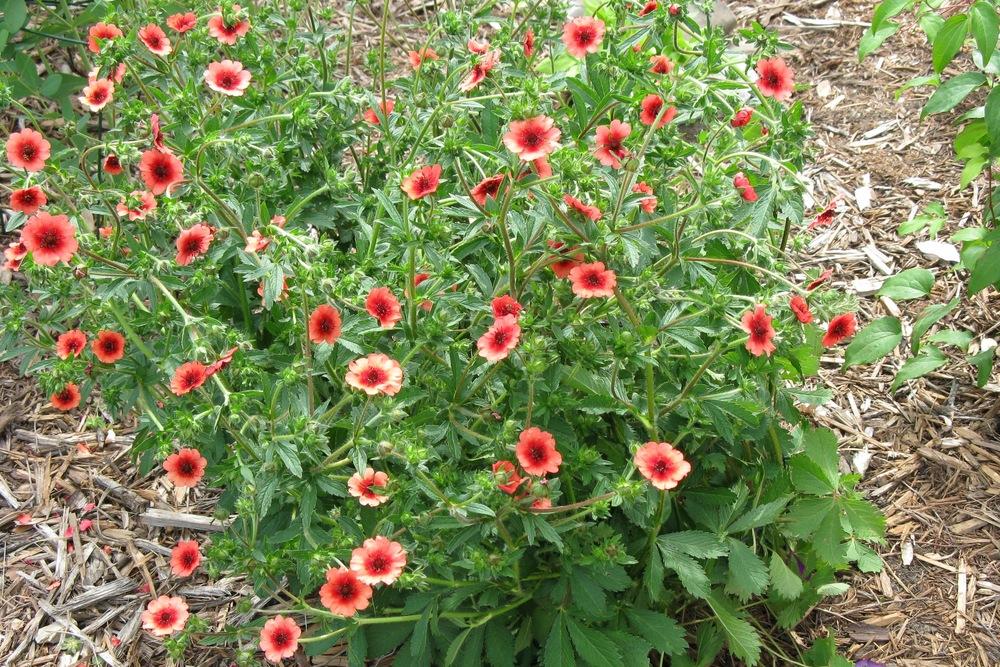 |
Jain, S.P. and Puri, H.S., 1984. Ethnomedicinal plants of jaunsar-bawar hills, uttar pradesh, india. Journal of Ethnopharmacology, 12(2), pp.213-222. |
| Primula denticulata |
Drumstick primula |
Primulaceae |
Herb |
β–Caryophyllene, γ-Muurolene, γ-Terpinene, Caryophyllene oxide (Joshi et al., 2016) |
For diarrhea and fever decoction or extract of leaves is taken. For inflammation, crushed leaves are applied on affected part. |
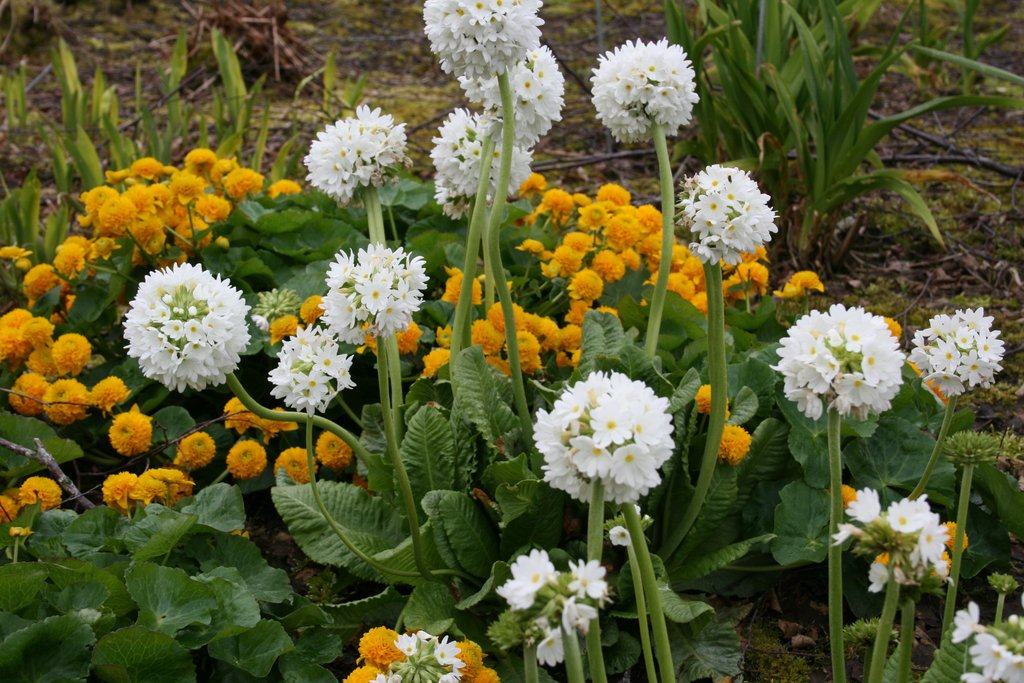 |
Colombo, P.S., Flamini, G., Rodondi, G., Giuliani, C., Santagostini, L. and Fico, G., 2017. Phytochemistry of European Primula species. Phytochemistry, 143, pp.132-144. |
| Primula macrophylla |
Moorcroft's Primrose |
Primulaceae |
Herb |
MACROPHYLLICIN, A SAPONIN IS DERIVED FROM PRIMULA MACROPHYLLA |
antitumor potential of Primula macrophylla extracts in human colon cancer cell line |
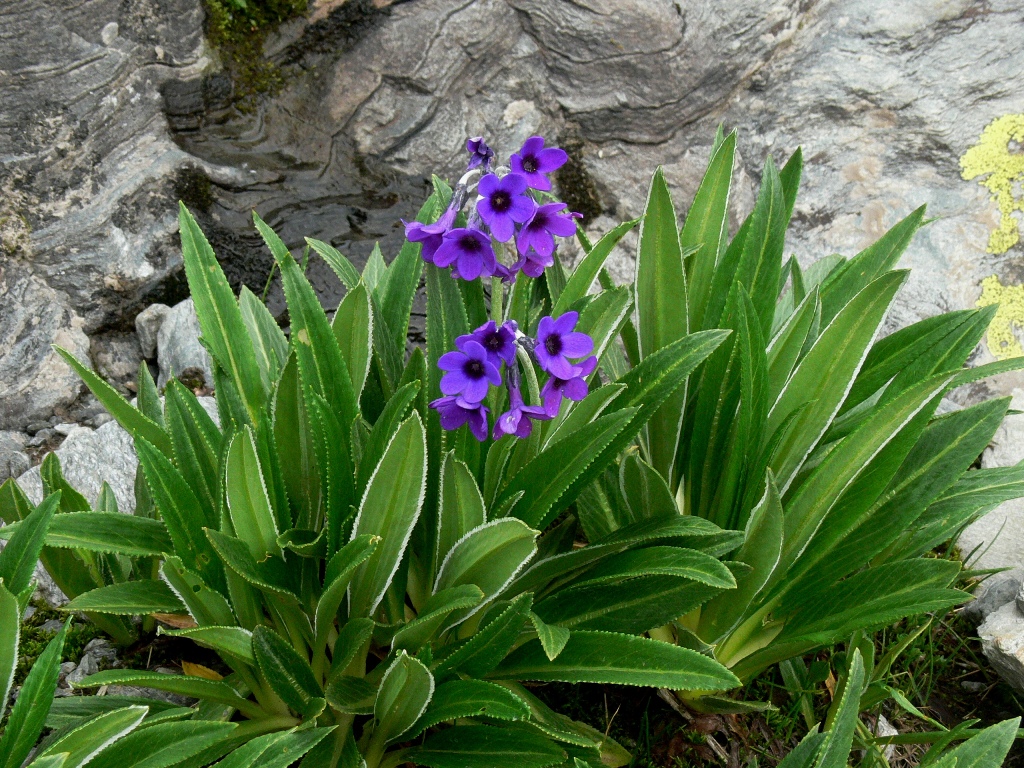 |
Ahmad, V.U., Shah, M.G., Mohammad, F.V. and Baqai, F.T., 1993. Macrophyllicin, a saponin from Primula macrophylla. Phytochemistry, 32(6), pp.1543-1547. Shou, D.W. and Zheng, Y.L., 2017. Antitumor activity, cell cycle arrest and apoptosis induction in human colon cancer cell line by Primula macrophylla extracts. ||| Bangladesh Journal of Pharmacology|||, 12(2), pp.101-106. |
| Primula rosea |
Himalayan meadow primrose |
Primulaceae |
Herb |
Linalyl acetate, Linalool, α-Terpineol, α-Pinene, 1.8-Cineole, Limonene, β-Caryophyllene, β-Terpineol (Džamić et al., 2008) |
Woundhealing, eye problem,high fever, cough in child |
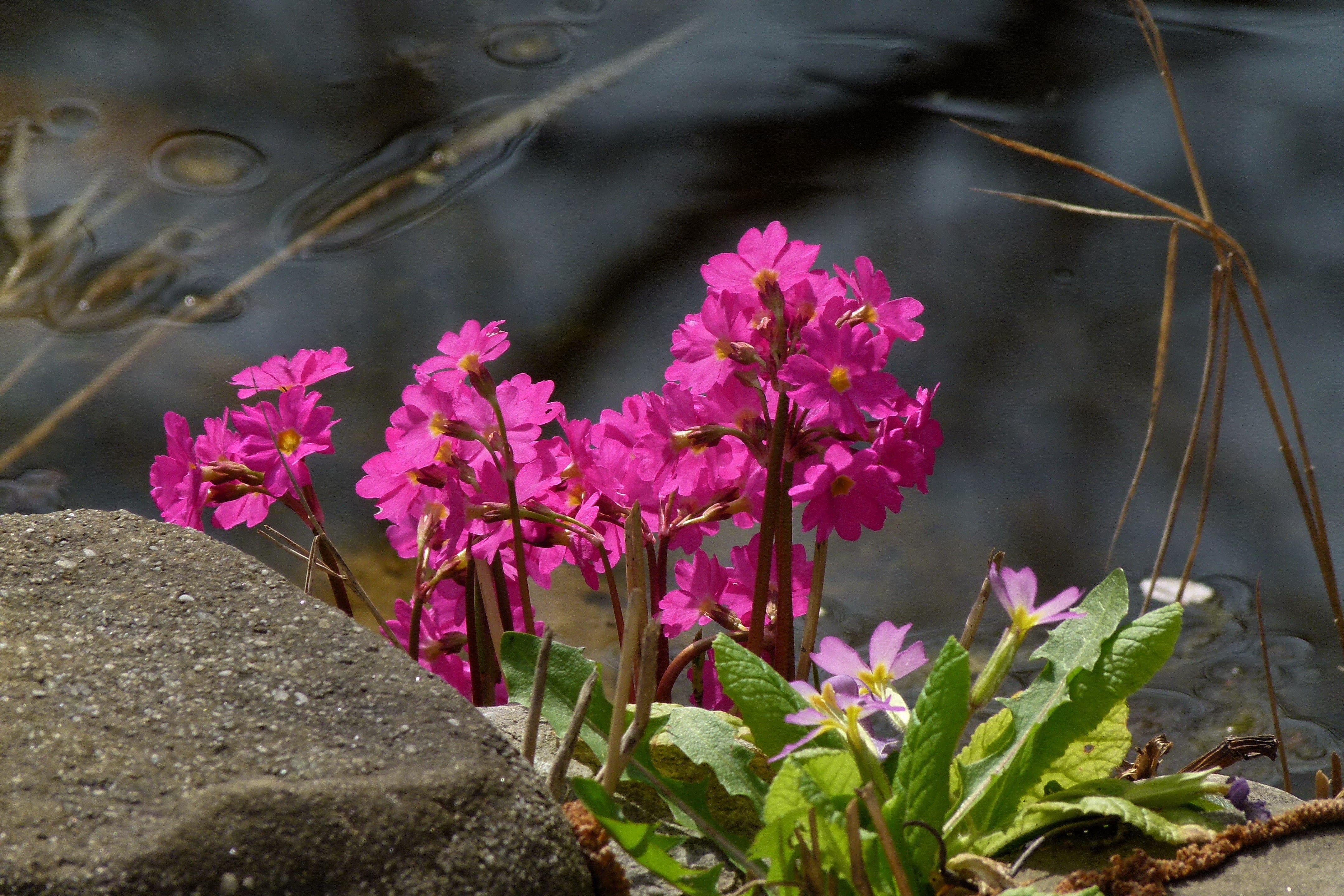 |
(Džamić et al., 2008)
Khan, K.U., Shah, M., Ahmad, H., Ashraf, M., Rahman, I.U., Iqbal, Z., Khan, S.M. and Majid, A., 2015. Investigation of traditional veterinary phytomedicines used in Deosai Plateau, Pakistan. Global Vet, 15(4), pp.381-388.
|
| Prunella vulgaris L. |
Kal-e-veoth |
Lamiaceae |
Herb |
Ursolic acid, β-Amyrin, Quercetin, Quercetin-3-O-β-D-
galactoside, α-Spinasterol, Stigmasterol, β-Sitosterol (8),
Daucosterol, Saponins, Alkaloids, Phenolics, Tannins,
Triterpenoid glycosides (Gu et al., 2013)
|
The hot water bath of flowering tops is used to cure headache, fever, rheumatism, and body muscular pain. Swellings, Brain, Breathing, Gastric, Liver and Muscular disorders, Headache, Wounds, Piles, Rheumatism. Decoction of aerial part used to treat stomach and liver disorders of the cattle. |
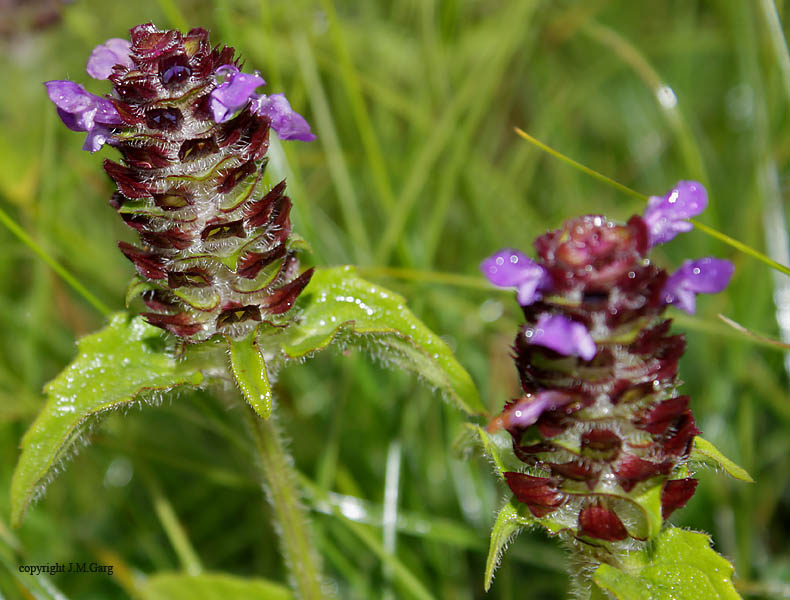 |
Gu, X., Li, Y., Mu, J., Zhang, Y., 2013. Chemical constituents of Prunella vulgaris. Journal of Environmental Sciences 25, 161–163. |
| Ranunculus muricatus L. |
Kakodel |
Ranunculaceae |
Herb |
The phytochemical screening of R. muricatus has revealed the presence of alkaloids, anthocyanins, carbohydrates, coumarins, phenolics and phytosterols (Ibrar & Samreen 2012), along with cardioactive glycosides, tannins and saponins (Aslam et al. 2013). |
Phytochemical analysis of R. muricatus and subsequent isolation and characterisation techniques revealed the presence of a new metabolite, named as ranuncoside which showed potent free radical scavenging activity. The novel isolated compound exhibited lipoxygenase and xanthine oxidase inhibitory properties |
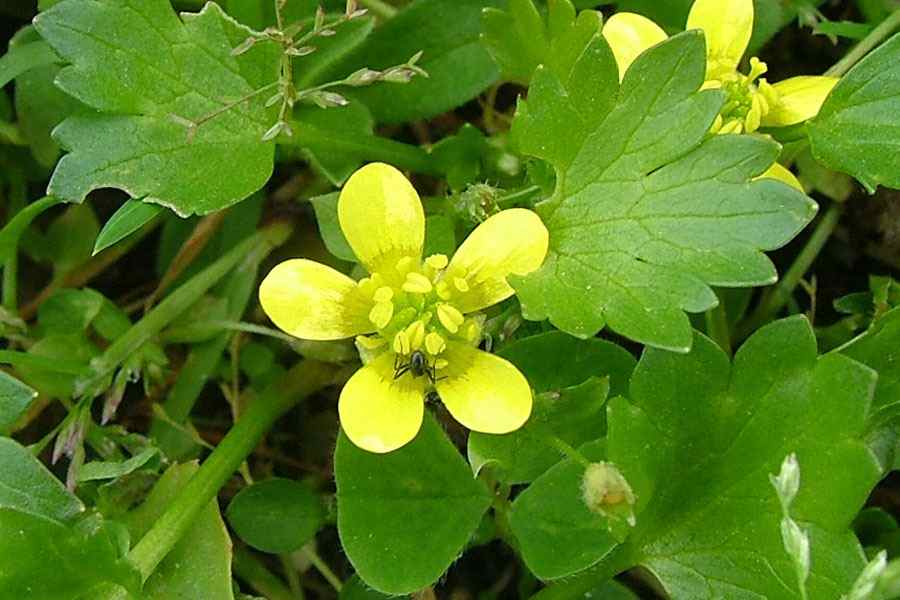 |
Raziq, N., Saeed, M., Ali, M.S., Zafar, S., Shahid, M. and Lateef, M., 2017. A new glycosidic antioxidant from Ranunculus muricatus L.(Ranunculaceae) exhibited lipoxygenasae and xanthine oxidase inhibition properties. Natural product research, 31(11), pp.1251-1257. |
| Rheum australe D. Don. |
Pumb-e-hak, Pamb-e- chalan, Revand chini |
Polygonaceae |
Herb |
Anthraquinones (Chrysophanol, Emodin, Aloe-emodin, Physcion,
Rhein), Stilbenes (Piceatannol, Resveratrol, pterostilbene)
(Rokaya et al., 2012)
|
Paste of rhizome powder in water is used to cure wounds of body, and winter frost of external body parts. Abdominal pain, Boils, Bone fracture, Cough, Wounds, General weakness, Indigestion, Internal injuries, Joint disorders, Mumps, Muscular swelling, Rheumatic pain, Stomach problem, Tonsillitis, Ulcer |
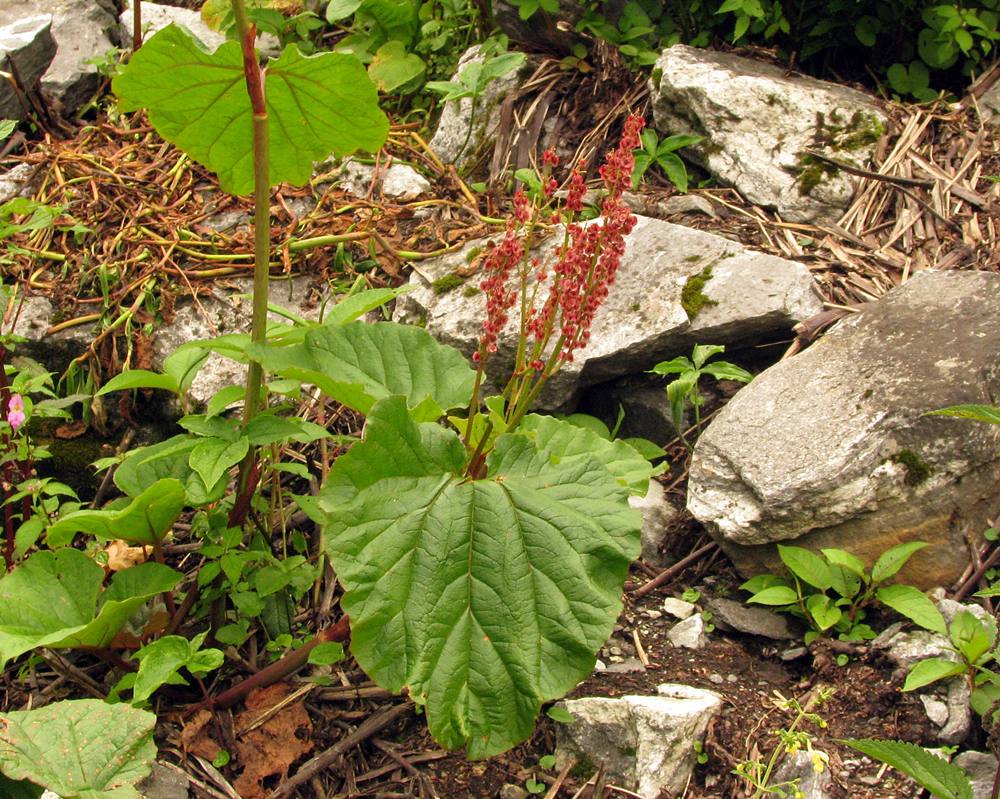 |
Rokaya, M.B., Maršík, P., Münzbergová, Z., 2012. Active constituents in Rheum acumi�natum and Rheum australe (Polygonaceae) roots: a variation between cultivated and naturally growing plants. Biochemical Systematics and Ecology 41, 83–90.
|
| Rheum spiciforme |
Spiked Rhubarb |
Polygonaceae |
Herb |
phenolics, flavonoids and saponins, terpenoids |
Plant has strong antioxidant potential |
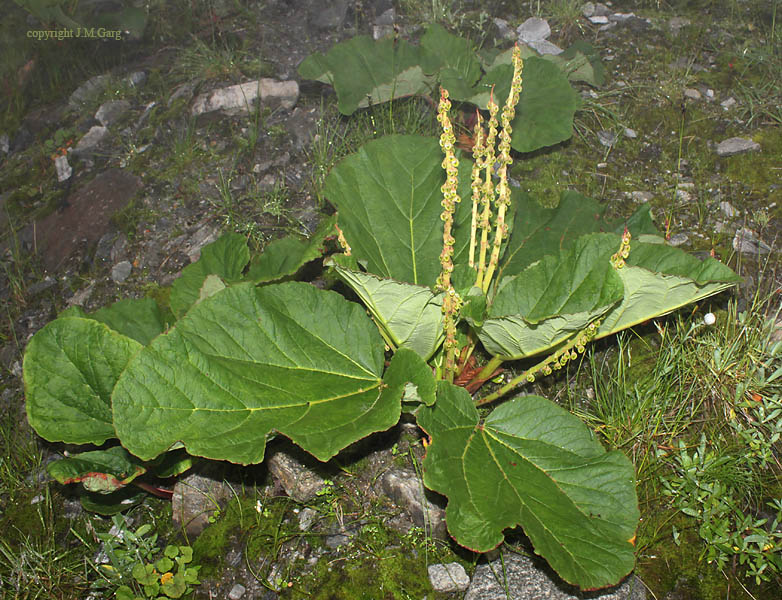 |
Bhat, A.H., Dar, K.B., Sofi, M.A., Dar, S.A., Zargar, M.A., Masood, A. and Ganie, S.A., 2018. Rheum spiciforme Royle—the medicinal herb with positive modulatory effect on controlled in vitro oxidative stress. |
| Rheum webbanium Royle |
Pumb-e-hak, Pamb-e-chalan |
Polygonaceae |
Herb |
Rhein, Emodin, Aloe-emodin, Physcion, Chrysophamol,
Rhaponticin, Rhapontigenin, Tannins, Sennosides, Catechins,
Gallic acid, Cinnaminic acid (Tayade et al., 2012)
|
Rheumatic pain, Wounds, Chronicle bronchitis, Piles. Rhizome paste used to treat wounds and scabies; decoction of rhizome given to treat mumps in the sheep. |
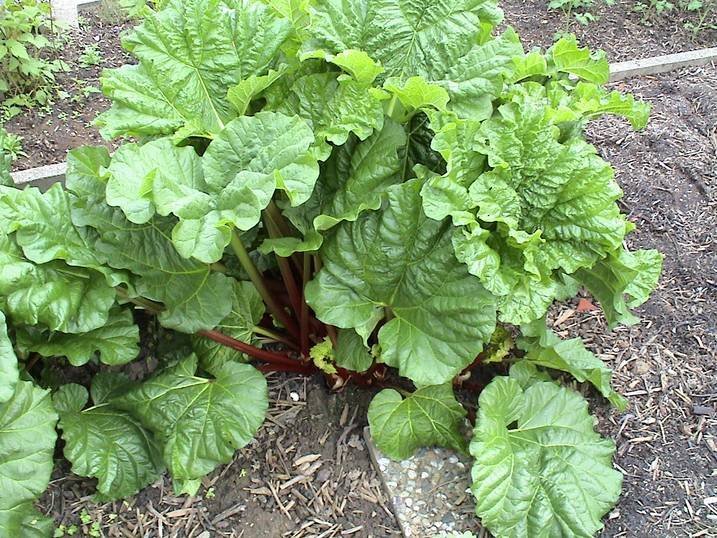 |
Tayade, A., Dhar, P., Ballabh, B., Kumar, R., Chaurasia, O.P., Bhatt, R.P., et al., 2012. Rheum Webbianum Royle, A potential medicinal plant from trans–Himalayan cold deserts of Ladakh, India. Plant Archives 12, 603–606.
|
| Rhodiola himalensis |
Himalayan Rhodiola |
Crassulaceae |
Herb |
|
Infection Of Teeth |
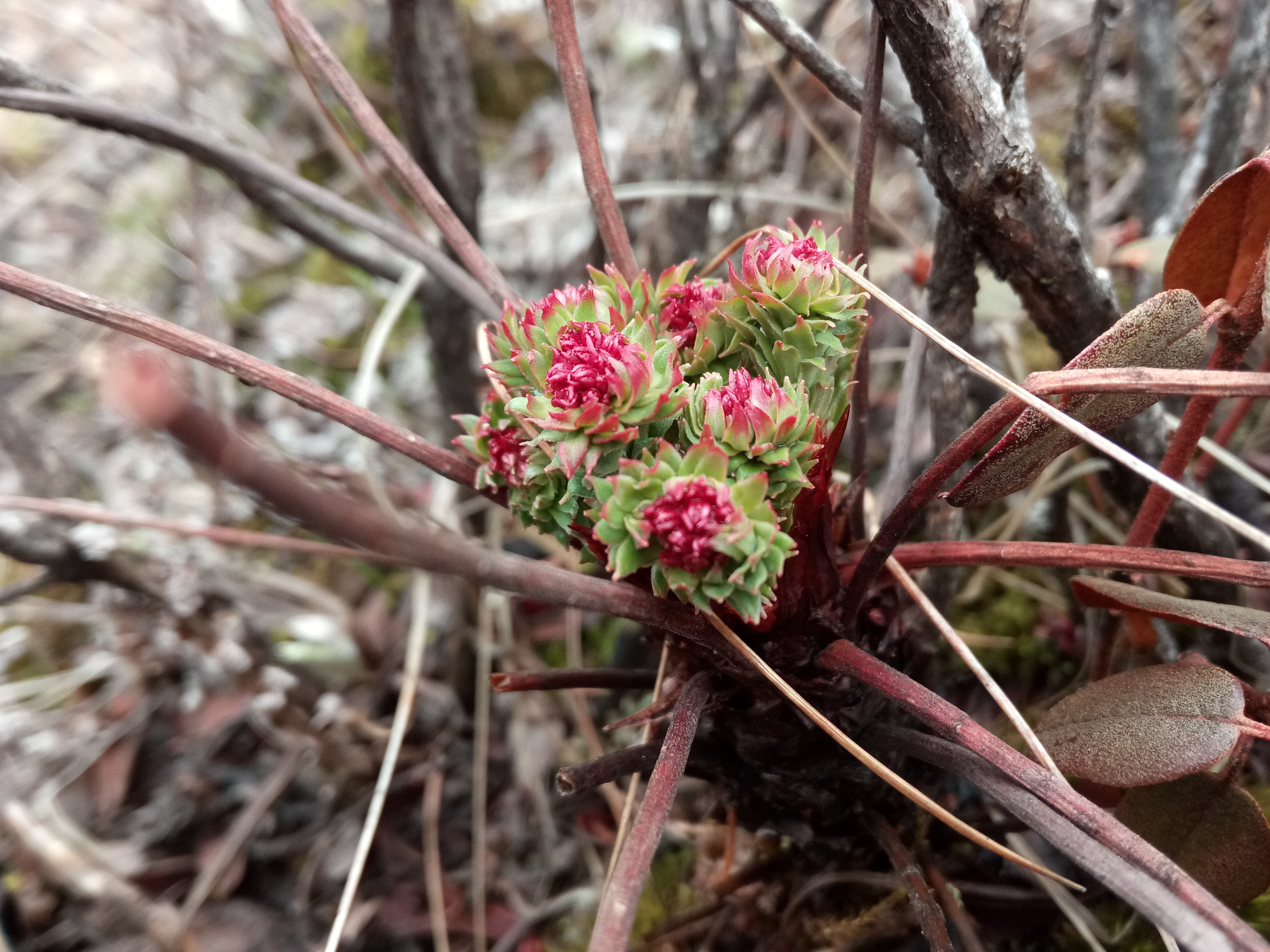 |
Dar, P.A., Rashid, N., Parwez, A. and Kalam, A., 2018. Ethnomedicinal practices of Kashmir valley: A. Journal of Pharmacognosy and Phytochemistry, 7(6), pp.278-284. |
| Rhododendron anthopogon D. Don |
Dwarf Rhododendron |
Ericaceae |
Shrub |
|
Used as good decongestant and is antispasmodic for the respiratory system, also known to help reduce inflammation , tonic for the adrenal glands |
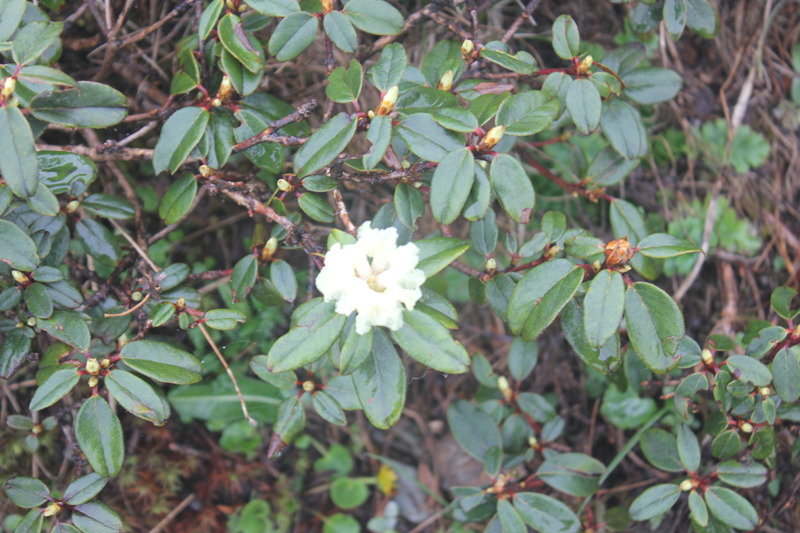 |
Paudel, P.N. and Gyawali, R., 2014. Phytochemical screening and antimicrobial activities of some selected medicinal plants of Nepal. International Journal of Pharmaceutical and Biological Archive, 5, pp.84-92. |
| Rhododendron campanulatum D. Don |
Bell Rhododendron |
Ericaceae |
Shrub |
The phytochemical studies showed the presence of terpenoids in the petroleum and methanol extracts, steroids in the diethyl ether and chloroform extracts, tannins in the diethyl ether and methanol extracts, and glycosides, flavonoids, and saponins in the methanol extract. |
plant exhibits significant antibacterial activity against Gram-positive bacteria |
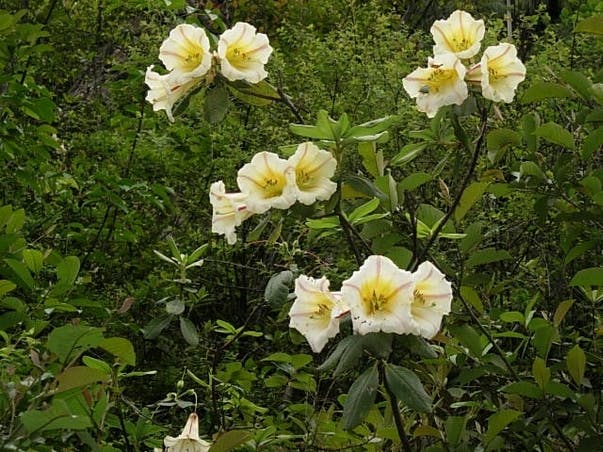 |
Kathmandu, N., 2011. Phytochemical and antibacterial properties of Rhododendron campanulatum from Nepal. Journal of Traditional Medicines, 6(6). |
| Rosa damascena Herrm. |
Jangli-gulab |
Rosaceae |
Herb |
Phenylethyl alcohol, 4-Amino-furazan-3-carboxylic acid,
Citronellol, 2-trifluoromethylbenzoic acid, 2-octyl ester,
Undecanoic acid isopropyl ester, 2-Amino-propionic acid, α-
Pinene, Nonadecane, N-Butyl-2-decanamine (Koksal et al., 2015)
|
Asthma, Bronchitis, Chickenpox, Cold, Cough, Diarrhoea, Fever, Headache, Measles, Muscular pain, Skin diseases, Throat infection |
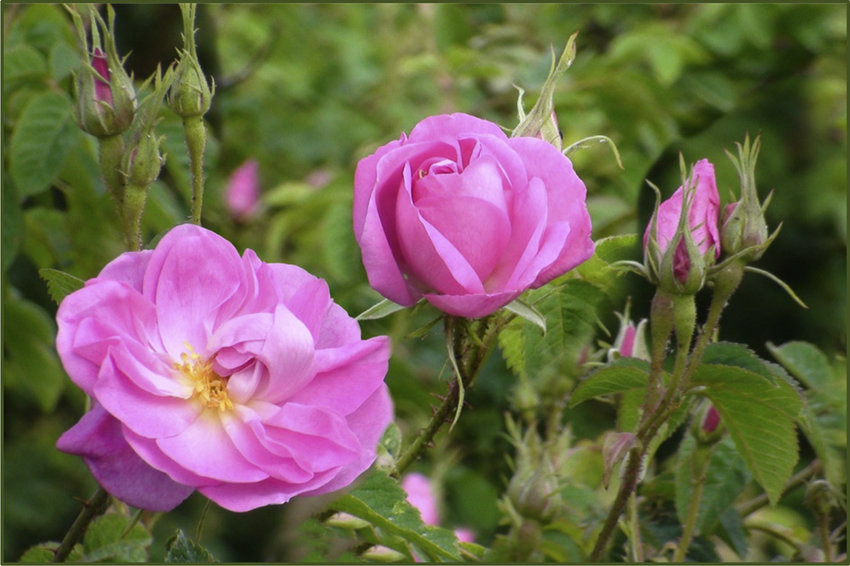 |
Koksal, N., Aslancan, H., Sadighazadi, S., Kafkas, E., 2015. Chemical investigation on Rose damascena Mill. volatiles; Effects of storage and drying conditions. Acta Scientiarum Polonorum-Hortorum Cultus 14, 105–114.
|
| Rubia cordifolia Linn. |
Manjithi |
Rubiaceae |
Herb |
Rubicoumaric acid and rubifolic acid isolated from Rubia cordifolia |
It used for the treatment of cancers, tuberculosis, rheumatism, hematemesis, metrorrhagia, epistaxis, contusion and menoxenia in the Chinese traditional medicine |
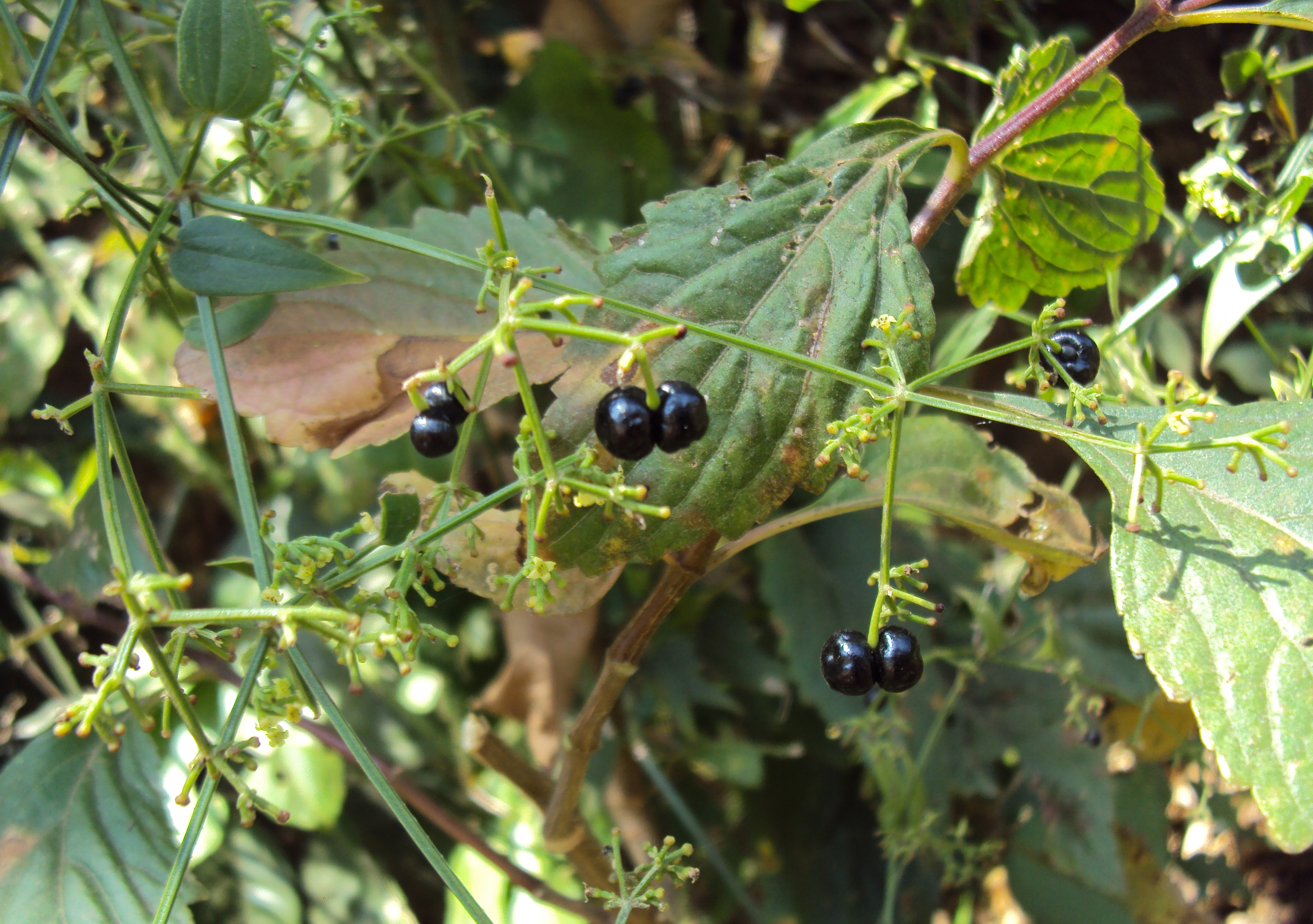 |
Srinagar, S., Ethnomedicinal survey of shopian, Kashmir (J&K), India. |
| Rubus fuecticorus Linn. |
Blackberry |
Rosaceae |
Herb |
|
Fruits are edible, roots extracts is an emetic. |
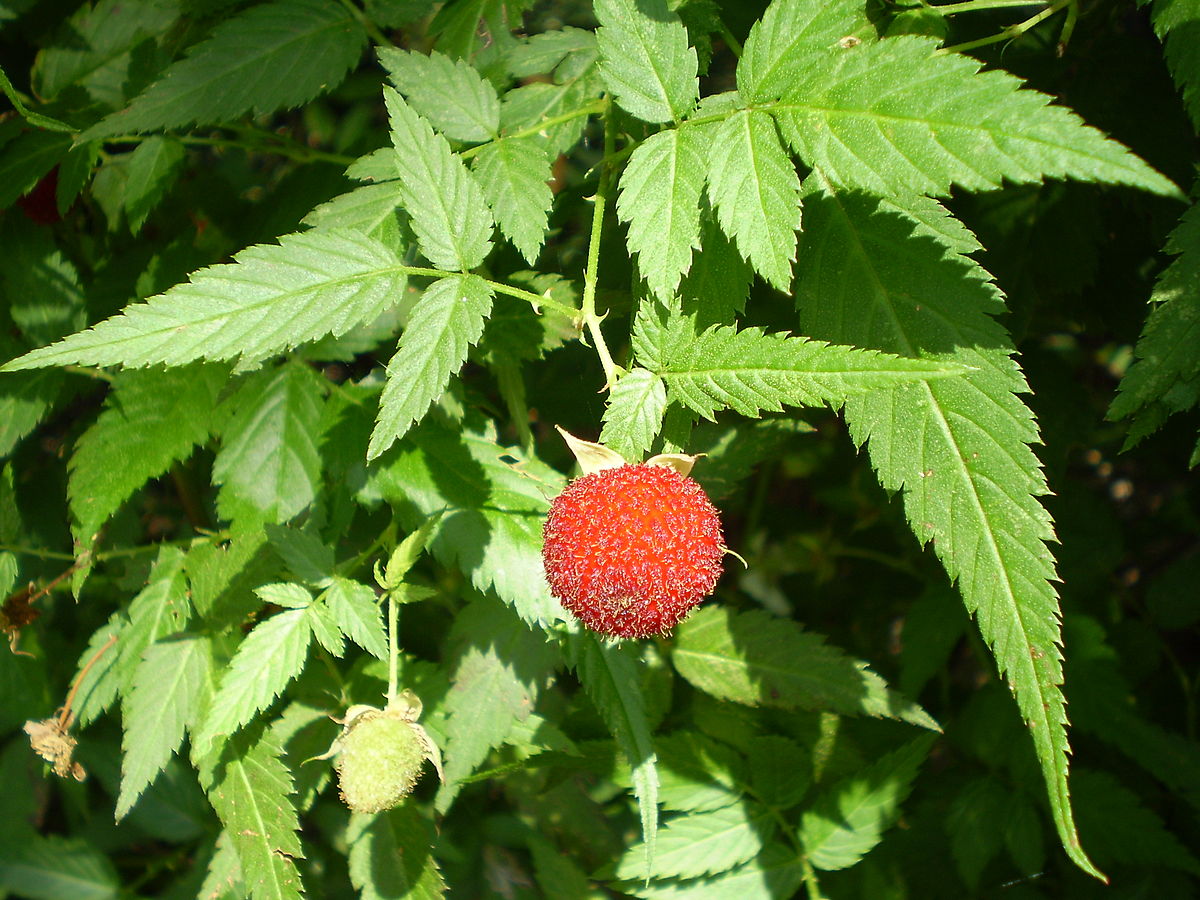 |
Srinagar, S., Ethnomedicinal survey of shopian, Kashmir (J&K), India. |
| Rumex acetosa |
Obej |
Polygonaceae |
Herb |
polyphenols, tanins, phenolic acid and antraquinones |
seeds are used in therapy |
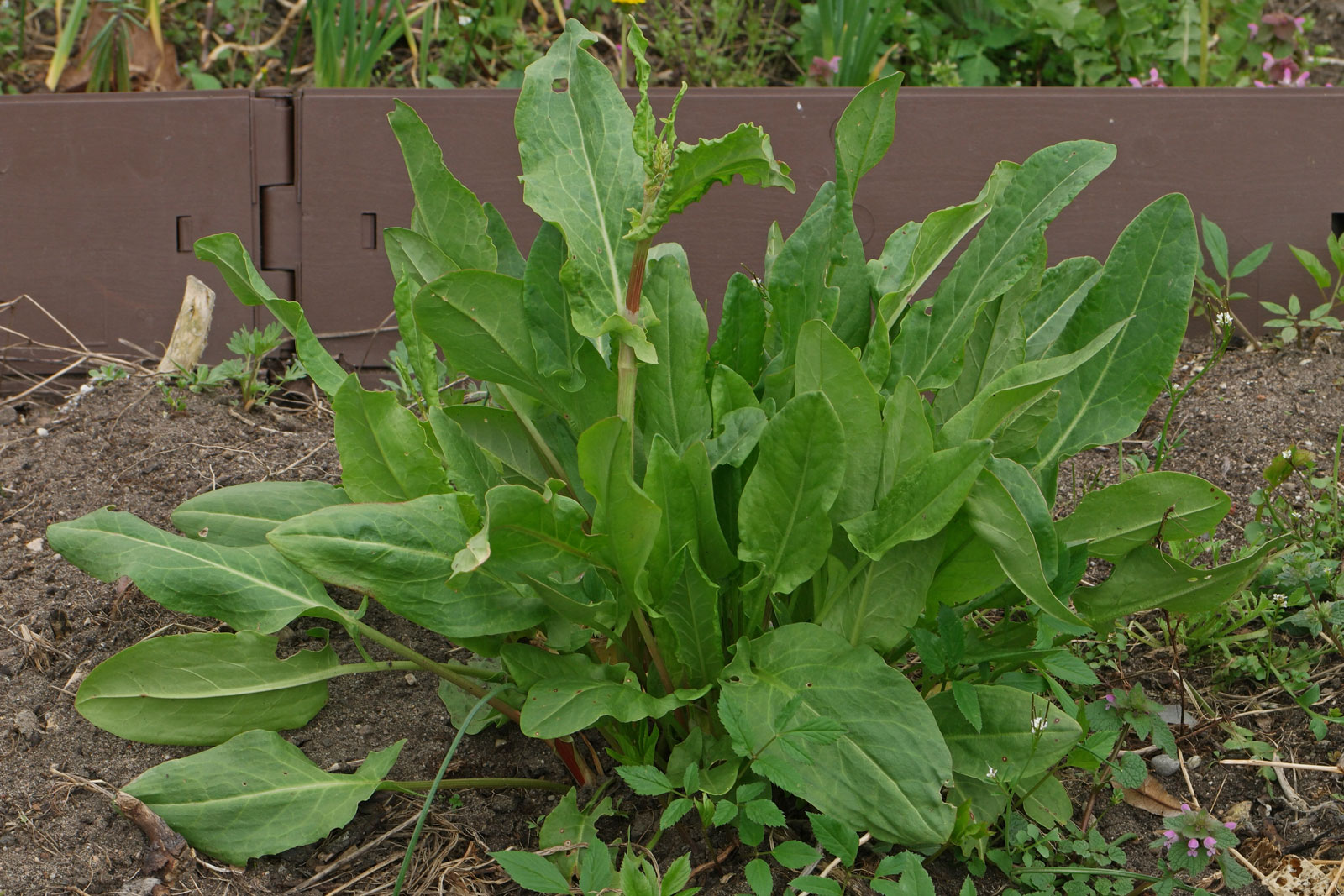 |
Bello, O.M., Fasinu, P.S., Bello, O.E., Ogbesejana, A.B., Adetunji, C.O., Dada, A.O., Ibitoye, O.S., Aloko, S. and Oguntoye, O.S., 2019. Wild vegetable Rumex acetosa Linn.: its ethnobotany, pharmacology and phytochemistry–a review. South African Journal of Botany, 125, pp.149-160. |
| Rumex patientia L. |
Jungli abij |
Jungli abij |
Herb |
tannins and anthraquinone glycosides |
the dried roots of Rumex patientia L. (Polygonaceae) have been used as purgative, constipate, depurative and tonic in Turkish traditional medicine |
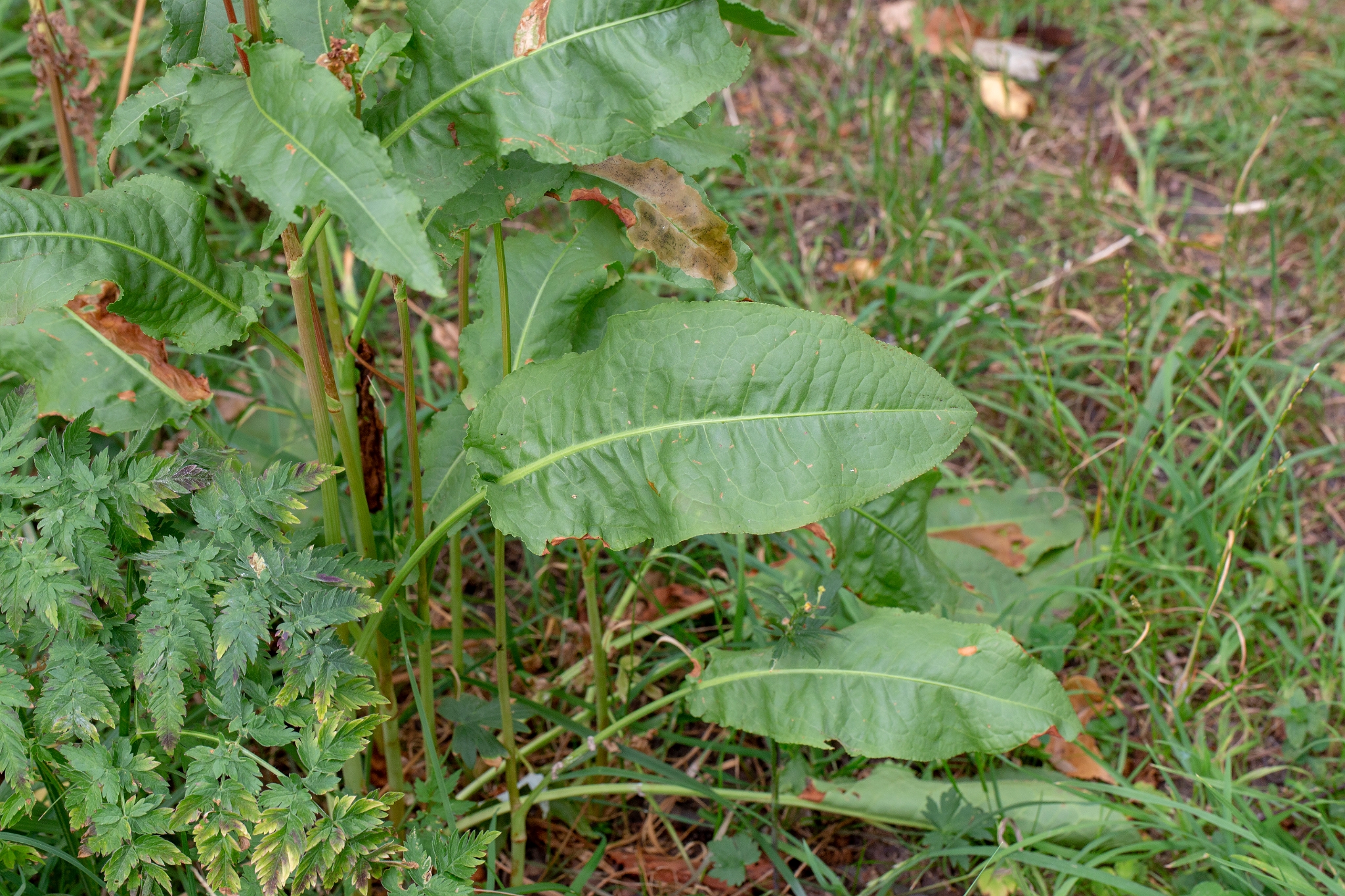 |
Demirezer, L.Ö., Kuruüzüm-Uz, A., Bergere, I., Schiewe, H.J. and Zeeck, A., 2001. The structures of antioxidant and cytotoxic agents from natural source: anthraquinones and tannins from roots of Rumex patientia. Phytochemistry, 58(8), pp.1213-1217. |
| Salix wallichiana Andrs. |
Danthiveer |
Salicaceae |
Tree |
|
Decoction of leaves is used to wash the feet and lower portion of legs to cure fever and general body pain. |
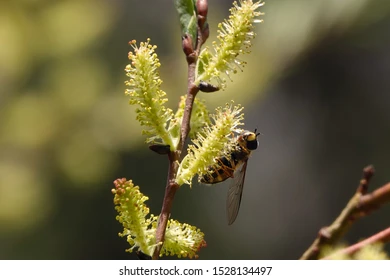 |
Malik, A.H., Khuroo, A.A., Dar, G.H. and Khan, Z.S., 2011. Ethnomedicinal uses of some plants in the Kashmir Himalaya. |
| Salvia hians |
Himalayan Blue Sage |
Lamiaceae |
Herb |
new red-colored ortho diterpenoid quinone, 17-dihydroxytanshinone II, along with two known compounds tanshinone II and ß-sitosterol, has been isolated from the roots of the Himalayan herb Salvia hians |
Colds, Coughs, Anxiety |
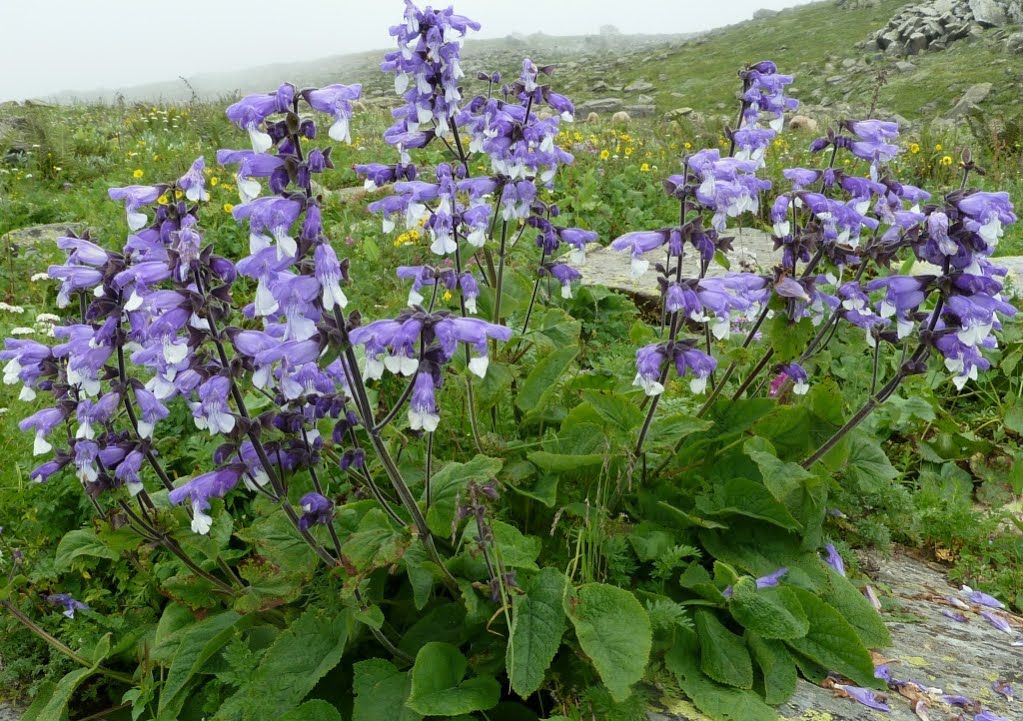 |
Khetwal, K.S., Pathak, R.P., Vashisht, A. and Pant, N., 1992. Constituents of high altitude himalayan herbs, part V. A new diterpenoid quinone from Salvia hians. Journal of natural products, 55(7), pp.947-949. Singh, G. and Rawat, G.S., 2011. Ethnomedicinal survey of Kedarnath wildlife sanctuary in Western Himalaya, India. Indian Journal of Fundamental and Applied Life Sciences, 1(1), pp.35-46. |
| Salvia moorcroftiana Wall.ex Benth. |
Shollar |
Lamiaceae |
Herb |
Oxygenated monoterpenes, Oxygenated sesquiterpenes, (Z)-b-
Ocimene, Sabinene, β-Caryophyllene, Monoterpene
hydrocarbons, (Z)-b-Ocimene (Rather et al., 2011)
|
Boils, Wounds, Throat swelling, Chest diseases, Headache, Stomach pain, Cough, Dysentery, Haemorrhoids, Joint pain |
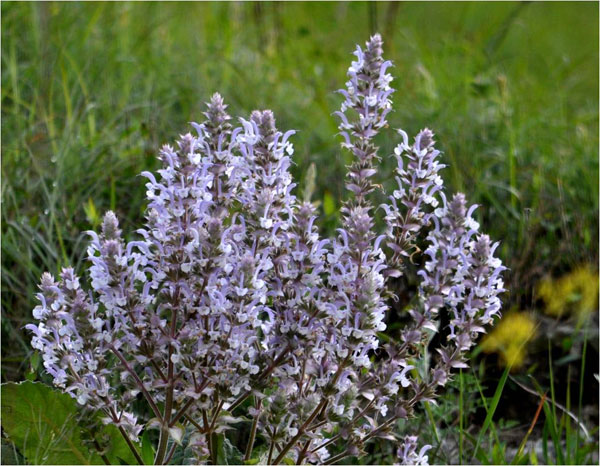 |
Rather, M.A., Dar, B.A., Bhat, K.A., Shawl, A.S., Qurishi, M.A., Dar, M.Y., et al., 2011. Mono–sesquiterpenoid composition in the leaves and flowers of Salvia moorcroftiana Wall ex Benth. growing wild in Kashmir, India. Journal of Essential Oil Research 23, 21–25. |
| Salvia sclarea L. |
Budertunde |
Lamiaceae |
Herb |
Linalyl acetate, Linalool, α-Terpineol, α-Pinene, 1.8-Cineole,
Limonene, β-Caryophyllene, β-Terpineol (Džamić et al., 2008)
|
Burns, Wounds |
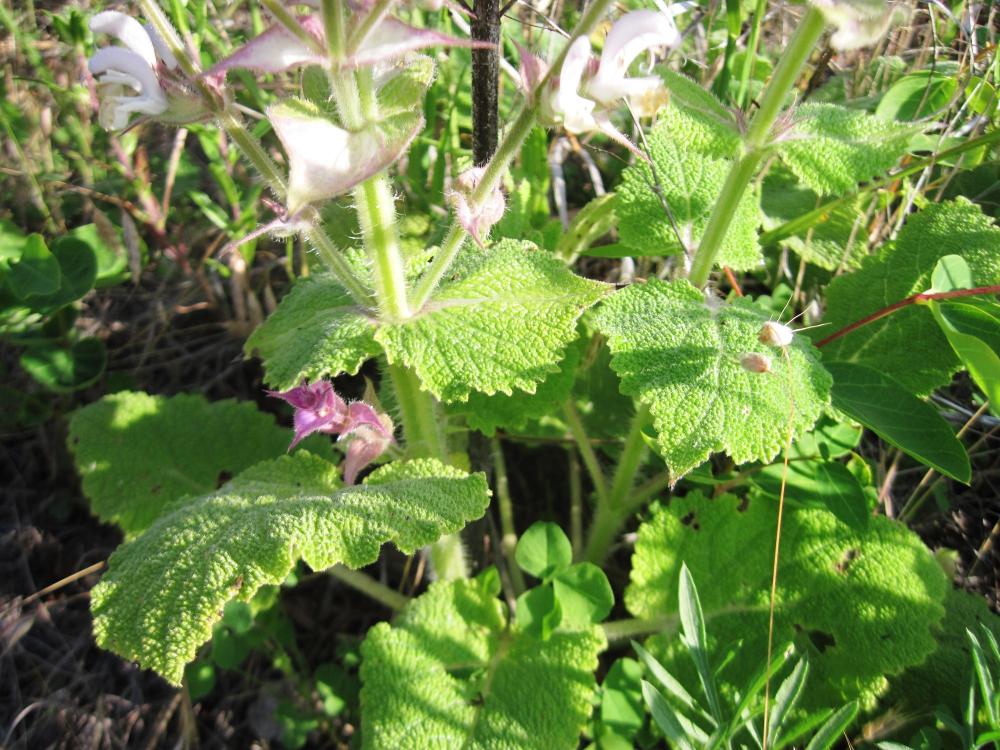 |
Džamić, A., Soković, M., Ristić, M., Grujić-Jovanović, S., Vukojević, J., Marin, P.D., 2008. Chemical composition and antifungal activity of Salvia sclarea (Lamiaceae) essential oil. Archives of Biological Sciences 60, 233–237.
|
| Sambucus wightianaWall. ex Wt. & Arn. |
Gandula |
Sambucaceae |
Herb |
|
anti-proliferative activity |
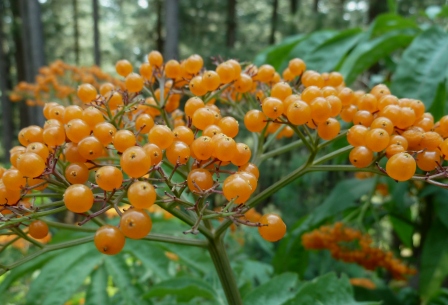 |
Mir, M.A., Dar, Z., Mani, P. and andMV Rao, W.B., 2018. In-vitro anti-proliferative activity of Sambucus wightiana. Journal of Pharmacognosy and Phytochemistry, 7(3), pp.3282-3283. |
| Saussurea albescens |
Pink Saw-Wort |
Asteraceae |
Herb |
Rhein, Emodin, Aloe-emodin, Physcion, Chrysophamol, Rhaponticin, Rhapontigenin, Tannins, Sennosides, Catechins, Gallic acid, Cinnaminic acid (Tayade et al., 2012) |
Water extract of root is used aginst skin eruptions |
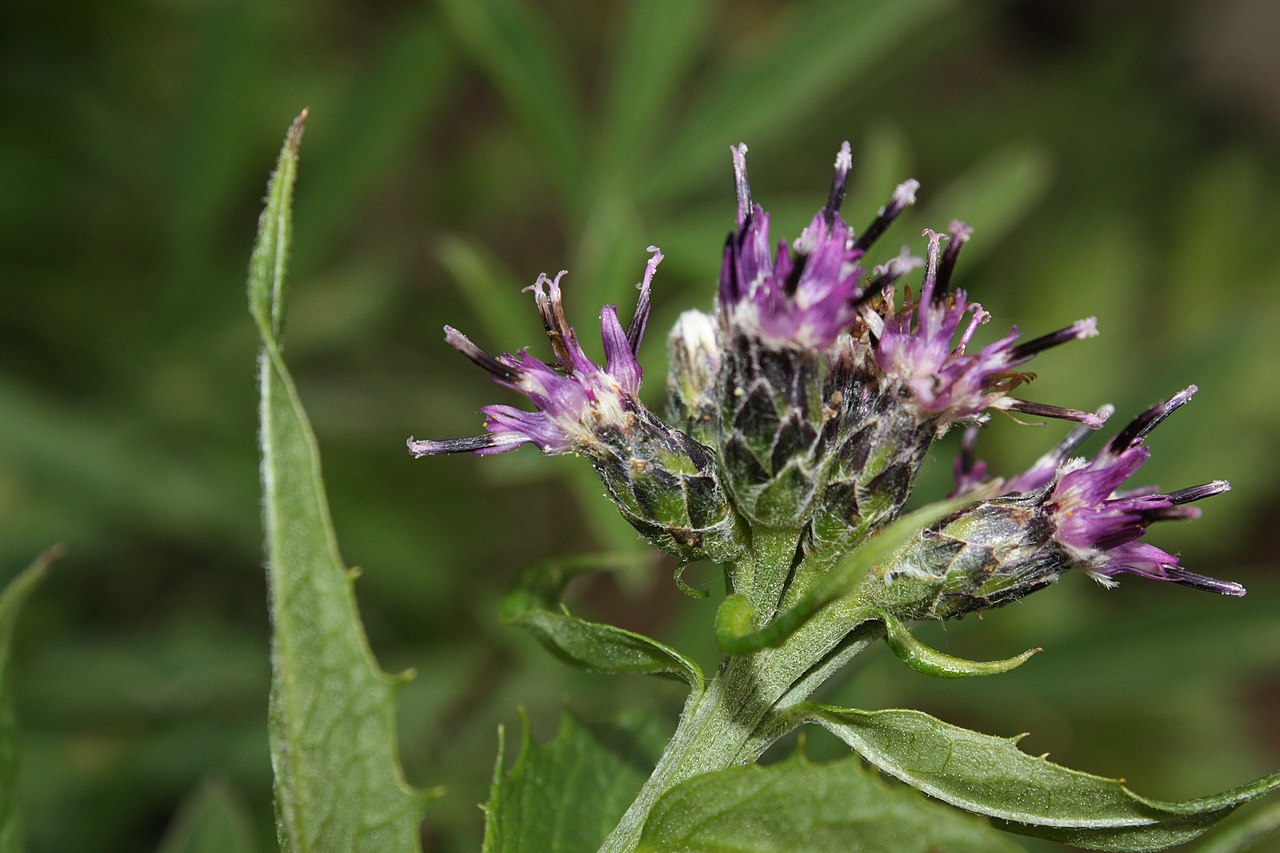 |
LONE, M.A., Shrivastava, P.N., Saxena, R.C. and LONE, M.A., 2009. Survey of ethnomedicinal plants of Lolab valley of Kashmir for skin diseases. Biosciences, Biotechnology Research Asia, 6(1), pp.355-358. |
| Saussurea costus (Falc.) Lipschitz |
Kouth, Beare, Minar |
Asteraceae |
Herb |
Costunolide, Dehydrocostus lactone, Cynaropicrin,
Lappadilactone, Germacrenes, 4α,4β Methox-ydehydrocostus
lactone, Saussureal, Saussuramines A-E, (−)-massoniresinol 4-O-
β-D-glucopyranoside (Madhuri et al., 2012)
|
Bitter rhizome powder is useful to treat joints pain, back pain, sole ulcers, dysentery and fever. Joint pain, Asthma, Cardiac stimulant, Cholera, Dysentery, Fever, Headache, Kidney stone, Menstrual irregularities, Rheumatism. Extracts obtained by crushing of roots are mixed with edible oil and the resulting paste is applied for two to three months regularly on weekly basis to cure arthritis. |
.jpg) |
Madhuri, K., Elango, K., Ponnusankar, S., 2012. Saussurea lappa (Kuth root), review of its traditional uses, phytochemistry and pharmacology. Oriental Pharmacy and Experimental Medicine 12, 1–9.
|
| Saussurea lappa (Decne.) Sch.Bip. |
Kouth, Beare, Minar |
Asteraceae |
Herb |
Costunolide, Dehydrocostus lactone, Cynaropicrin,
Lappadilactone, Germacrenes, 4α,4β Methox-ydehydrocostus
lactone, Saussureal, Saussuramines A-E, (−)-massoniresinol 4-O-
β-D-glucopyranoside (Madhuri et al., 2012)
|
Bitter rhizome powder is useful to treat joints pain, back pain, sole ulcers, dysentery and fever. Joint pain, Asthma, Cardiac stimulant, Cholera, Dysentery, Fever, Headache, Kidney stone, Menstrual irregularities, Rheumatism. Extracts obtained by crushing of roots are mixed with edible oil and the resulting paste is applied for two to three months regularly on weekly basis to cure arthritis. |
%20Sch.Bip..png) |
Madhuri, K., Elango, K., Ponnusankar, S., 2012. Saussurea lappa (Kuth root), review of its traditional uses, phytochemistry and pharmacology. Oriental Pharmacy and Experimental Medicine 12, 1–9.
Chen, H.C., Chou, C.K., Lee, S.D., Wang, J.C. and Yeh, S.F., 1995. Active compounds from Saussurea lappa Clarks that suppress hepatitis B virus surface antigen gene expression in human hepatoma cells. Antiviral Research, 27(1-2), pp.99-109.
|
| Saussurea sacra Edgew. |
Phen Kamal, Jhoog Padshah |
Asteraceae |
Herb |
Eicosapentaenoic acid methyl ester, Octadecatrien-1-ol,
Caryophyllene oxide, Cedren-13-ol, Verrucarol (Sandhyavali
et al., 2011)
|
Gynaecological disorders, Male sterility |
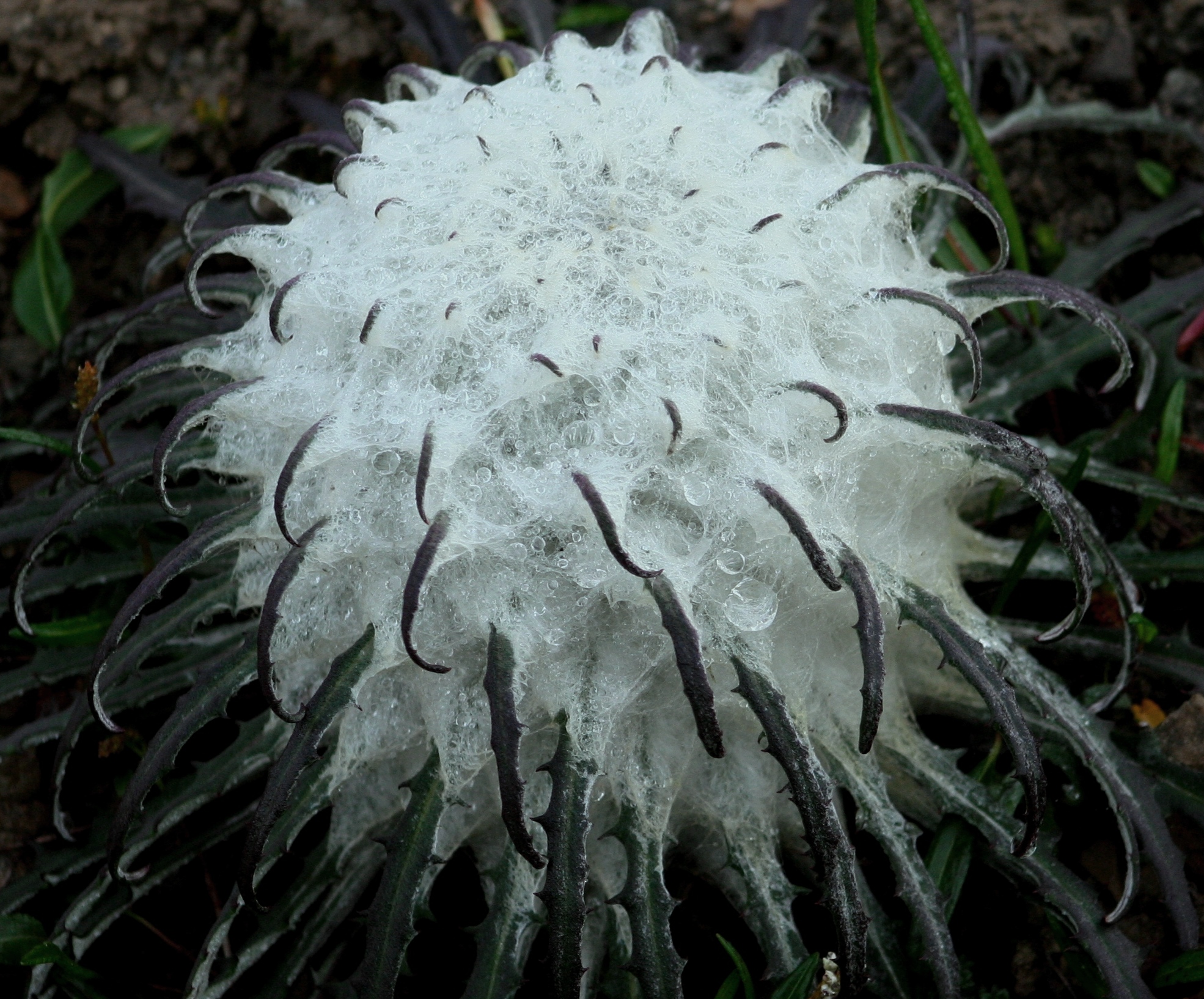 |
Sandhyavali, M.S., Sundari, P.S., Bhavikatti, P., 2011. Isolation and chemical character�ization of essential oil of Saussurea simpsoniana. Journal of Pharmaceutical Sciences 1, 239–242.
|
| Saxifraga lychnitis |
|
Saxifragaceae |
Herb |
|
Bodyache, Fever, Headache. Wounds in cattle. |
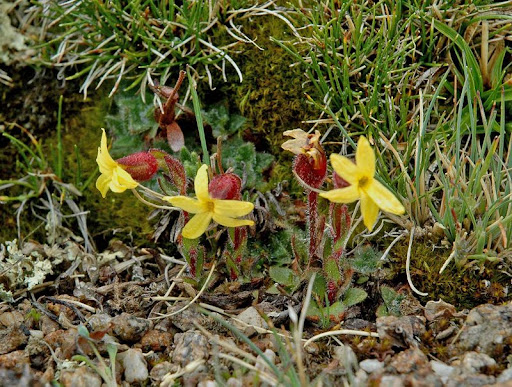 |
Zhang, Z., 2013. Phylogenetic studies in the genus Saxifraga (Saxifragaceae) (Doctoral dissertation, University of Leicester). |
| Saxifraga sibirica |
Siberian Saxifrage |
Saxifragaceae |
Herb |
|
Back pain treatments |
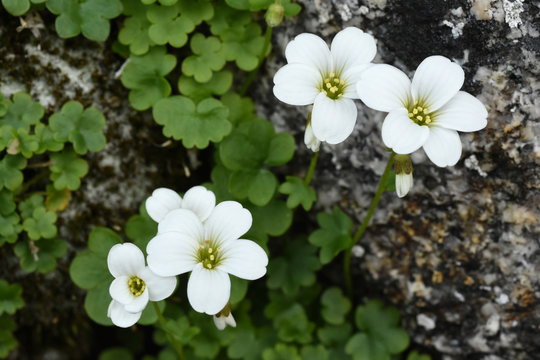 |
Zhang, Z., 2013. Phylogenetic studies in the genus Saxifraga (Saxifragaceae) (Doctoral dissertation, University of Leicester). |
| Scutellaria linearis |
Narrow-Leaved Skullcap |
Lamiaceae |
Herb |
Chrysin, Chrysin, Lupulin A, Lupulin B, Lupulin C, Lupulin D |
antitumor and antivirus. |
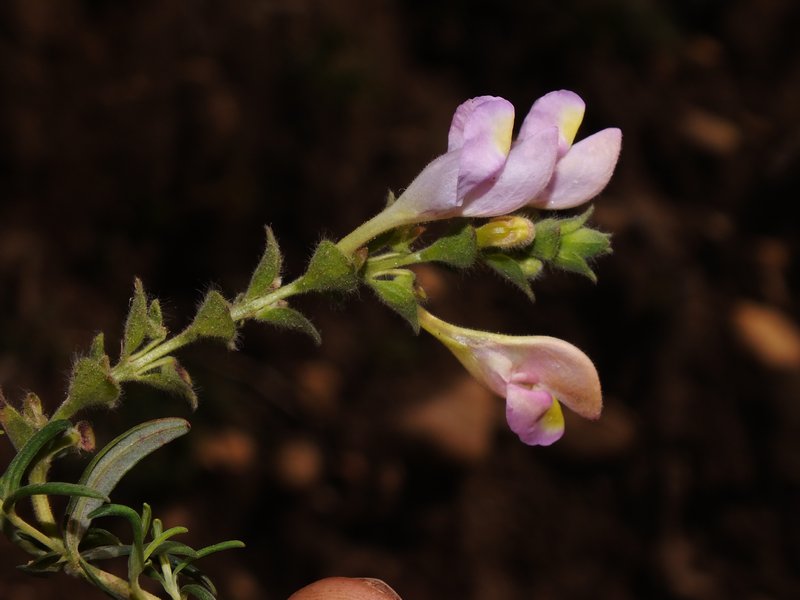 |
Shang, X., He, X., He, X., Li, M., Zhang, R., Fan, P., Zhang, Q. and Jia, Z., 2010. The genus Scutellaria an ethnopharmacological and phytochemical review. Journal of Ethnopharmacology, 128(2), pp.279-313. |
| Sedum ewersii |
Pink Sedum |
Crassulaceae |
Herb |
Phenols, phenolic, amino, and other carboxylic acids, alkaloids, carbohydrates and polysaccharides, hydrolyzed and condensed tanning agents, and anthocyans |
The plant is crushed and applied on forhead to provide cooling and soothing effect. This plant is given to milch cattle to increase milk production. |
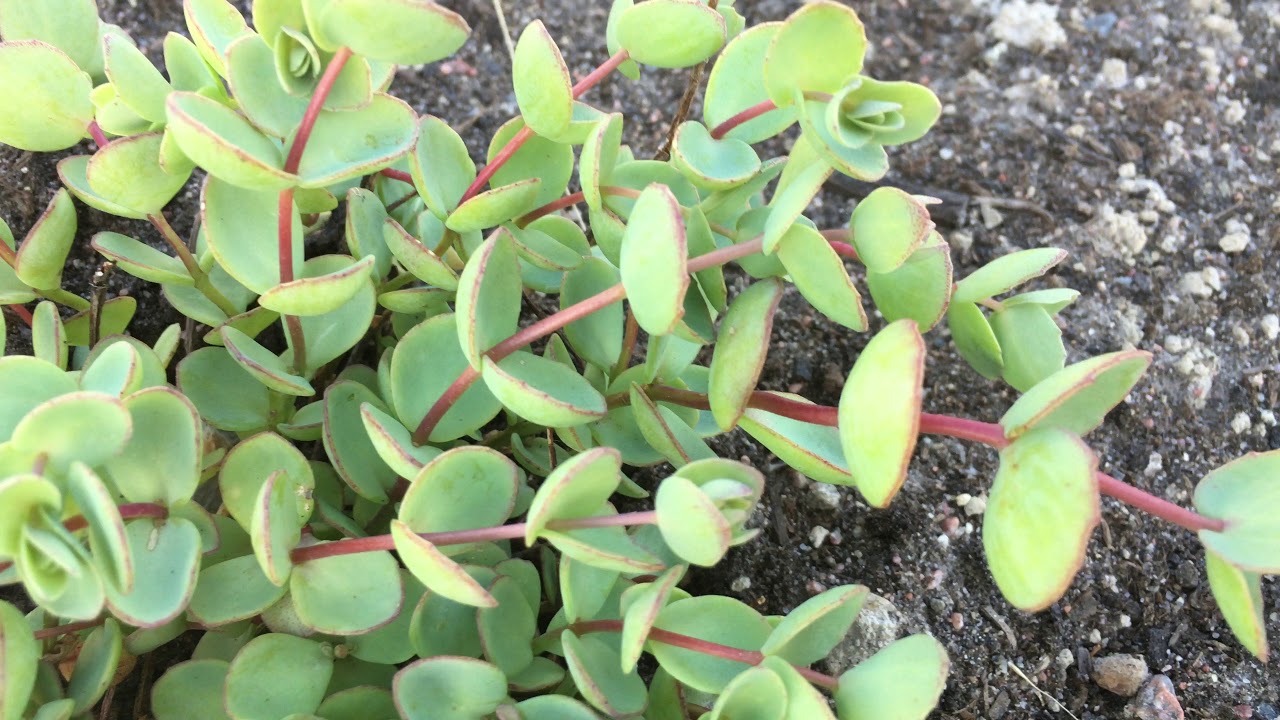 |
Korul'kin, D.Y., 2001. Chemical composition of certain Sedum species of Kazakhstan. Chemistry of natural compounds, 37(3), pp.219-223. |
| Sedum rhodiala DC |
Hasbi Jund |
Crassulaceae |
Herb |
salidroside, rosarin, rosavin and rosin |
heal wounds and relieve pain in cattle. |
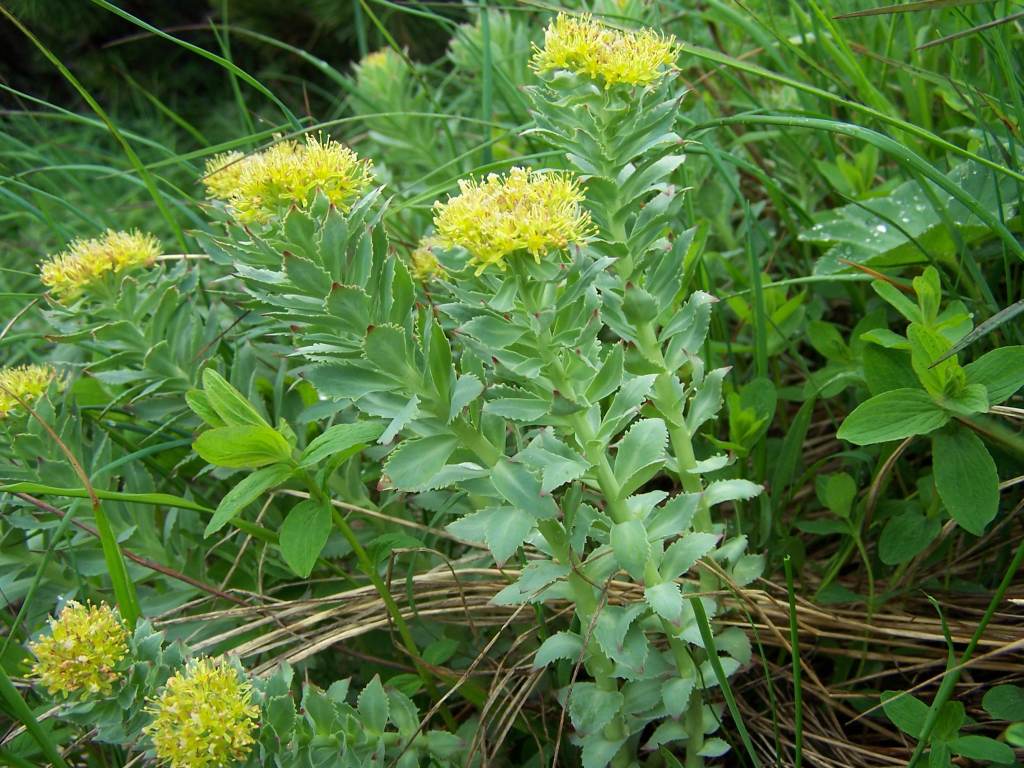 |
Marchev, A.S., Aneva, I.Y., Koycheva, I.K. and Georgiev, M.I., 2017. Phytochemical variations of Rhodiola rosea L. wild-grown in Bulgaria. Phytochemistry Letters, 20, pp.386-390. |
| Senecio graciliflorus (Wall.) DC. |
Baggu, Phagu |
Asteraceae |
Herb |
α-Pinene, cis-Ocimene, Trimethylcyclohexane, β-Pinene, 1-Ethyl-
2-methylcyclopentane, Trans-7-methyl-3-octene, Sabinene,
Limonene, Phellandrene, cis-Ocimene, trans-Ocimene, Octenyl
acetate, 5-Undecen-3-yne, 1-Dodecyne, Neryl acetate,
Caryophyllene, Curcumene, Valencene, Farnesene Caryophyllene
oxide (Lone et al., 2014)
|
Skin irritations |
%20DC.,.jpg) |
(Lone et al., 2014)
Lone, S.H., Bhat, K.A., Bhat, H.M., Majeed, R., Anand, R., Hamid, A. and Khuroo, M.A., 2014. Essential oil composition of Senecio graciliflorus DC: Comparative analysis of different parts and evaluation of antioxidant and cytotoxic activities. Phytomedicine, 21(6), pp.919-925.
|
| Silene nigrescens. |
Majumdar |
Caryophyllaceae |
Herb |
saponins, phyroecdysteroids, benzenoids, phenyl propanoids and nitrogen containing compounds |
it is used to protect from cold, cures hair diseases, dandruffs and lice |
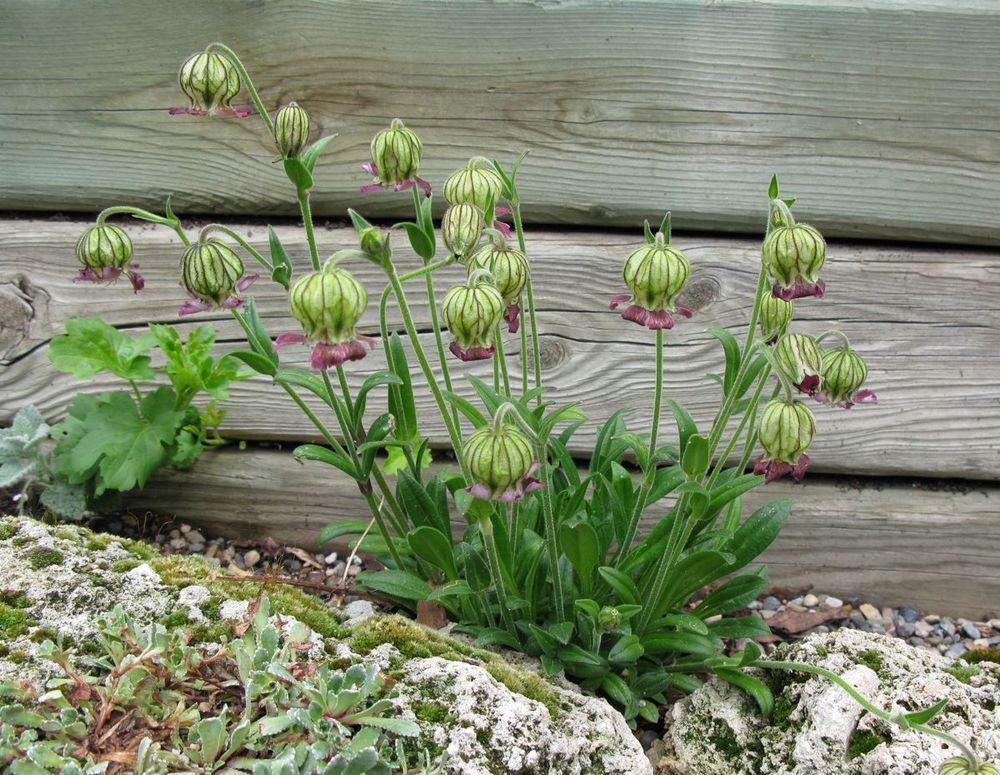 |
Rawat, S.C.D., 2015. Medicinal plants of the family Caryophyllaceae: A. tuberculosis, 47, p.56. |
| Silene vulgaris Garcke |
Takla |
Caryophyllaceae |
Herb |
The result of the phytochemical analysis of S. vulgaris leaves revealed the presence of ortho diphenols, catechins, phenolics, flavonoids, saponins, coumarins and tannins |
Plant possess antioxidant activity. |
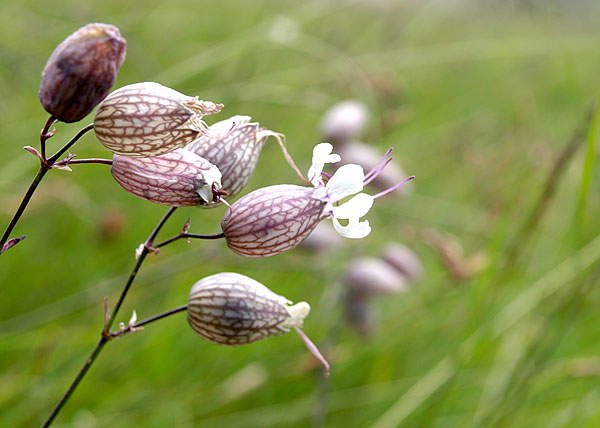 |
Smahane, B., Dalila, B., El Mansouri Latifa, N.A., El Youbi, H. and Amal, D.A., 2015. Phytochemical Studies, Antioxidant Activity and Protective Effect on DNA Damage and Deoxyribose of Silene Vulgaris Extract from Morocco. Int J of Pharma and Phyto Res, 7, pp.1172-1178. |
| Skimmia anquetilia N.P.Taylor & Airy Shaw |
Wangontar, Ganpatre |
Rutaceae |
Shrub |
S. anquetilia had different secondary metabolites such as alkaloids, glycosides, tannins, flavonoids, saponins and carbohydrates |
S. anquetilia possess significant anti-inflammatory activity in HRBC membrane stabilization test and carrageenan induced paw edema in rats |
 |
Kumar, V., Bhat, Z.A., Kumar, D., Khan, N.A. and Chashoo, I.A., 2012. Evaluation of anti-inflammatory potential of leaf extracts of Skimmia anquetilia. Asian Pacific journal of tropical biomedicine, 2(8), pp.627-630. |
| Skimmia arborescens NP Taylor |
Naer |
Rutaceae |
Shrub |
Two antifungal compounds ulopterol (a coumarin) and a quinolone alkaloid 4-Methoxy-l-methyl-3-(2'-S-hydroxy-3'-ene-butyl)-2-quinolon |
Antimicrobial activity |
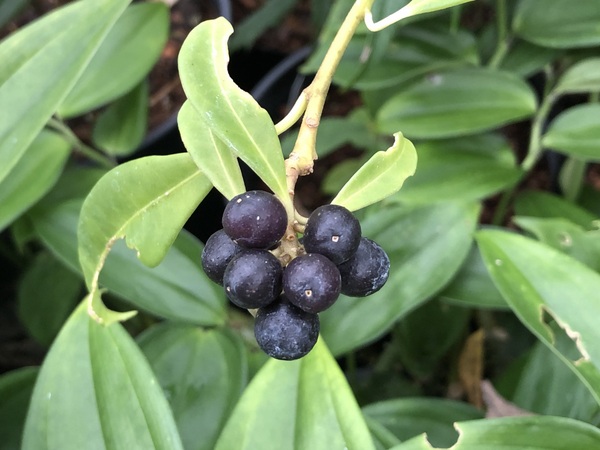 |
Zuo, G.Y., Zhang, X.J., Yang, C.X., Han, J., Wang, G.C. and Bian, Z.Q., 2012. Evaluation of traditional Chinese medicinal plants for anti-MRSA activity with reference to the treatment record of infectious diseases. Molecules, 17(3), pp.2955-2967. |
| Solanum nigrum |
Black nightshade |
Solanaceae |
Herb |
Hexane, benzene extracts showed the presence of saponin, phytosterols, tanins and fixed oils and fats. The ethanolic and aqueous extracts showed the presence of carbohydrates, coumarins, phytosterols and flavonoids. |
It had been studyed that the berries of S. nigrum having significant anti-inflammatory and anti-convulsant activity, the flavonoids present in the berries might be a responsible active constituent for this activity. |
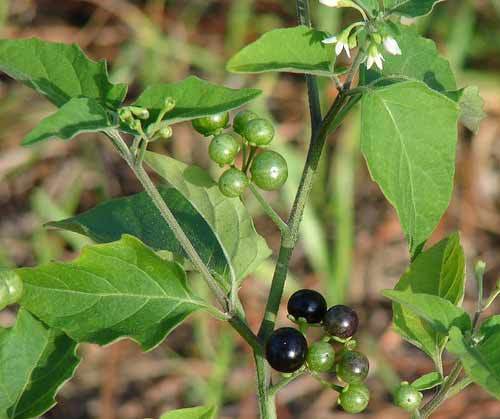 |
Atanu, F.O., Ebiloma, U.G. and Ajayi, E.I., 2011. A review of the pharmacological aspects of Solanum nigrum Linn. Biotechnology and Molecular Biology Reviews, 6(1), pp.1-8. |
| Solanum tuberosum L. |
Alua, Aaloo, Potato |
Solanaceae |
Herb |
Potato contains Phenolic acids, anthocyanin, flavonoids, vitamin B6, vitamin B3, pantothenic acid, potassium, manganese, phosphorous; copper and fibres |
Antioxidant, anticancer, antiallergy, antibacterial, anti-inflammatory, antiobesity, anti-ulcer activity |
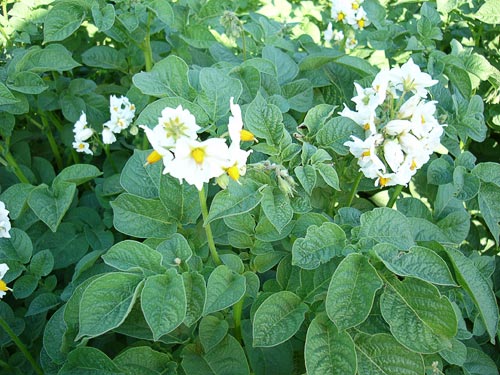 |
Gnanasekaran, C.G. and Basalingappa, K.M., 2018. Solanum tuberosum L: Botanical, Phytochemical, pharmacological and Nutritional significance. International journal of Phytomedicine, pp.115-124. |
| Solenanthus circinnatus |
Rounded Solenanthus |
Boraginaceae |
Herb |
Flavonols, Saponins, Phenyl propanoids, Flavonoids |
the ethanol extract of the roots of the plant produced an antinociceptive and antiinflammatory effect when assessed in rat models of nociception |
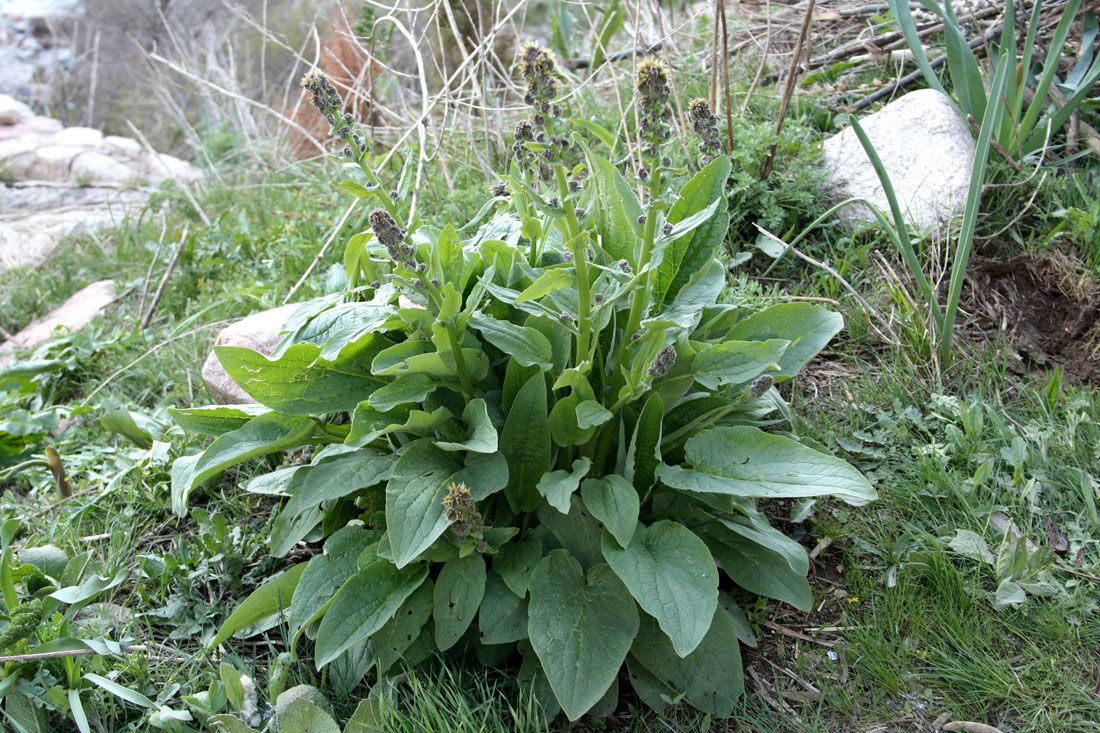 |
Jahromi, M.A., Jamshidzadeh, A. and Sokooti, S., 2020. Comparative Evaluation of Analgesic Activity of Solenanthus circinatus Ledeb. Root Extract and Fractions in Rat Models of Pain. Trends in Pharmaceutical Sciences, 6(3). |
| Solidago virgaurea Linn. |
Woundwort |
Asteraceae |
Herb |
Its main chemical constituents are flavonoids (mainly derived from quercetin and kaempferol), C6-C1 and C6-C3 compounds, terpenes (mostly from the essential oil), and a large number of saponin molecules (mainly virgaureasaponins and solidagosaponins). |
antioxidant, anti-inflammatory, analgesic, spasmolitic, antihypertensive, diuretic, antibacterial, antifungal, antiparasite, cytotoxic and antitumor, antimutagenic, antiadipogenic, antidiabetic, cardioprotective, and antisenescence. |
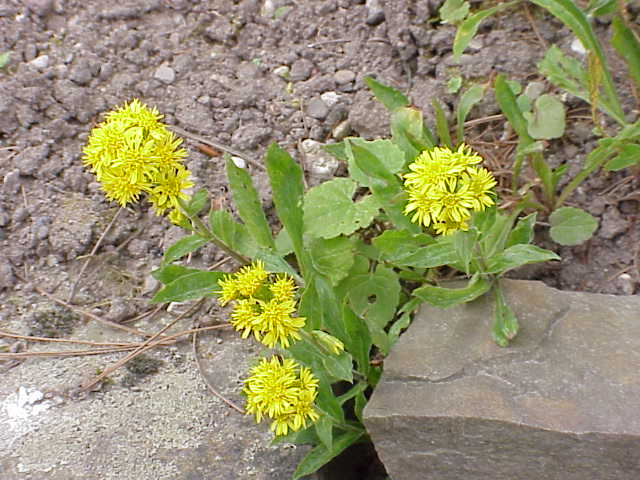 |
Fursenco, C., Calalb, T., Uncu, L., Dinu, M. and Ancuceanu, R., 2020. Solidago virgaurea L.: a review of its ethnomedicinal uses, phytochemistry, and pharmacological activities. Biomolecules, 10(12), p.1619. |
| Sonchus arvensis L. |
Dudh Kandij |
Asteraceae |
Herb |
Palmitic acid, β-Sitosterol, Daucosterol, Quercetin, Apigenin-7-O-
β-glucopyranoside, Luteolin-7-O-β-D-glucopyranoside, Quercetin-
3-O-β-D-glucopyranoside, Rutin (Jiang et al., 2009)
|
Boils, Wounds |
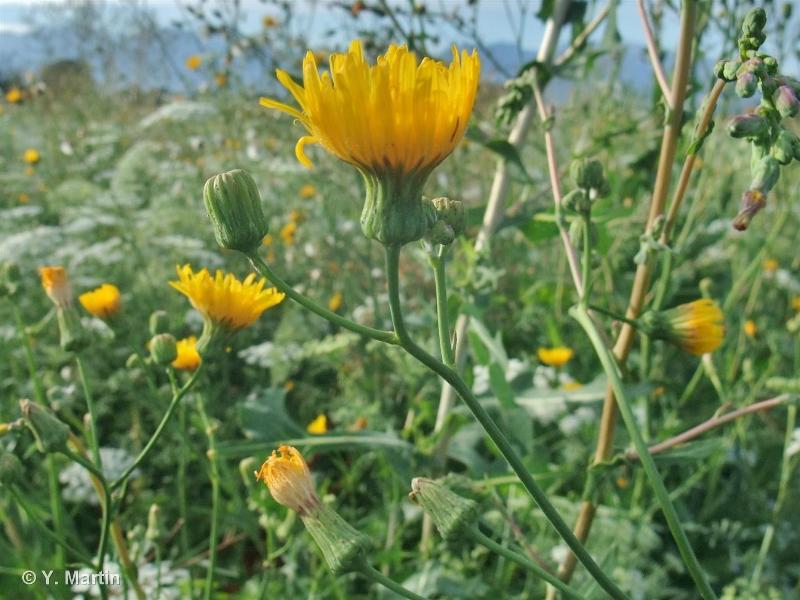 |
Jiang, L., Yao, Q.Q., Xie, Y.Y., 2009. Study on chemical constituents of Sonchus arvensis L. Food and Drug 11, 27–29.
|
| Sonchus oleraceus L. |
Dudije |
Asteraceae |
Herb |
Loliolide, 15-O- β −glucopyranosyl-11 β, Dihydrourospermal A,
Ursolic acid, Lupeol, β-Sitosterol- 3-O-glucopyranoside
(Elkhayat, 2009)
|
Jaundice |
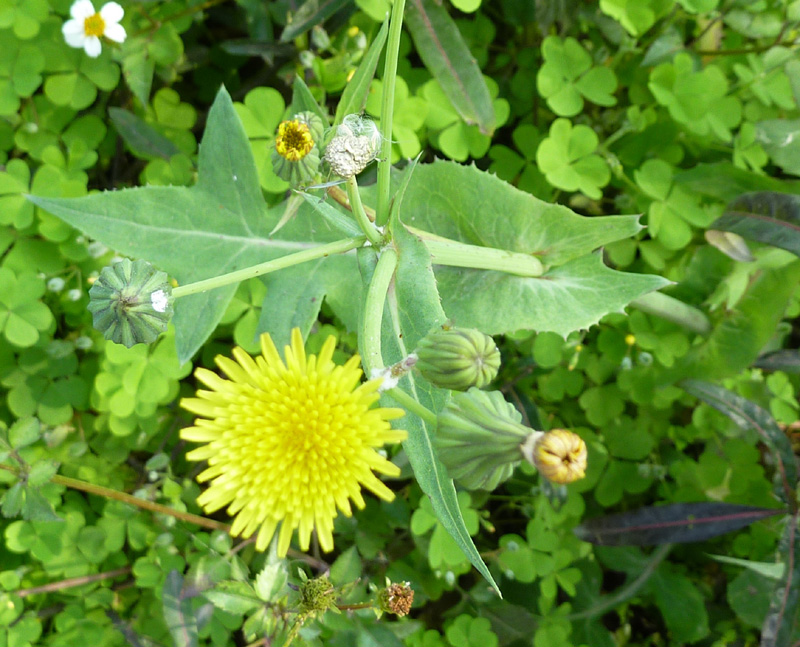 |
Elkhayat, E.S., 2009. Cytotoxic and antibacterial constituents from the roots of Sonchus oleraceus L. growing in Egypt. Pharmaceutical Magazine 5, 324–328. |
| Spiranthes sinensis |
Chinese spiranthes |
Orchidaceae |
Herb |
tetrahydrofurylhydroxypyran-2-one, megastigmane glucoside, 2-isobutyltartrate benzyl ester glucoside and bibenzyl |
It has been used as a crude drug in the treatments of fever, cough, hemoptysis, vertigo and low back pain |
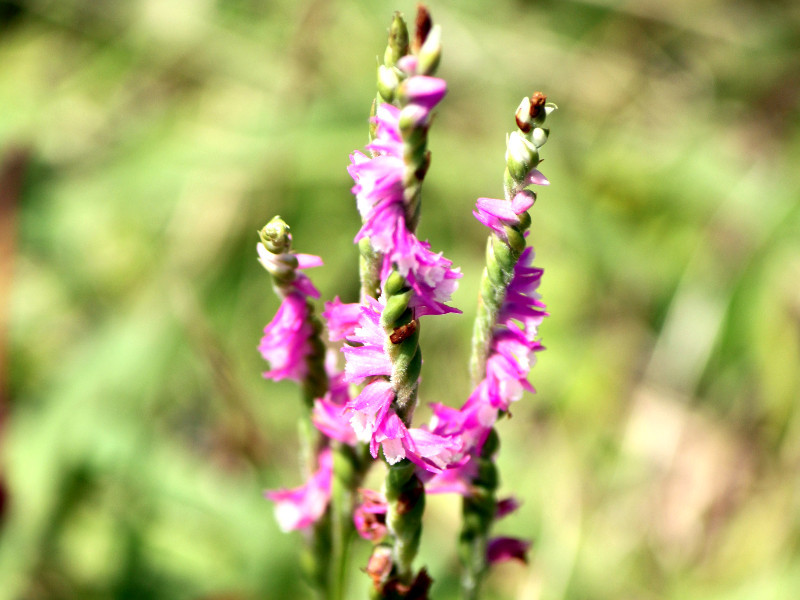 |
Yan, Y., Wu, C., Zhou, H., Feng, X. and Li, Y.F., 2019. Secondary metabolites from Spiranthes sinensis (Orchidaceae). Biochemical Systematics and Ecology, 86, p.103910. |
| Stellaria media L. |
Losdhi |
Caryophyllaceae |
Herb |
Alkaloids, Anthracene glycosides, Cardiac glycosides |
The plant is reported to be useful in inflammations of the digestive, renal, respiratory and reproductive tracts |
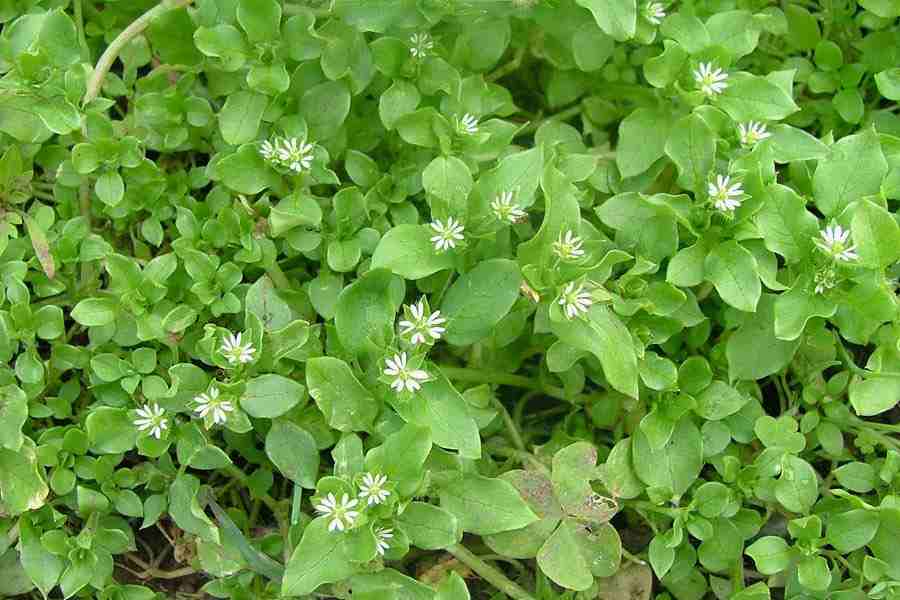 |
Arora, D. and Sharma, A., 2012. Pharmacognostic and Phytochemical Studies of Stellaria media Linn. Journal of Pharmaceutical Sciences and Research, 4(5), p.1819. |
| Swertia petiolata Royle |
Tikta, Zatik, Sarad Jaddi |
Gentianaceae |
Herb |
1-Glycosylloxy-3-hydroxy, 5,8, dimethoxyxanthone; 1,8-
Dihydroxy,3,5 dimethoxyxanthone; 1,8-Dihydroxy,3
dimethoxyxanthone; 1,3-Dihydroxy,5,8 dimethoxyxanthone 2-
hydroxy dimethlterephthalate; Swertialactone C, D; 3β-
hydroxylup-13 (18)-ene; 3β-hydroxylup-12-ene-28-oic acid;
Ursolic acid (Negi et al., 2011)
|
Bodyache, Fever, Headache |
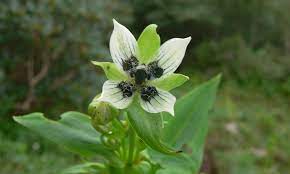 |
Negi, J.S., Singh, P., Rawat, B., 2011. Chemical constituents and biological importance of Swertia a review. Current Research in Chemistry 3, 1–15. |
| Tagetes minuta L. |
Jangli jafar |
Asteraceae |
Herb |
Limonene, cis−Ocimene, Dihydrotagetone, trans and
cis−Tagetone, trans and cis−Tagetenone, Terpinolene,
Carvacrol, Carvone, β-Caryophyllene, Germacrene D (Vázquez
et al., 2011)
|
Fever, Bronchial diseases |
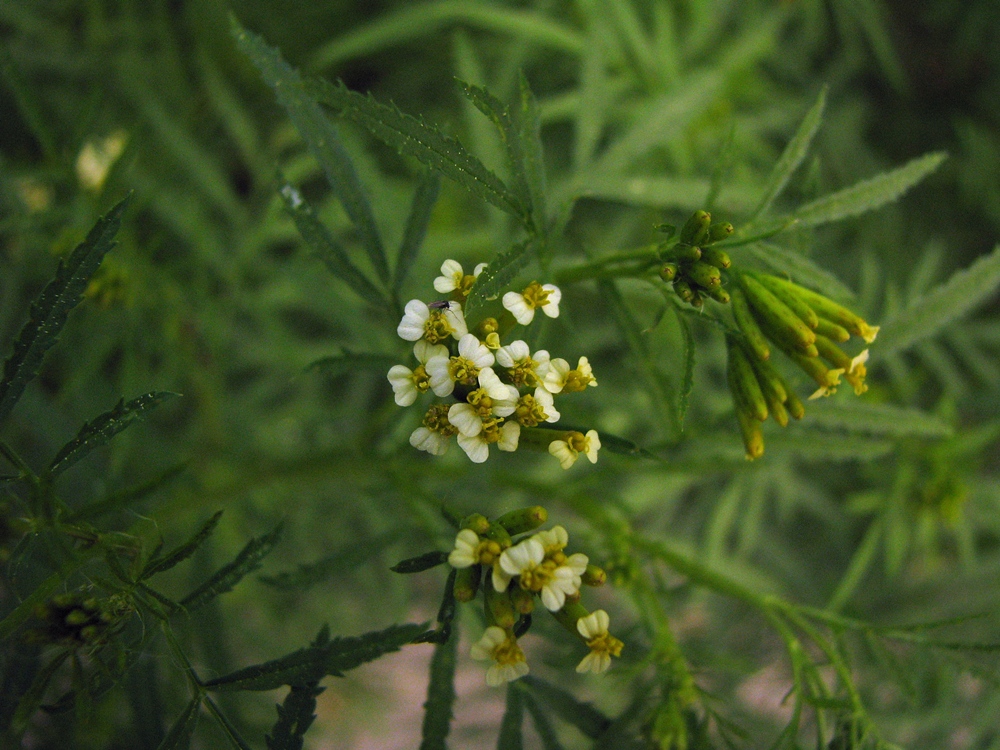 |
Vázquez, A.M., Demmel, G.I., Criado, S.G., Aimar, M.L., Cantero, J.J., Rossi, L.I., et al., 2011. Phytochemistry of Tagetes minuta L. (Asteraceae) from Cárdoba, Argentina, Comparative study between essential oil and HS–SPME analyses. Bol Latinoamer Caribe Plant Med Aromat 10, 351–362. |
| Tanacetum dolichophyllum (Kitam.) Kitam. |
Liddguggli |
Asteraceae |
Herb |
cis-Lanceol, β-Pinene, (E)-β-Farnesene, α-Bisabolol, β-Eudesmol,
Terpinen-4-ol, Neryl acetate (Haider et al., 2011)
|
Indigestion, Stomach problems, Intestinal worms |
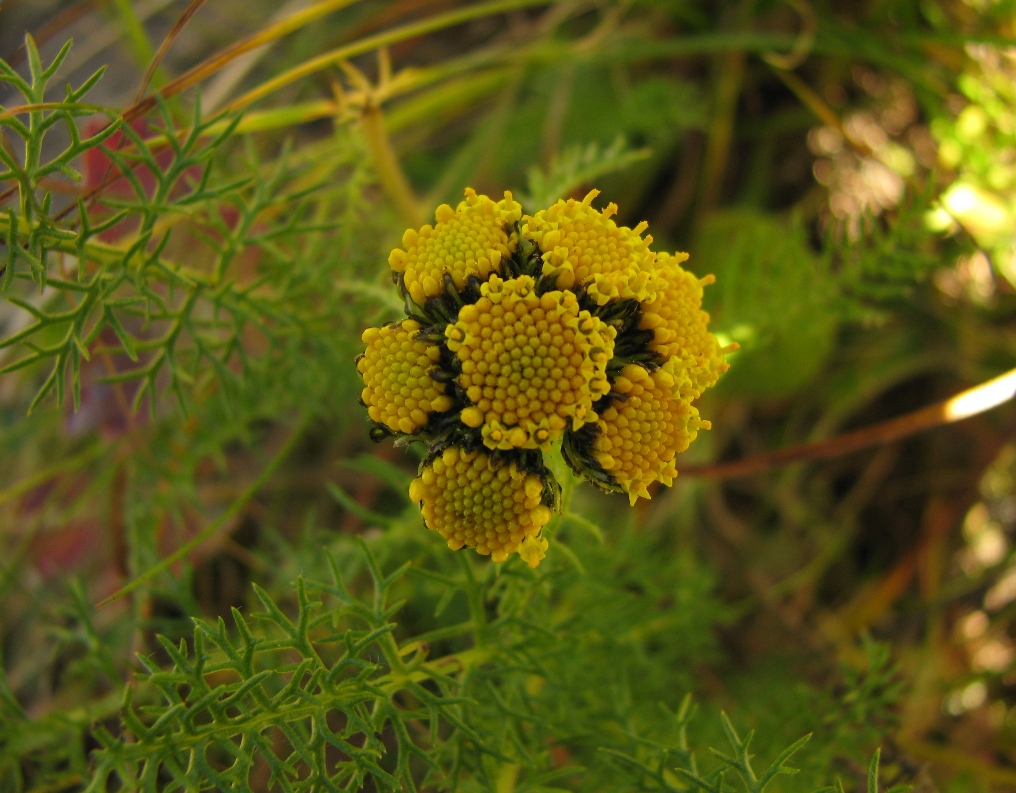 |
Haider, S.Z., Lohani, H., Sah, S., Chauhan, N.K., Tiwari, S.C., 2011. Variation in the constituents of Tanacetum dolichophyllum (Kitam.) Kitam: from different locations of Uttarakhand Himalaya (India). Journal of Essential Oil Research 23, 48–51. |
| Tanacetum gracile Hook. f. & Thomson |
Khamchu, Thorchokma |
Asteraceae |
Herb |
Lavendulol; 1,8-Cineole, (Z)-β–Ocimene, α −Bisabolol,
Chamazulene, α −Phellandrene (Joshi et al., 2016)
|
Intestinal worms, Fever |
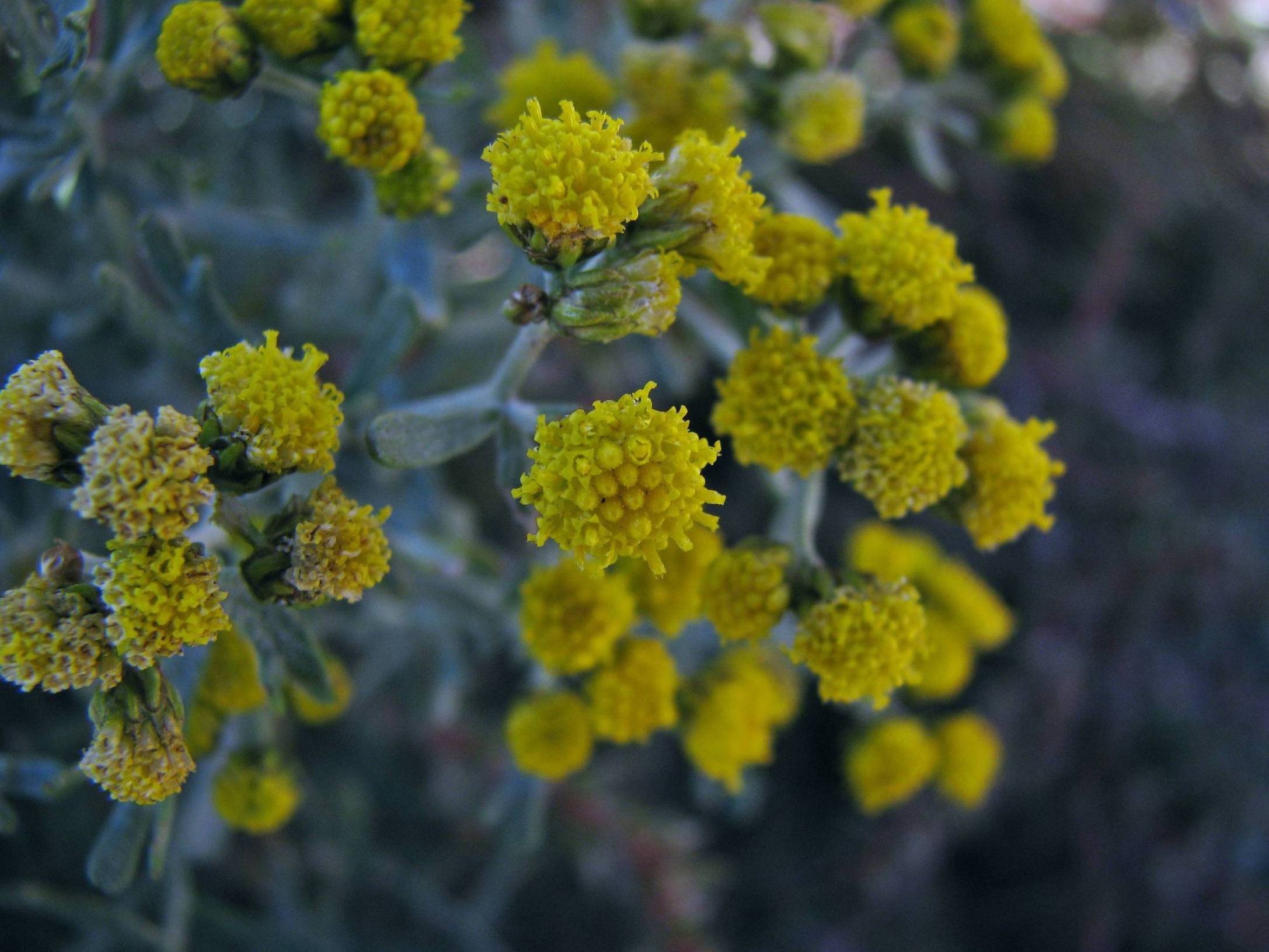 |
Joshi, R.K., Satyal, P., Setzer, W.N., 2016. Himalayan aromatic medicinal plants: a review of their ethnopharmacology, volatile phytochemistry, and biological activities. Medicines 3, 6. |
| Taraxacum officinale Weber ex Wiggers |
Hand |
Asteraceae |
Herb |
sesquiterpenes including the eudesmanolides tetrahydroridentin B and taraxacolide-O-β-glucopyranoside, the guaianolides 11β,13-dihydrolactucin and ixerin D, and three germacranolide esters, taraxinic acid β-glucopyranoside, its 11,13-dihydro-derivative and ainslioside were identified |
anti-inflammatory, anti-carcinogenic and anti-oxidative activities |
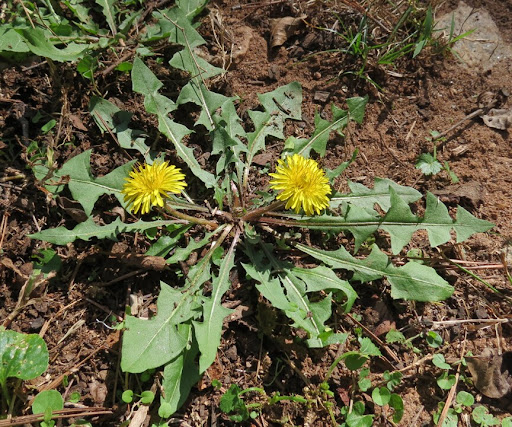 |
Schütz, K., Carle, R. and Schieber, A., 2006. Taraxacum—a review on its phytochemical and pharmacological profile. Journal of ethnopharmacology, 107(3), pp.313-323. |
| Taxus baccata Linn. |
Postul |
Taxaceae |
Tree |
Four taxoids (taxusin, baccatin VI, baccatin III and 1β-hydroxybaccatin I) and five lignans (lariciresinol, taxiresinol, 3 -demethylisolariciresinol-9 -hydroxyisopropylether, isolariciresinol and 3-demethylisolariciresinol) were isolated from the heartwood of Taxus baccata |
Anti-inflammatory and antinociceptive activity |
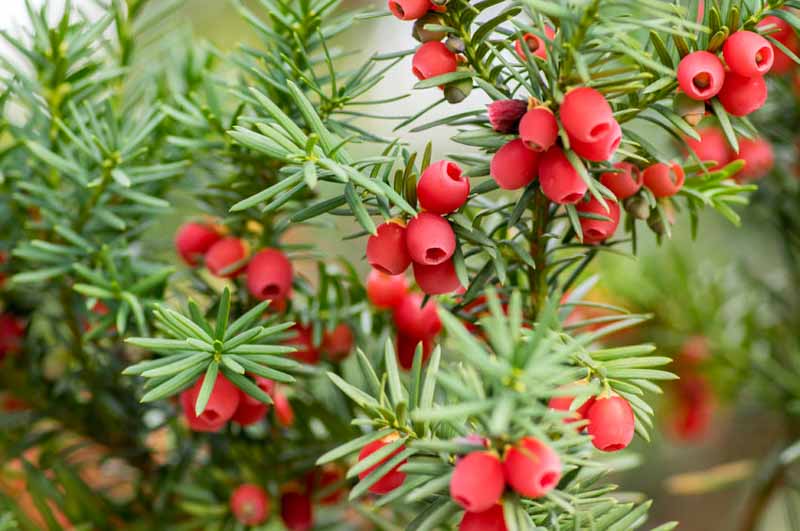 |
Küpeli, E., Erdemoğlu, N., Yeşilada, E. and Şener, B., 2003. Anti-inflammatory and antinociceptive activity of taxoids and lignans from the heartwood of Taxus baccata L. Journal of ethnopharmacology, 89(2-3), pp.265-270. |
| Thymus linearis Benth.ex Benth. |
Chok dawa |
Lamiaceae |
Herb |
Thymol, Carvacrol, Terpinene, Geraniol, Geranyl acetate, Thymyl
acetate, p-Cymene, Terpinene (Joshi et al., 2016)
|
Swellings |
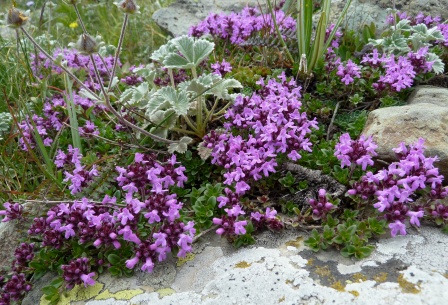 |
Joshi, R.K., Satyal, P., Setzer, W.N., 2016. Himalayan aromatic medicinal plants: a review of their ethnopharmacology, volatile phytochemistry, and biological activities. Medicines 3, 6. |
| Thymus serphyllum L. |
Thumbrek, Jawand, Javen |
Lamiaceae |
Herb |
Thymol; 1,8-Cineole, Terpinene, p-Cymene, Thymol methyl ether
(Joshi et al., 2016)
|
Asthma, Baldness, Blood purifier, Bronchitis,
Indigestion, Eye diseases, Laxative, Skin
eruptions, Stomach problems, Toothache
|
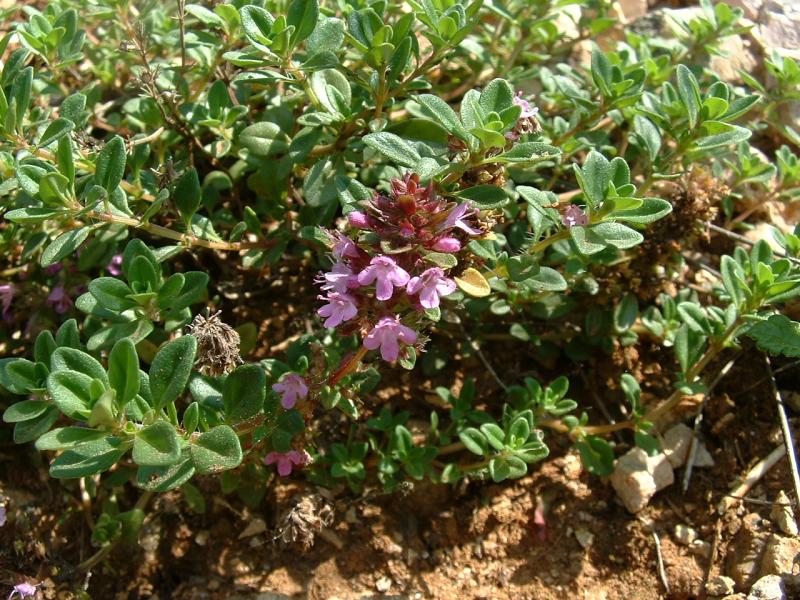 |
Joshi, R.K., Satyal, P., Setzer, W.N., 2016. Himalayan aromatic medicinal plants: a review of their ethnopharmacology, volatile phytochemistry, and biological activities. Medicines 3, 6. |
| Tragopogon pratensis L. |
Tharnoo |
Asteraceae |
Herb |
Gallic acid, Ferulic acid, RutinResveratrol, Sinapic acid, Caffeic
acid (Kucekova et al., 2011)
|
Gout, Rheumatism, Liver diseases |
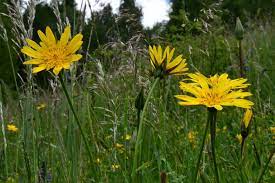 |
(Kucekova et al., 2011) |
| Trifolium pratense L. |
Burseem, Batakpanj, Lalchopati |
Fabaceae |
Herb |
biochanin A and formononetin are present as glycosides in red clover. More recently, isoflavones, their glycosides, their glycosides malonates and their acetyl glycosides were determined in red clover extracts using chromatographic and spectrometric methods |
It is used as expectorants, analgesics, antiseptics and against rheumatism aches |
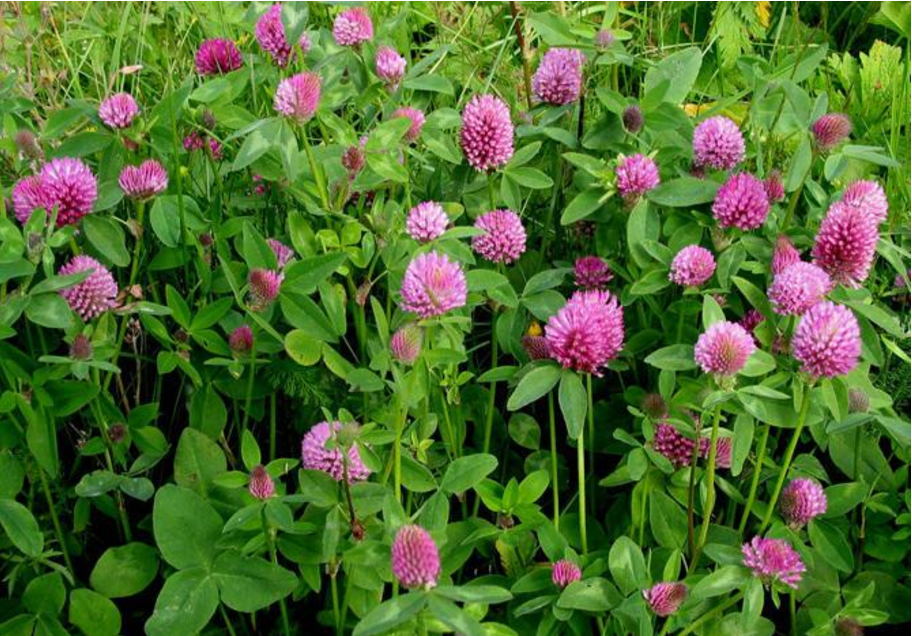 |
Sabudak, T. and Guler, N., 2009. Trifolium L.–a review on its phytochemical and pharmacological profile. Phytotherapy Research: An International Journal Devoted to Pharmacological and Toxicological Evaluation of Natural Product Derivatives, 23(3), pp.439-446. |
| Trifolium repens L. |
Batak-Panj |
Fabaceae |
Herb |
acids, phenol, aldehydes, ketones, alcohols, esters and hydrocarbons. |
It is used as expectorants, analgesics, antiseptics and against rheumatism aches |
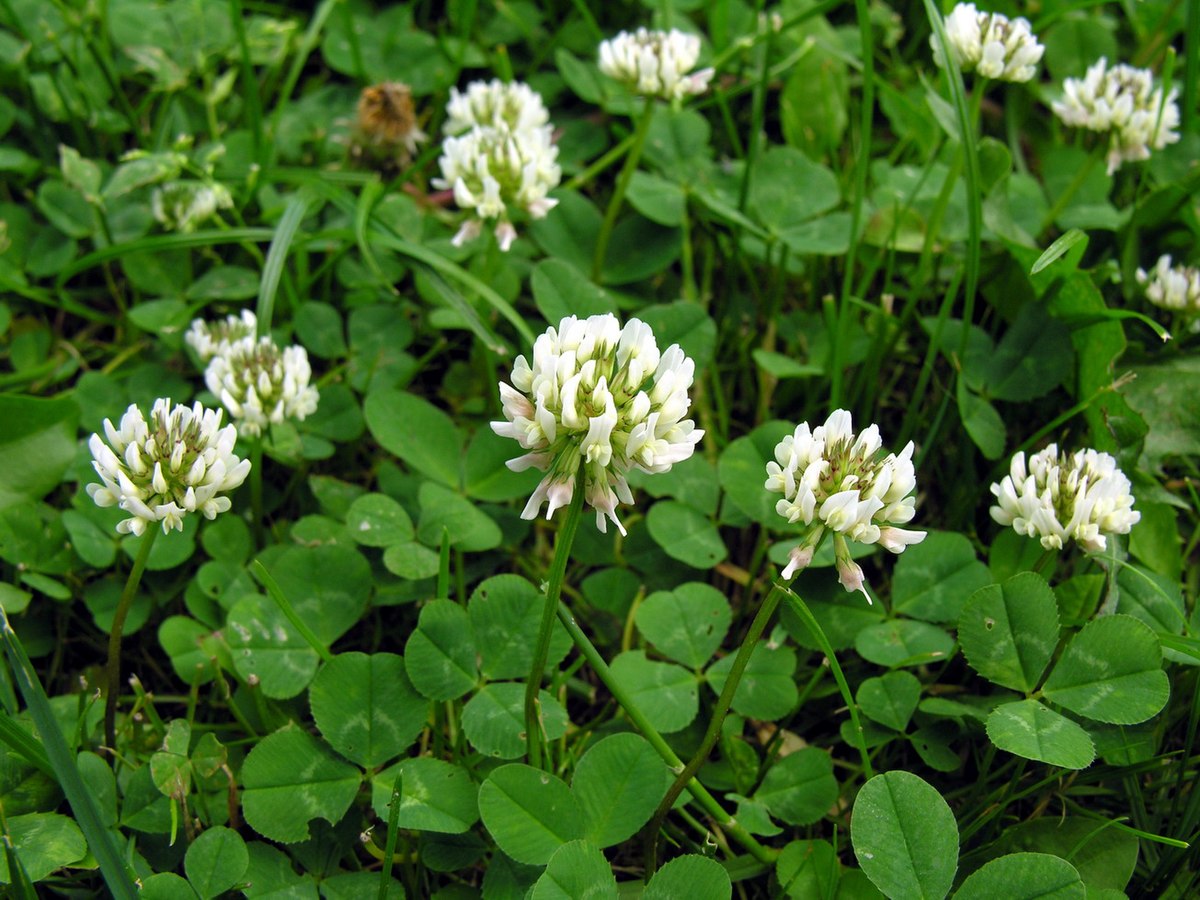 |
Sabudak, T. and Guler, N., 2009. Trifolium L.–a review on its phytochemical and pharmacological profile. Phytotherapy Research: An International Journal Devoted to Pharmacological and Toxicological Evaluation of Natural Product Derivatives, 23(3), pp.439-446. |
| Trigonella foenum-graecum L. |
Methi, Meth |
Fabaceae |
Herb |
Kaempferol 3-O-β-D-glucopyranoside, Kaempferol 7-O-glucoside,
Kaempferol 3-O-α-L-rhamnosyl (1 → 2) β-D-xyloside, Kaempferol
7-O-β-D-glucopyranosyl (1–4) β-D-glucopyranoside, Kaempferol
3-O-β-glucosyl (1 → 2) (6′-O-acetyl)-β-D-galactoside (Omezzine
et al., 2014)
|
Throat infections |
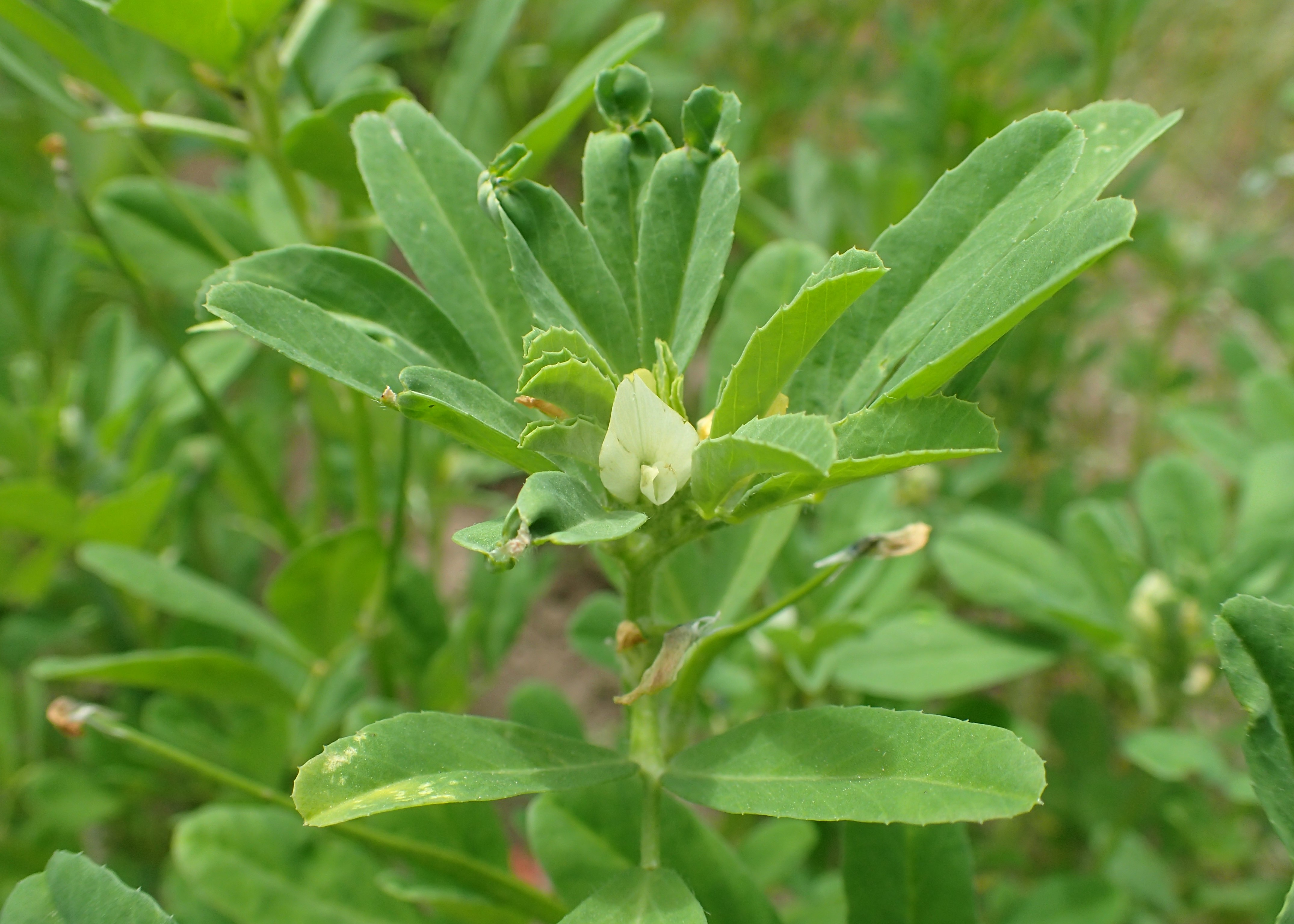 |
Omezzine, F., Bouaziz, M., Daami-Remadi, M., Simmonds, M.S., Haouala, R., 2014. Chemical composition and antifungal activity of Trigonella foenum-graecum L. varied with plant ploidy level and developmental stage. Arabian Journal of Chemistry 10 (2), S3622–S3631. |
| Trillium govanianum Wall. |
Surmagand,
Sheethkar
|
Liliaceae |
Herb |
Brassoside, Diosgenin, Govanoside A, Pennogenin E, Polyphyllin
VII, Sarsasapogenin, Trillarin, Pennogenin, Piosgenin (Khan
et al., 2016)
|
Burns, Wounds |
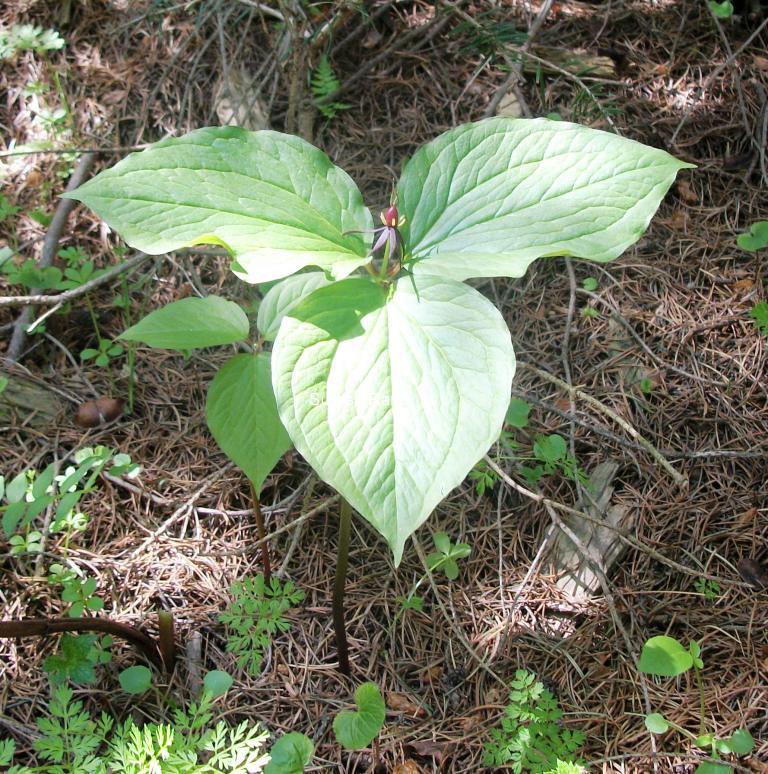 |
Khan, K.M., Nahar, L., Al-Groshi, A., Zavoianu, A.G., Evans, A., Dempster, N.M., et al., 2016. Cytotoxicity of the roots of Trillium govanianum against breast (MCF7) liver (HepG2), lung (A549) and urinary bladder (EJ138) carcinoma cells. Phytotherapy Research 30, 1716–1720.
|
| Trollius acaulis |
Dwarf Globe Flower |
Ranunculaceae |
Herb |
Flavonoids, mainly C-glycosides, |
|
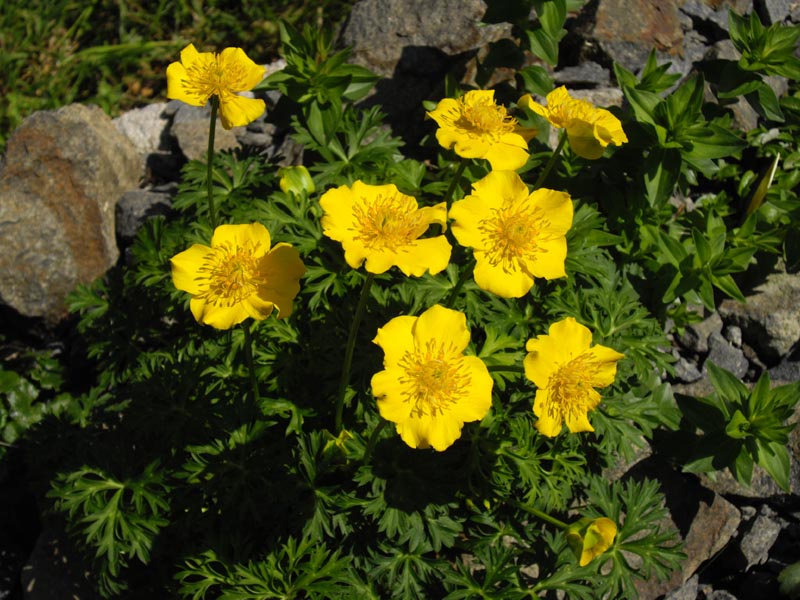 |
Witkowska‐Banaszczak, E., 2015. The genus Trollius—review of pharmacological and chemical research. Phytotherapy Research, 29(4), pp.475-500. |
| Tussilago farfara L. |
Watpan |
Asteraceae |
Herb |
Methyl 3, 4-O-dicaffeoylquinate; Methyl 3, 5-O-
dicaffeoylquinate; Methyl 4, 5-O-dicaffeoylquinate (3), 3, 5-O-
dicaffeoylquinic acid; Methyl 3-O-caffeoylquinate, 3-O-
caffeoylquinic acid; Hyperoside; Rutin; Kaempferol 3-O-beta-D-
glucopyranoside; Quercetin; Kaempferol (Chanaj-Kaczmarek
et al., 2013)
|
Asthma, Bronchitis |
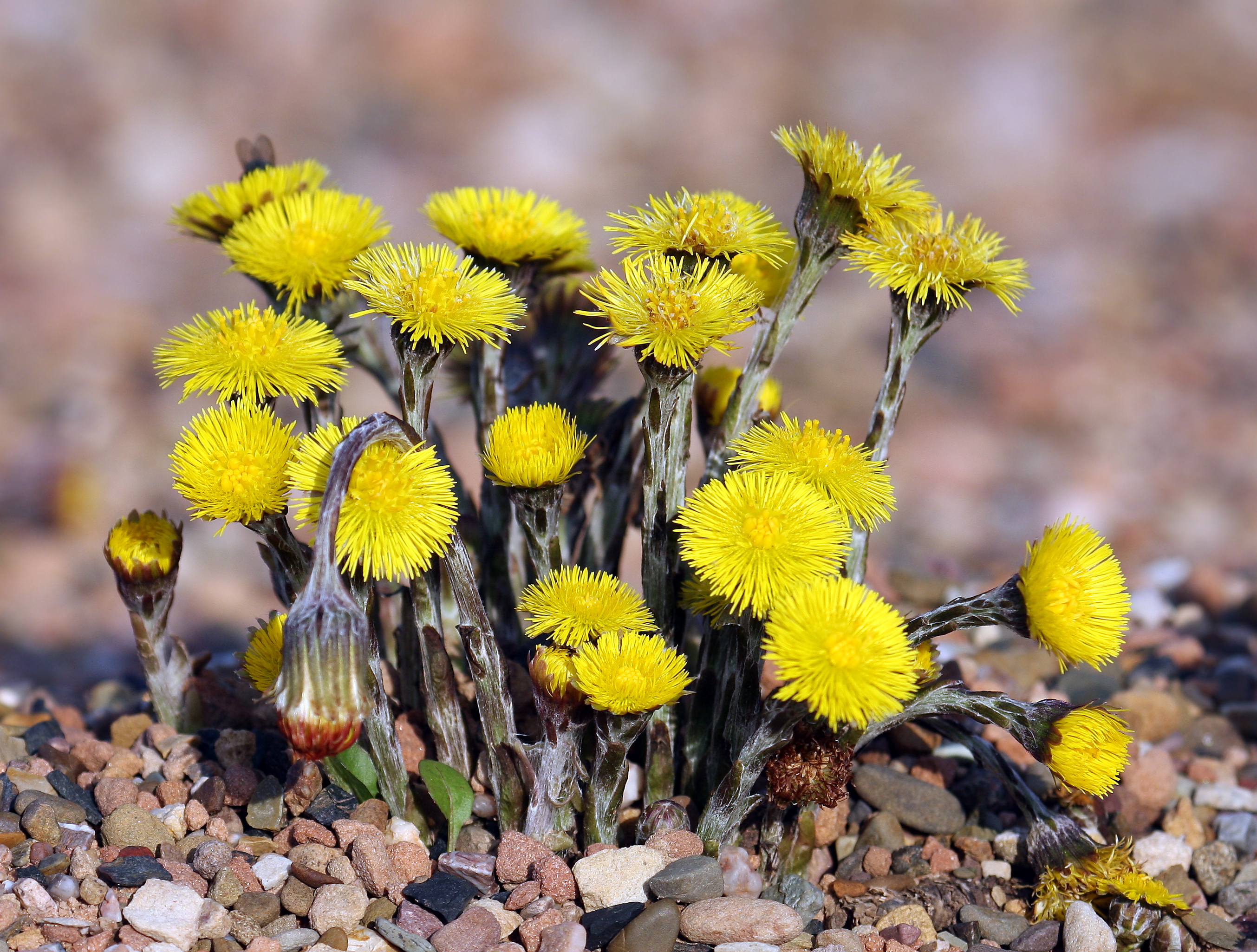 |
Chanaj-Kaczmarek, J., Wojcińska, M., Matławska, I., 2013. Phenolics in the Tussilago farfara leaves. Herba Polonica 59, 35–43.
|
| Urtica dioica L. |
|
|
|
|
|
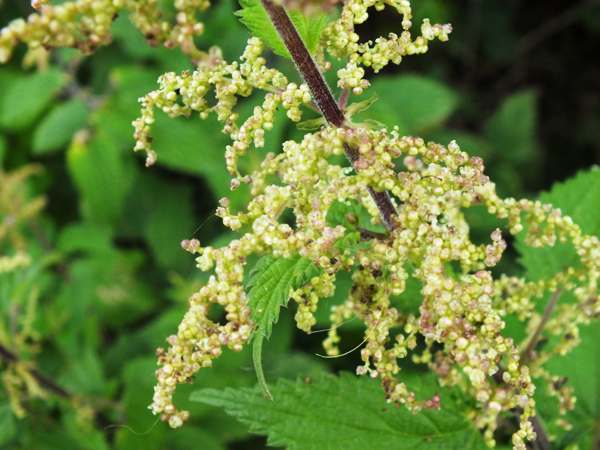 |
|
| Valeriana hardwickii Wall. |
Mushkbala,
Budjeeth
|
Valerianaceae |
Herb |
Bornyl acetate, Cuparene, Valeracetate, Methyl linoleate,
Epoxysesquithujene, Cedrene, 8-epikessyl glycol diacetate,
Kessanyl acetate, Gurjunene (Joshi et al., 2016)
|
Abdominal disorders, Intestinal pain, Chronic
disorders
|
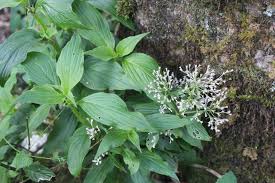 |
Joshi, R.K., Satyal, P., Setzer, W.N., 2016. Himalayan aromatic medicinal plants: a review of their ethnopharmacology, volatile phytochemistry, and biological activities. Medicines 3, 6. |
| Valeriana jatamansii Jones |
Mushkbala |
Valerianaceae |
Herb |
Maaliol, Viridiflorol, β −Gurjunene, Seychellene, α-Santalene,
Seychellene, Patchouli alcohol, α −Bulnesene, Azulene, α
−Guaiene, β-Caryophyllene, Kanokonyl acetate γ −Curcumene,
ar-Curcumene, 3-Methylvaleric acid (Joshi et al., 2016)
|
Abdominal pain, Urine infections, Diarrhoea,
Fever, Gynaecological disorders, Heart diseases,
Nervous disorder, Wounds
|
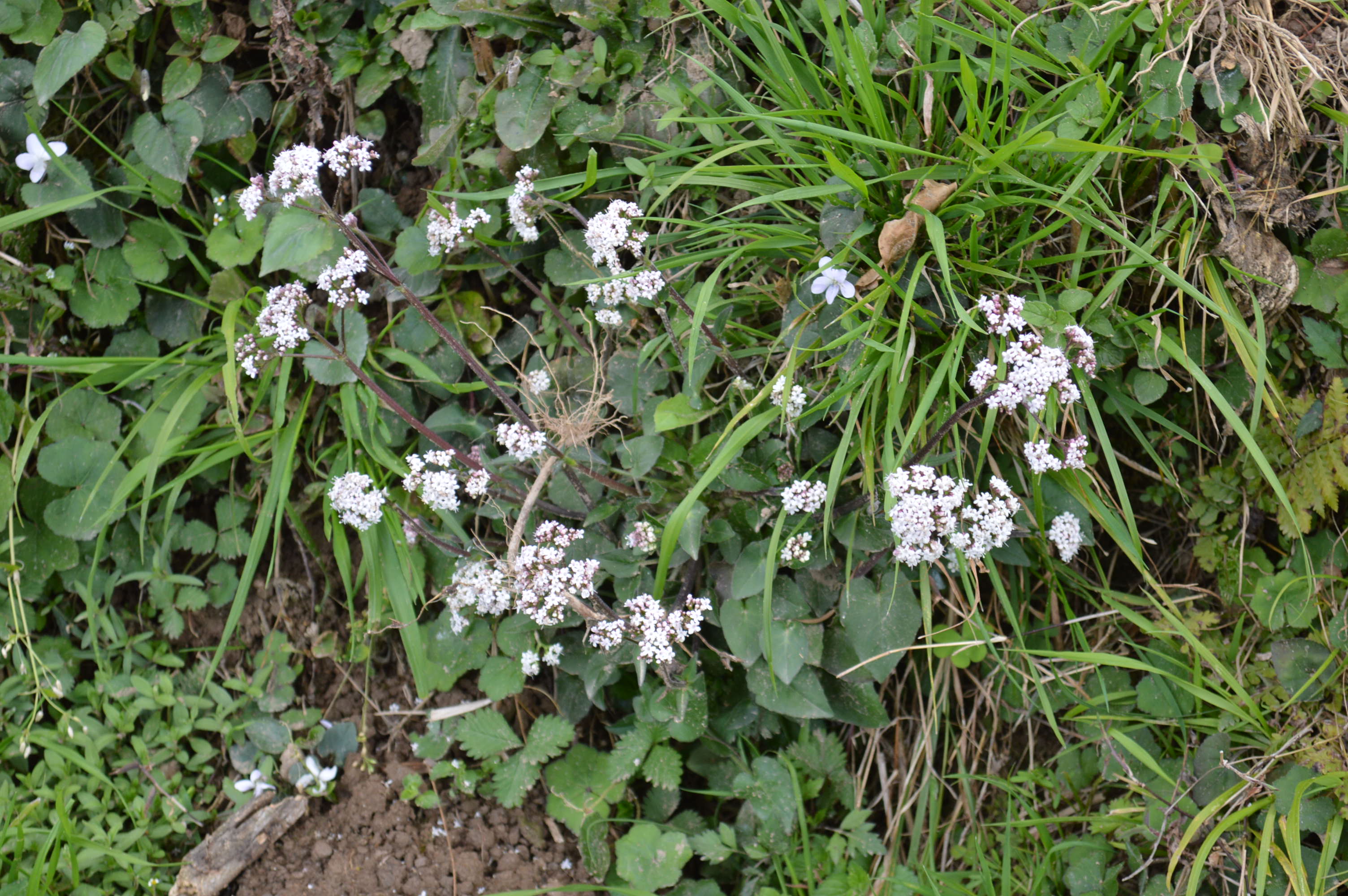 |
Joshi, R.K., Satyal, P., Setzer, W.N., 2016. Himalayan aromatic medicinal plants: a review of their ethnopharmacology, volatile phytochemistry, and biological activities. Medicines 3, 6. |
| Valeriana pyrolifolia |
Kashmir Valerian |
Valerianaceae |
Herb |
|
|
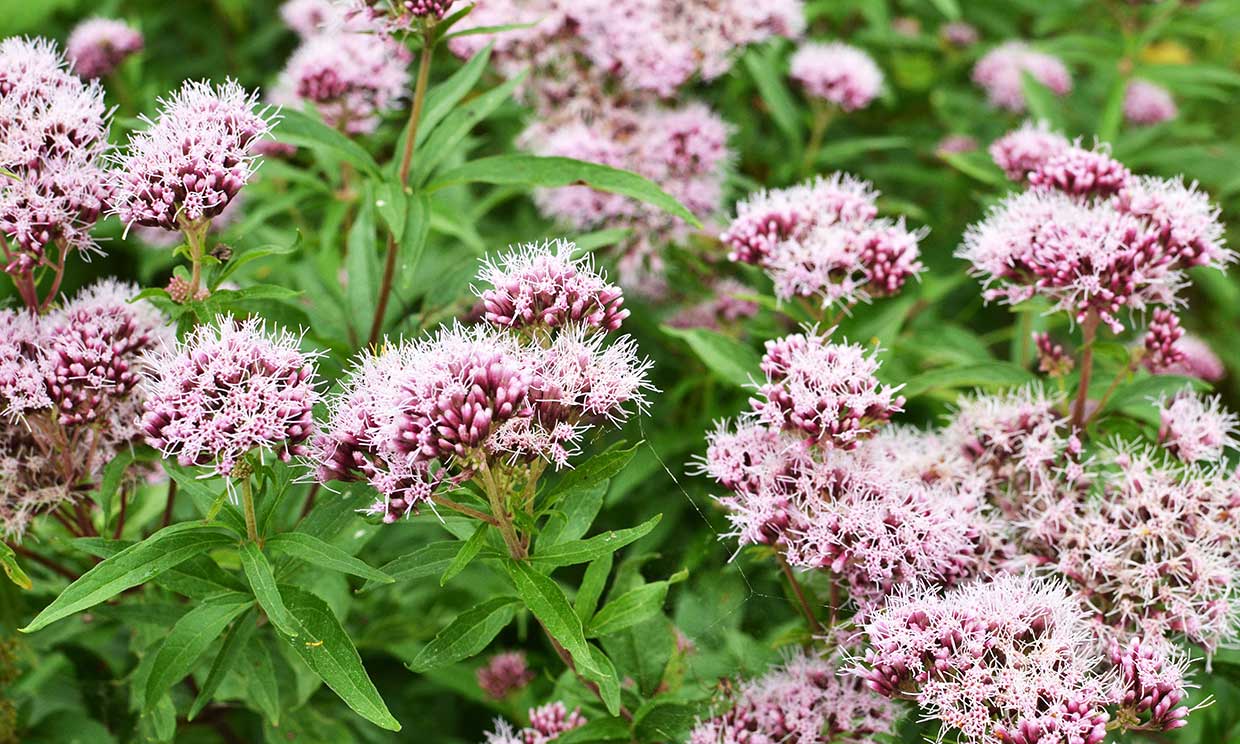 |
|
| Verbascum thapsus L. |
Wan-tamook |
Wan-tamook |
Herb |
iridoid glycosides, three iridoid, one phenylethyl glycoside, two sesquiterpenes, one diterpene, and one biflavonoid |
It is used to treat respiratory disorders such as bronchitis, dry coughs, tuberculosis and asthma in Turkish traditional medicine |
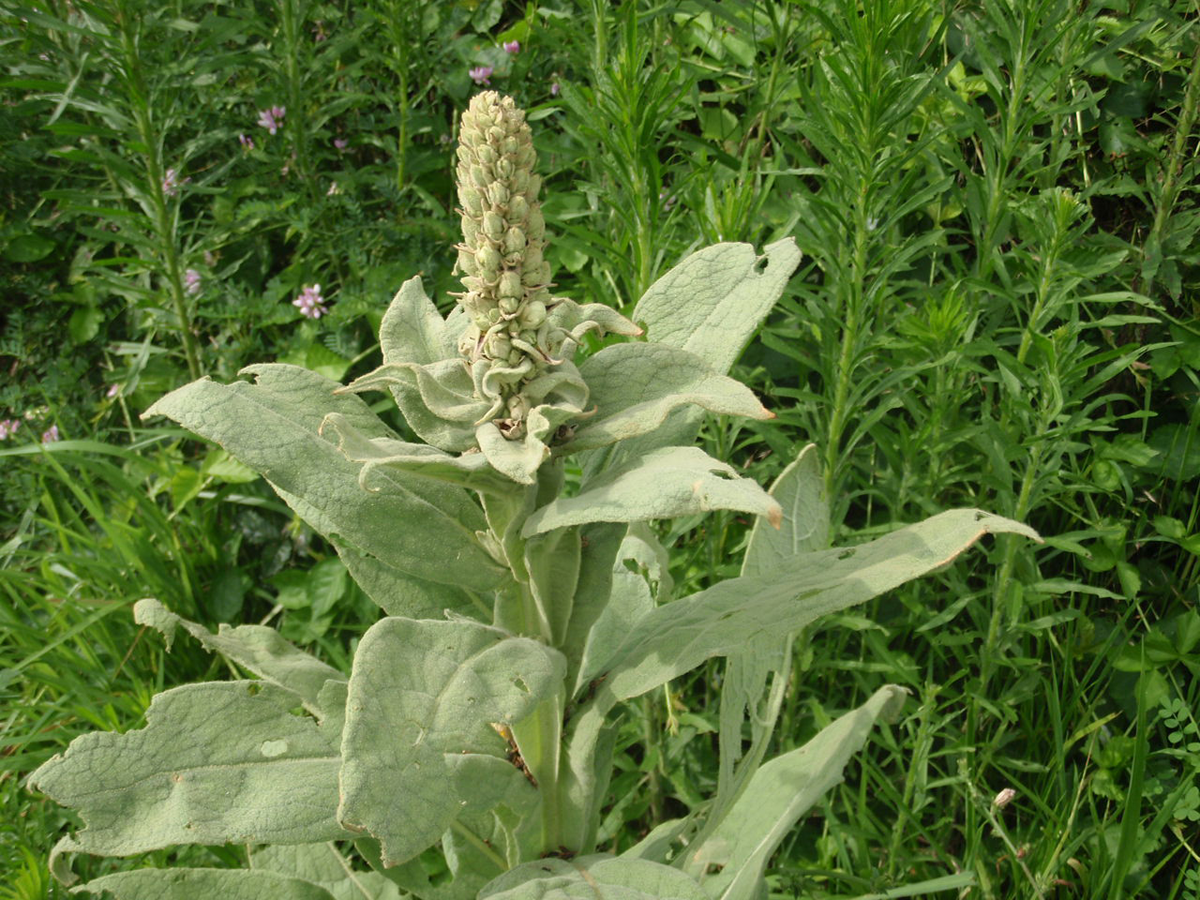 |
Hussain, H., Aziz, S., Miana, G.A., Ahmad, V.U., Anwar, S. and Ahmed, I., 2009. Minor chemical constituents of Verbascum thapsus. Biochemical systematics and ecology, 37(2), pp.124-126. Süntar, I., Tatlı, I.I., Akkol, E.K., Keleş, H., Kahraman, Ç. and Akdemir, Z., 2010. An ethnopharmacological study on Verbascum species: from conventional wound healing use to scientific verification. Journal of ethnopharmacology, 132(2), pp.408-413. |
| Verbena officinalis L. |
Hath mool |
Verbenaceae |
Herb |
β-sitosterol, Ursolic acid, Oleanolic acid, 3-Epiursolic acid, 3-
Epioleanolic acid (Deepak and Handa, 2000)
|
Indigestion, Vomiting |
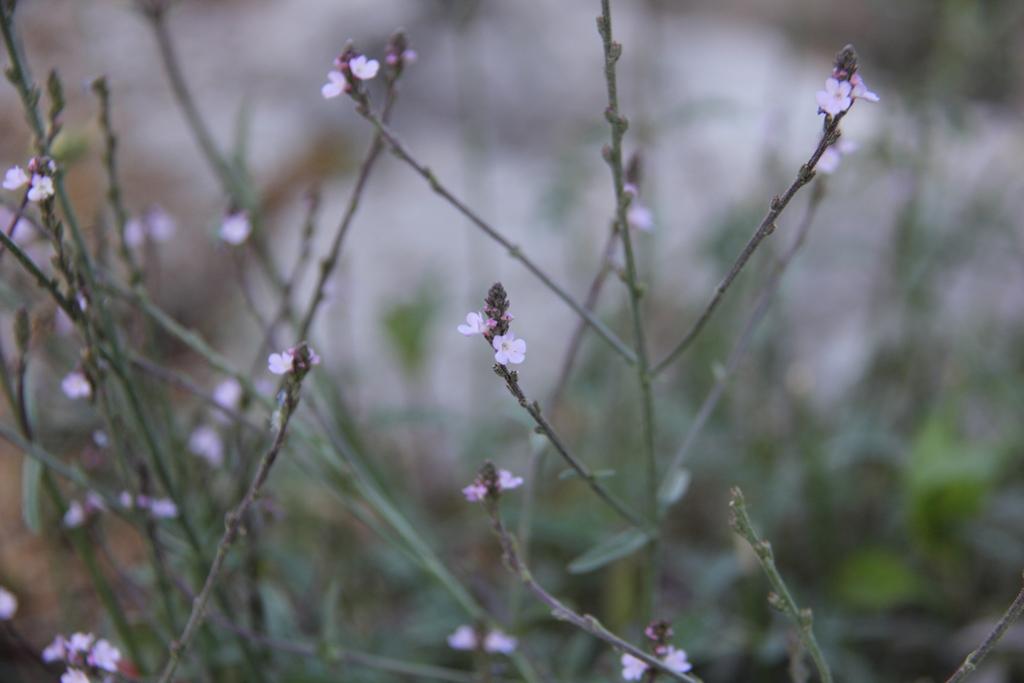 |
(Deepak and Handa, 2000) |
| Viburnum grandiflorum Wall.ex DC. |
Kul mach |
Caprifoliaceae |
Herb |
Lupeol, Oleanolic acid, Ursolic acid, β-Sitosterol, Butilinic acid
Butilin, α-Amyrin, Germanicol (Awan et al., 2013)
|
Cough, Eye ailments, Inflammations |
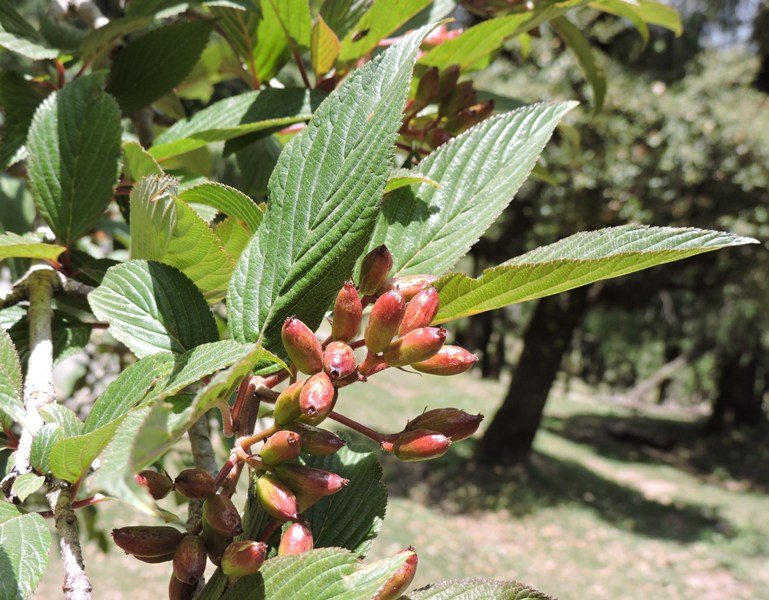 |
Awan, Z.I., Habib-ur-Rehman, K.A., Minhas, F.A., 2013. A new lupan type triterpene butilinol from Viburnum grandiflorum. Journal of Applied Chemistry 5, 58–66. |
| Vigna mungo L. |
Mah Dal |
Paplionaceae |
Herb |
The toxic compounds consist of some flavonoids, alkaloids, tannins, cyanogenic compounds, phytate and trypsin inhibitors. |
Vigna mungo has been reported pharmacologically to possess anti-inflammatory activity. Anti-inflammatory activity is due to ethanol extracts mainly polyphenols. The seeds of nearly all species of Vigna have antioxidant properties and are used to treat different diseases like rheumatism, liver diseases, etc. |
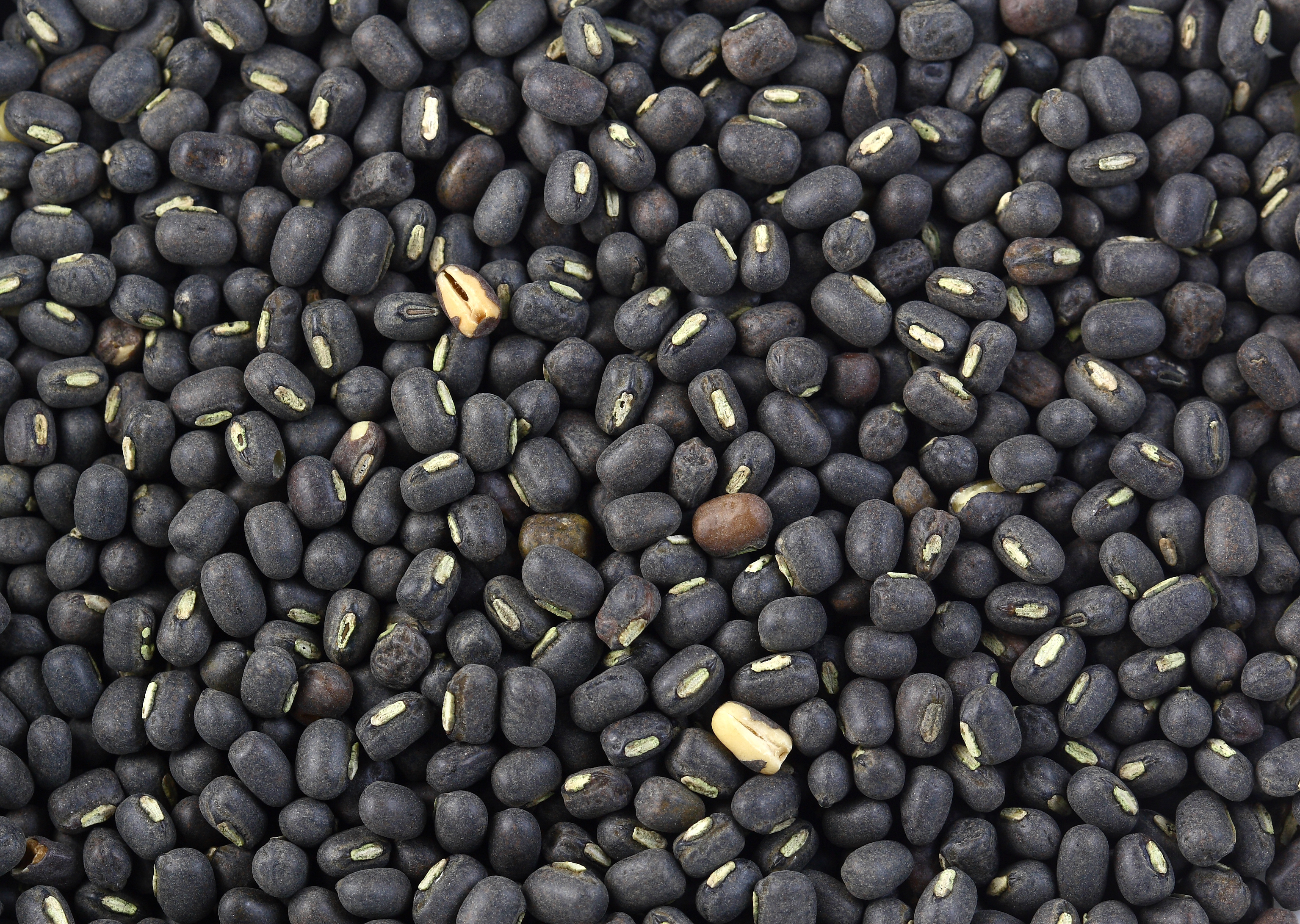 |
Kakati, P., Deka, S.C., Kotoki, D. and Saikia, S., 2010. Effect of traditional methods of processing on the nutrient contents and some antinutritional factors in newly developed cultivars of green gram [Vigna radiata (L.) Wilezek] and black gram [Vigna mungo (L.) Hepper] of Assam, India. International Food Research Journal, 17(2), pp.377-384.Gohel, M.K., Sheth, N.R. and Dudhrejiya, A.V., 2011. Anticonvulsant activity of extract from the seeds of Vigna mungo (L.) Hepper. Journal of Pharmacy Research, 4(6), pp.1943-1945. |
| Viola indica |
Indian Violet |
Violaceae |
Herb |
|
Viola roots are diuretic, expectorant, emollient, anti-pyretic, cathartic and emetic, which helps to treat cough, fever, and soothing sore feet. |
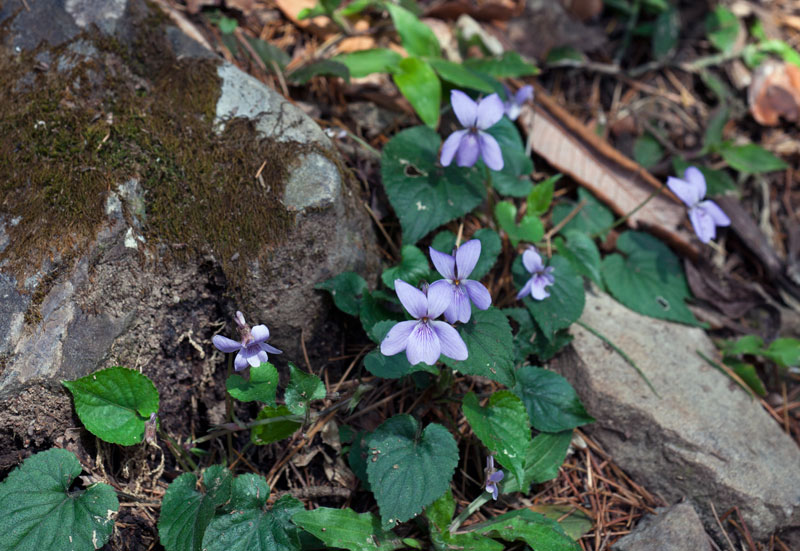 |
|
| Viola odorata L. |
Banafsha |
Violaceae |
Herb |
Butyl-2-ethylhexylphthalate; 5,6,7,7a-Tetrahydro-4,4,7a-
trimethyl-2(4H)-benzofuranone, cis-3-Hexenol, −Pinene, β
−Pinene, Salicylaldehyde, 1,8-Cineole (Akhbari et al., 2012)
|
Cough, Cold, Throat infection, Swellings, Chest
congestion, Hoarseness of voice, Muscular pains,
Headache
|
 |
Akhbari, M., Batooli, H., Kashi, F.J., 2012. Composition of essential oil and biological activity of extracts of Viola odorata L. from central Iran. Natural Product Research 26, 802–809. |
| Viola sylvatica Fries |
Banafsha |
Violaceae |
Herb |
|
|
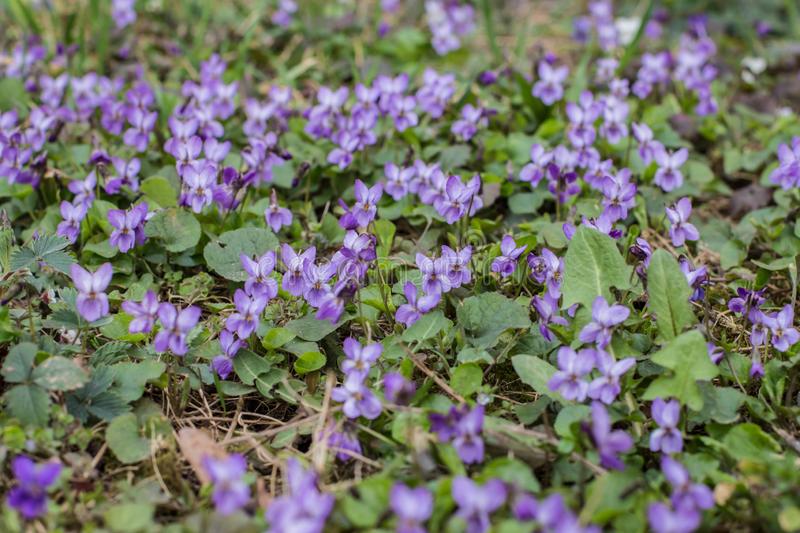 |
|
| Viscum album Linn. |
Banada |
Viscaceae |
Herb |
β-sitosterol, caffeic acid, dimethoxyflavone, eleutheroside, flavonoides, glycoproteins, kaemferol, lectin, oleanic acid, pectin, quercetin, syringin, triterpene, ursolic acid |
Immuno-regulatory, diuretic, antibacterial, antiviral, inhibits cell proliferation, diuretic, anti-inflammatory as well as immunostimulant effects.The extract produces antihypertensive and antioxidant effect |
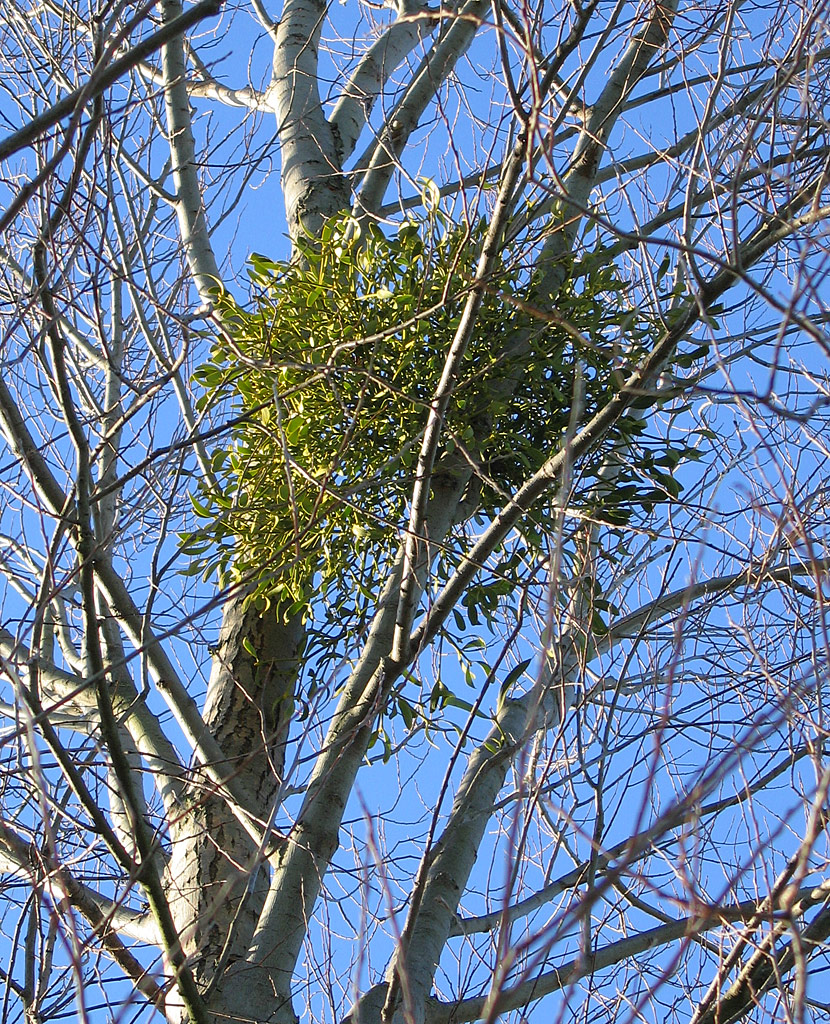 |
Kusi, M., Shrestha, K. and Malla, R., 2015. Study on phytochemical, antibacterial, antioxidant and toxicity profile of Viscum album Linn associated with Acacia catechu. Nepal Journal of Biotechnology, 3(1), pp.60-65. |
| Vitis vinifera L. |
Daech |
Vitaceae |
Herb |
Phenolic acids Hydroxybenzoic acids Gallic acid, Quercetin, Quercetin-3-O-galactoside, Quercetin-3-O-glucoside |
Fresh leaves are tightly tied with muslin cloth on the skin rashes, sores, eruptions. |
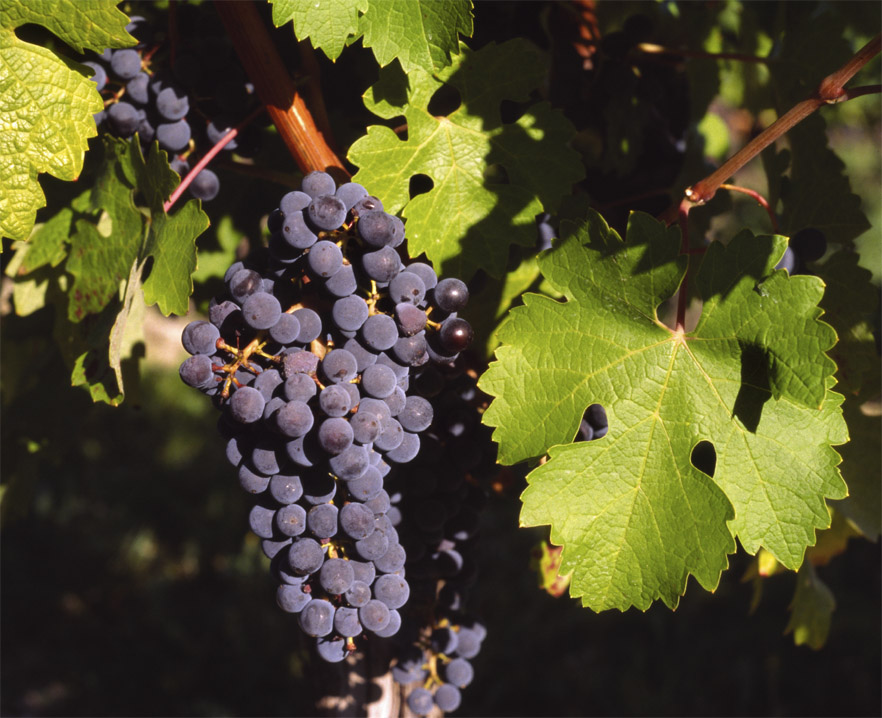 |
Gouvinhas, I., Queiroz, M., Rodrigues, M. and Barros, A.I., 2019. Evaluation of the Phytochemistry and biological activity of grape (Vitis vinifera L.) Stems: Toward a Sustainable Winery Industry. Polyphenols in Plants, pp.381-394. Orhan, N., Aslan, M., Orhan, D.D., Ergun, F. and Yeşilada, E., 2006. In-vivo assessment of antidiabetic and antioxidant activities of grapevine leaves (Vitis vinifera) in diabetic rats. Journal of ethnopharmacology, 108(2), pp.280-286. |
| Wahlenbergia rotundifolia (Benth.) A.DC. |
Tunde Jaeid |
Campanulaceae |
Herb |
Cordifoliketone A, Cordifoliketone B, Coniferaldehyde,
Sinapinaldehyde, Coniferoside, Isoconiferin, Nervolan B-C,
Dillapiole (He et al., 2015)
|
Asthma, General weakness. |
%20A.DC..JPG) |
He, J.Y., Ma, N., Zhu, S., Komatsu, K., Li, Z.Y., Fu, W.M., 2015. The genus Codonopsis (Campanulaceae): A review of phytochemistry: bioactivity and quality control. Journal of Natural Medicines 69, 1–21. |
| Wayne Myers |
|
|
|
|
|
|
|
| Xanthoxylum armatum |
Winged prickly ash |
Rutaceae |
Shrub |
Quercetin, Vitamin C, Baicalein |
Z.armatum has strong antioxidant and anti-inflammatory potential and can be a source of significant therapeutic agent |
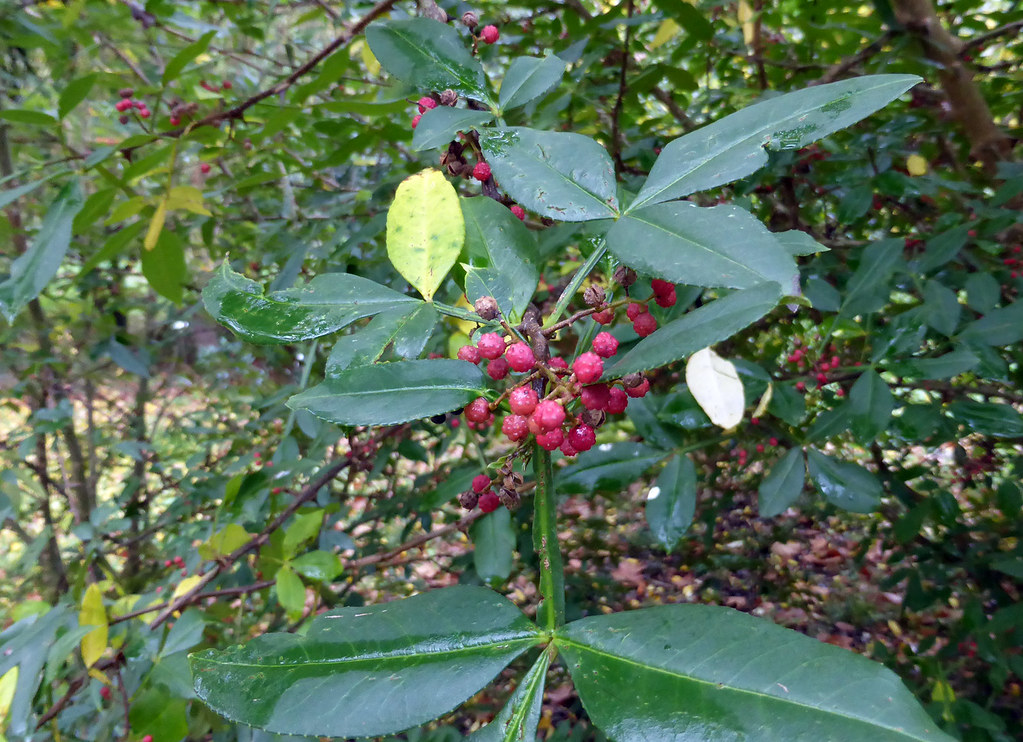 |
Alam, F. and Ashraf, M., 2019. Phenolic contents, elemental analysis, antioxidant and lipoxygenase inhibitory activities of Zanthoxylum armatum DC fruit, leaves and bark extracts. Pakistan journal of pharmaceutical sciences, 32(4). |
| Zizyphus mauritiana Lam. |
Indian jujube |
Rhamnaceae |
Tree |
quercetin-3-O- (2-pentosyl)-rhamnoside was most abundant. |
Antioxidant, anti-inflammatory and antidiabetic activities |
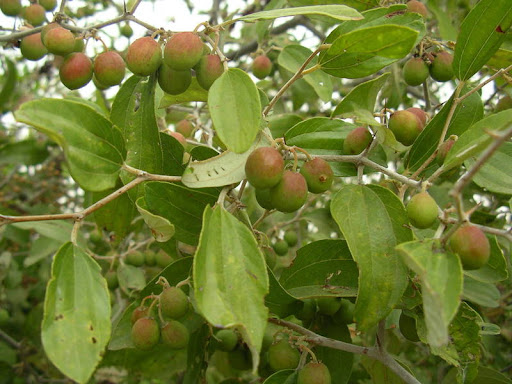 |
Rathore, S.K., Bhatt, S.H.A.S.H.A.N.K., Dhyani, S. and Jain, A., 2012. Preliminary phytochemical screening of medicinal plant Ziziphus mauritiana Lam. fruits. International Journal of Current Pharmaceutical Research, 4(3), pp.160-162. |